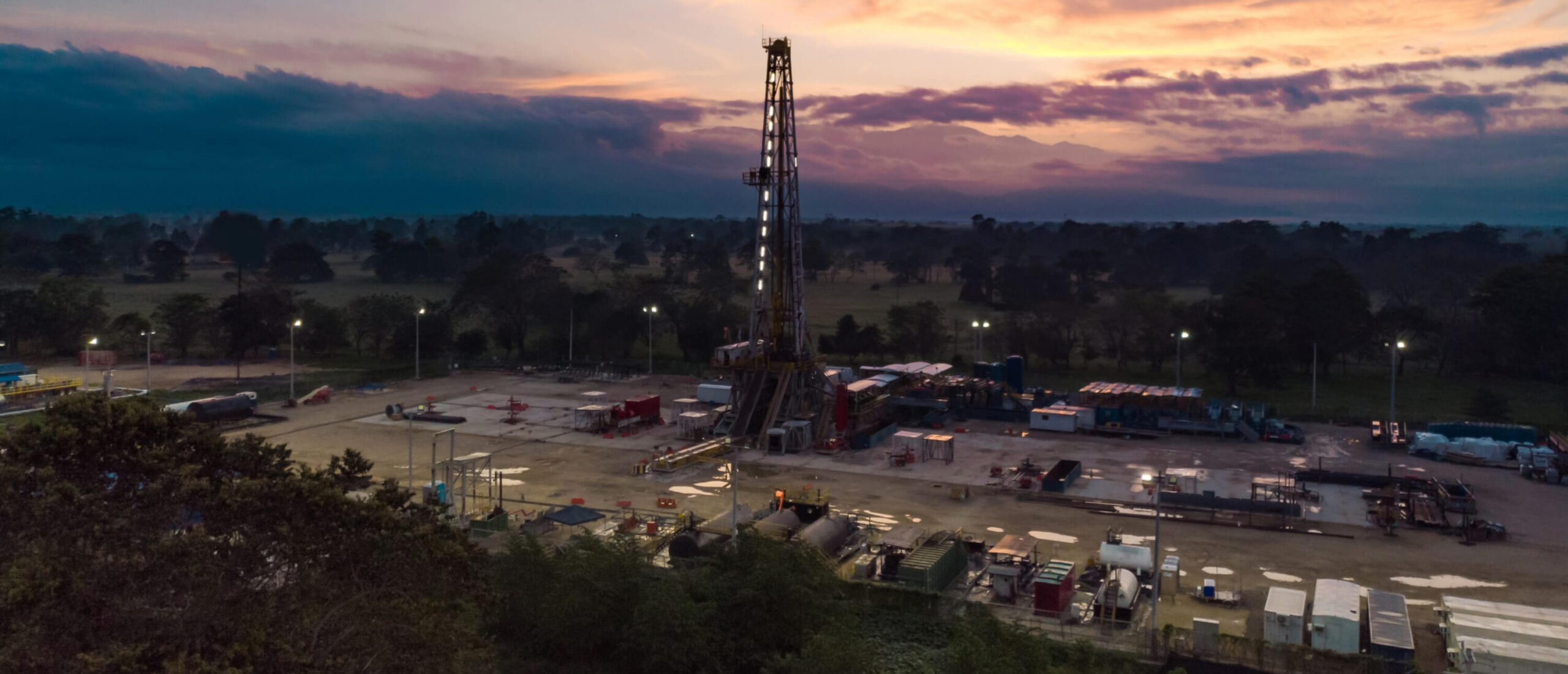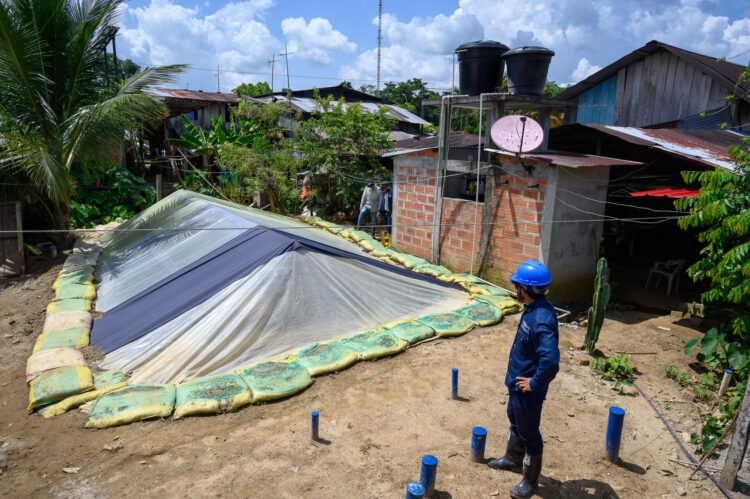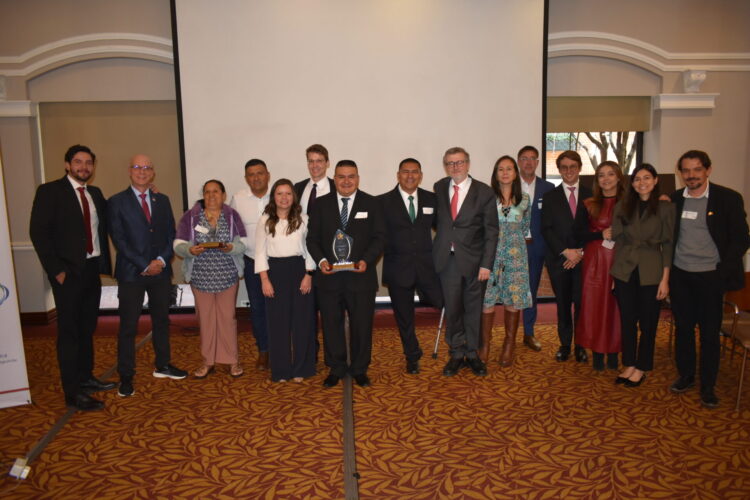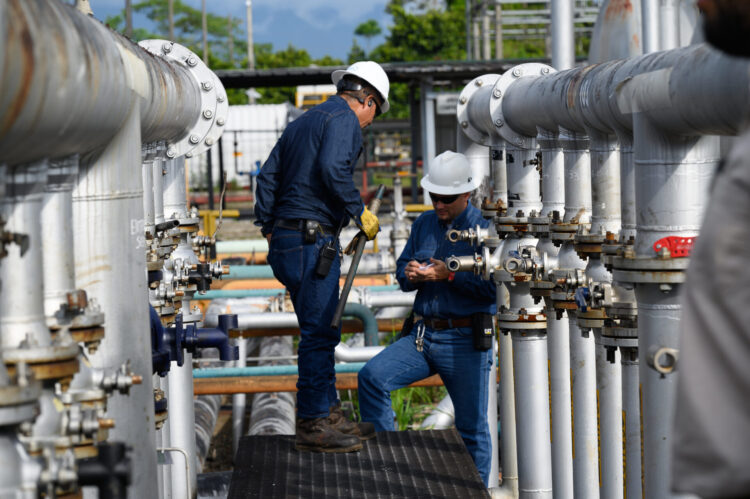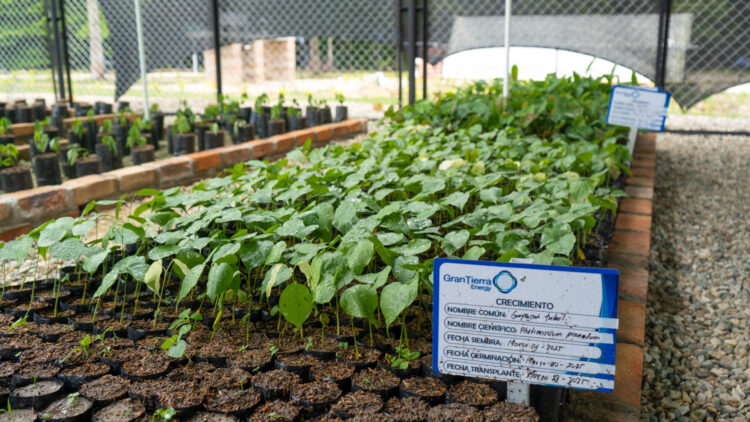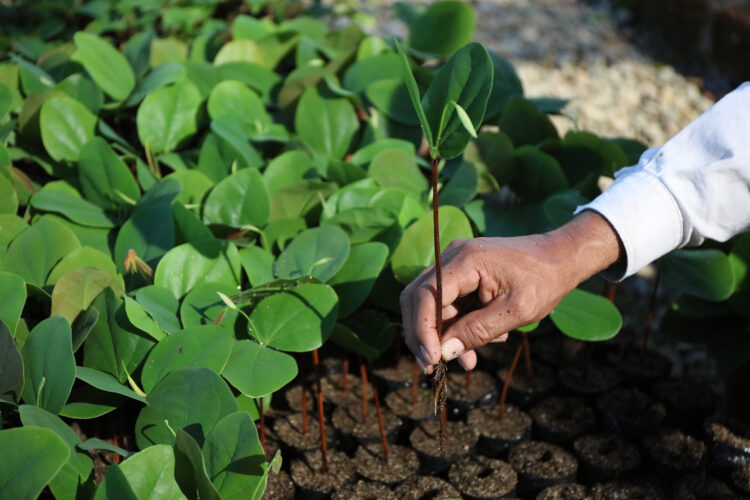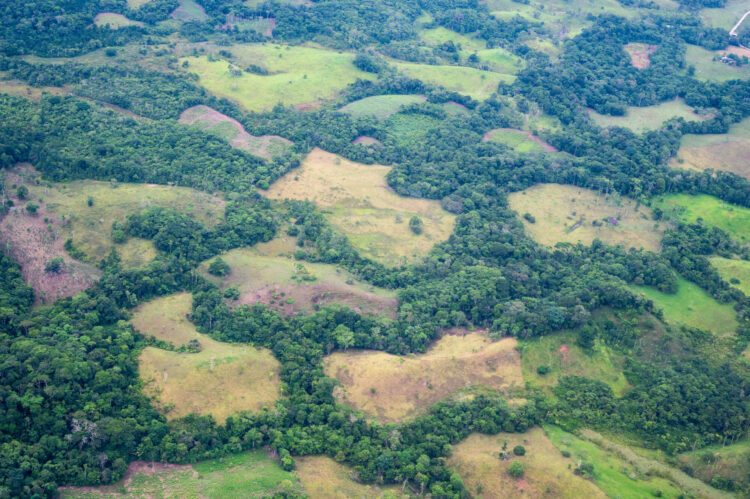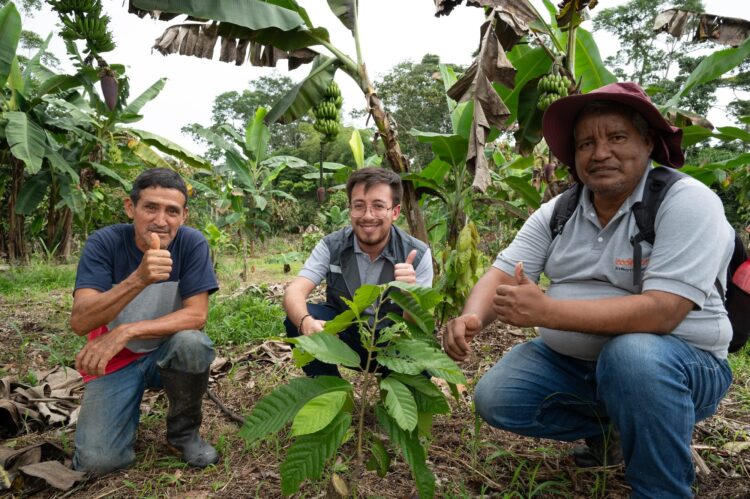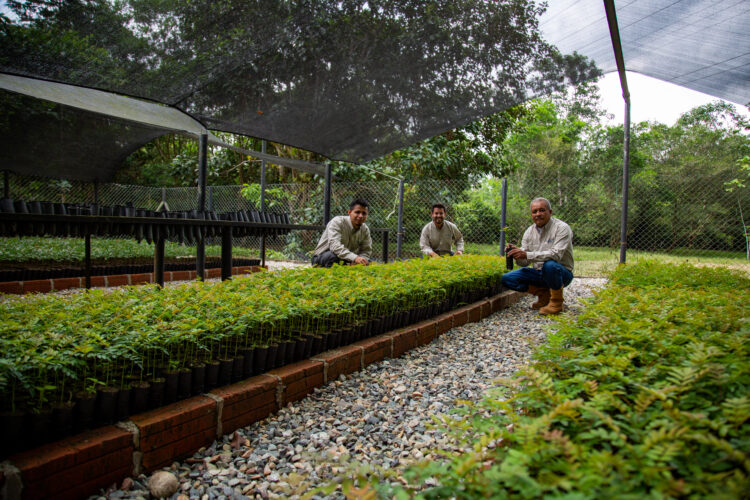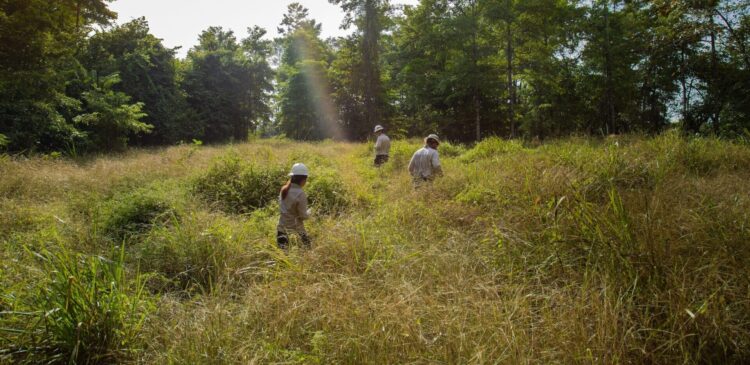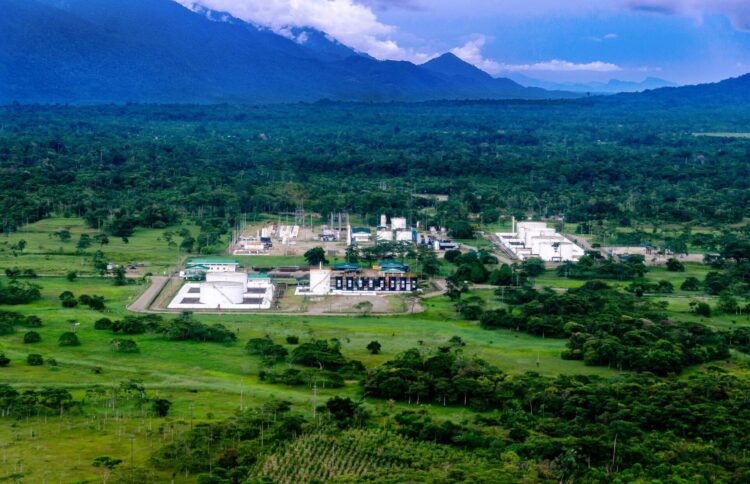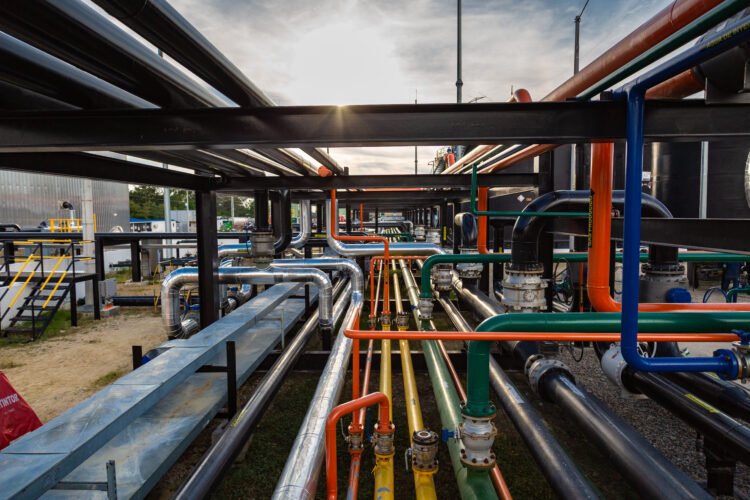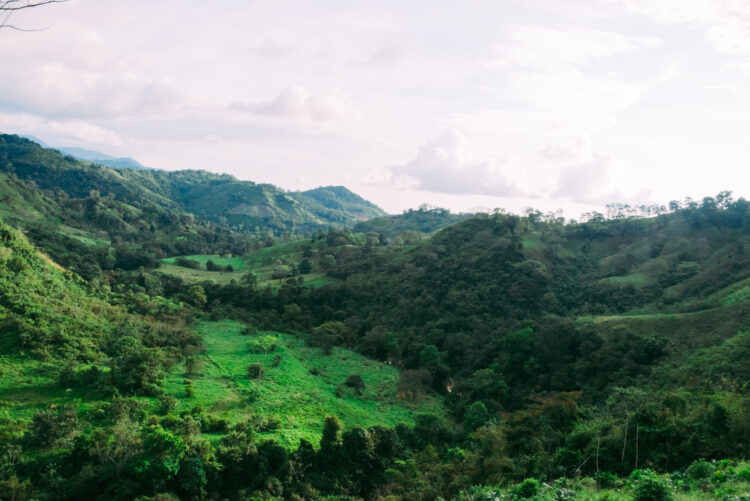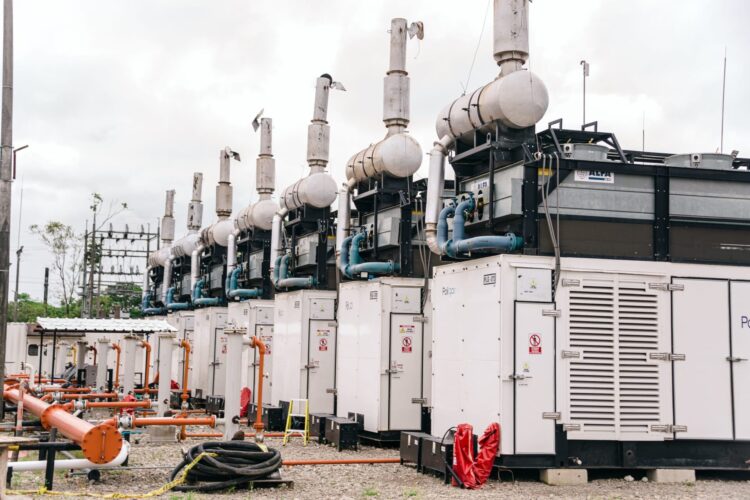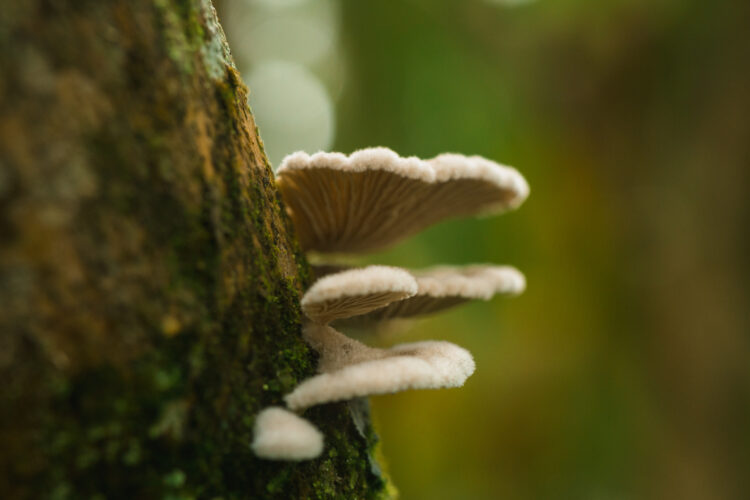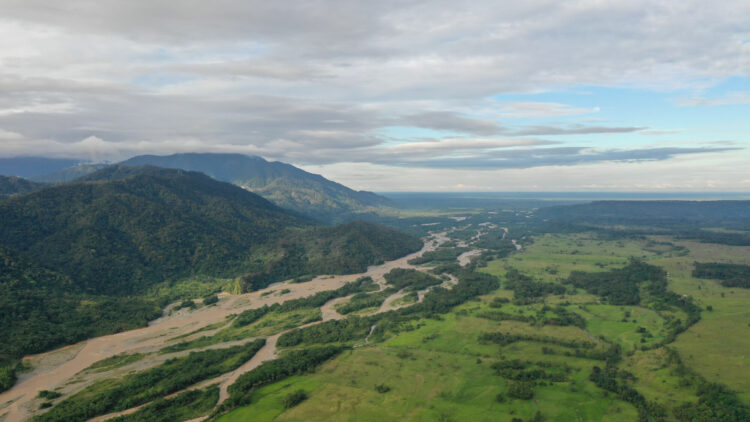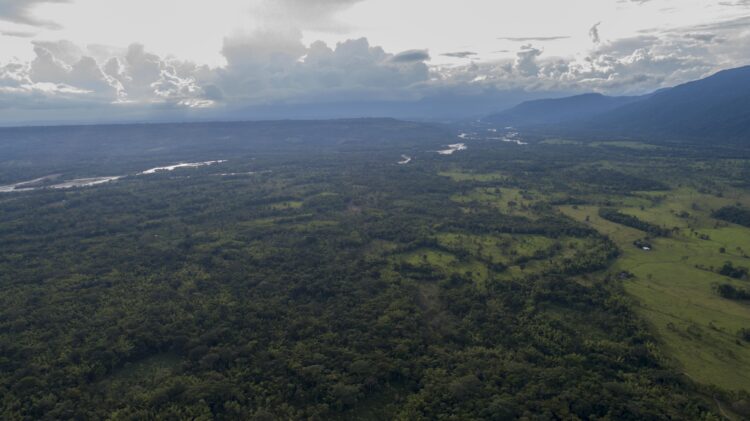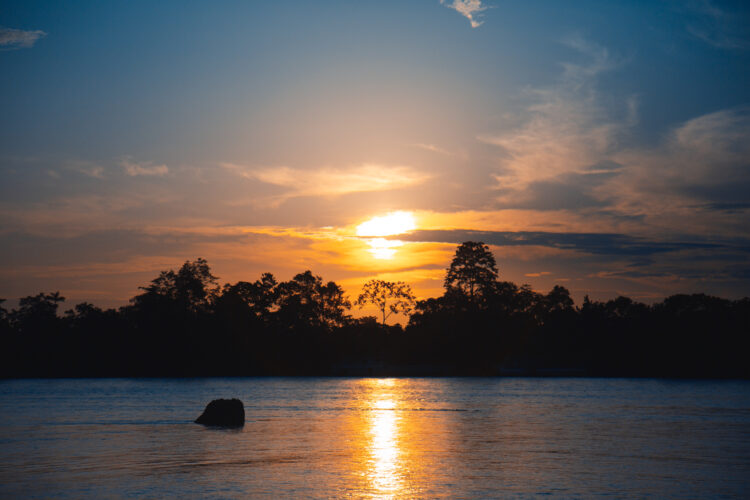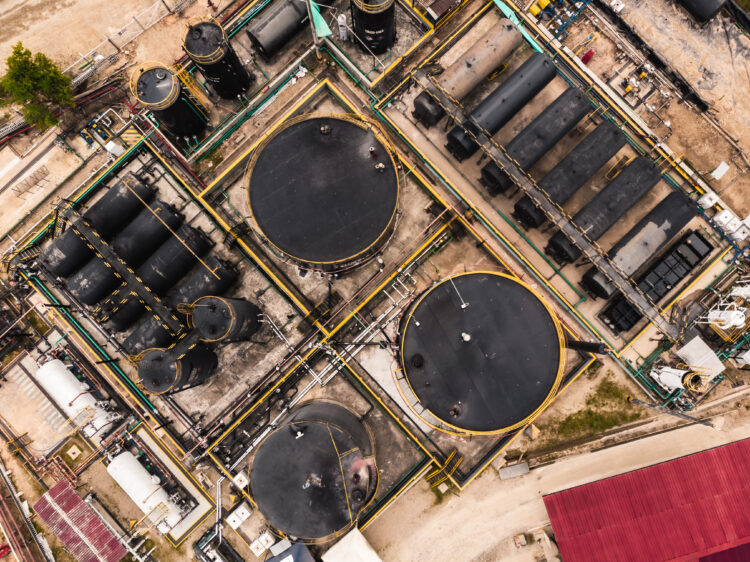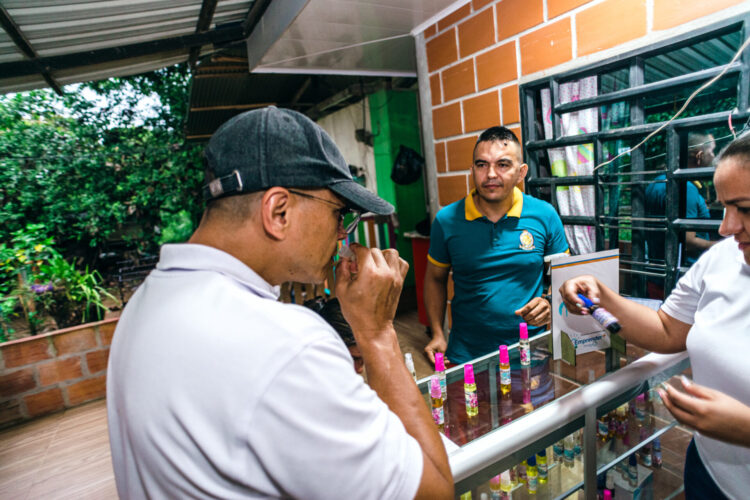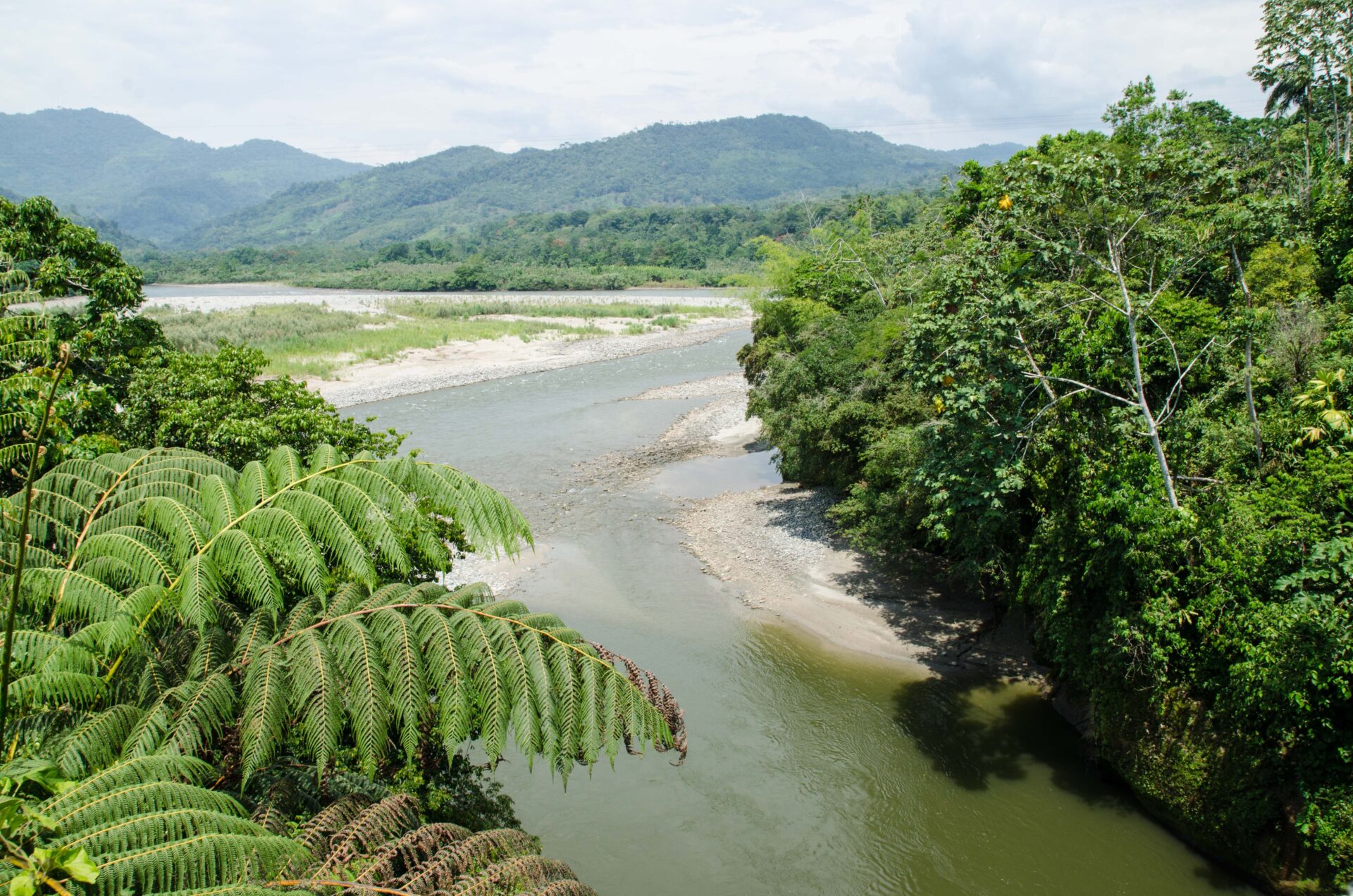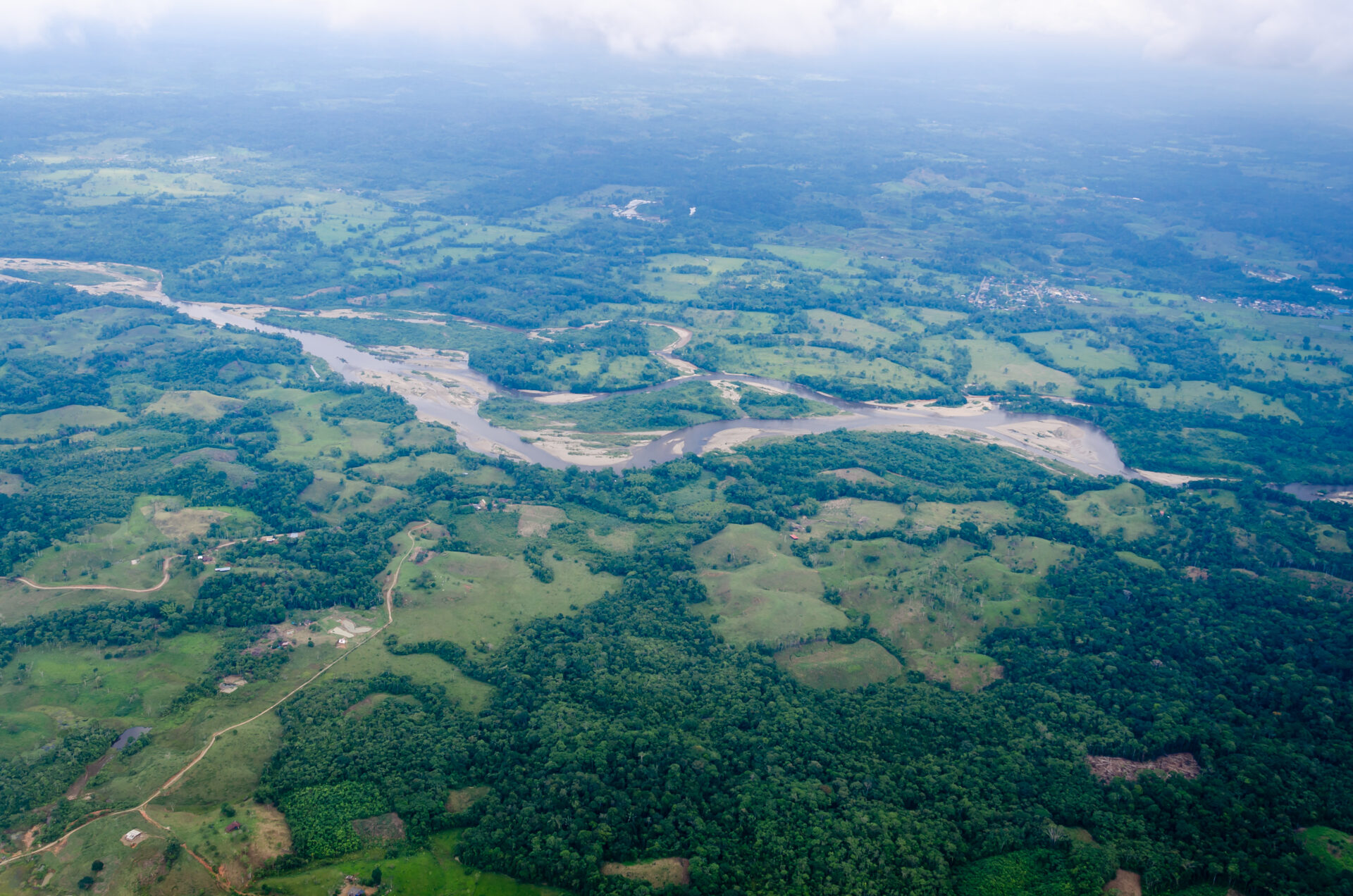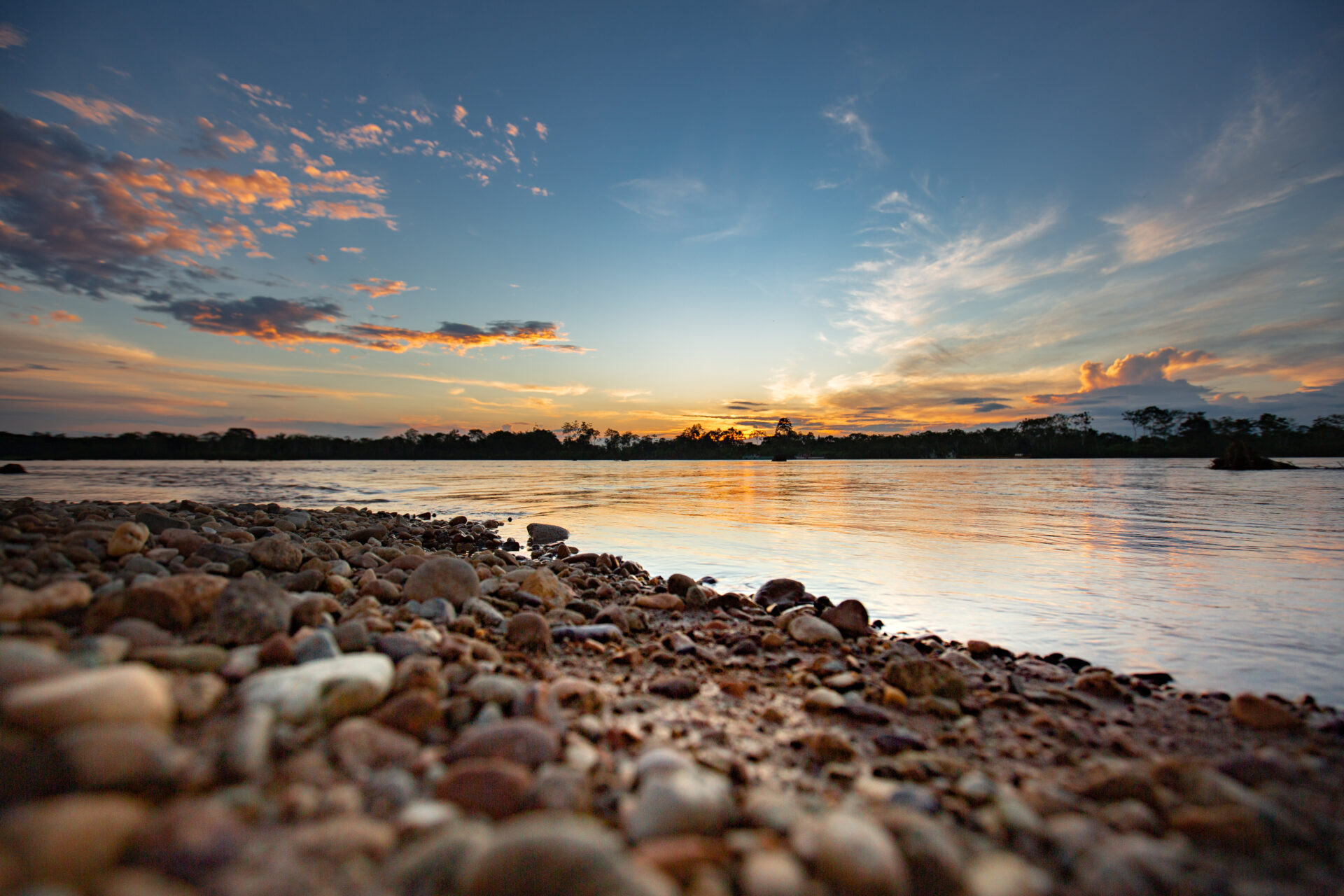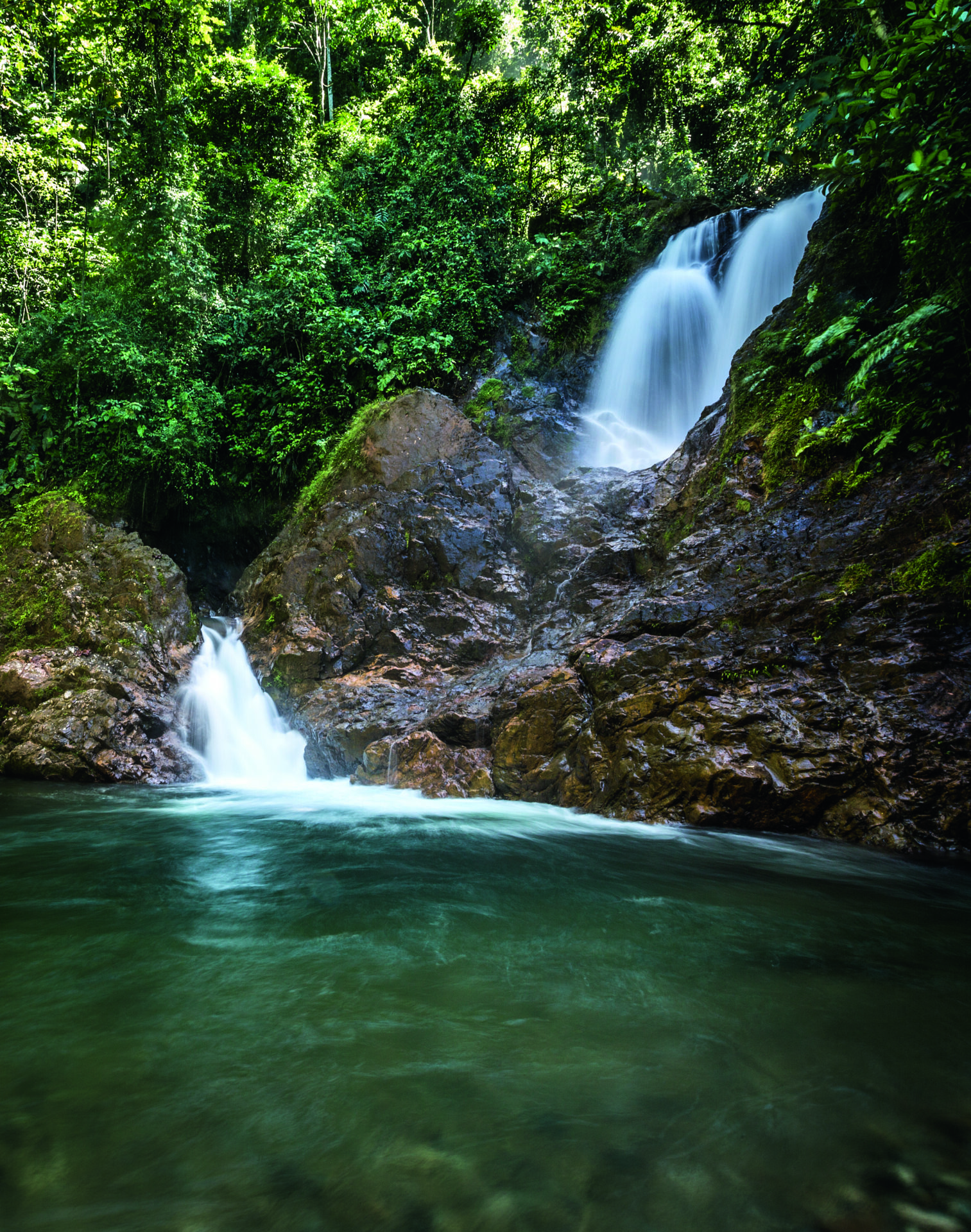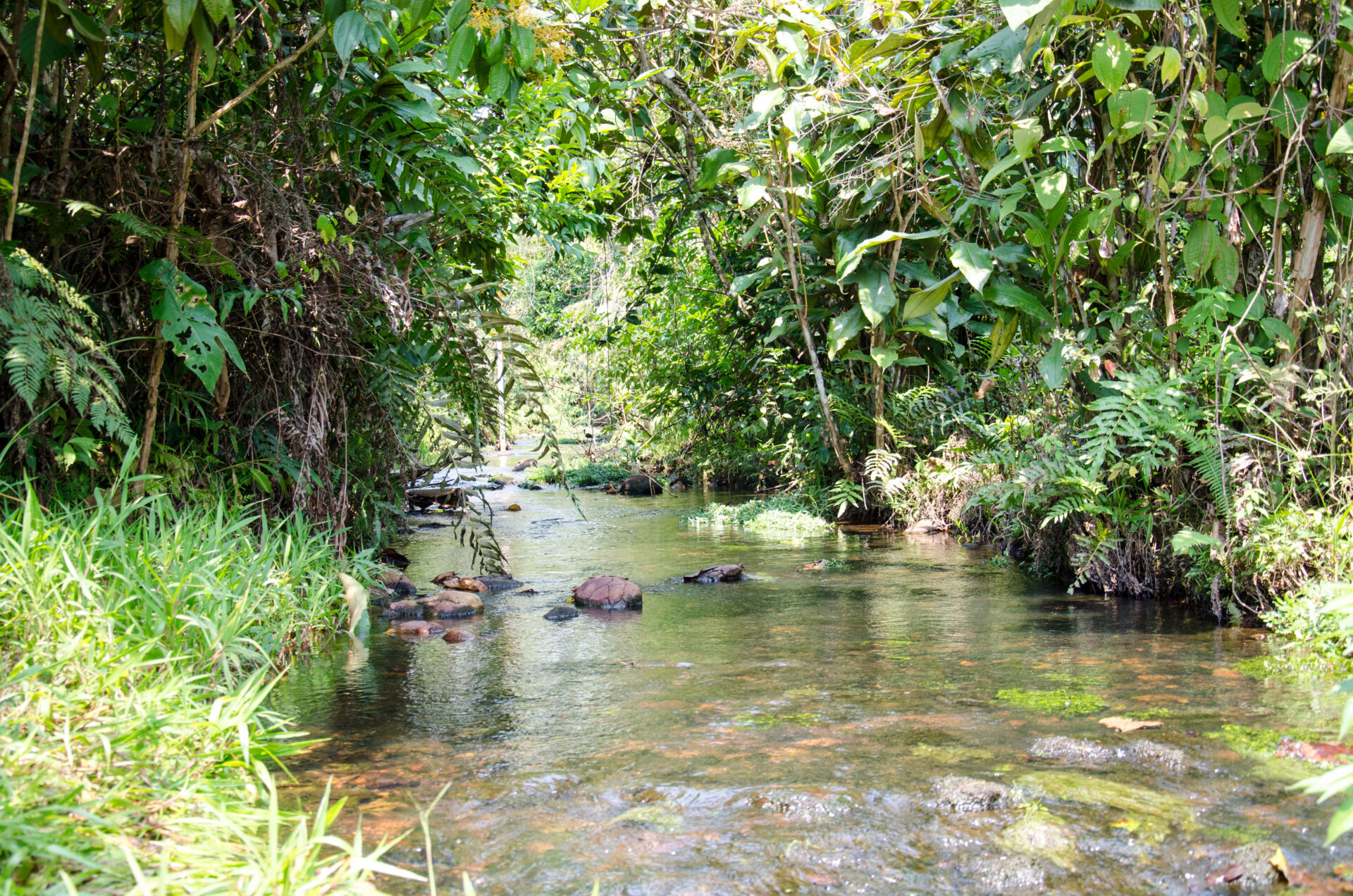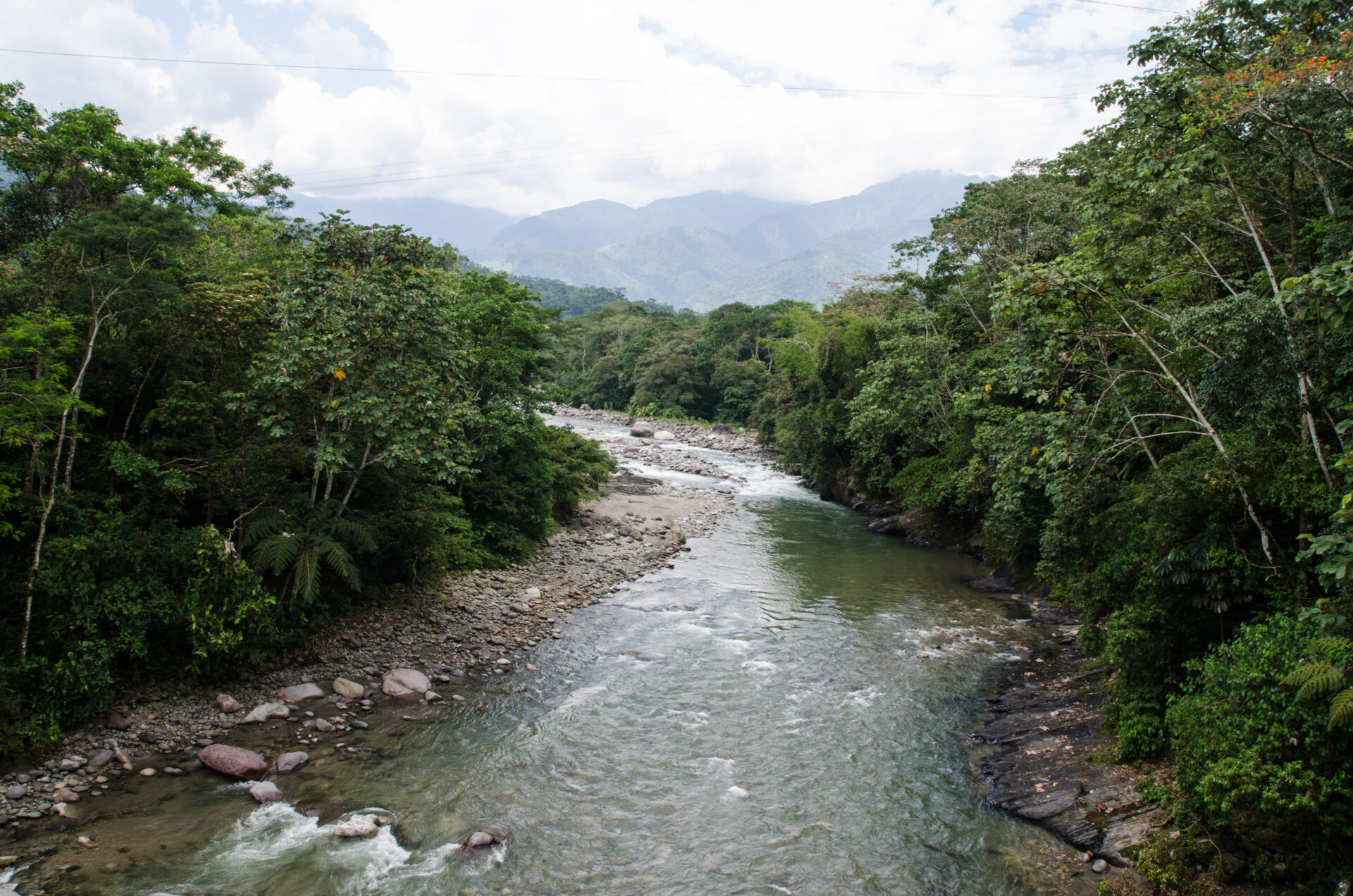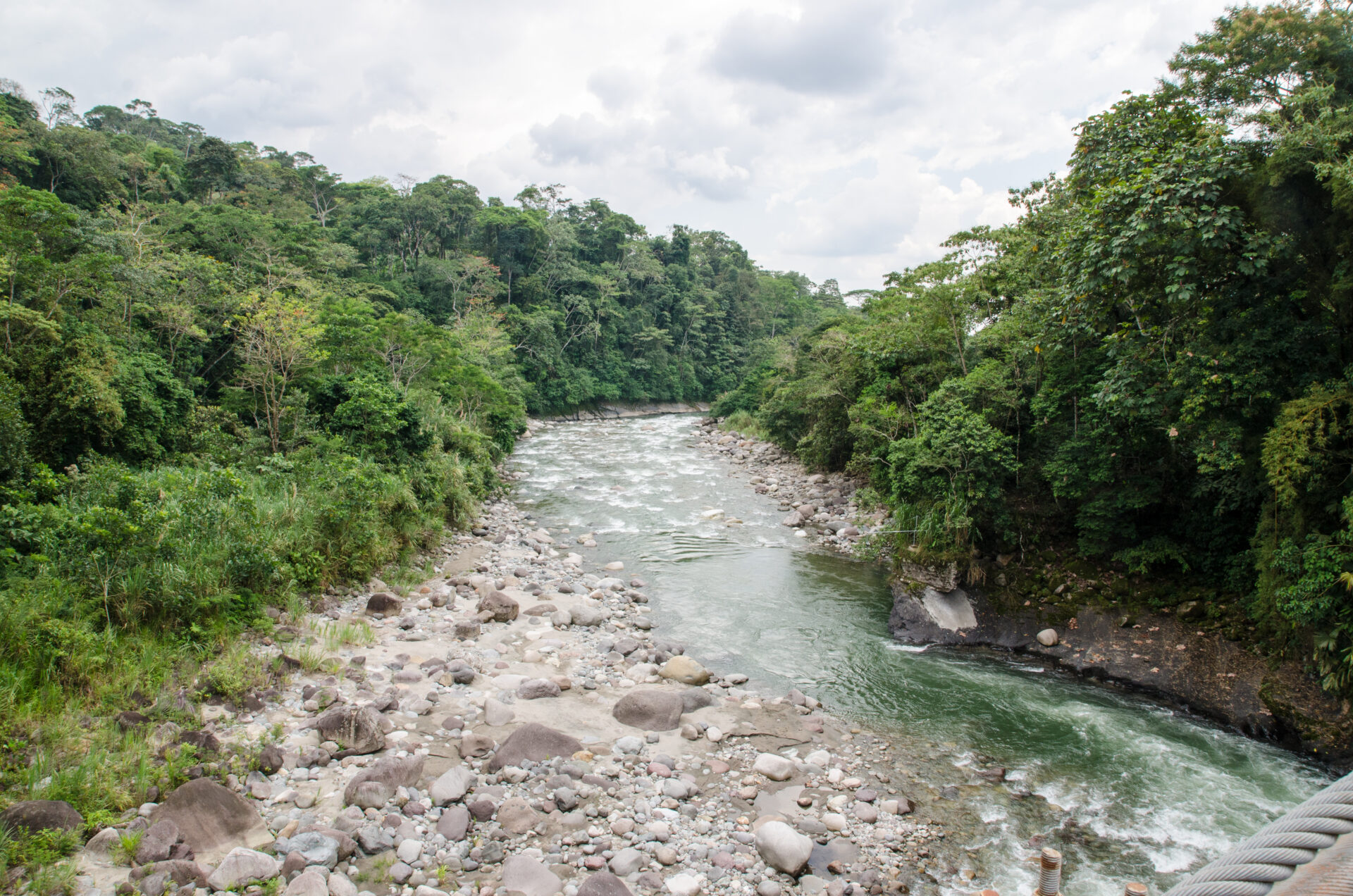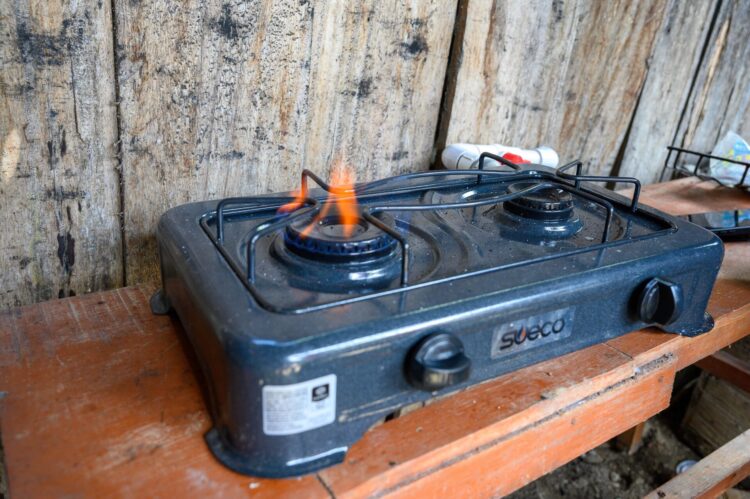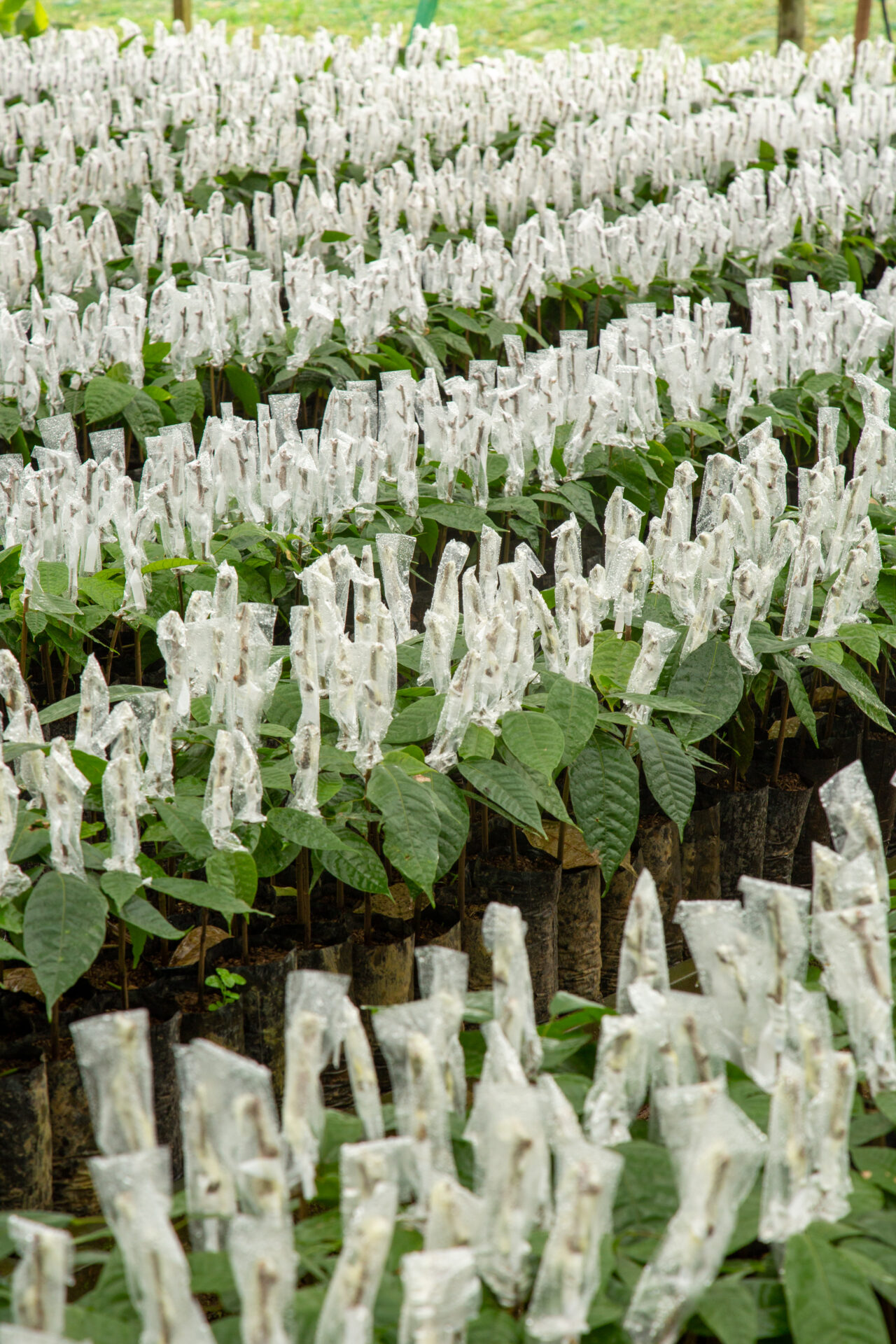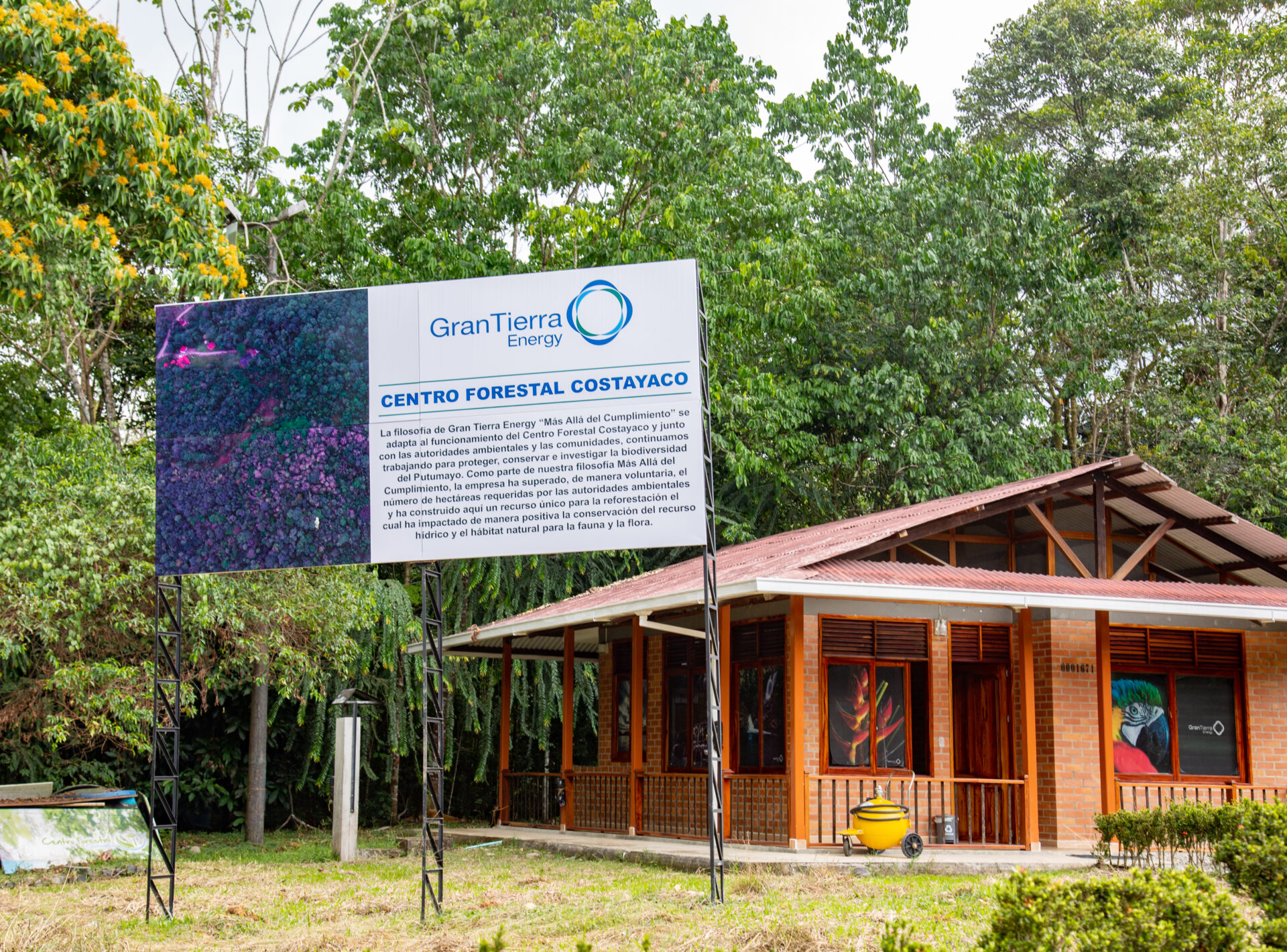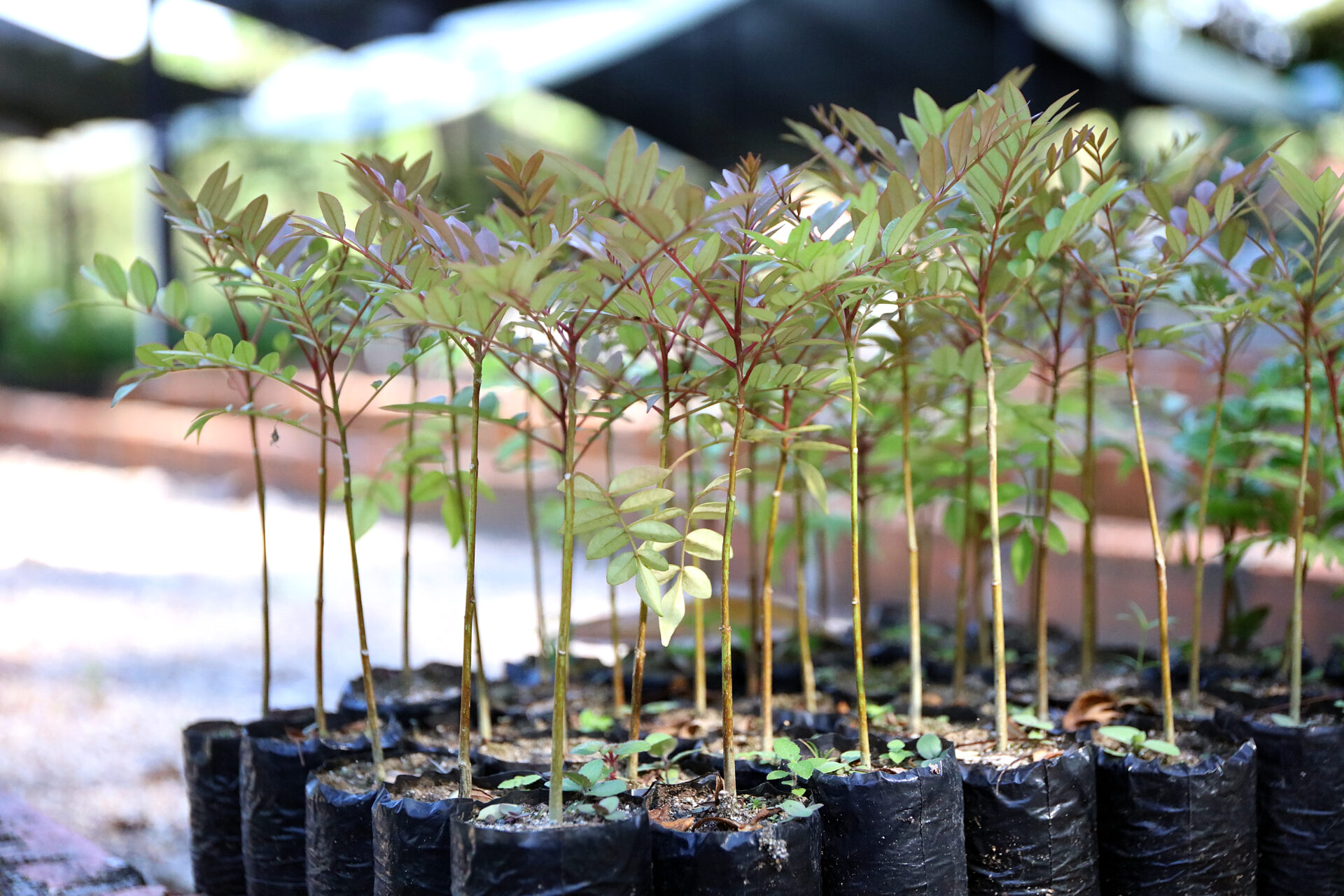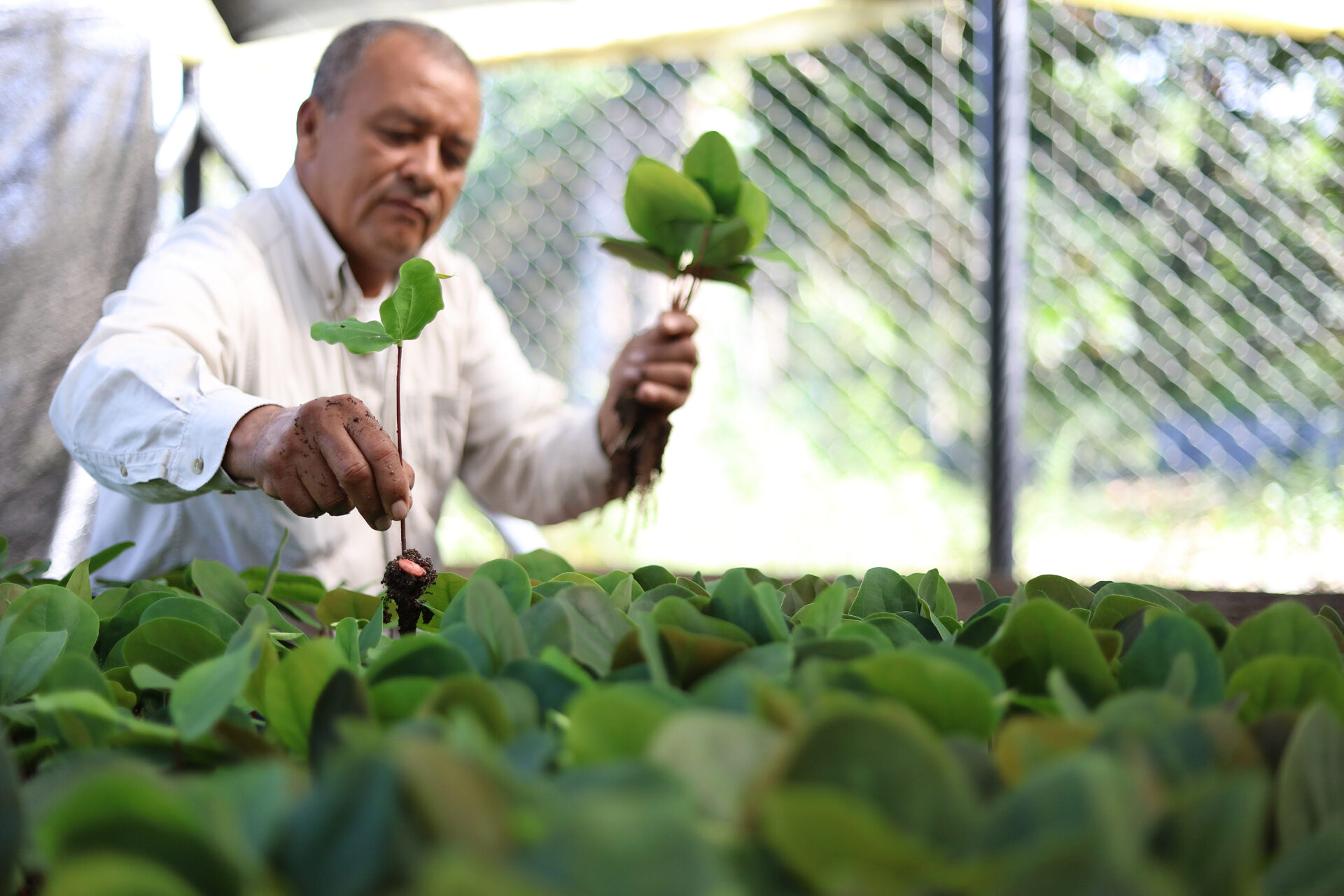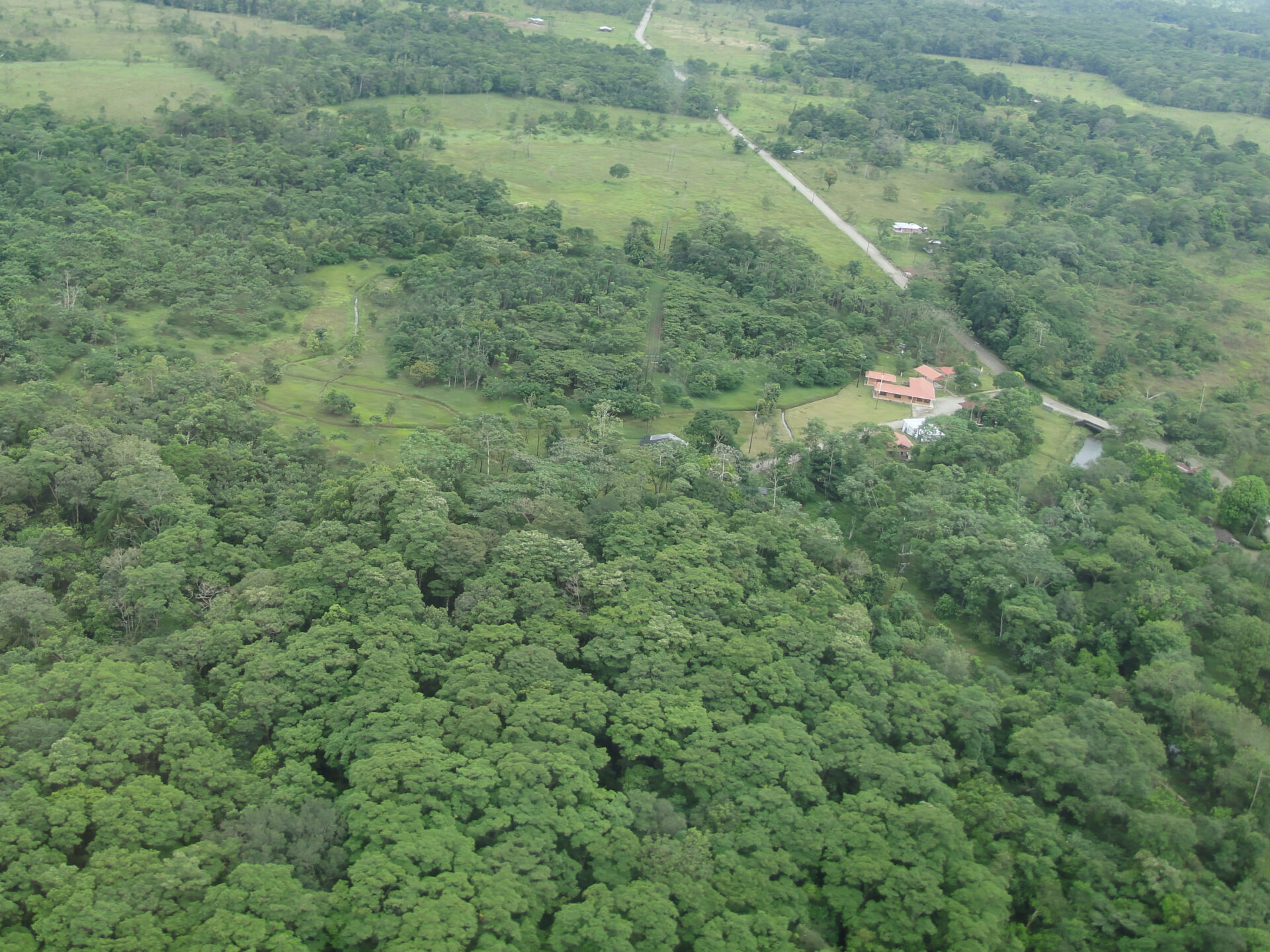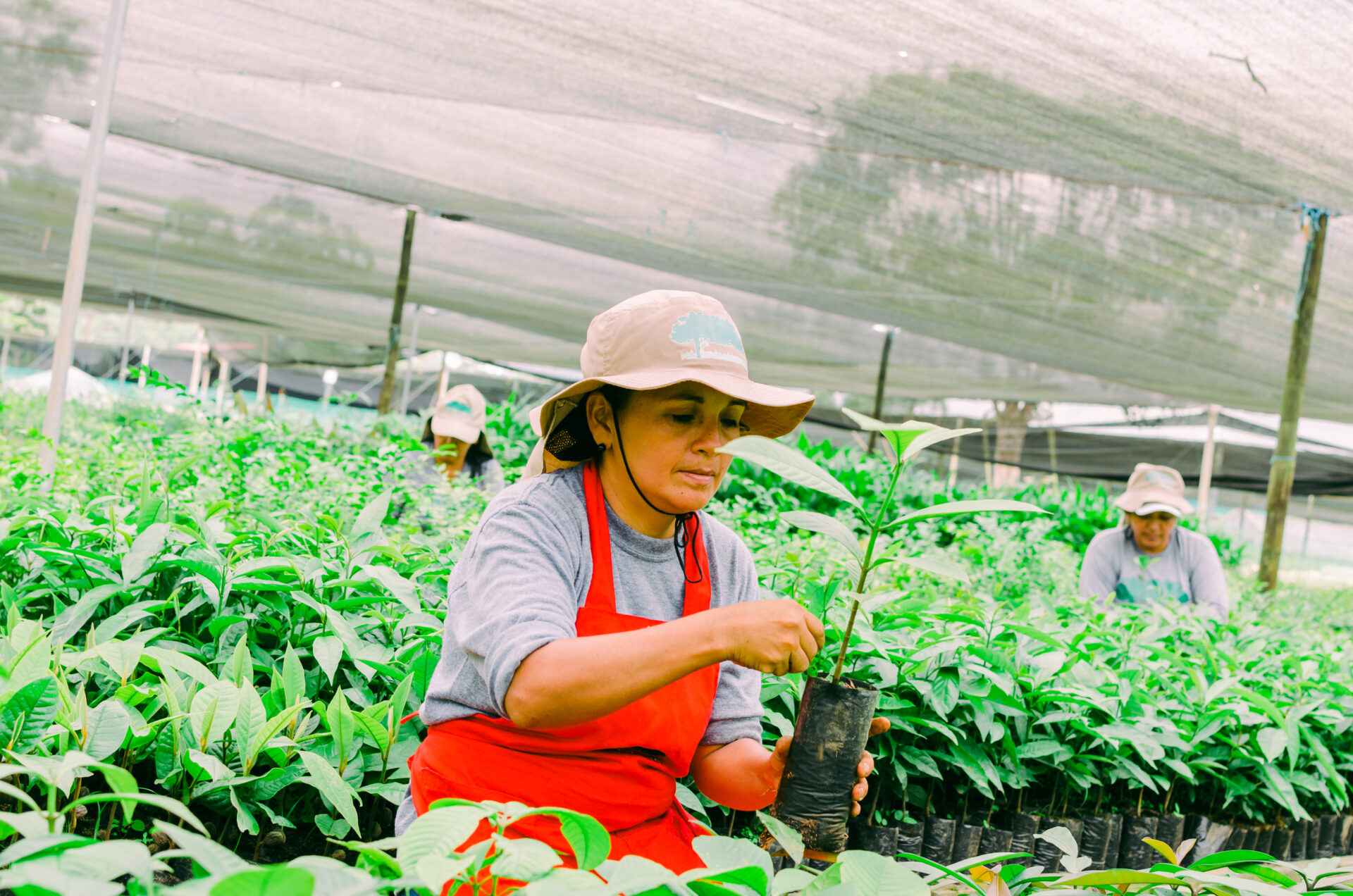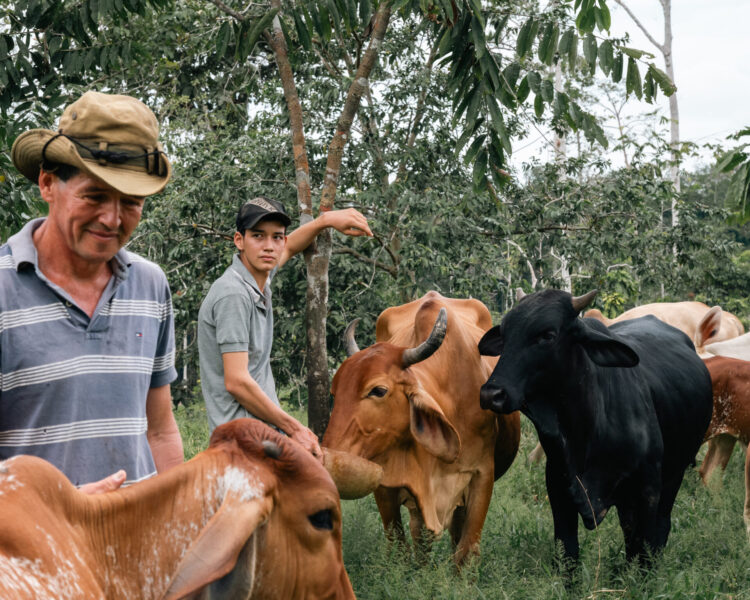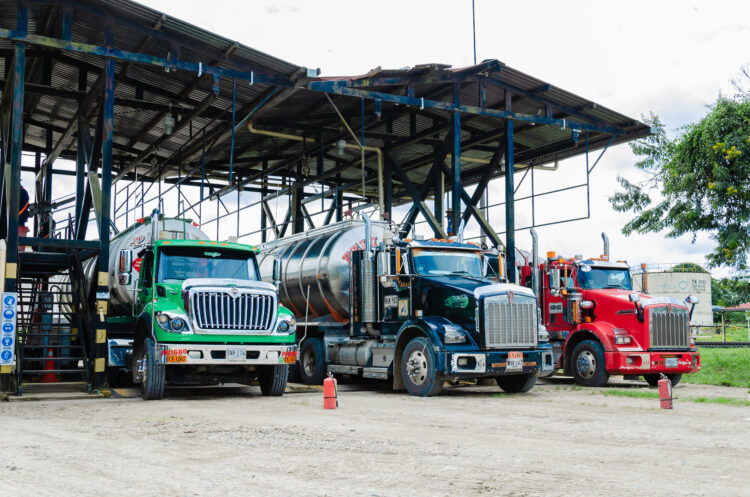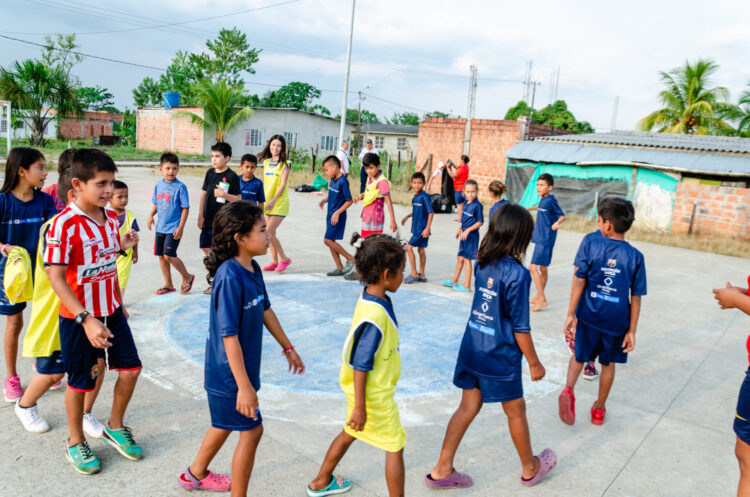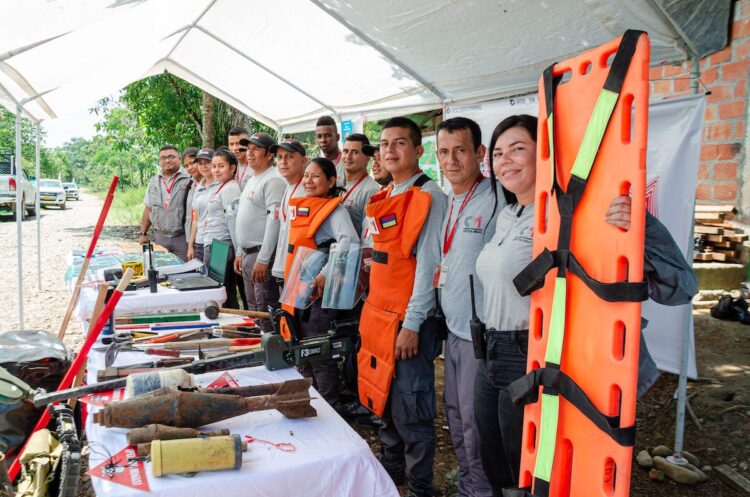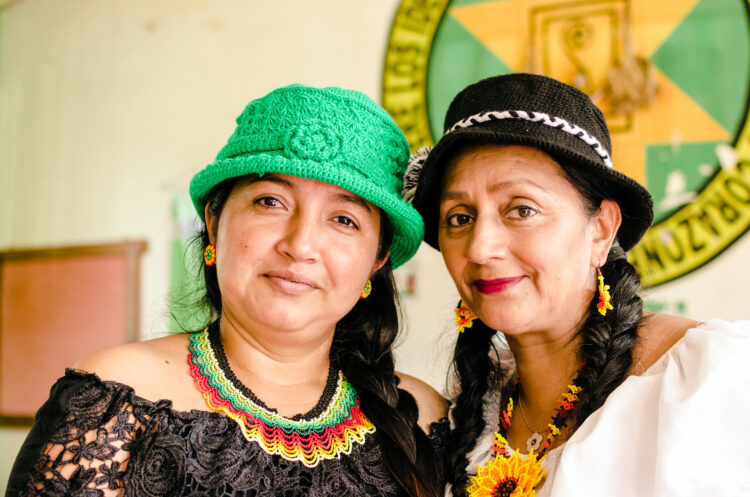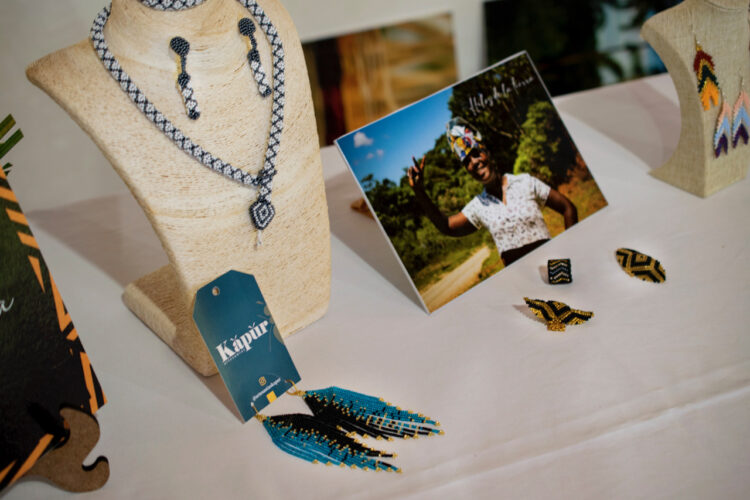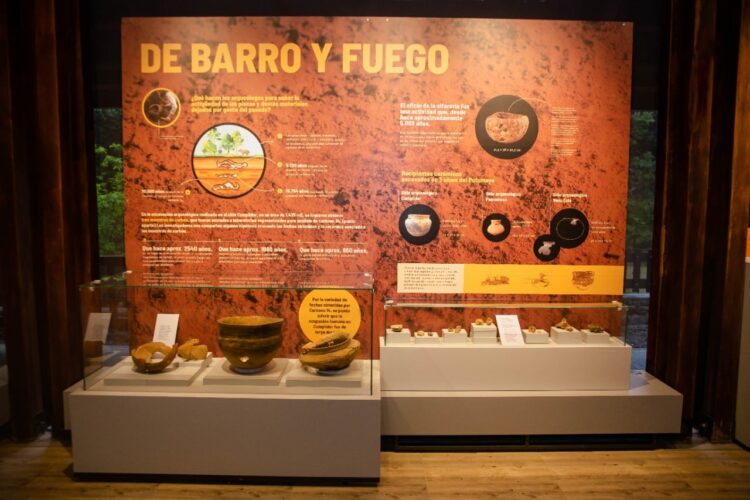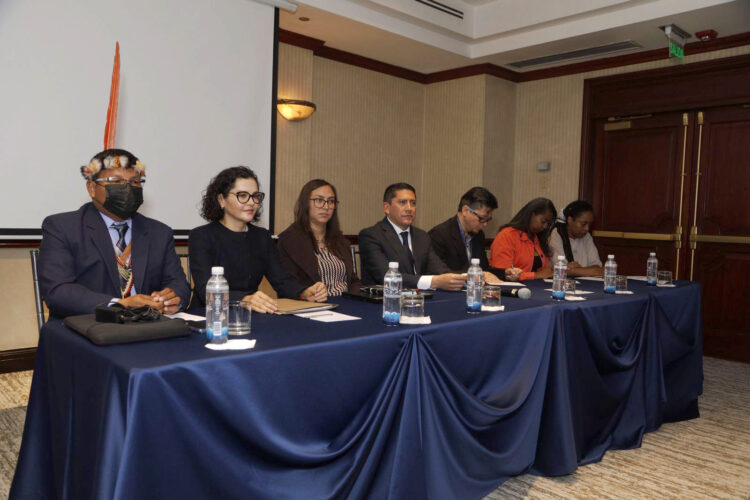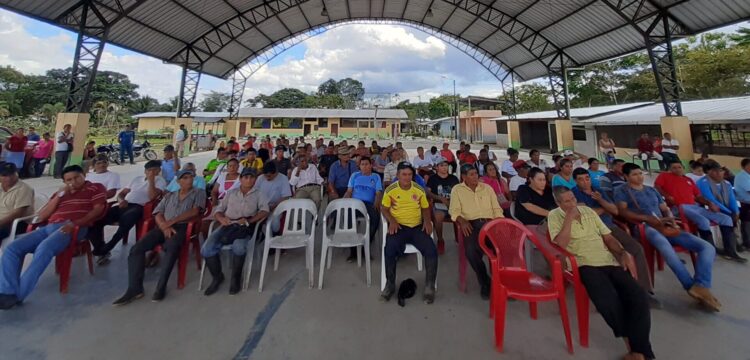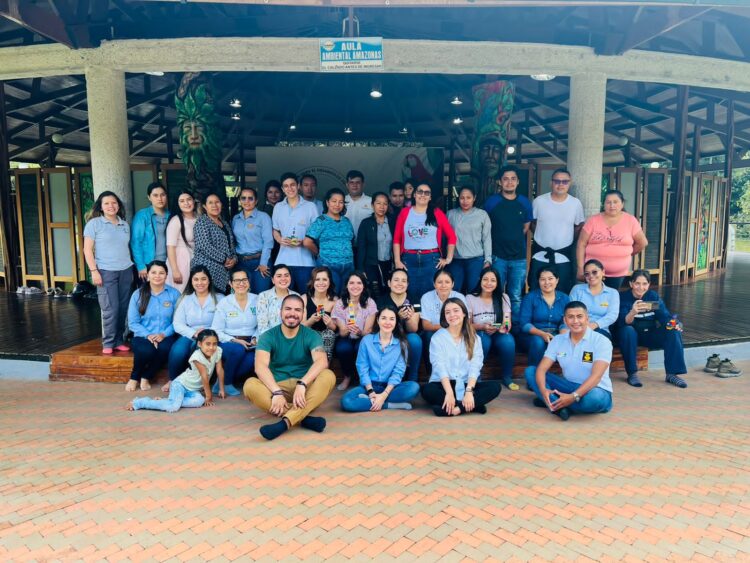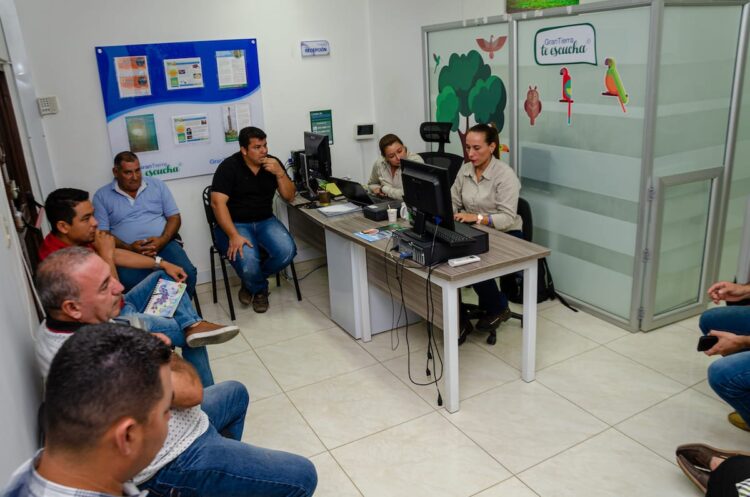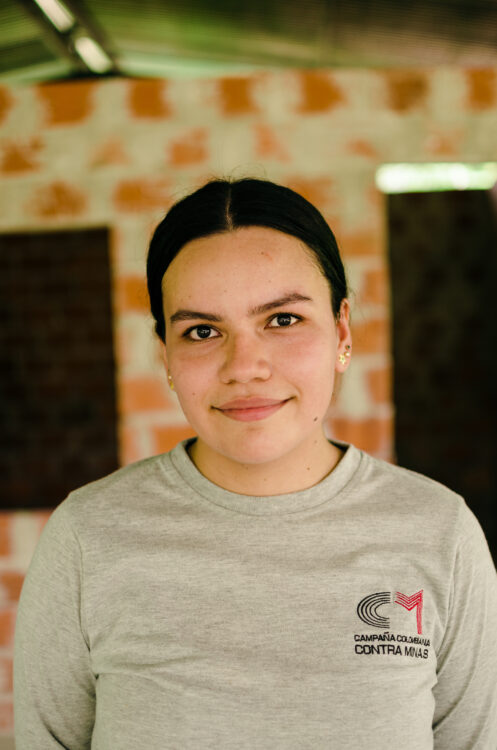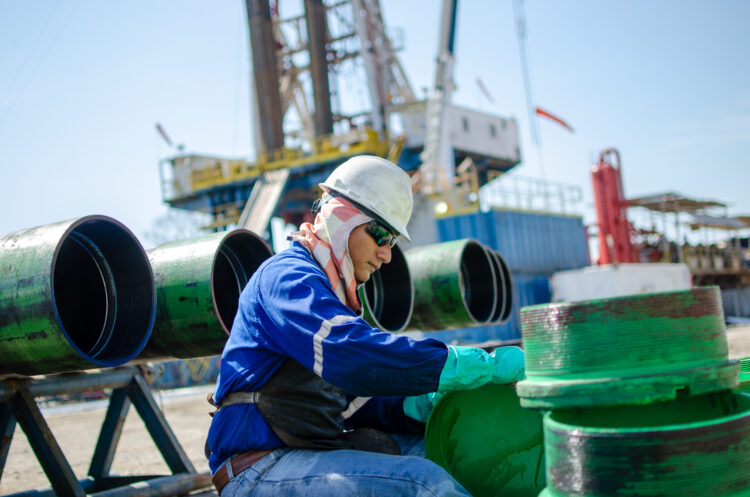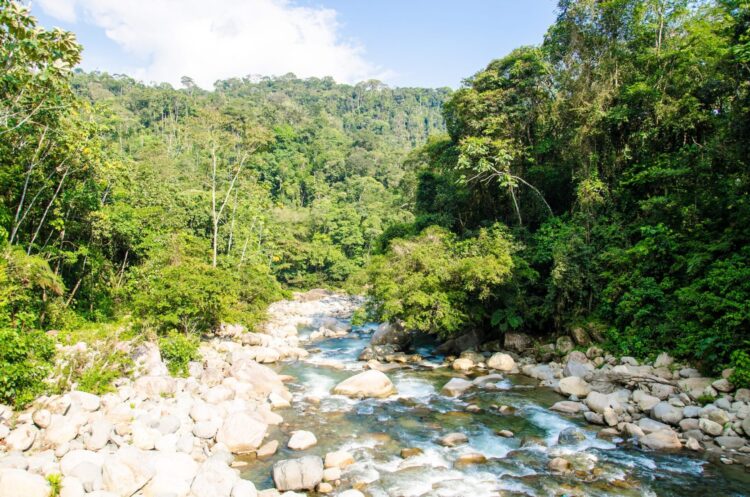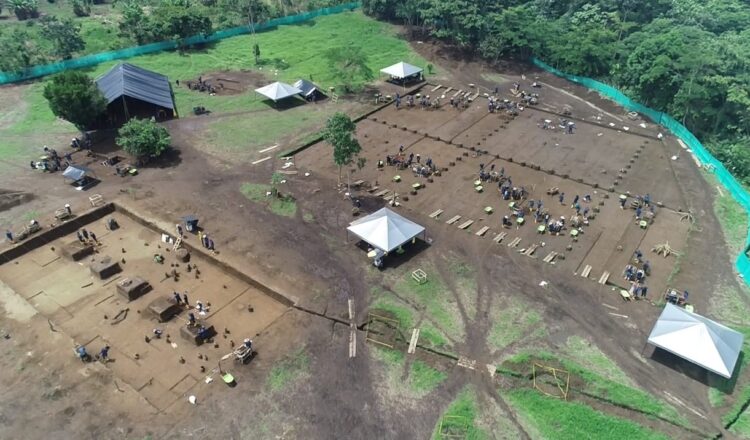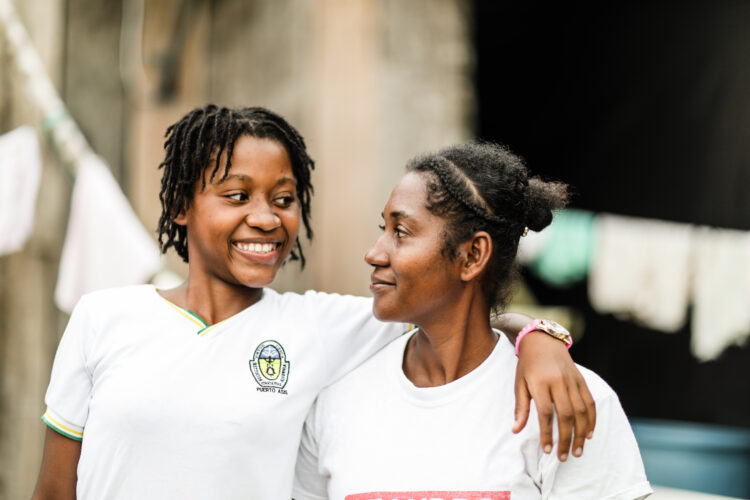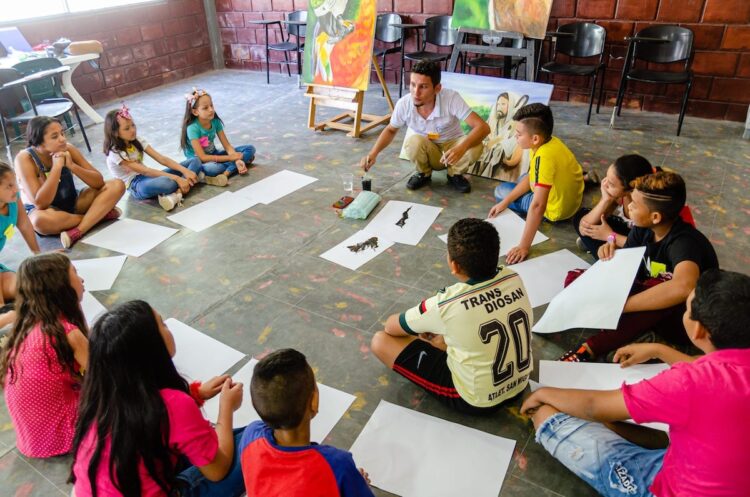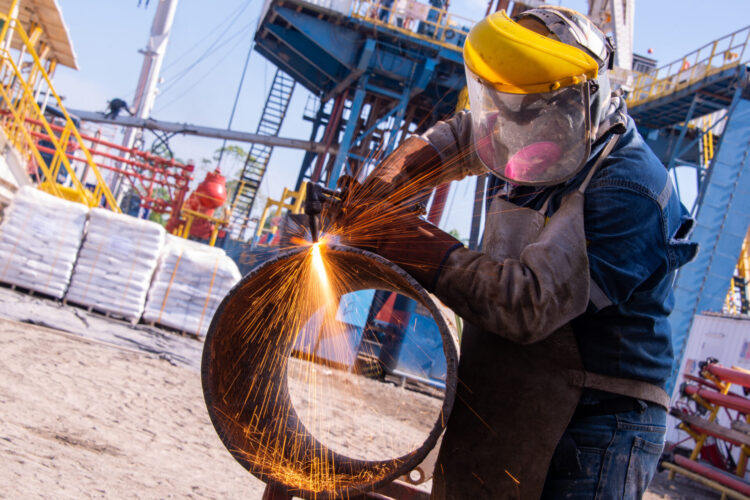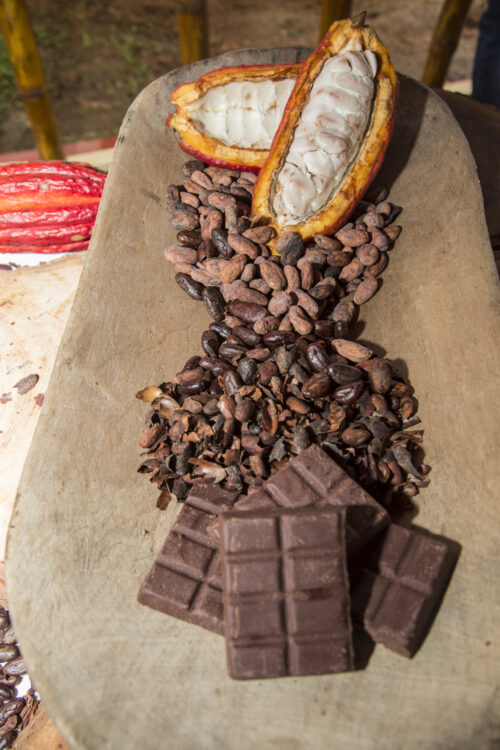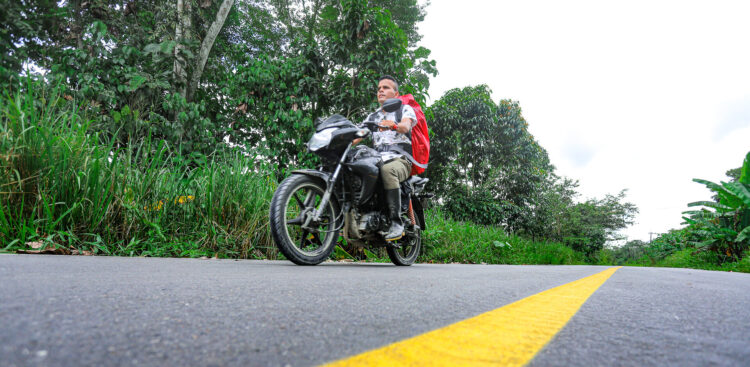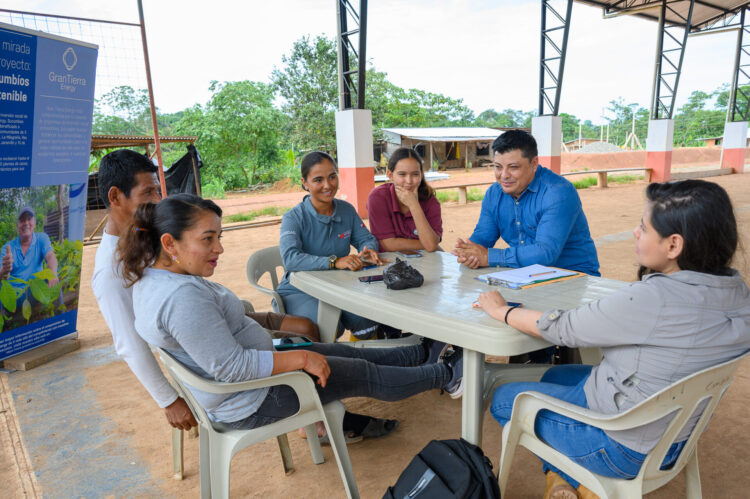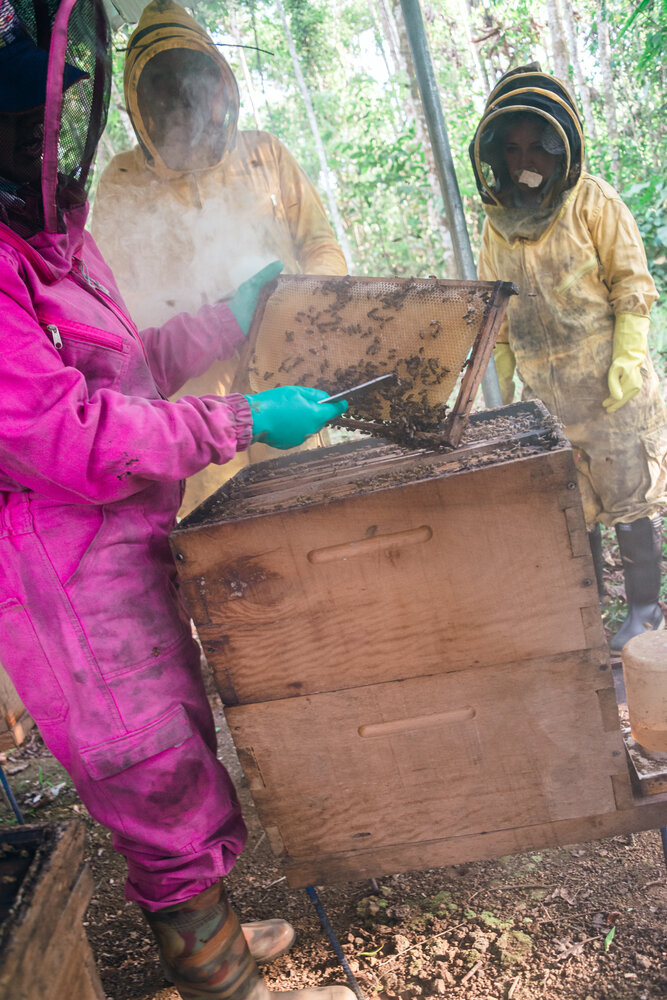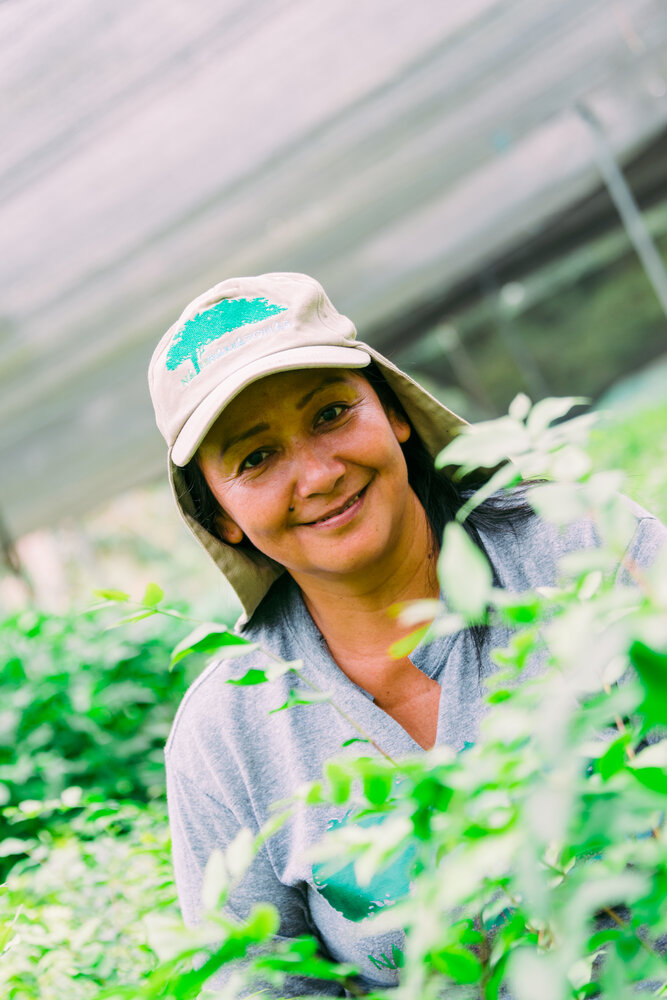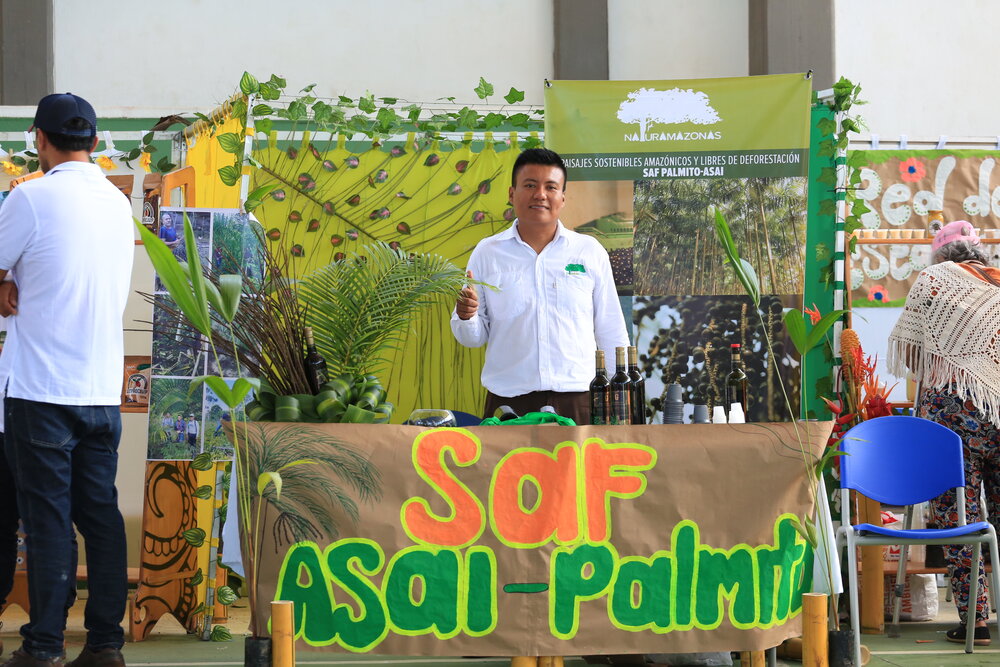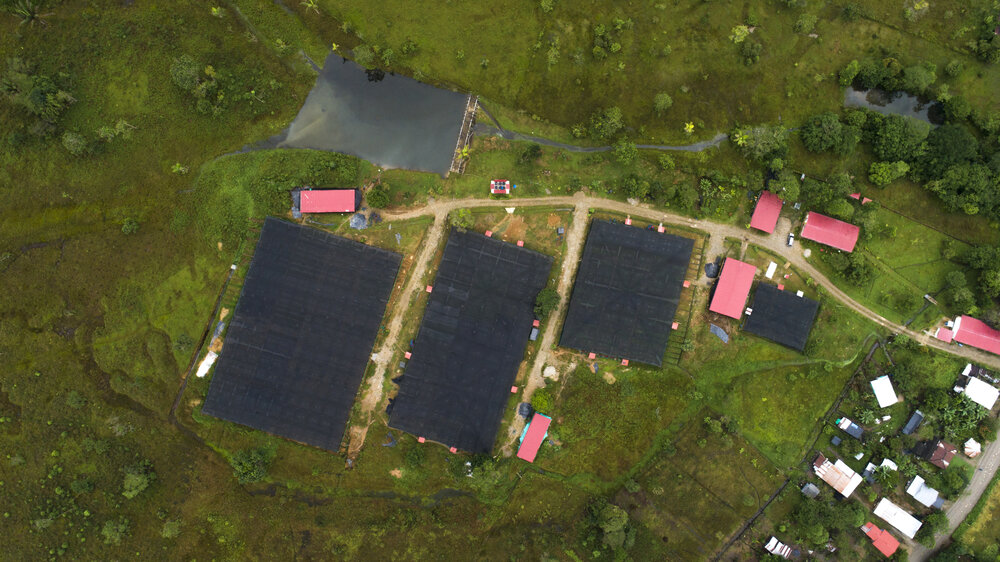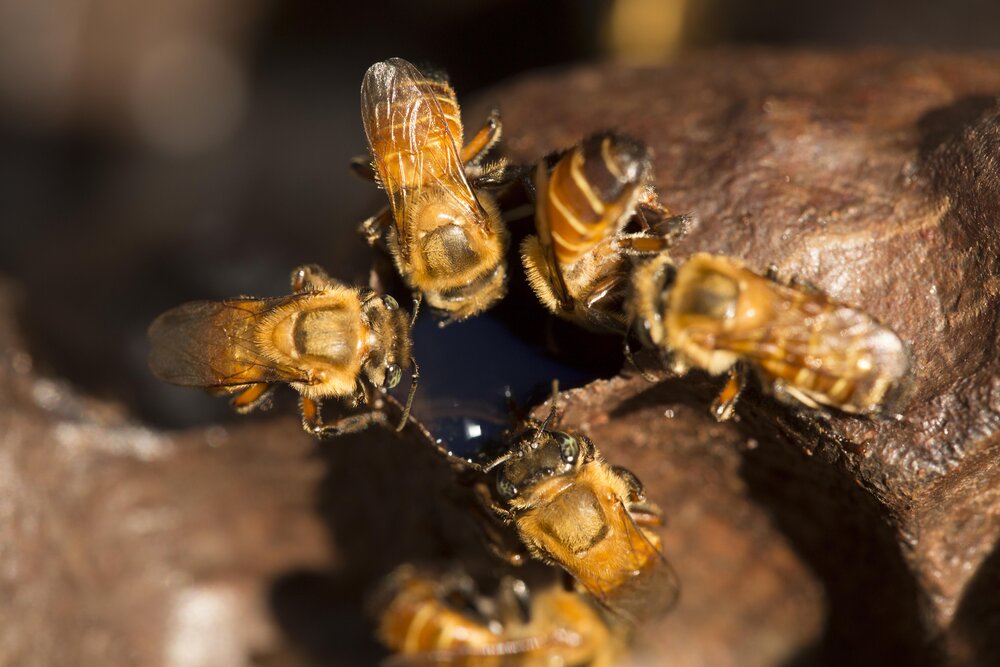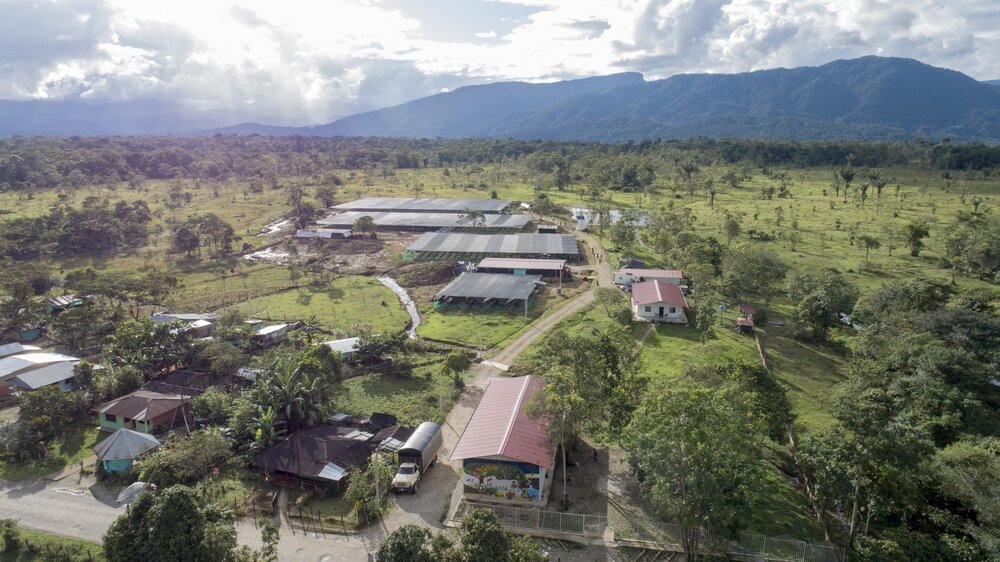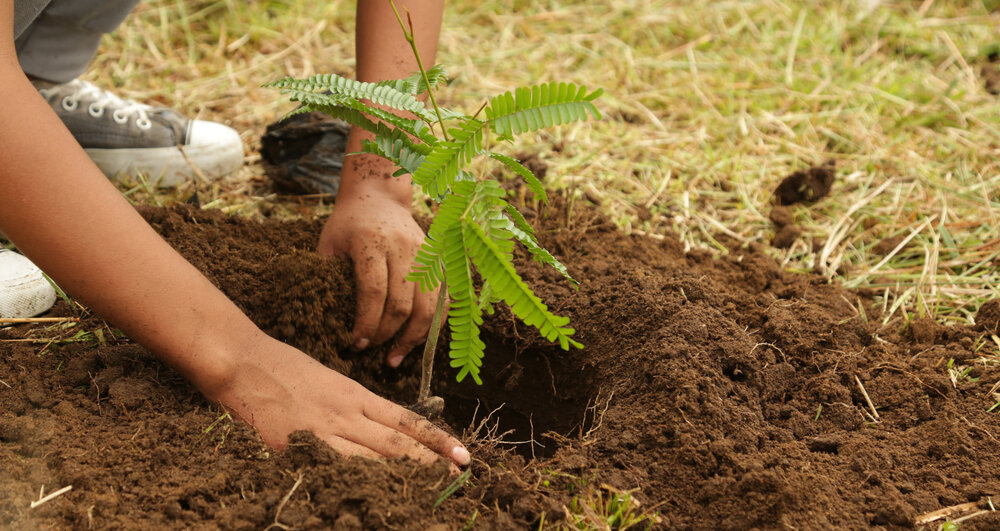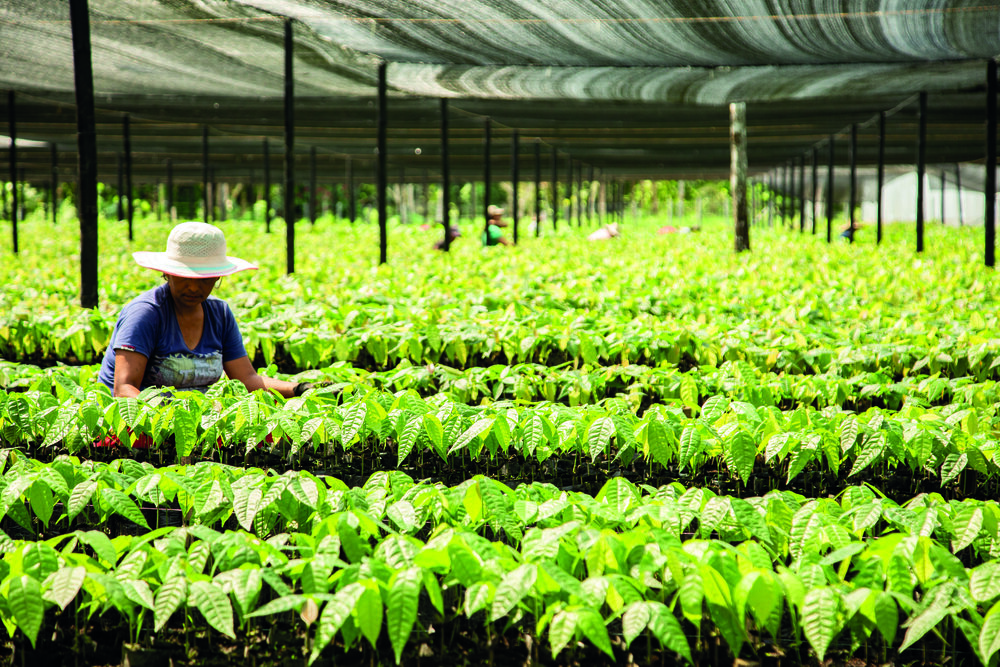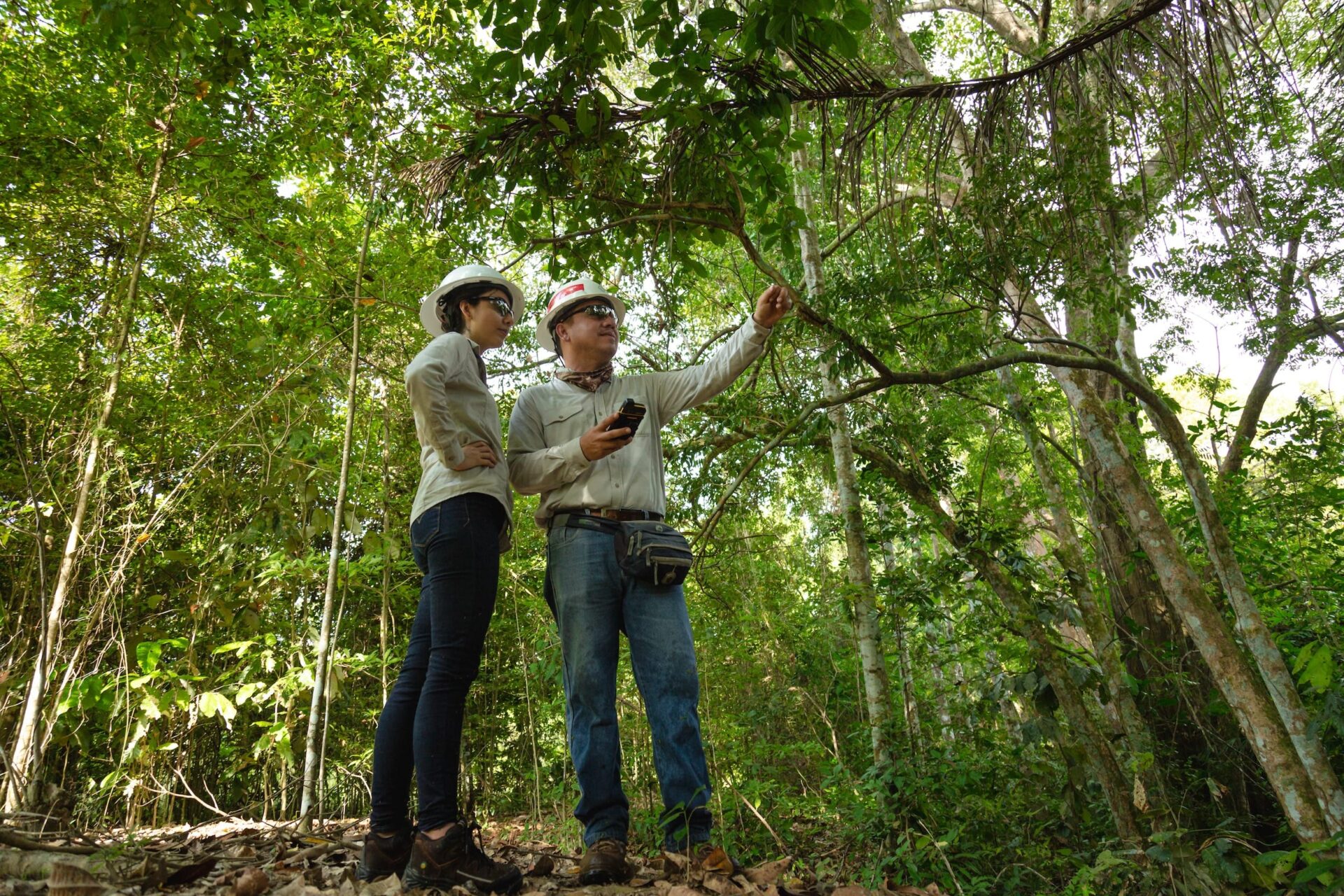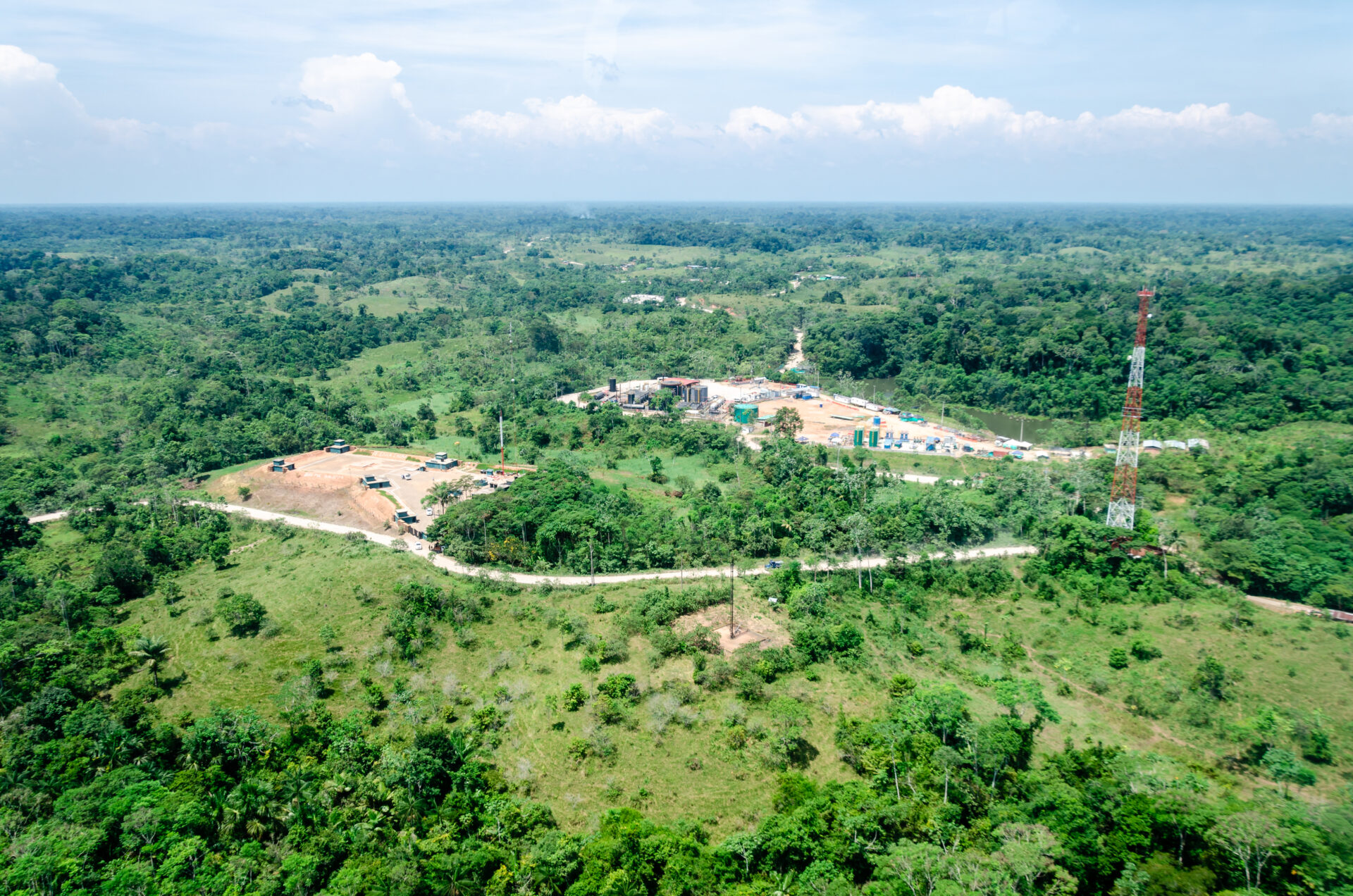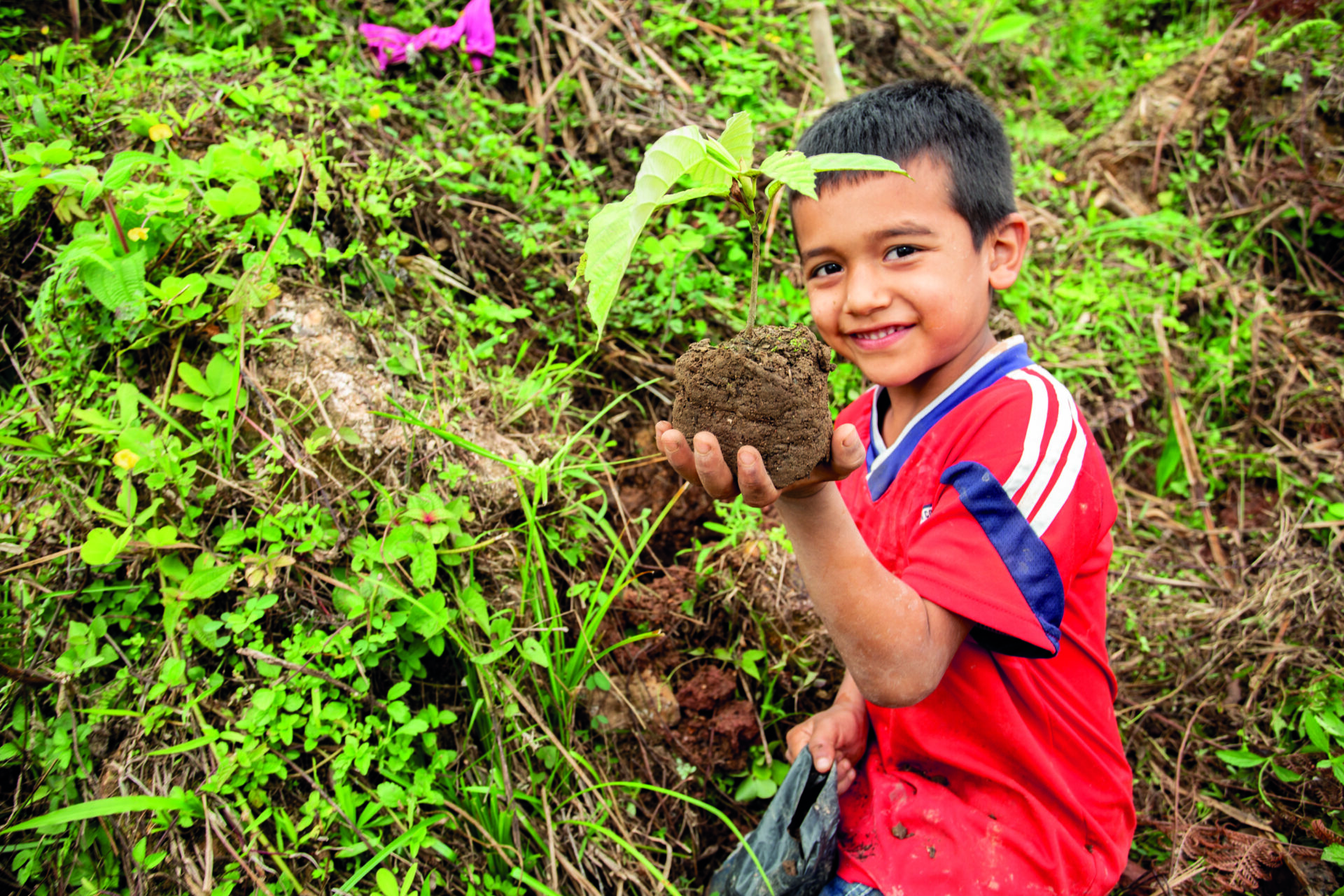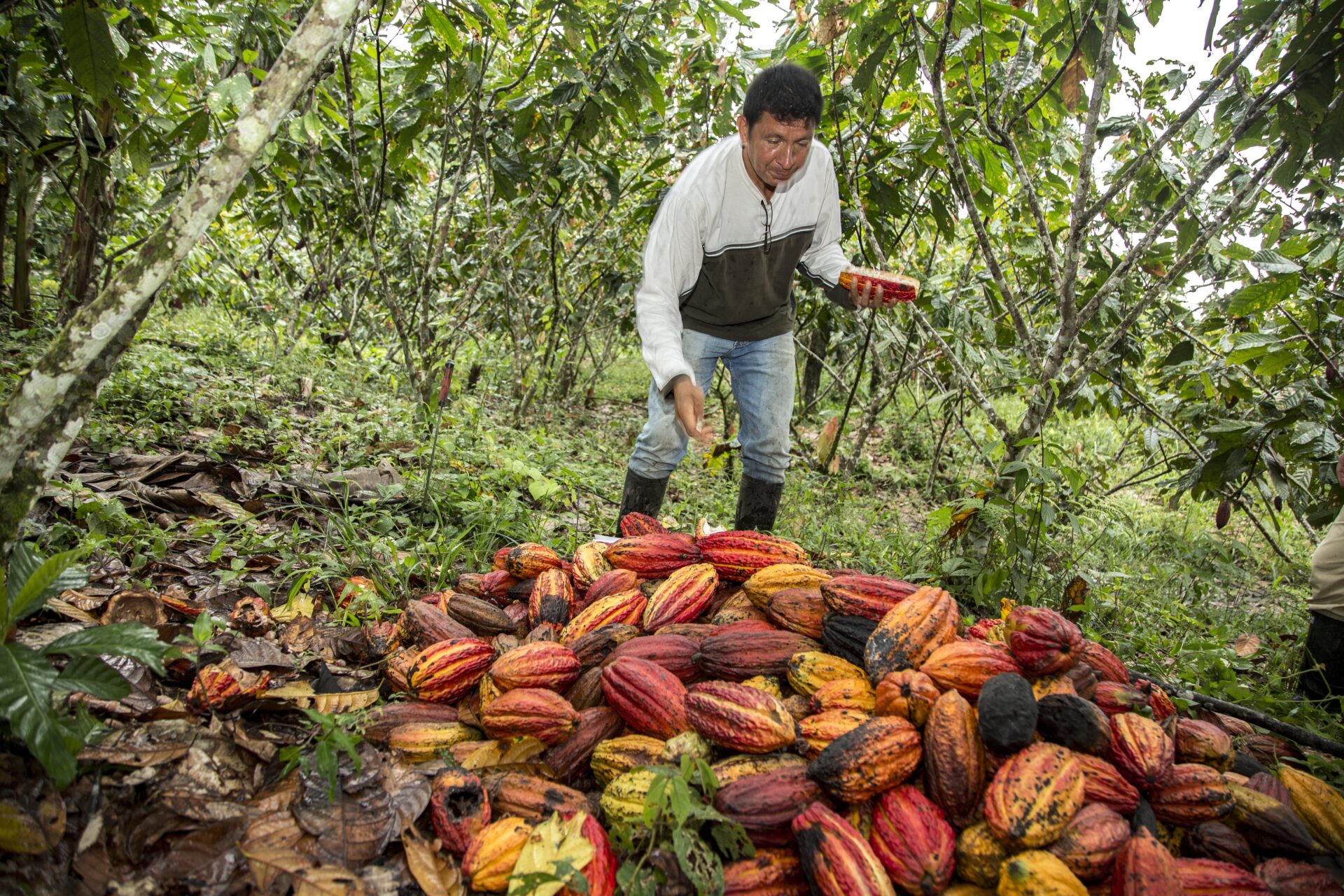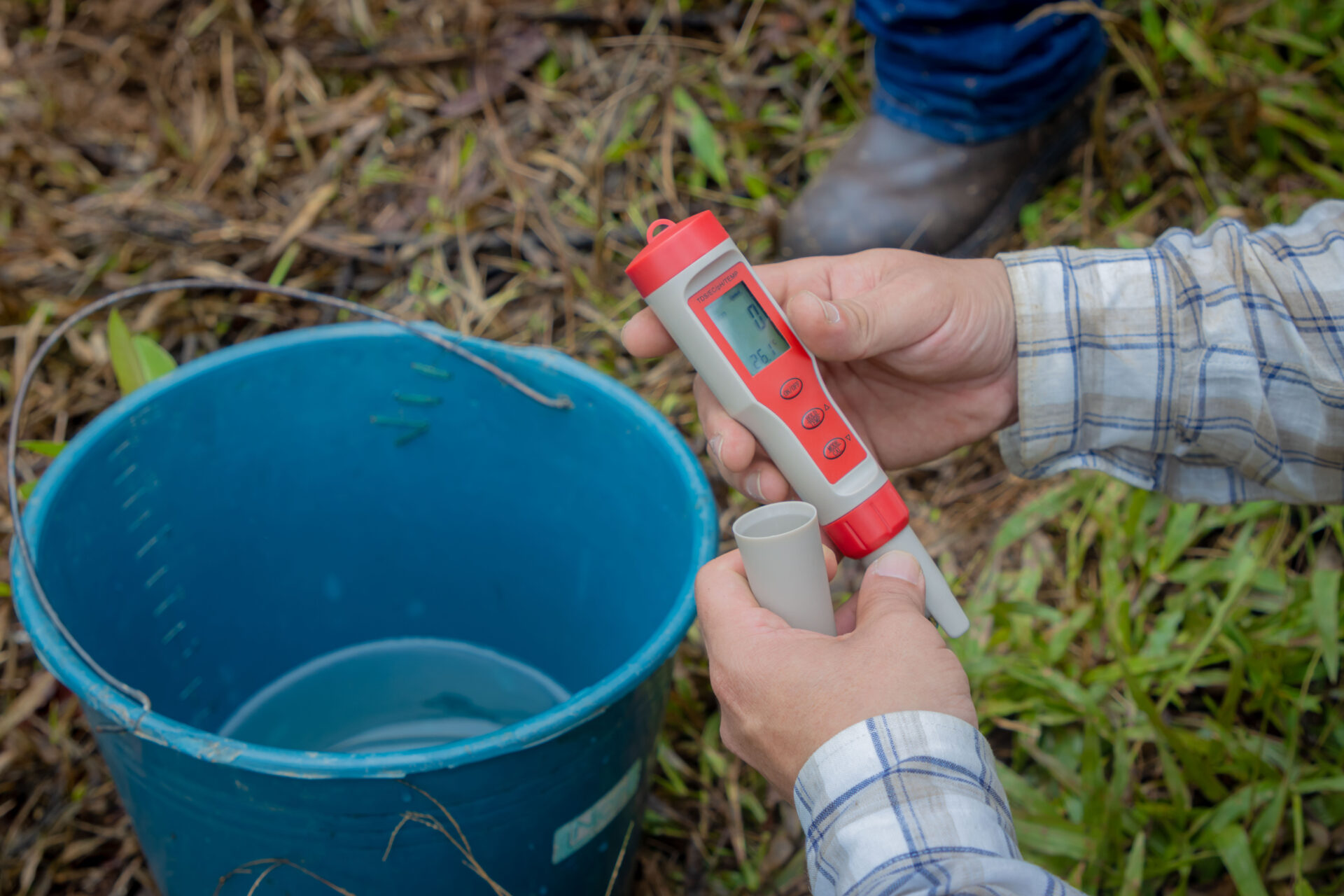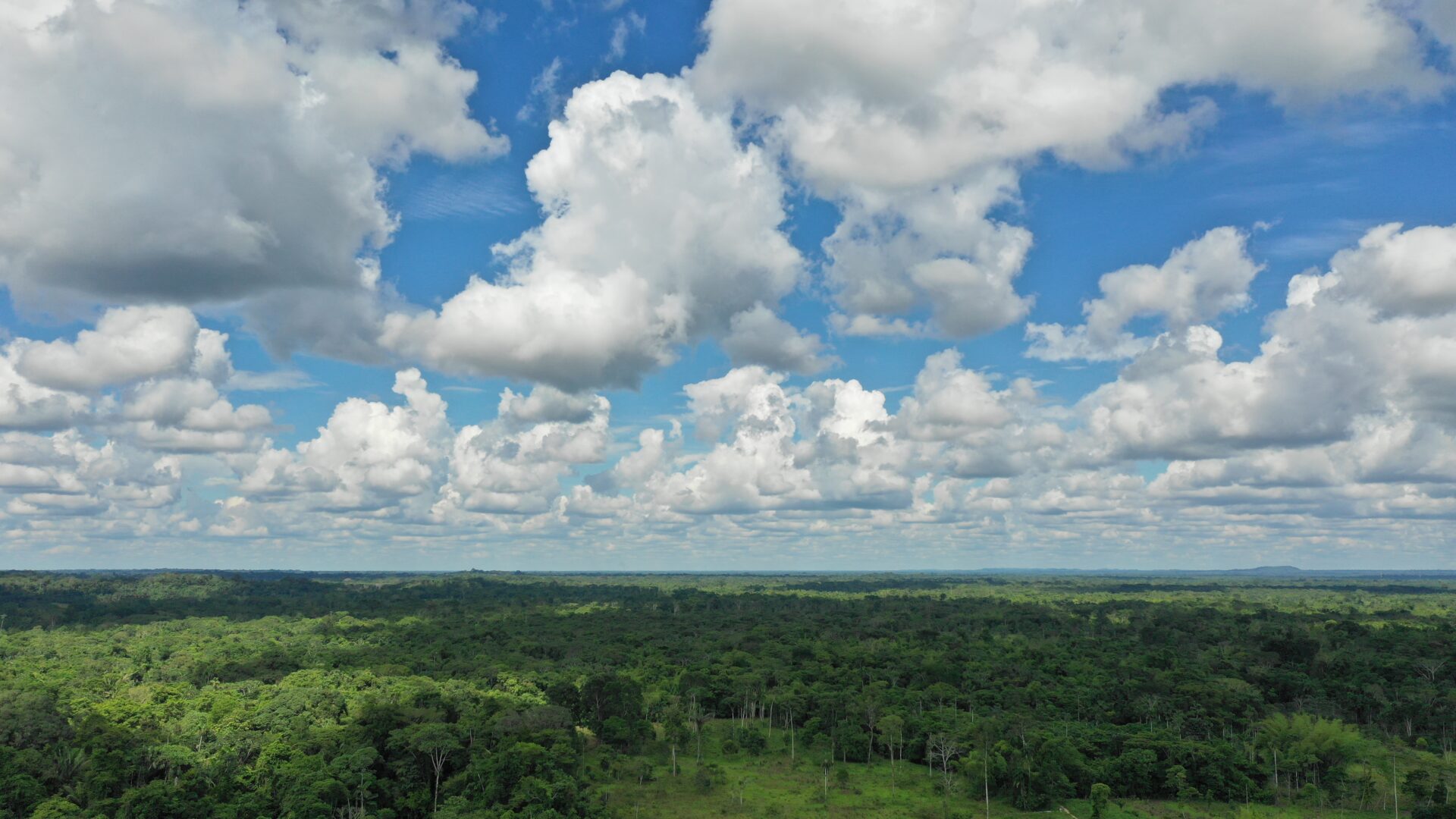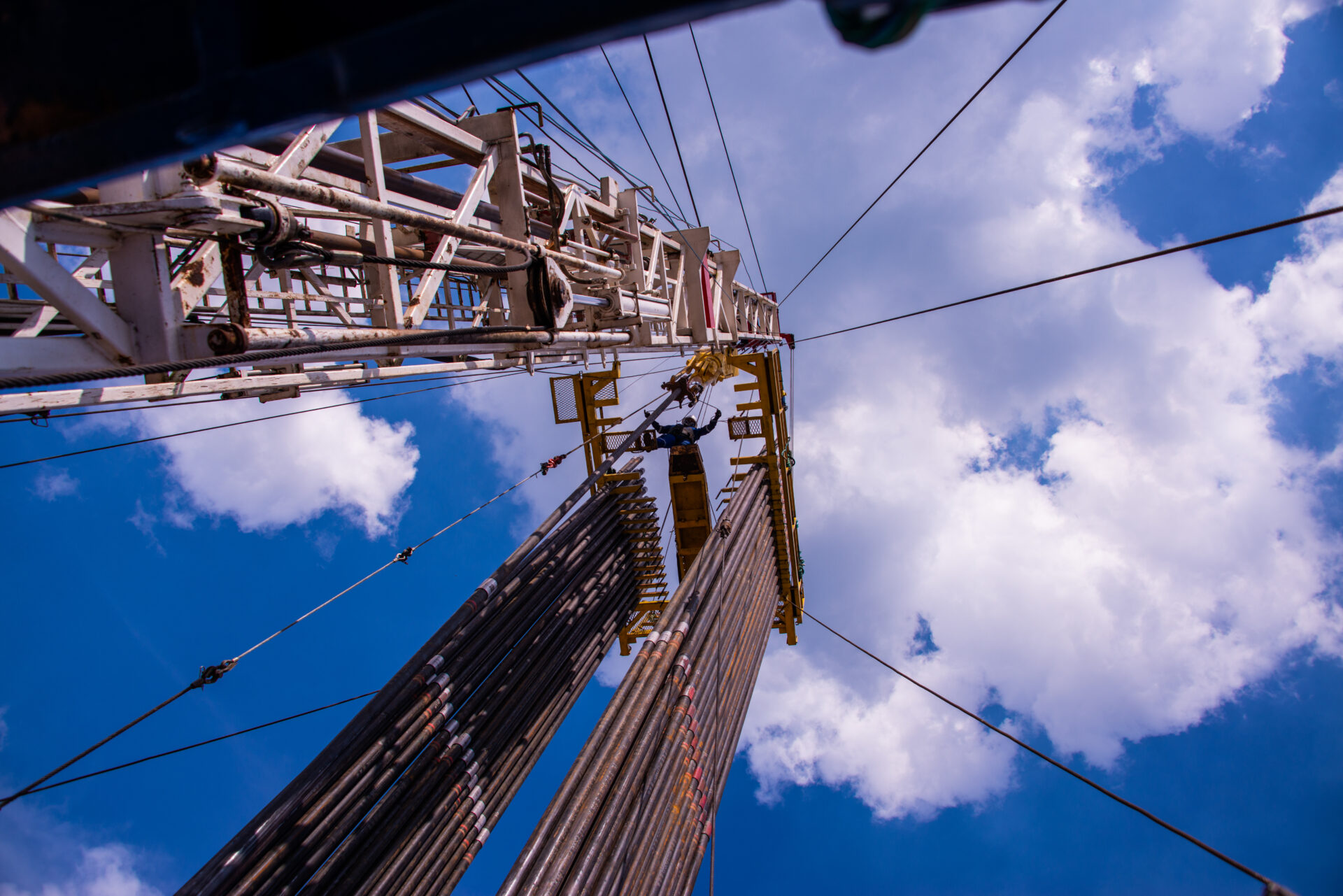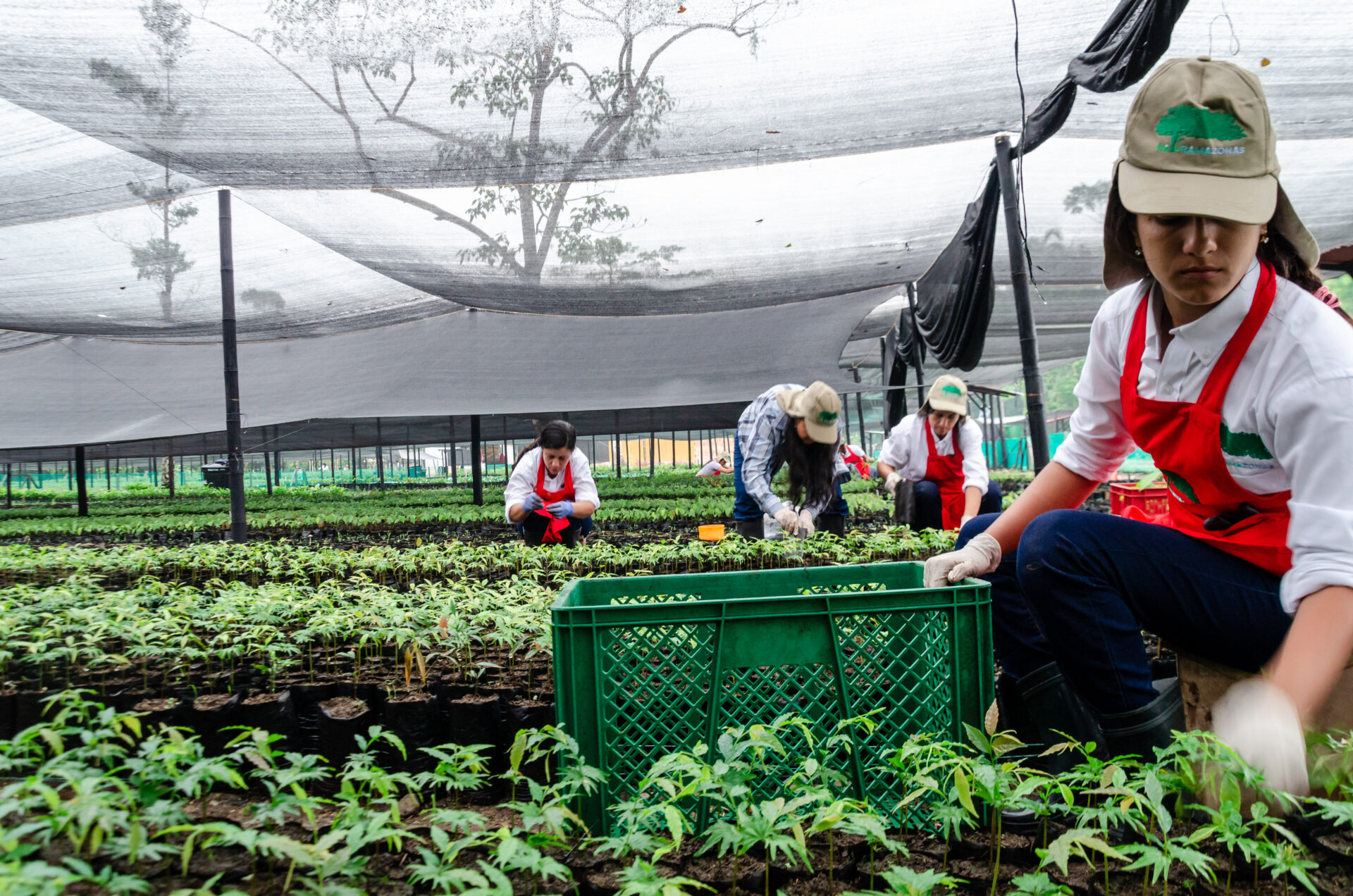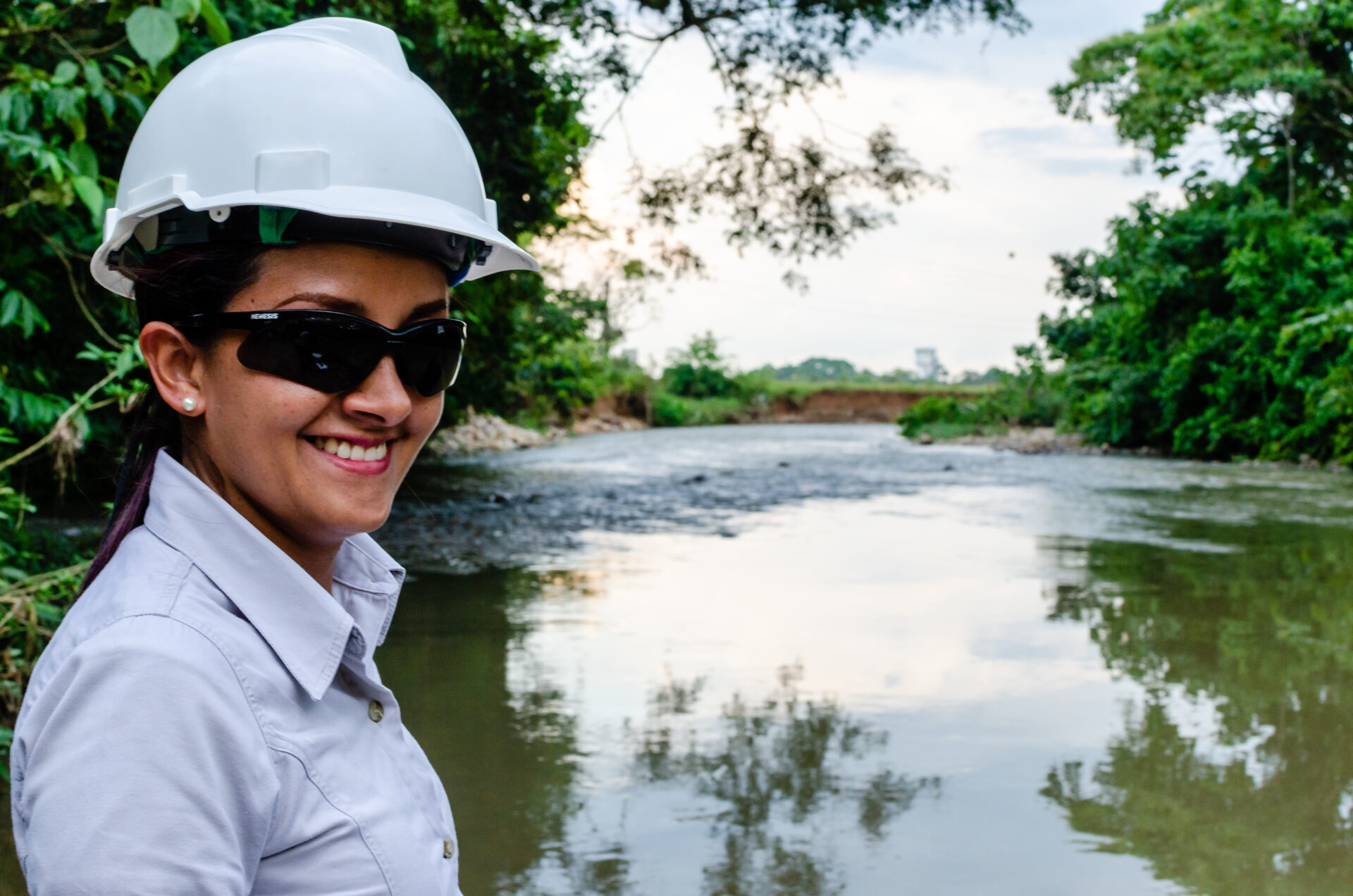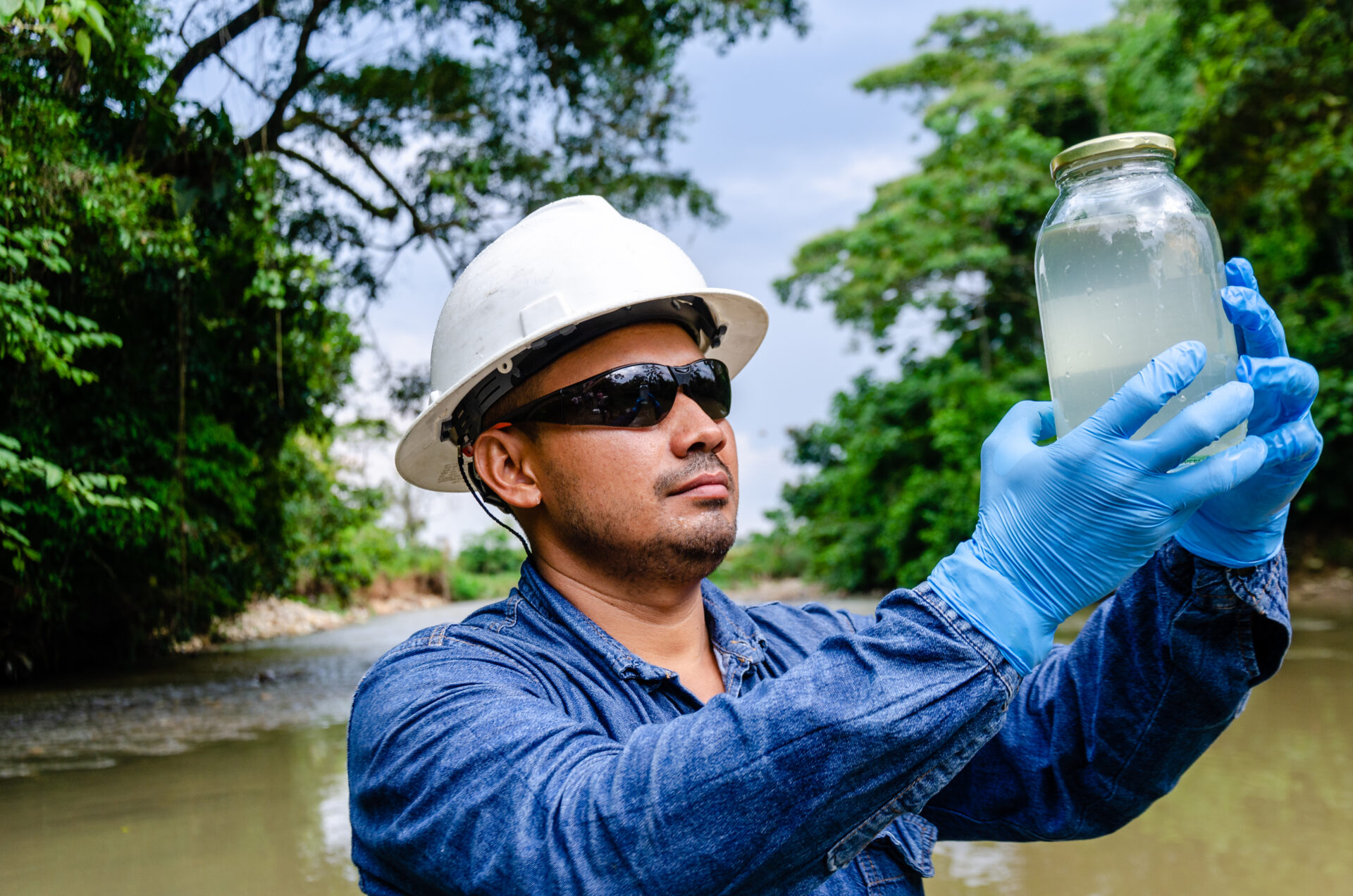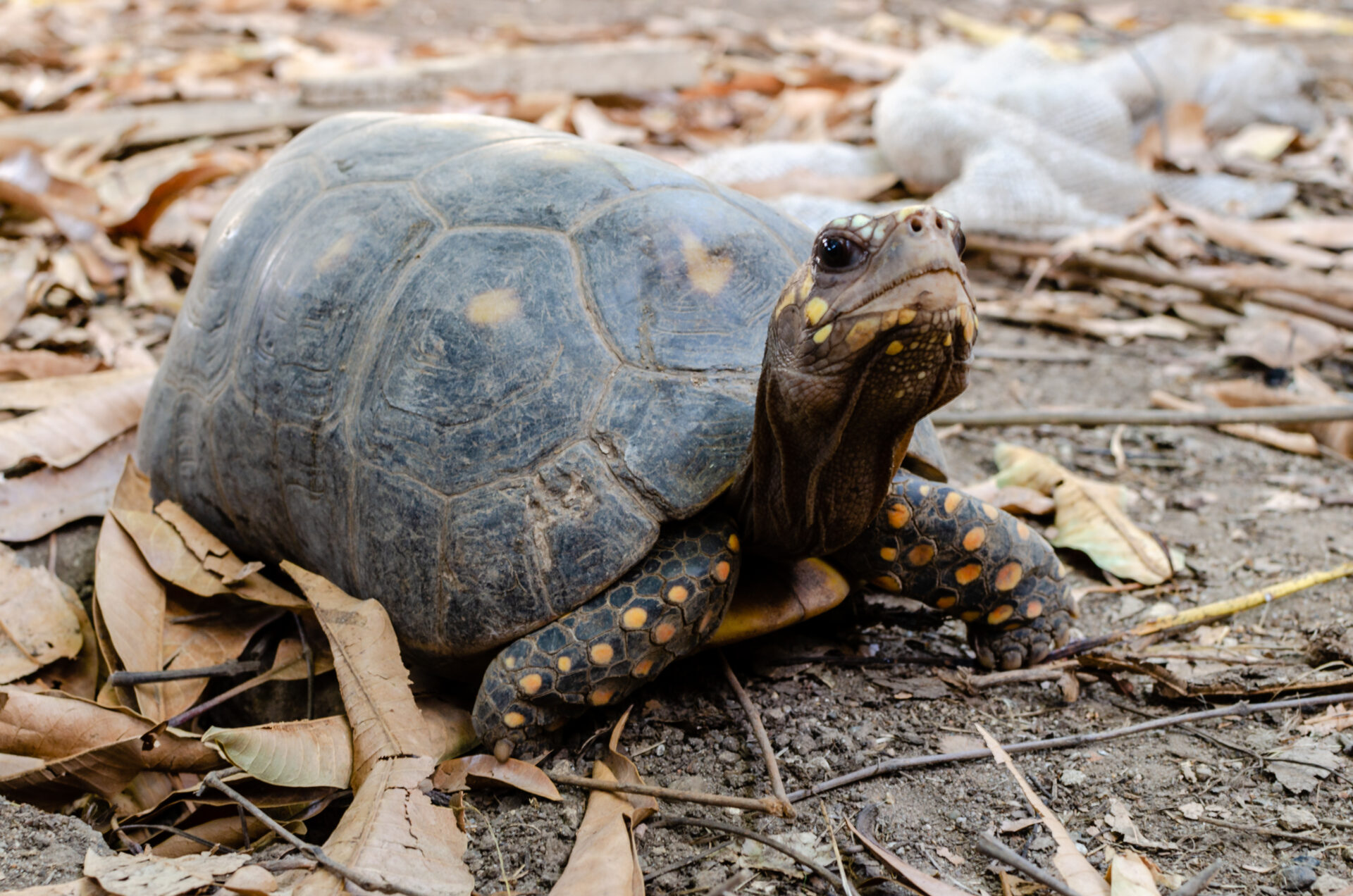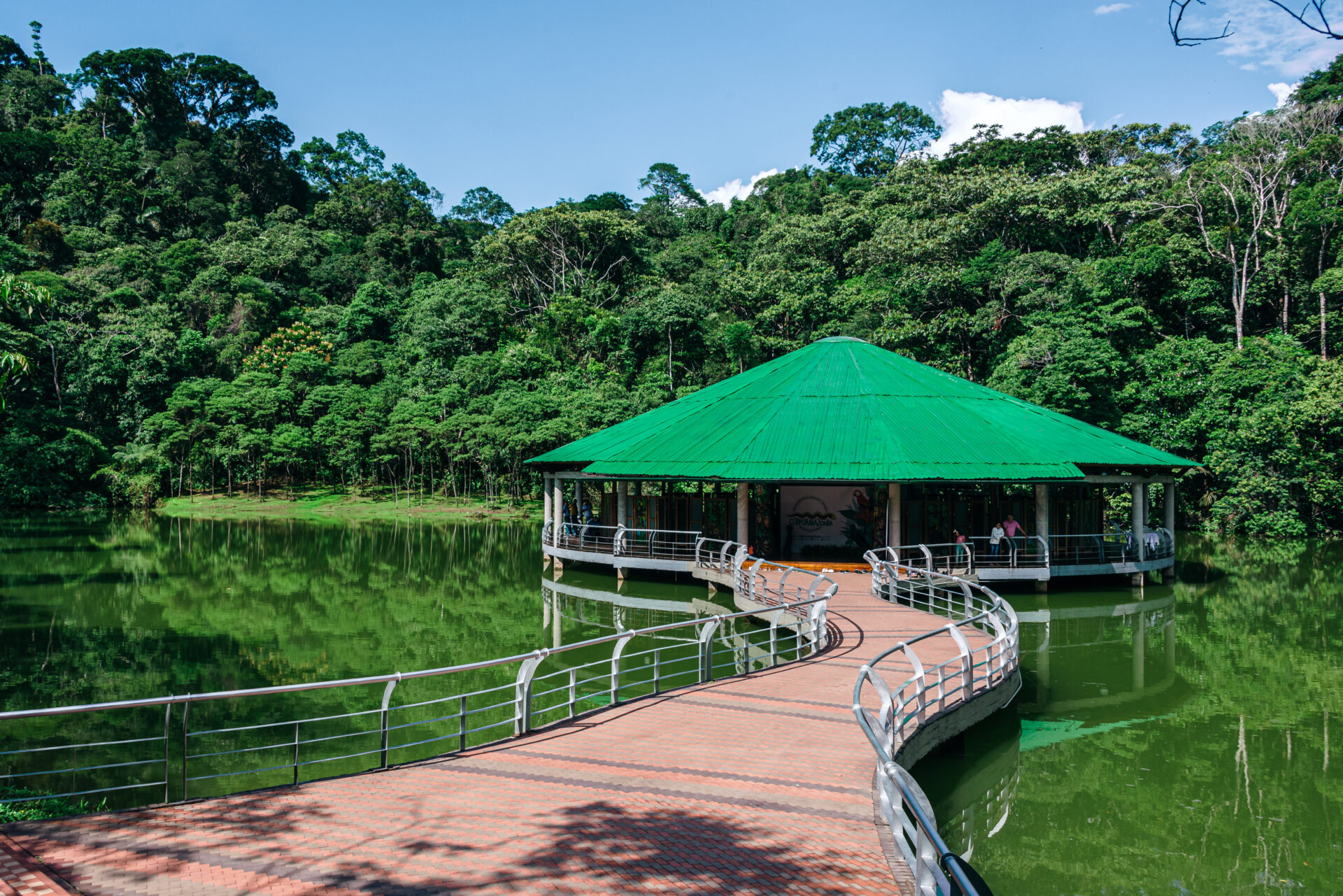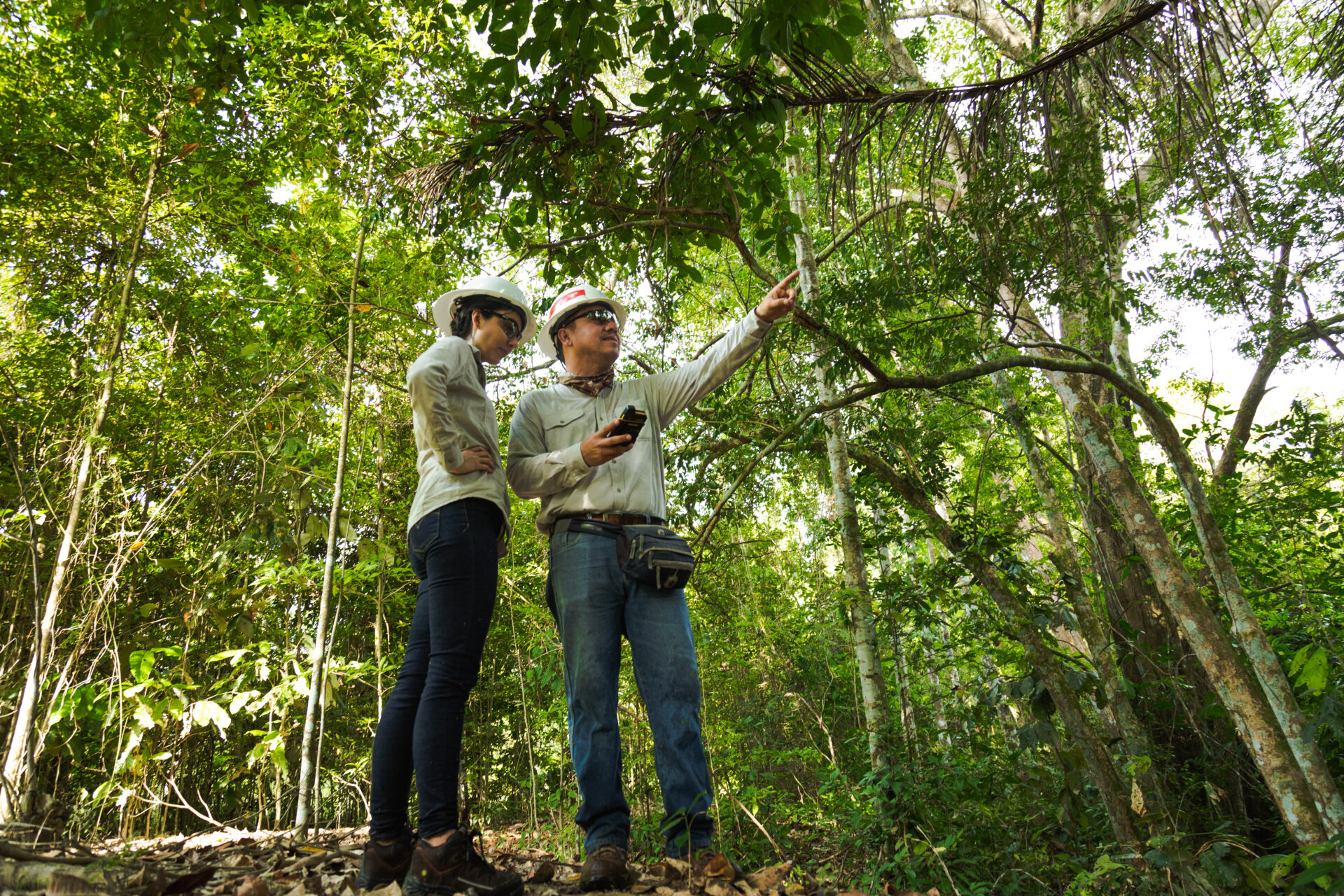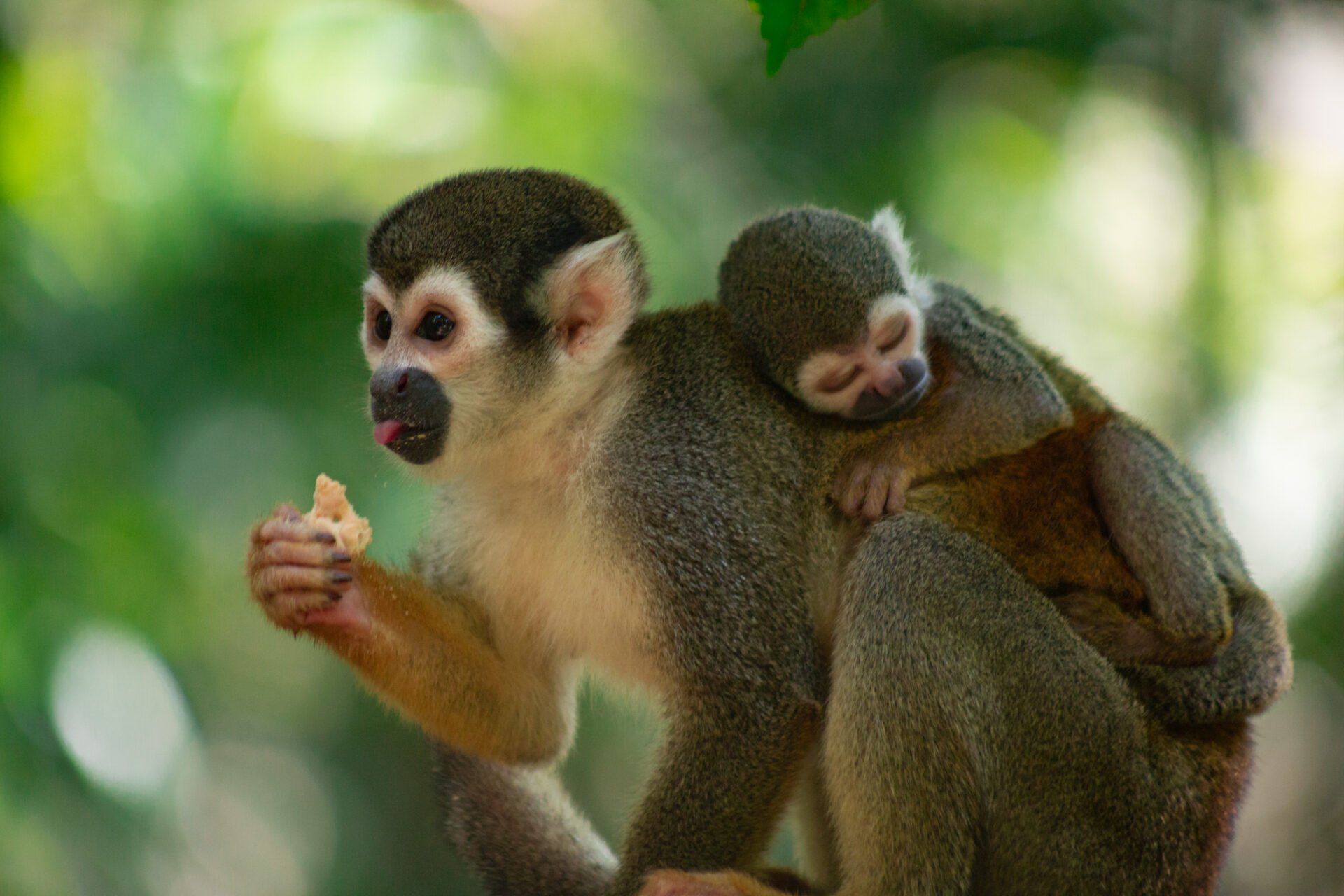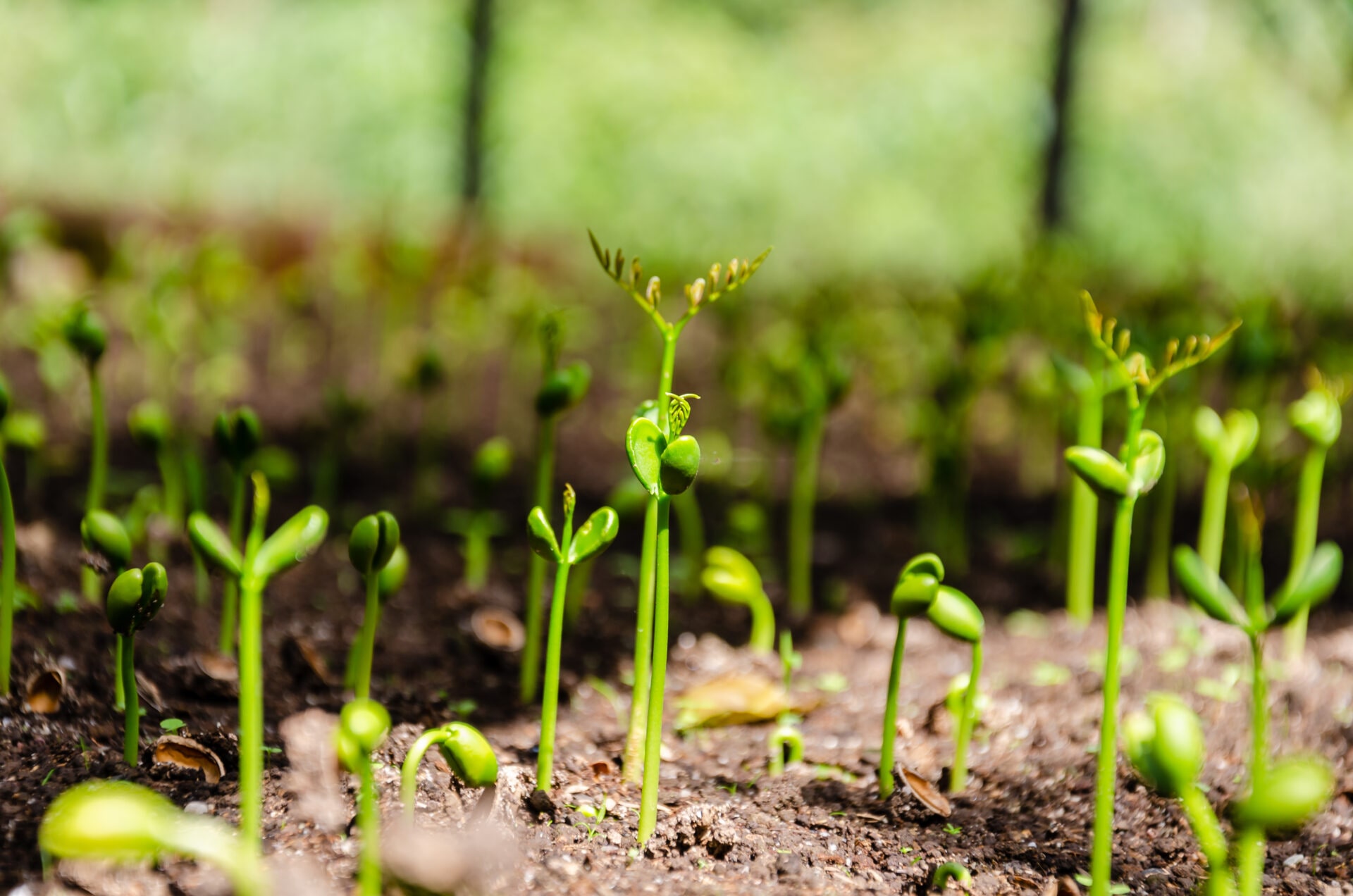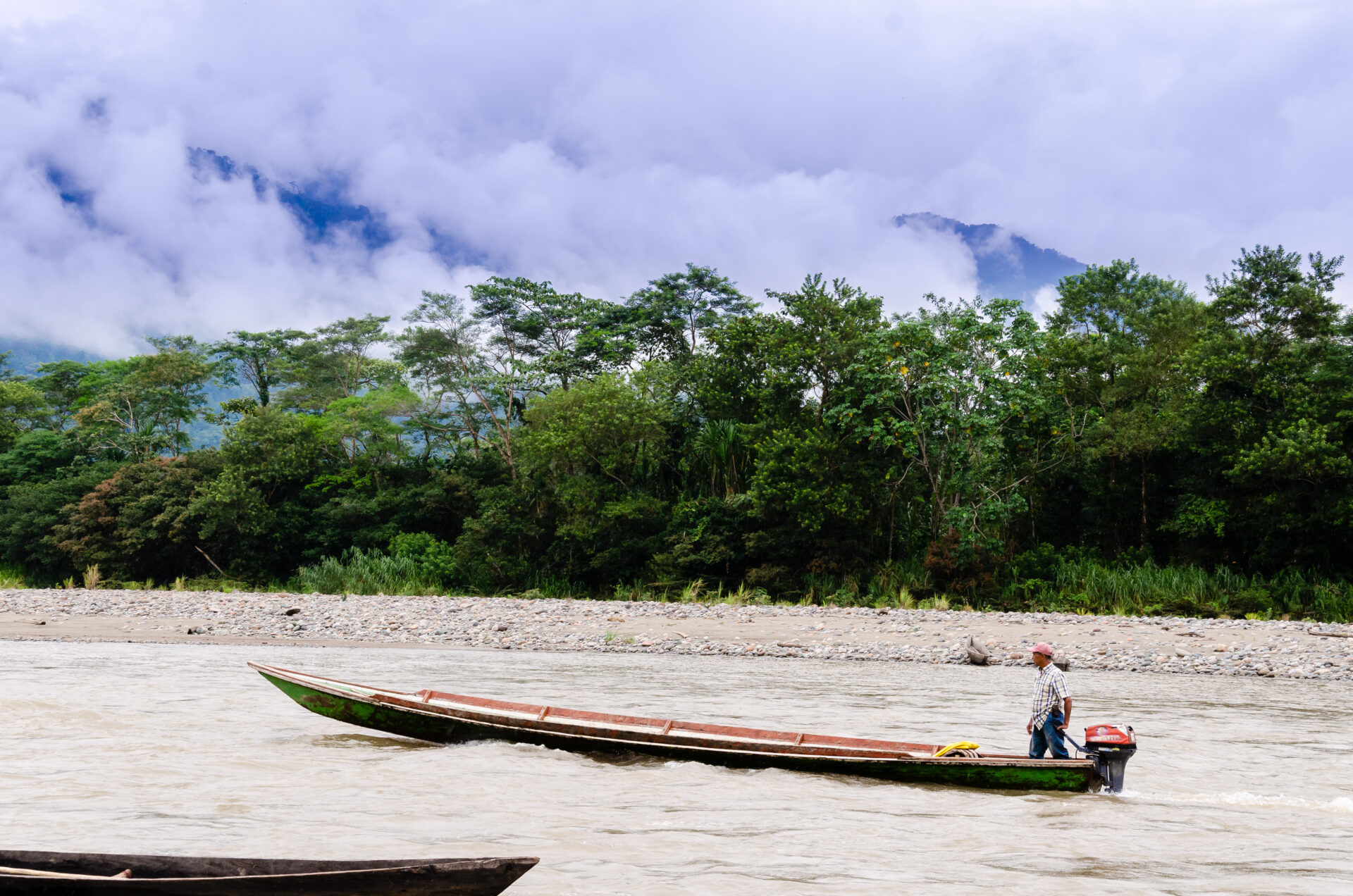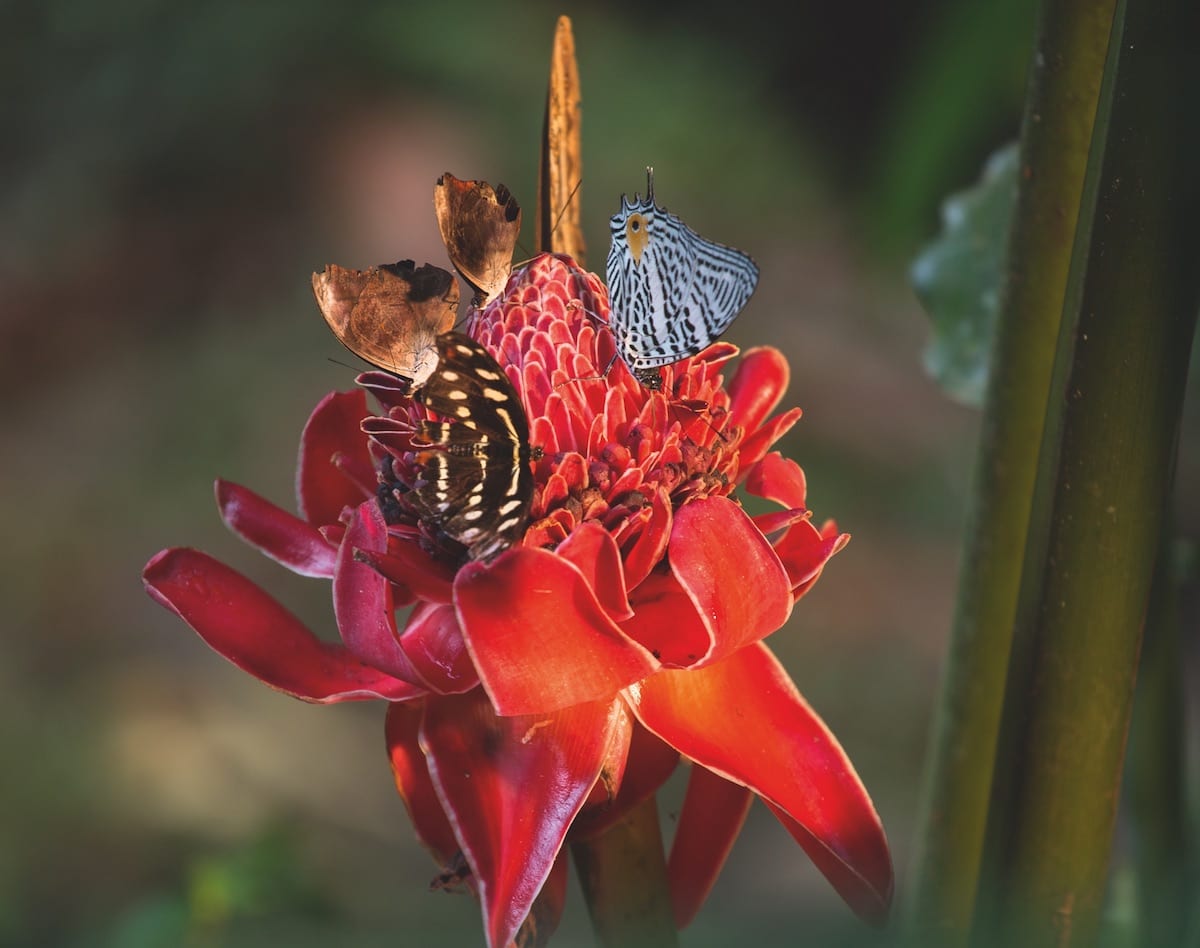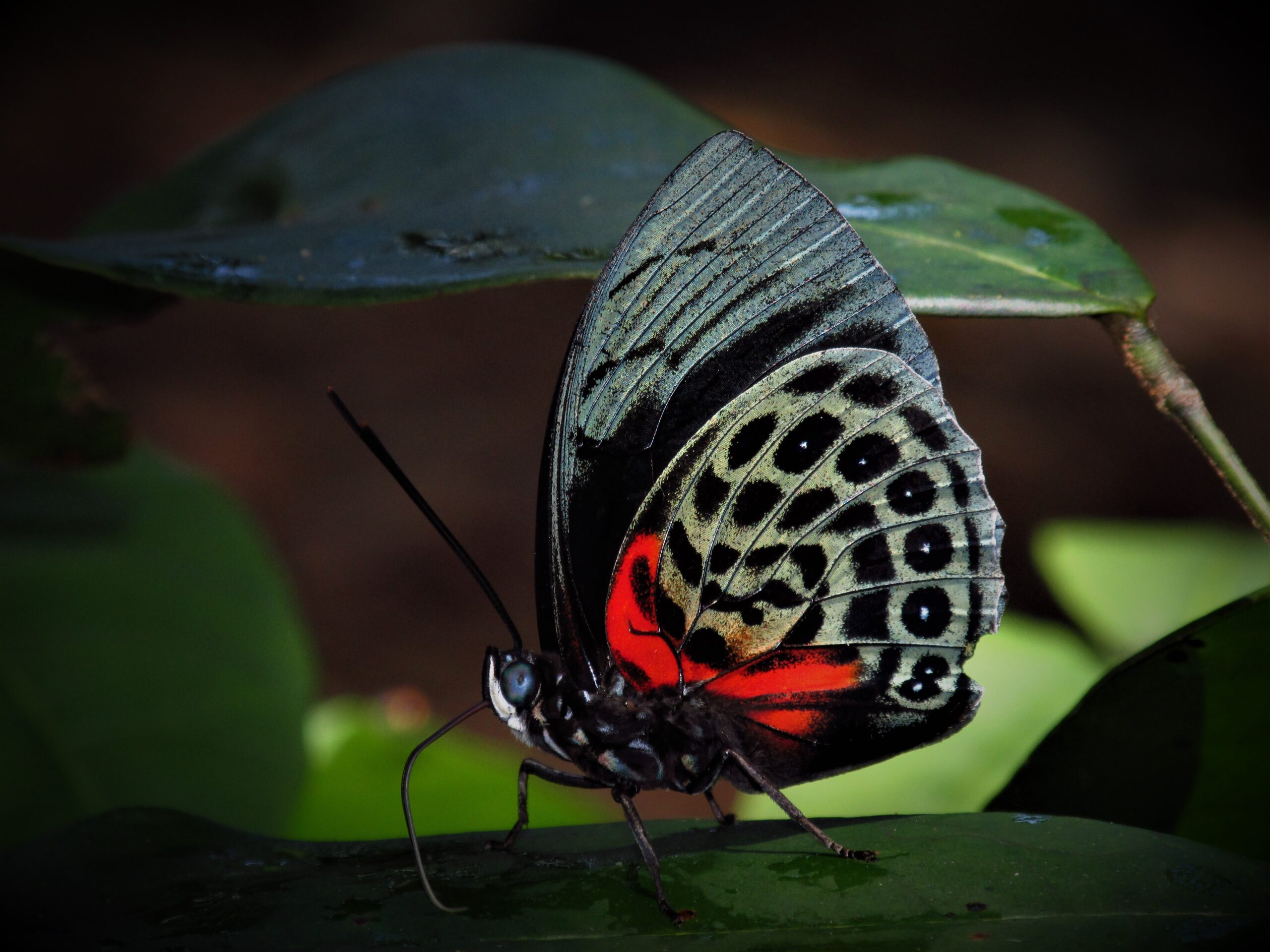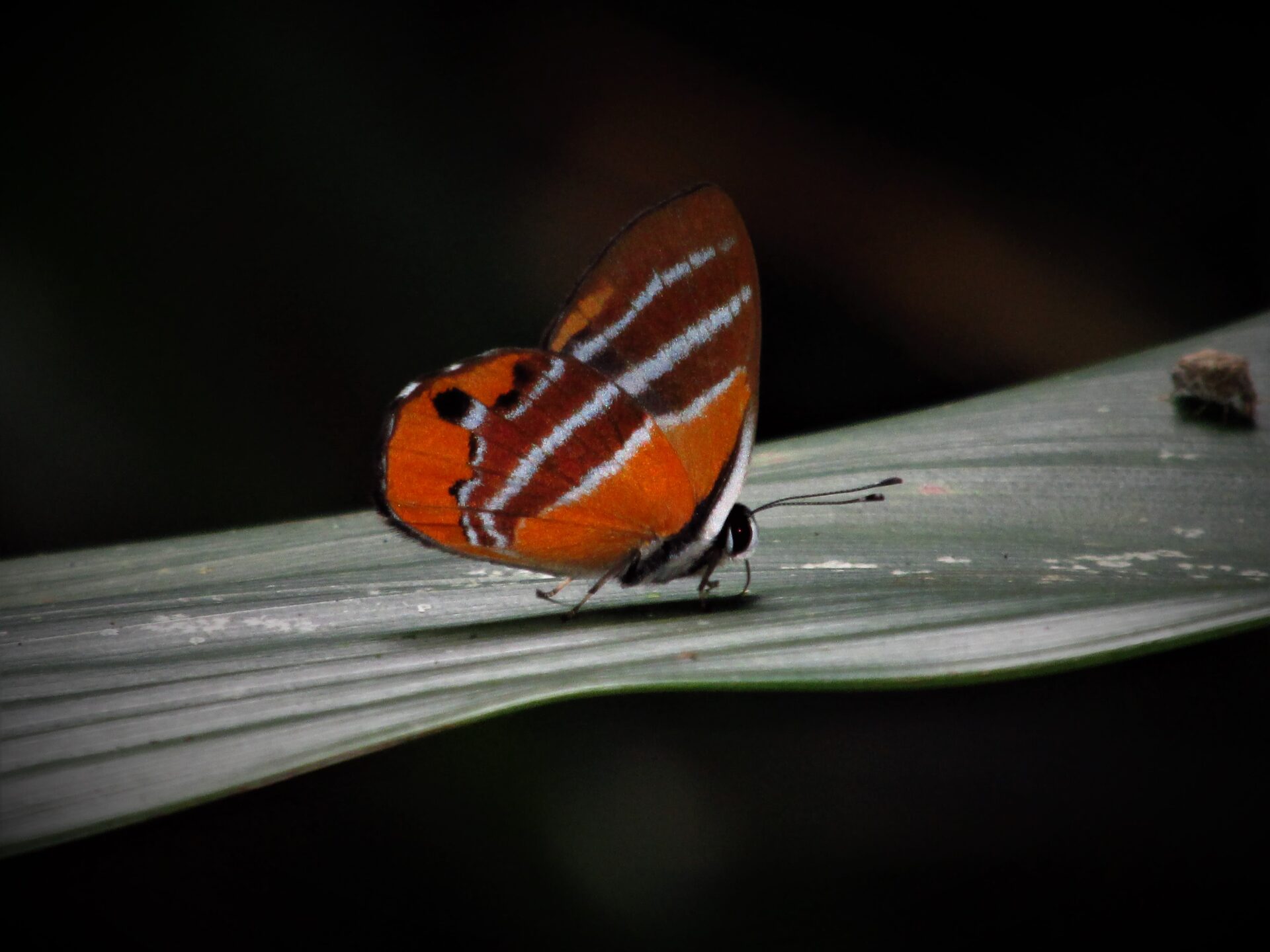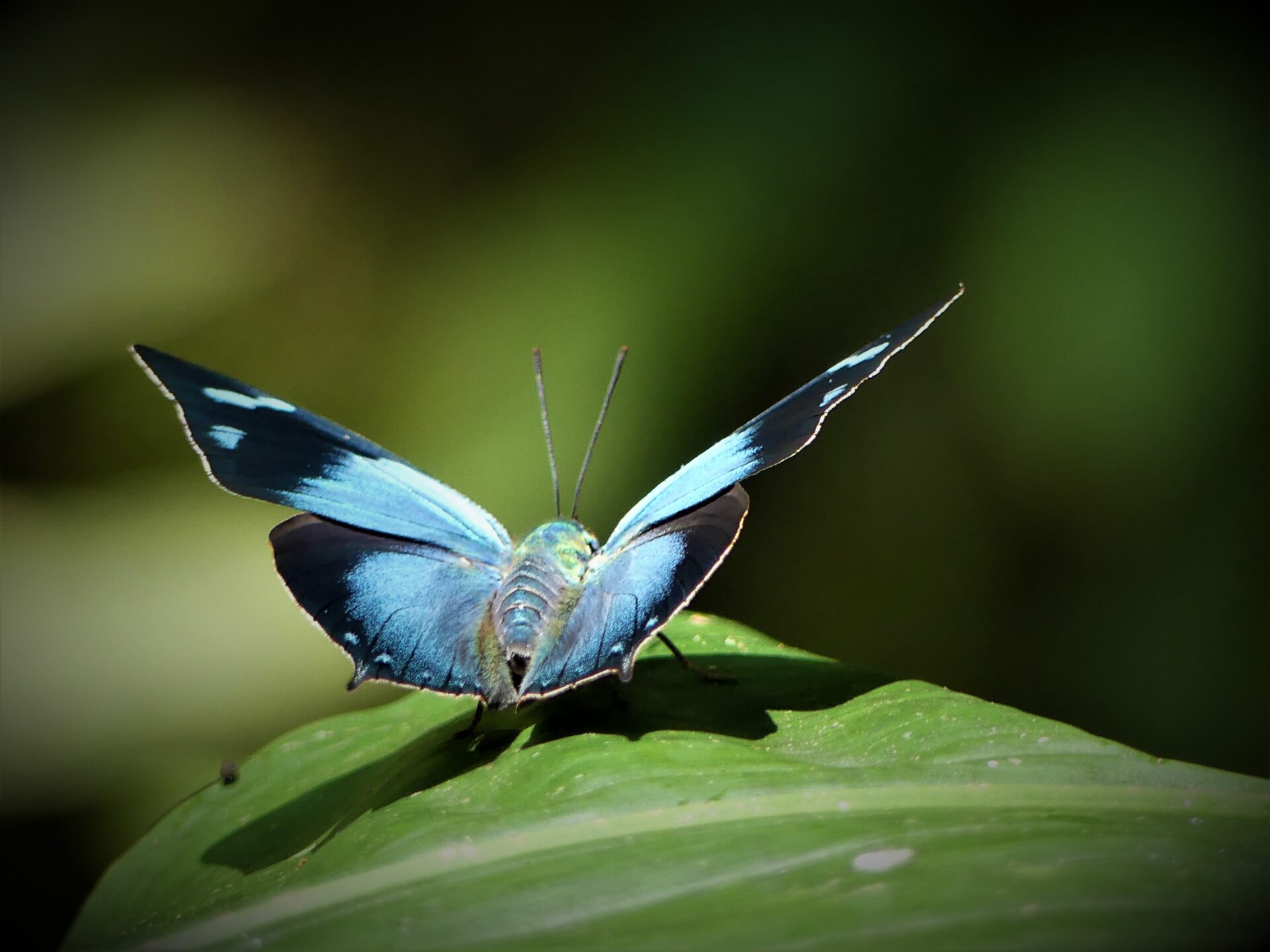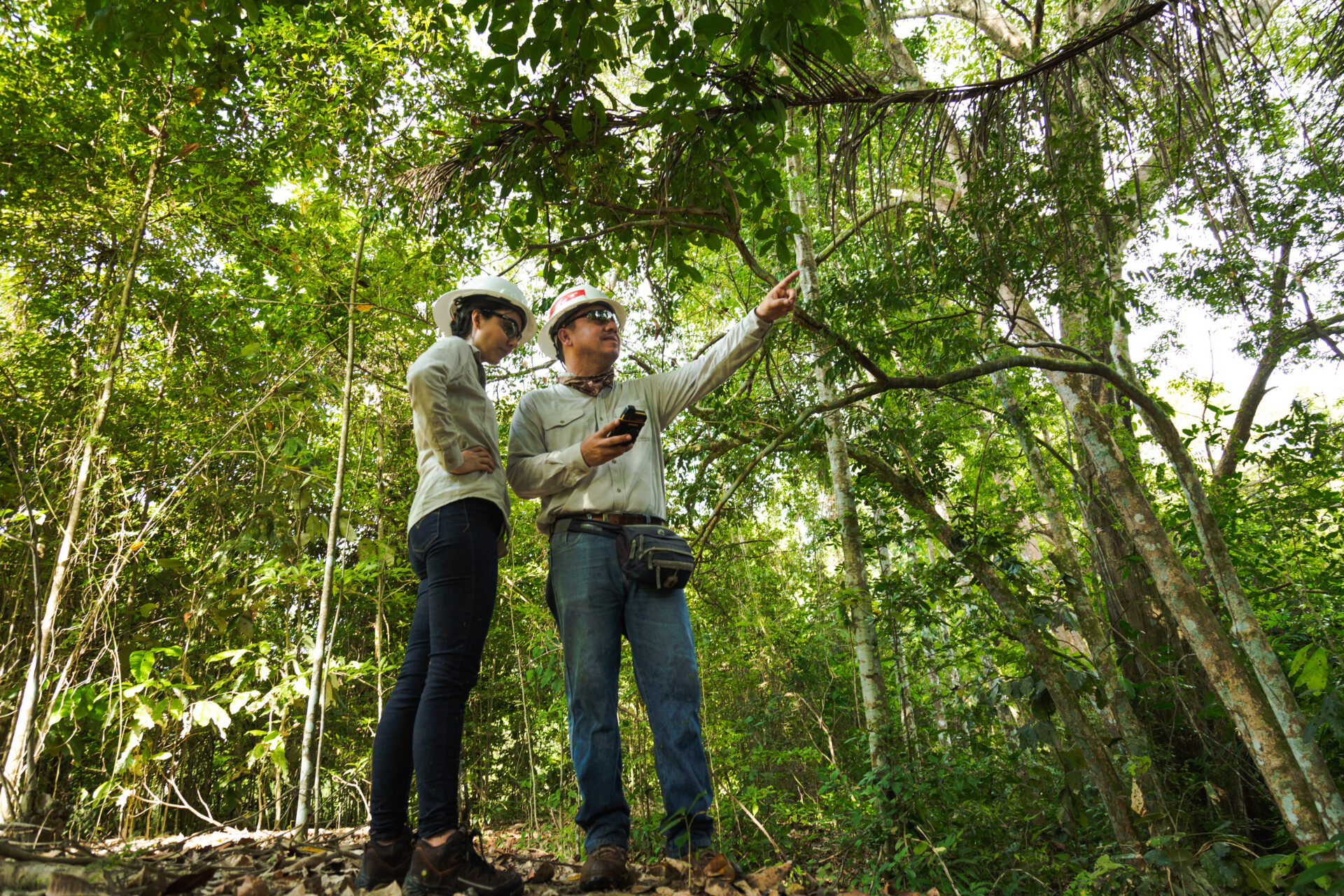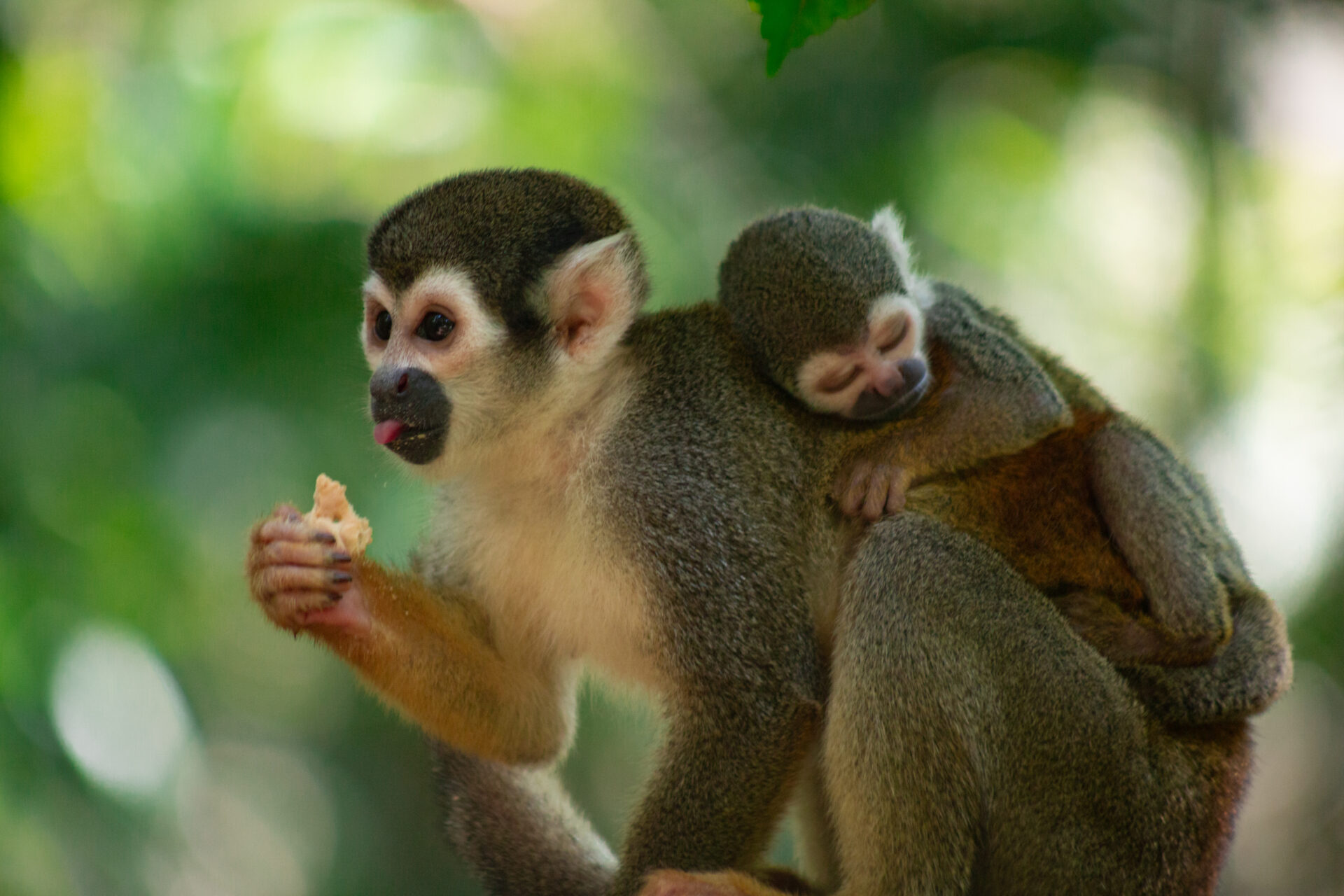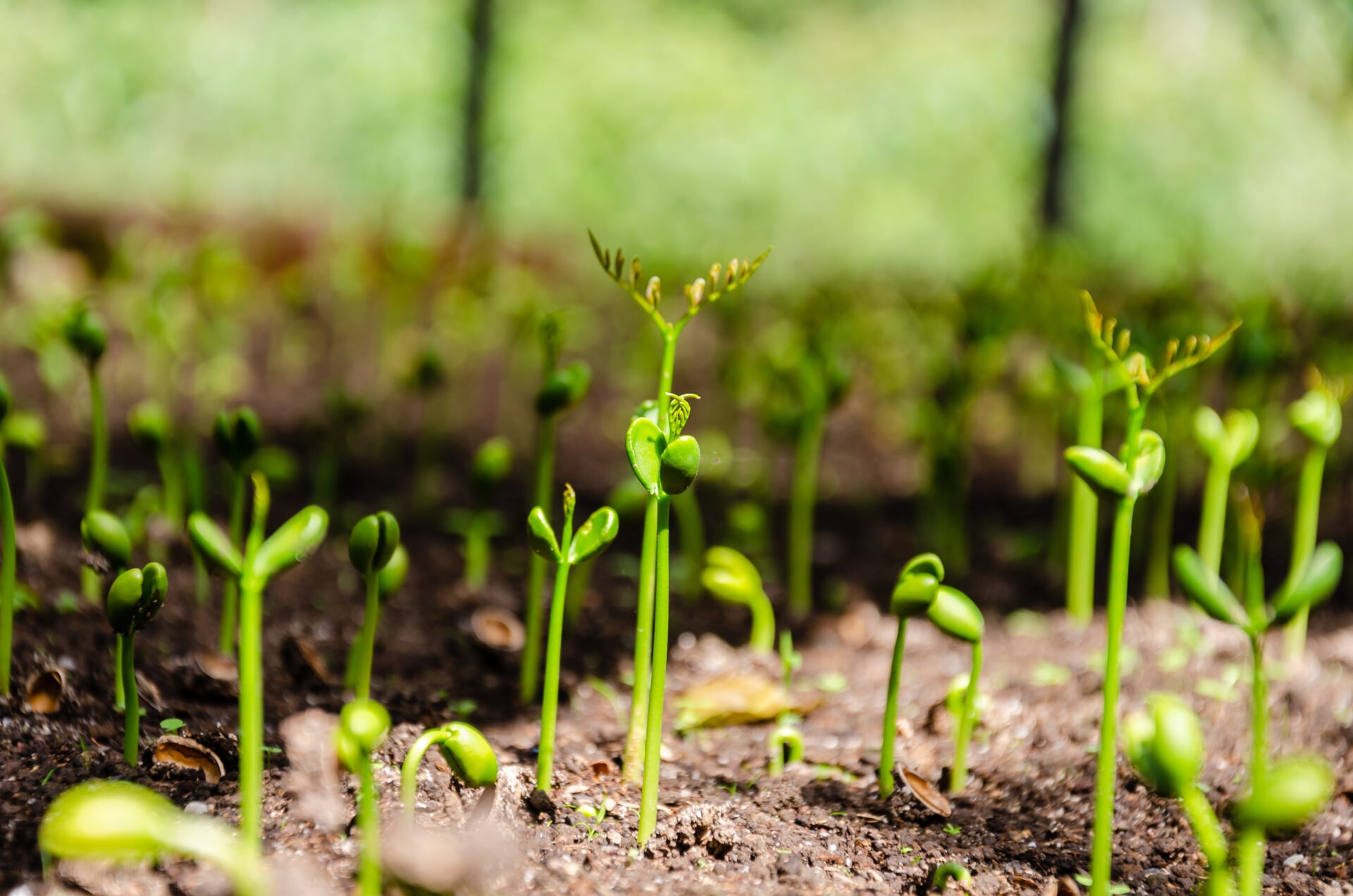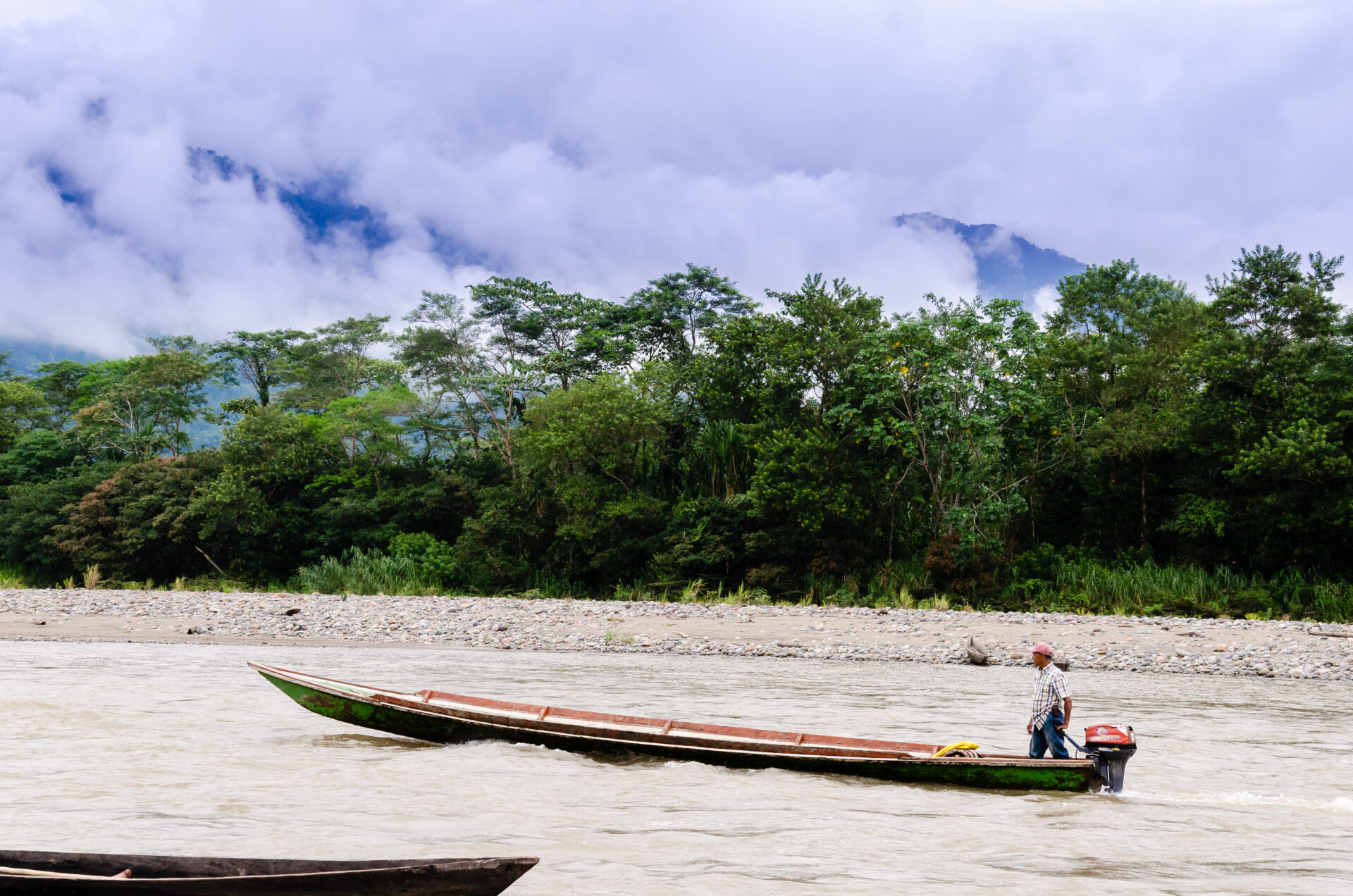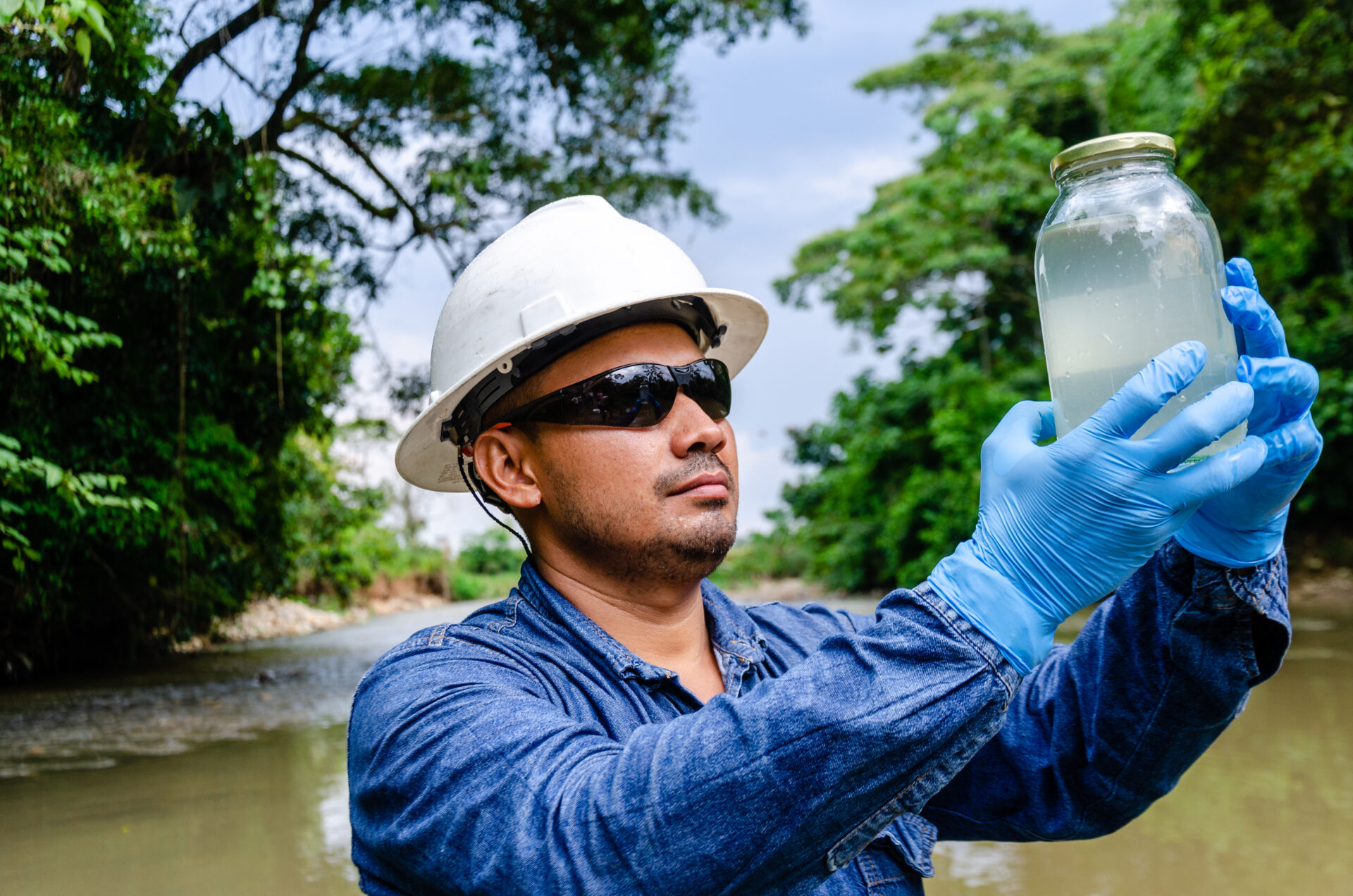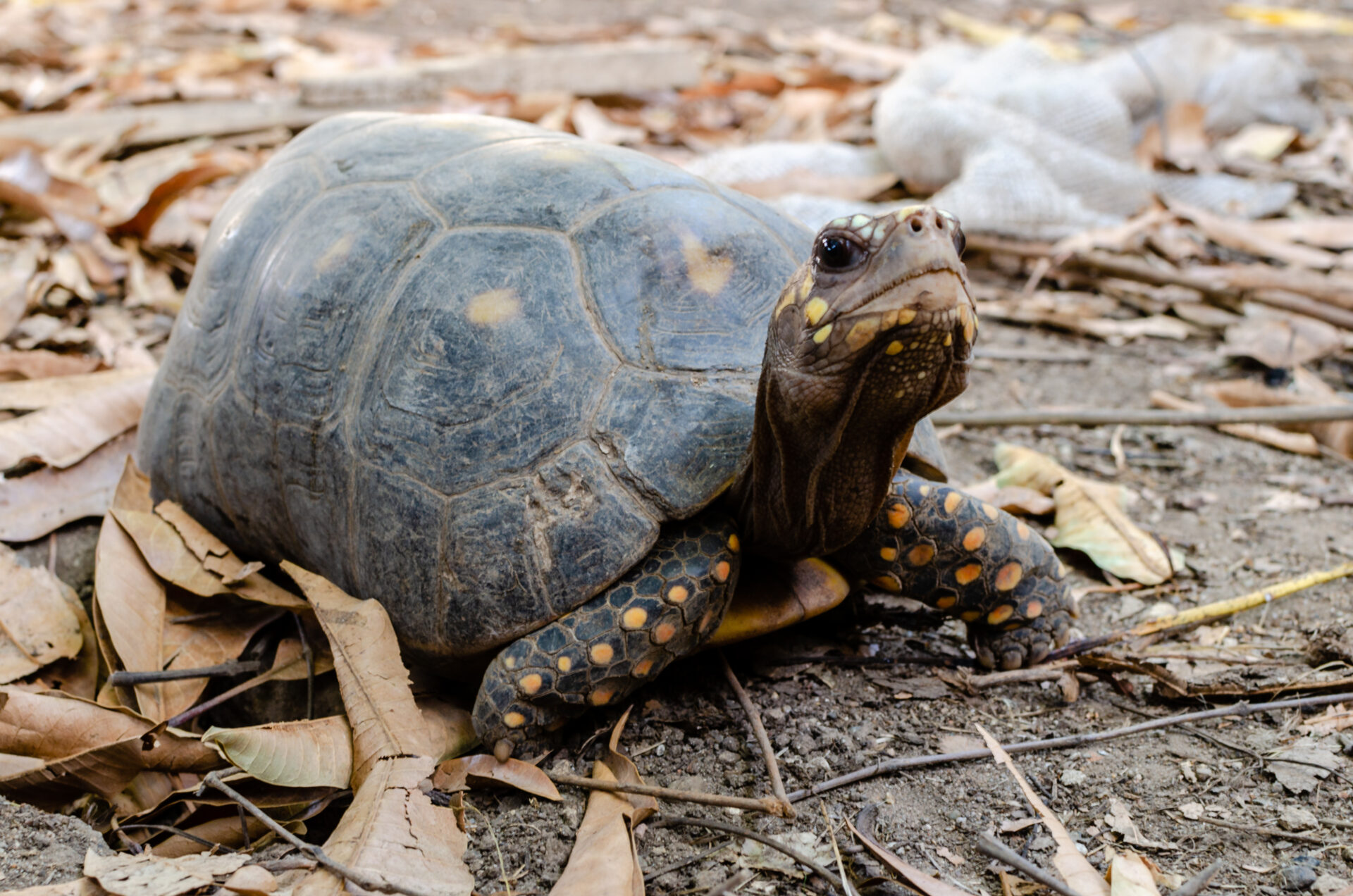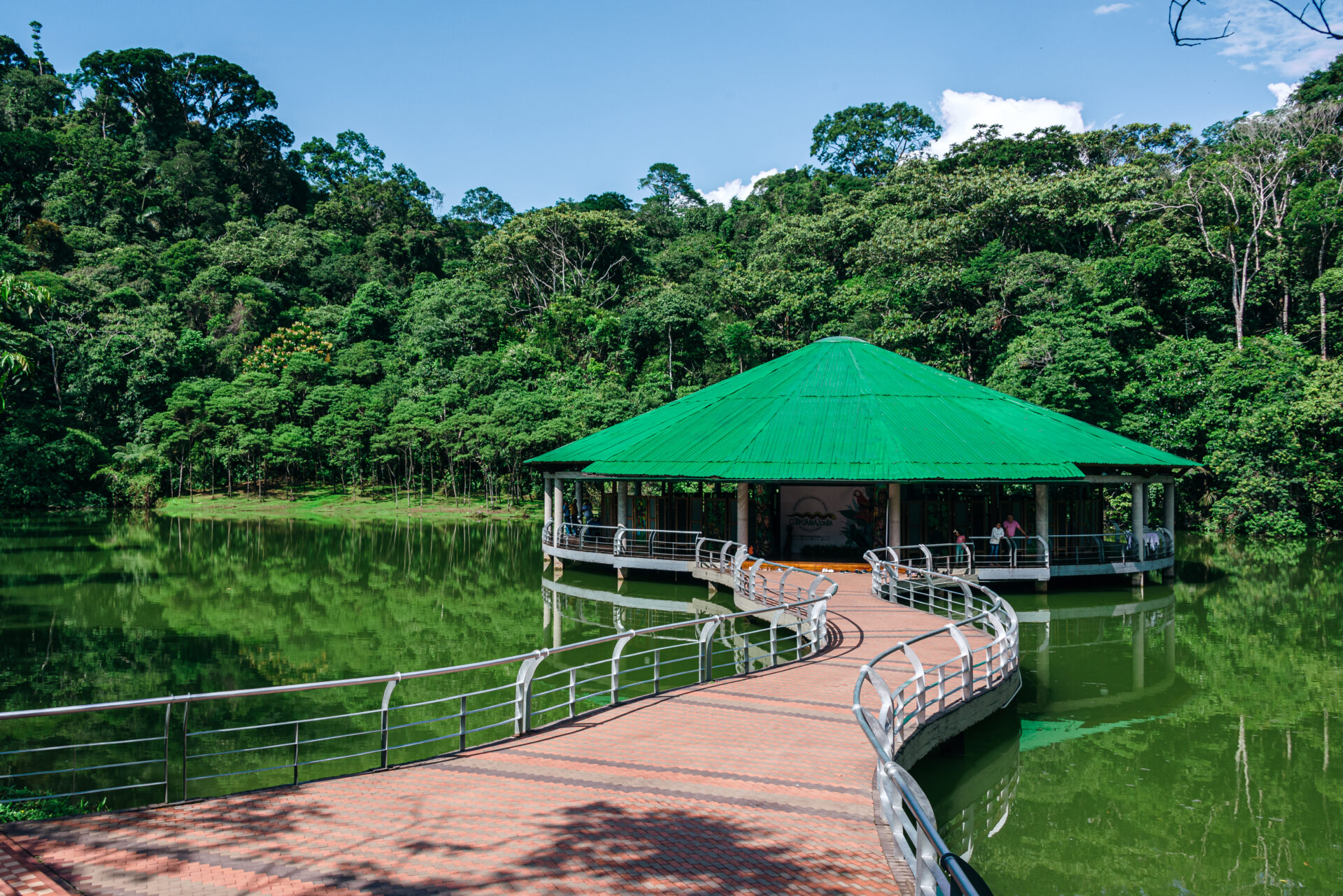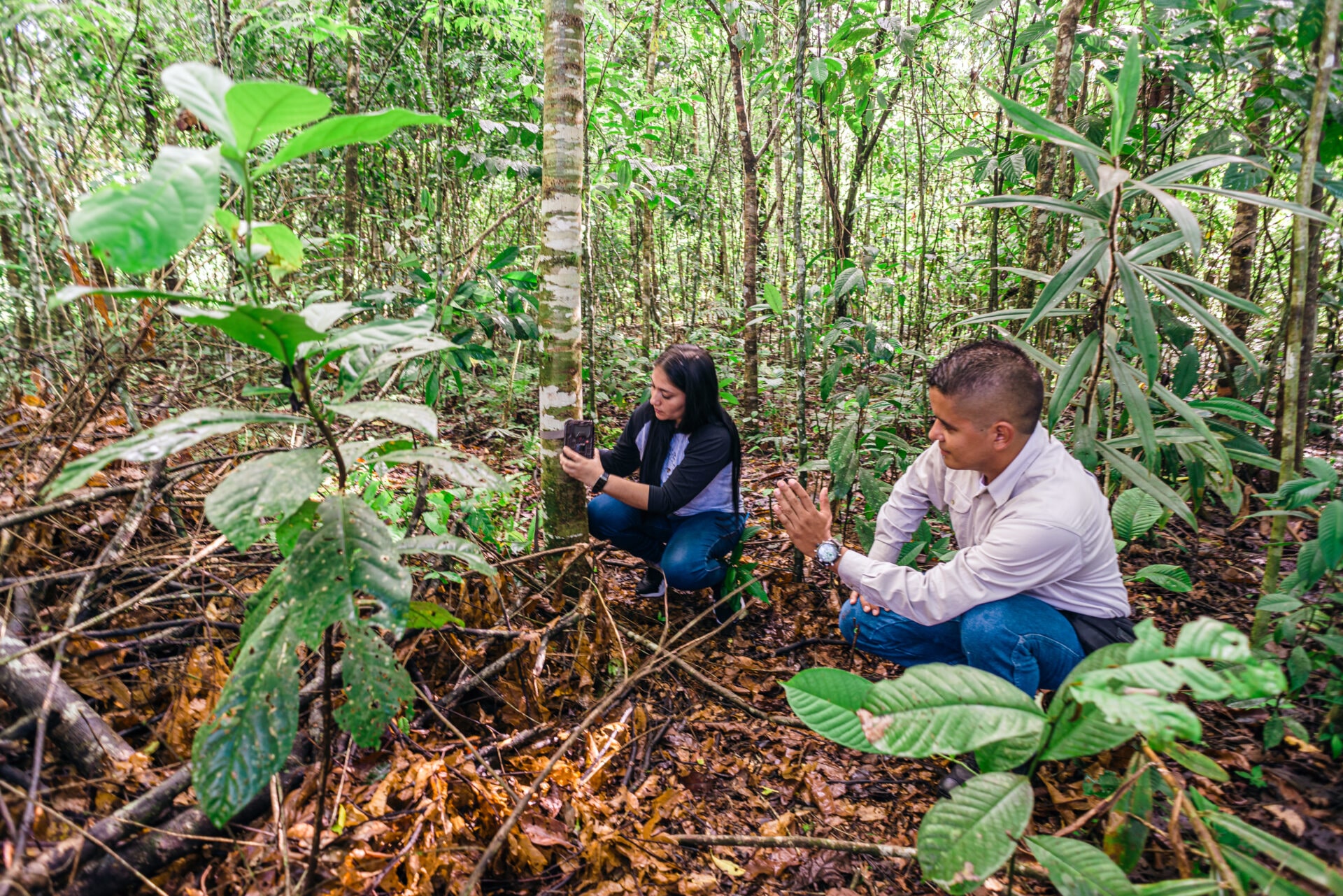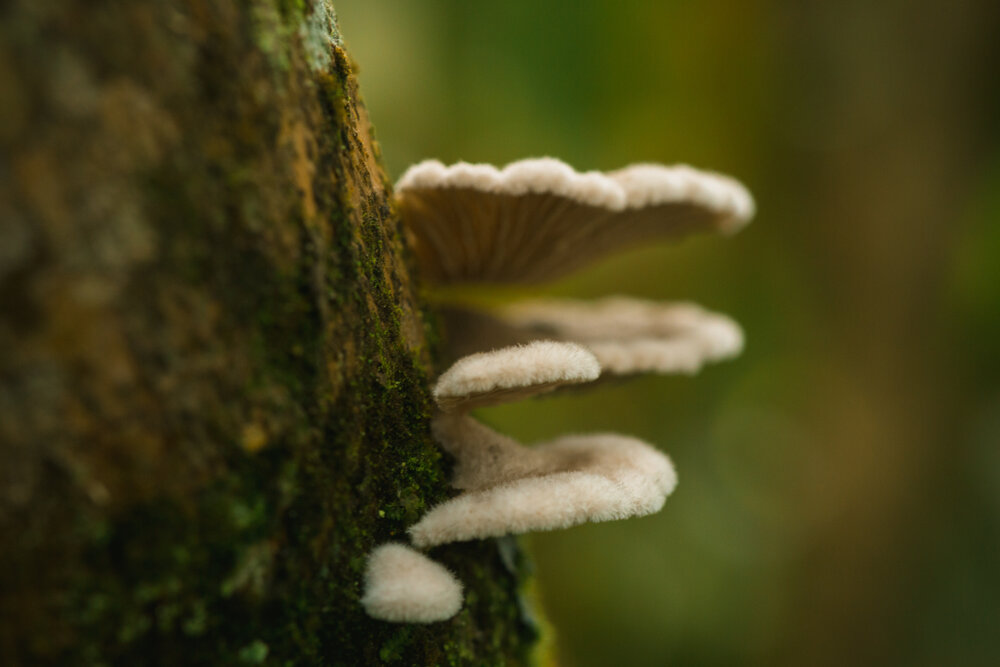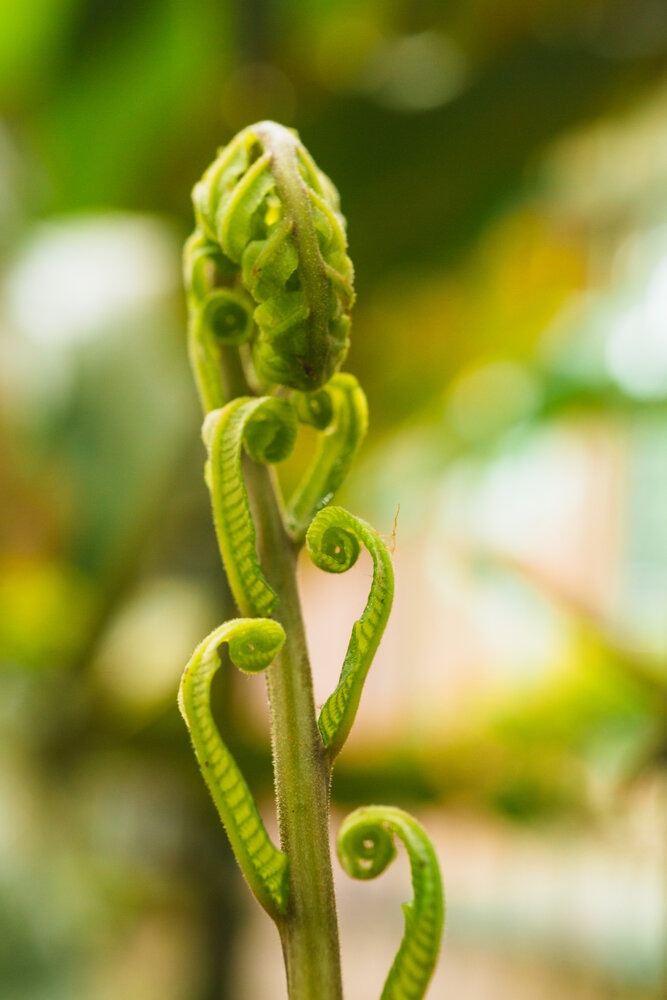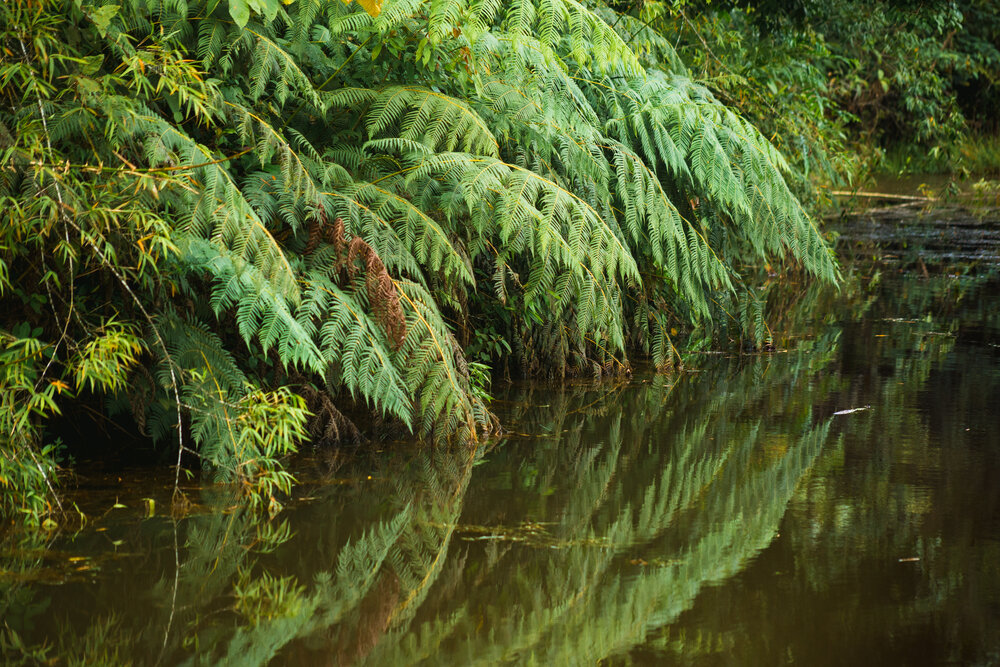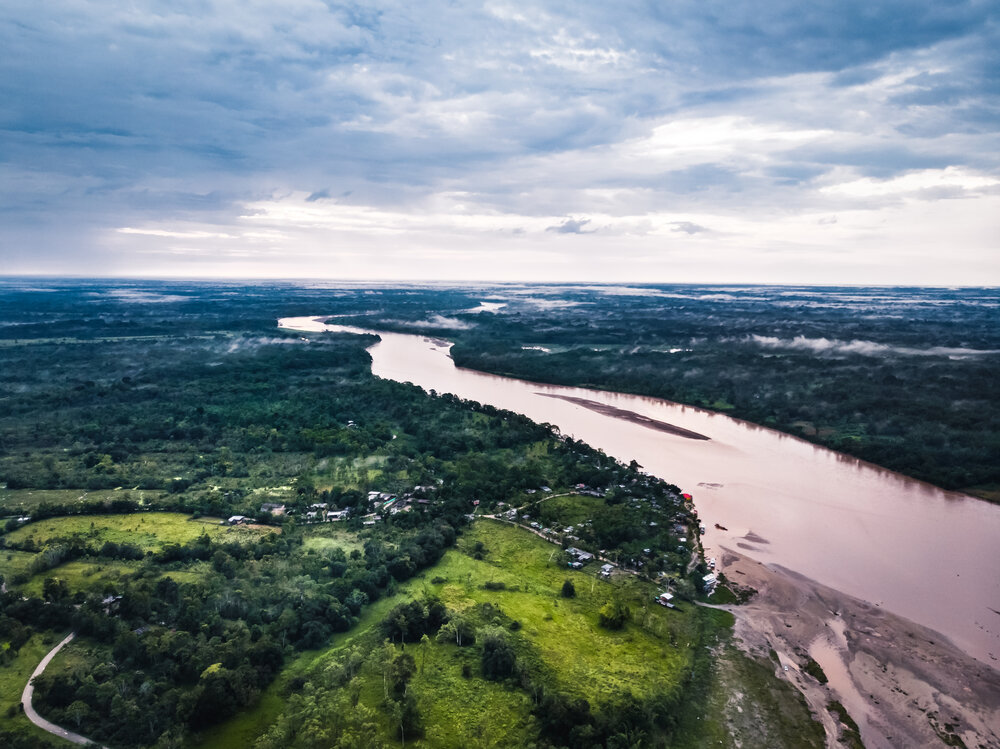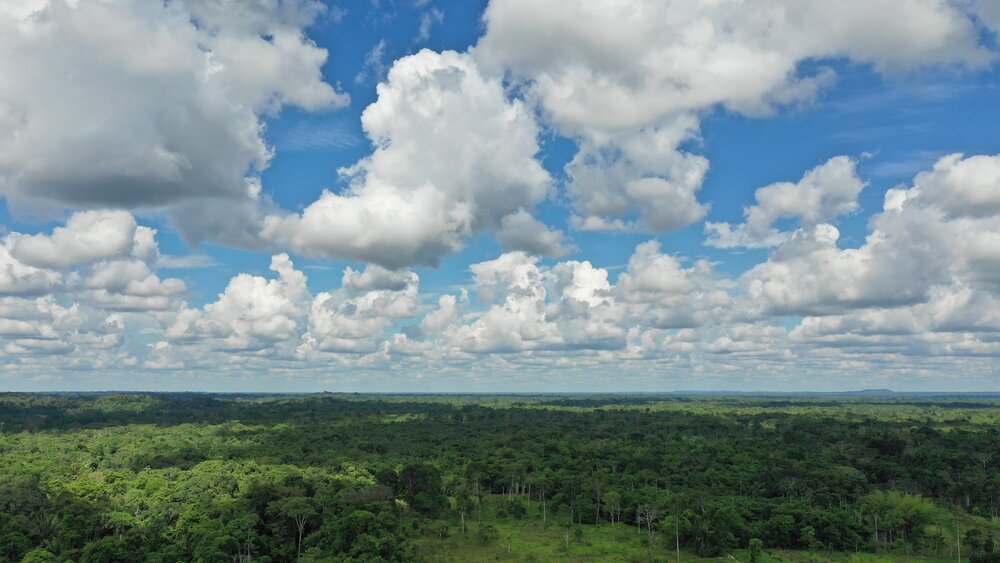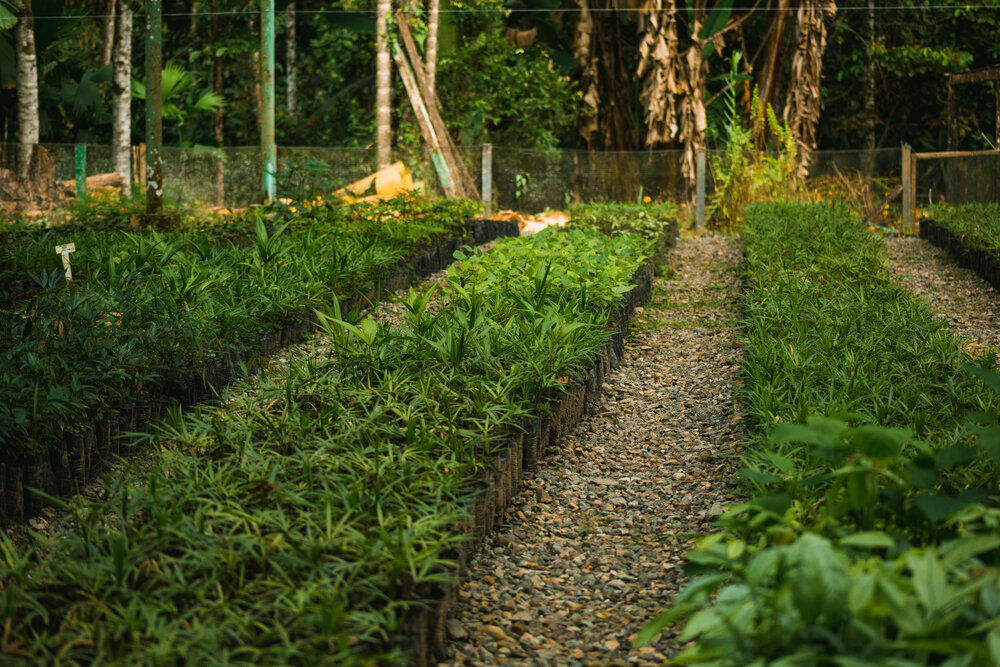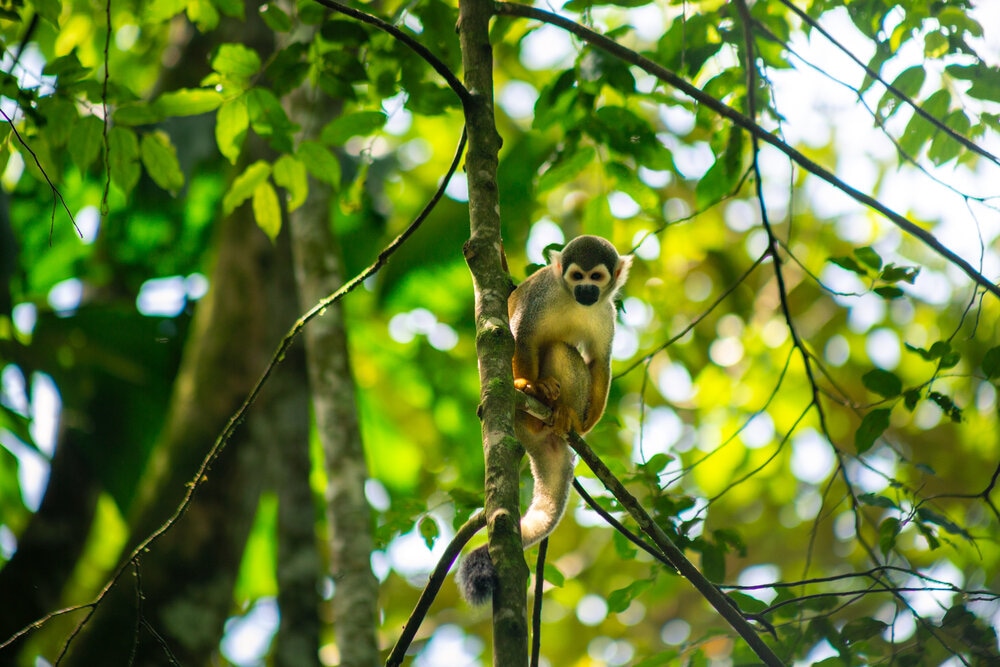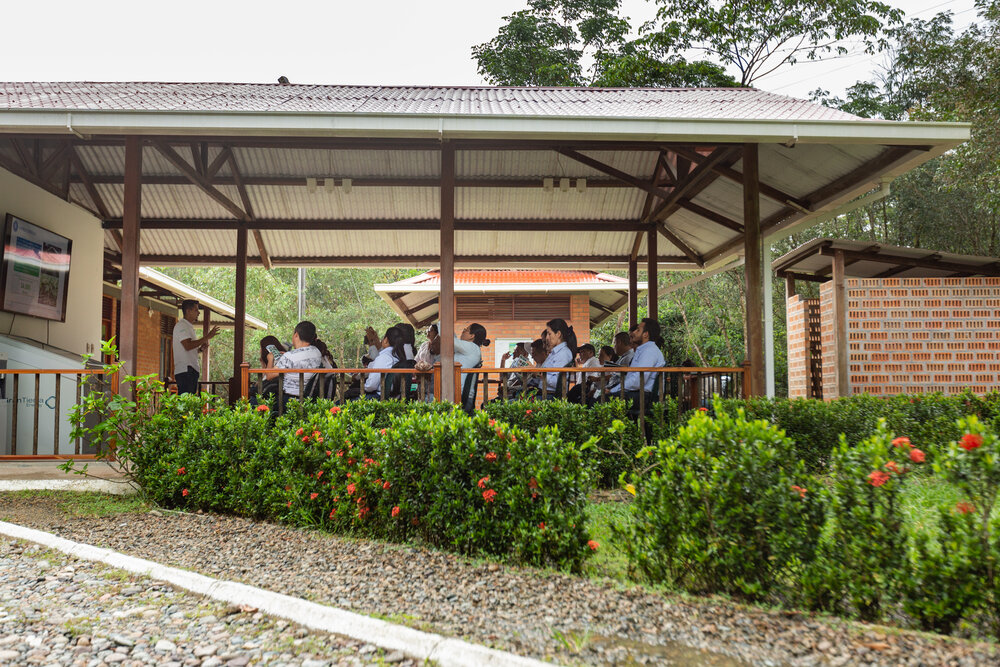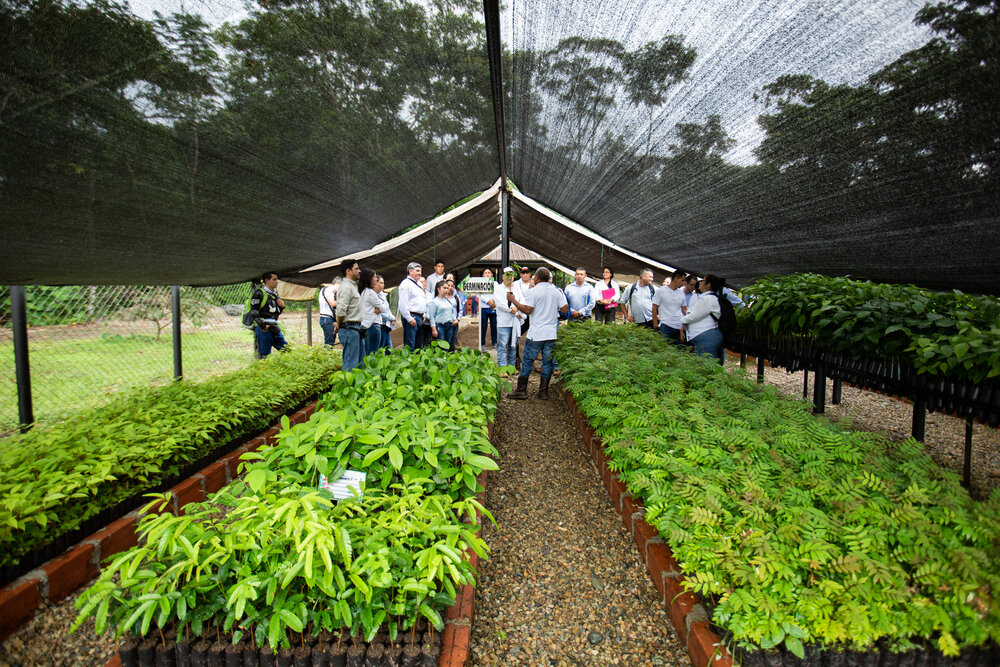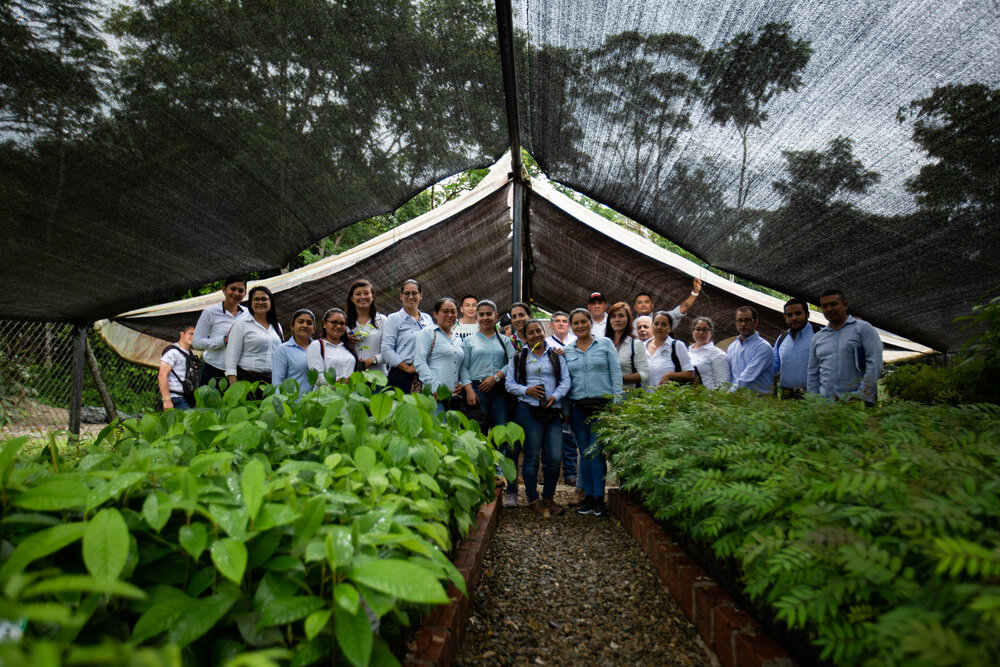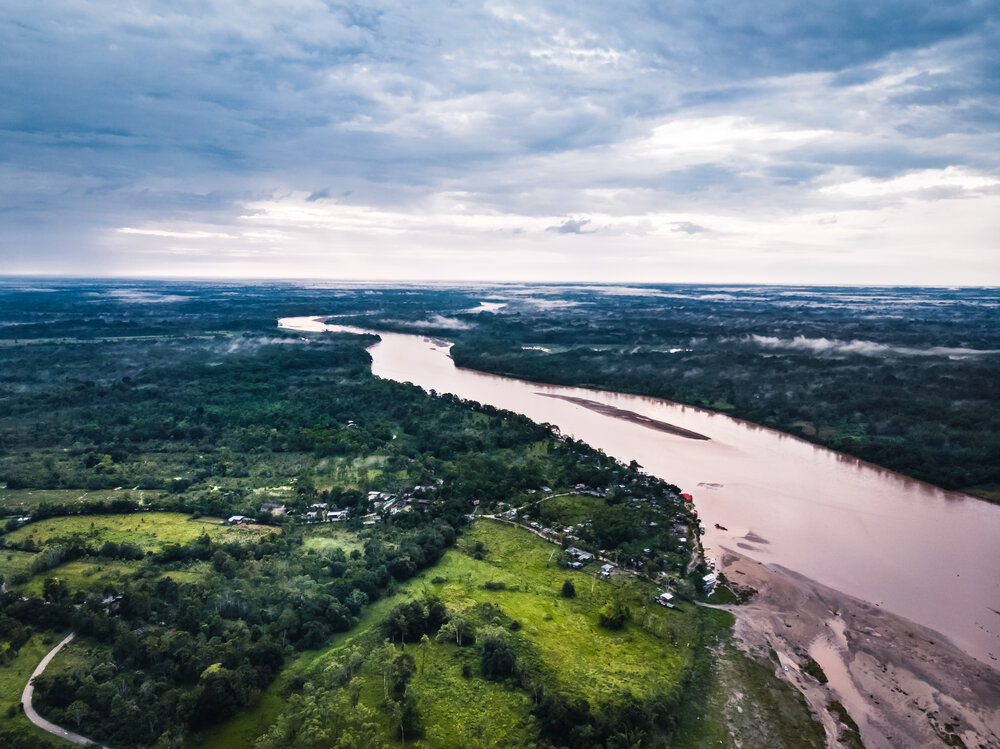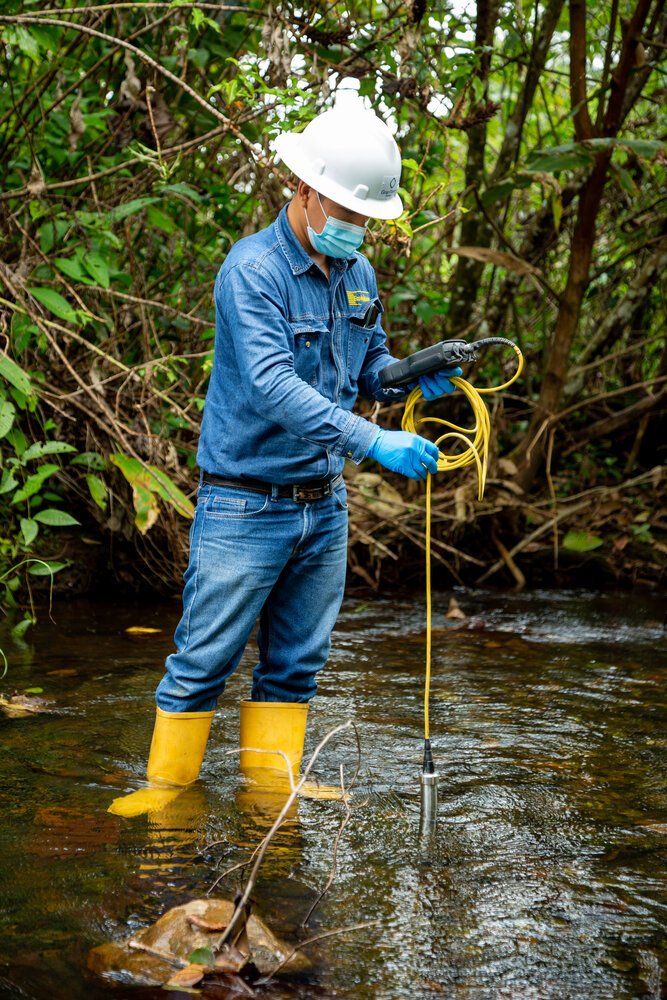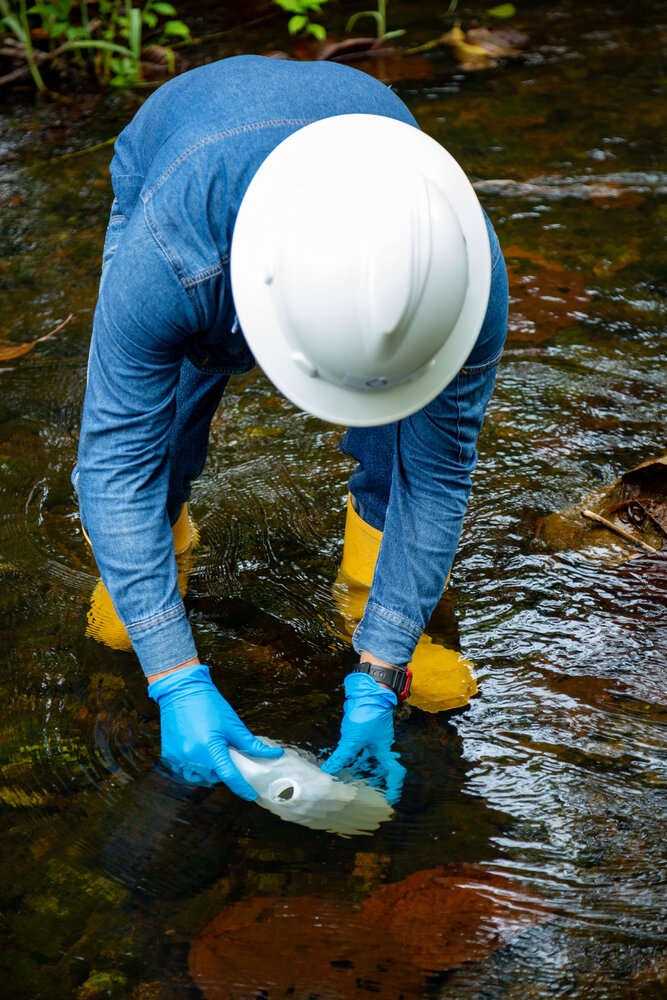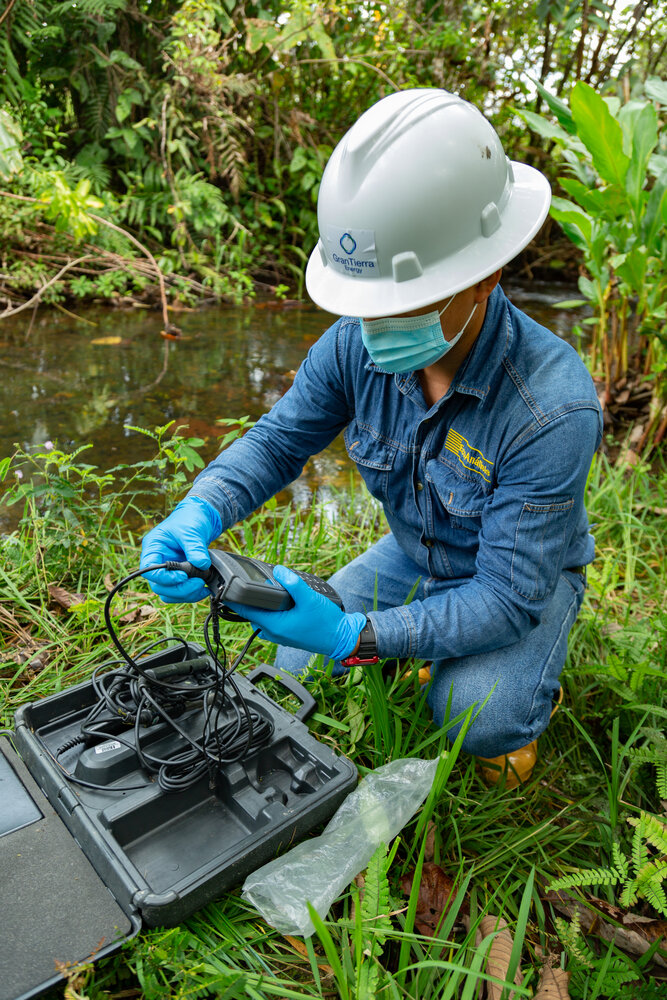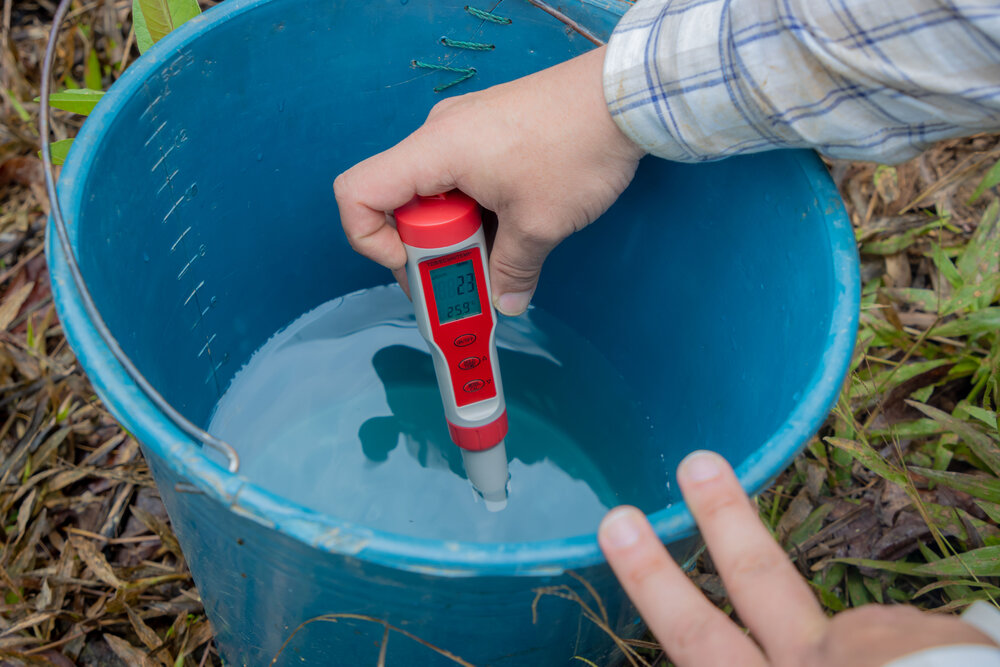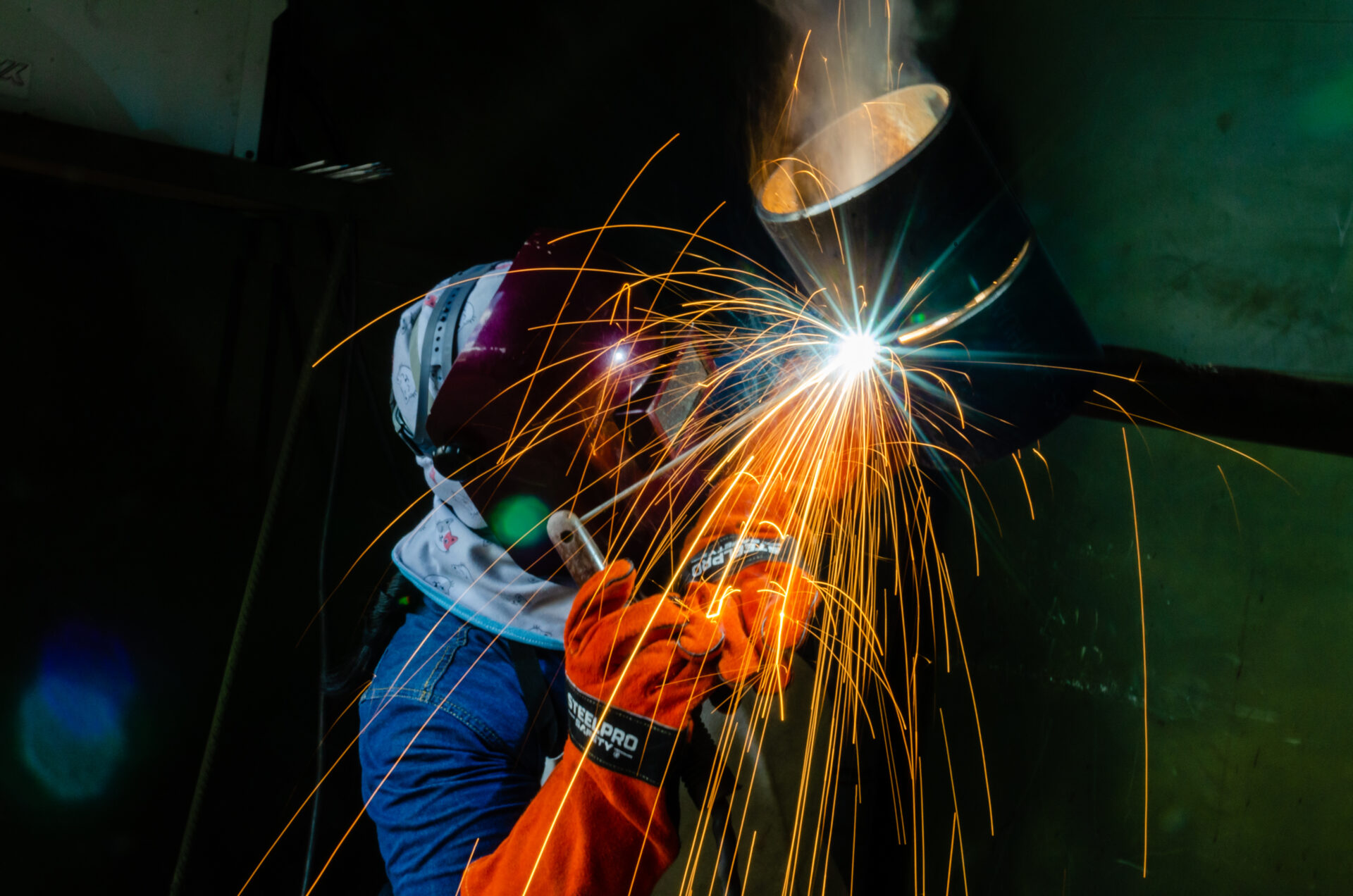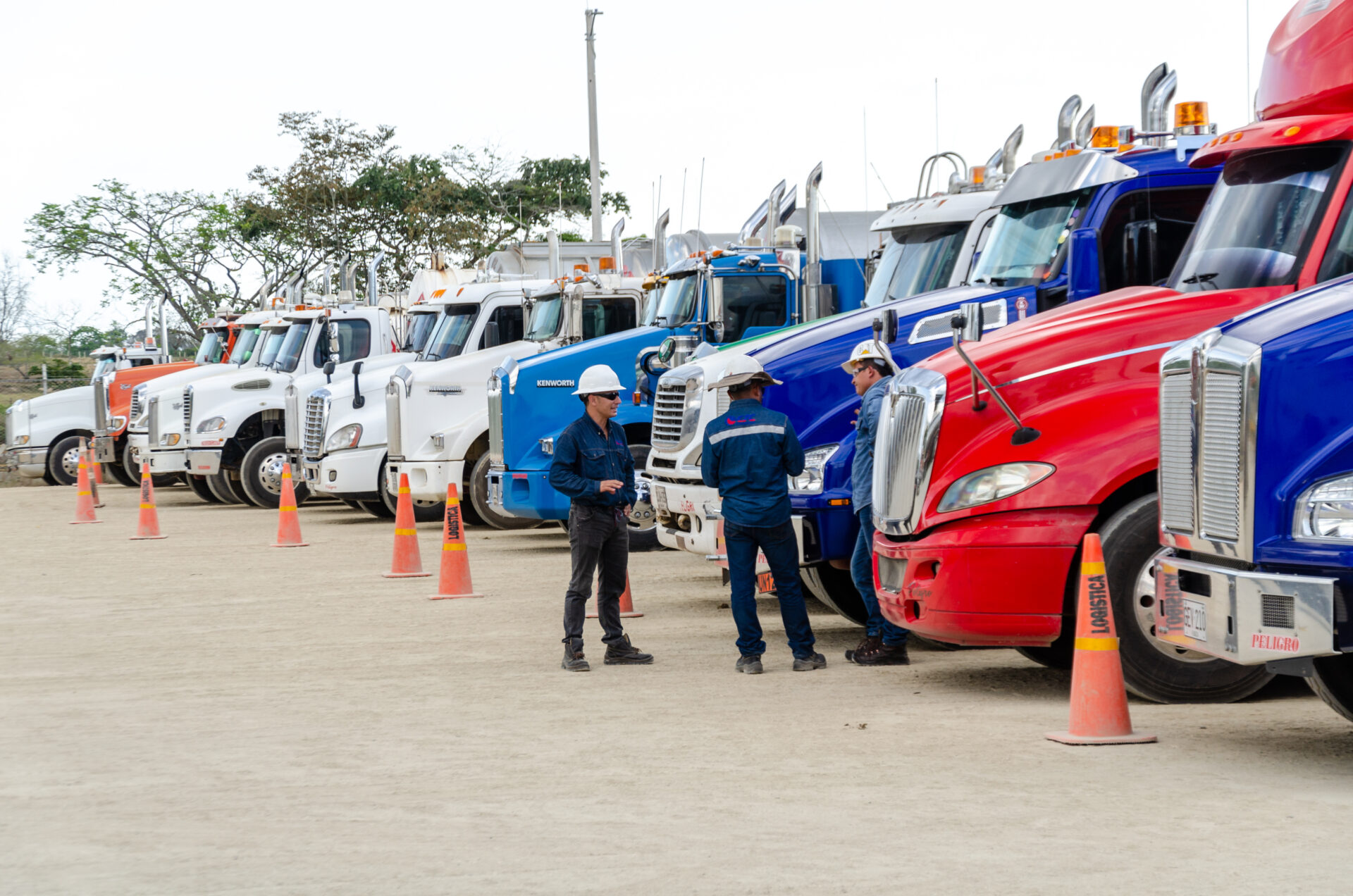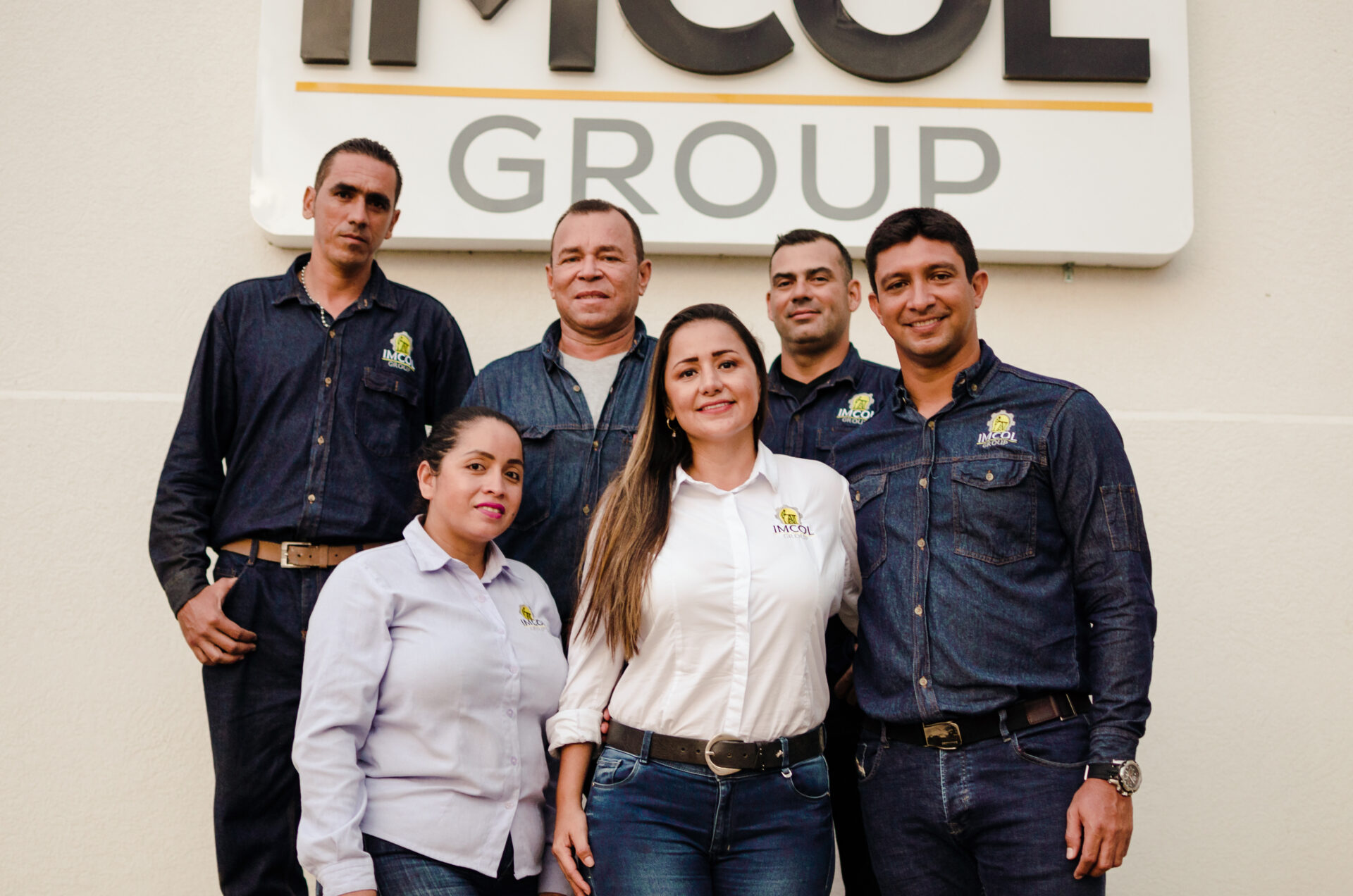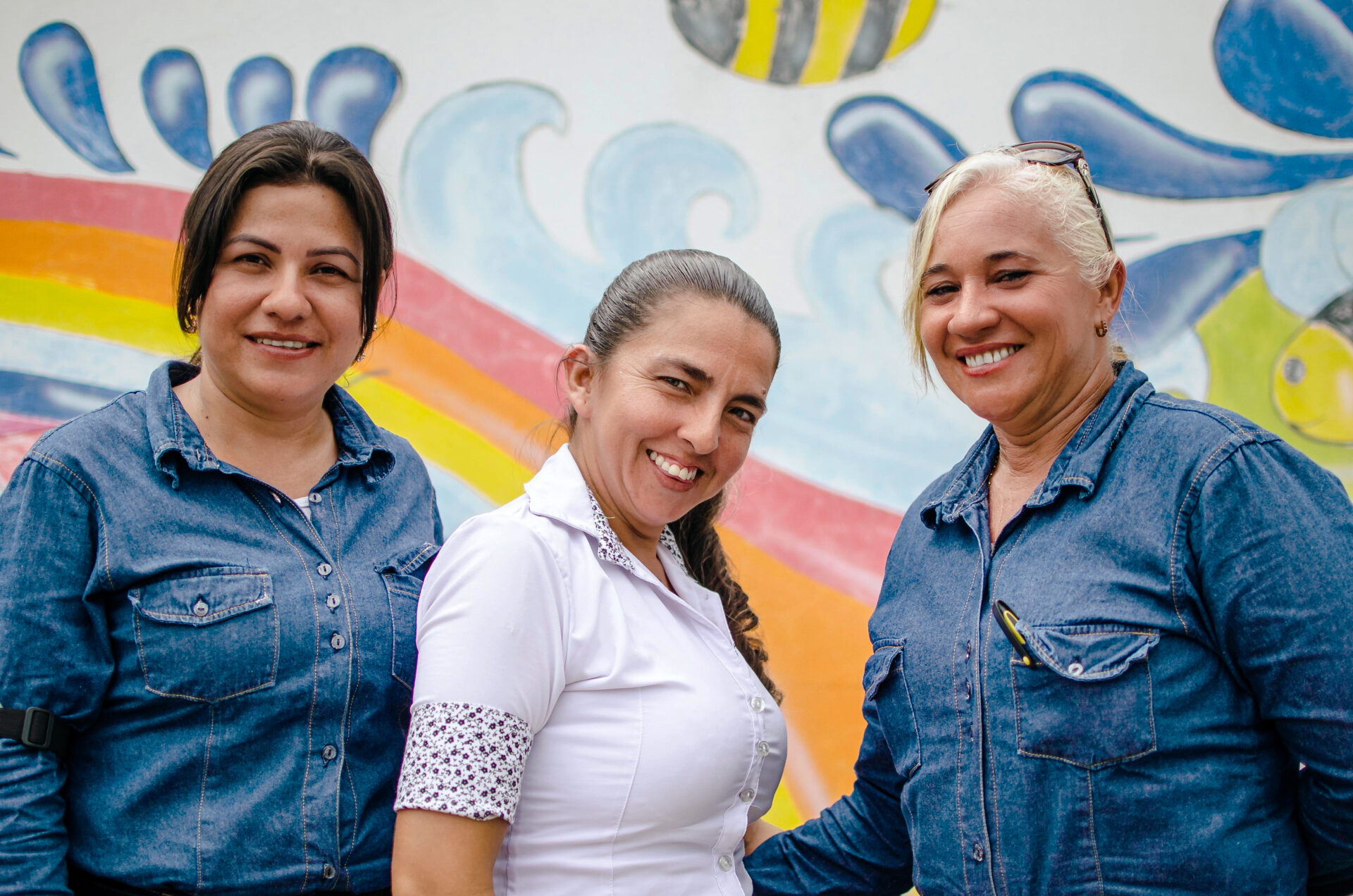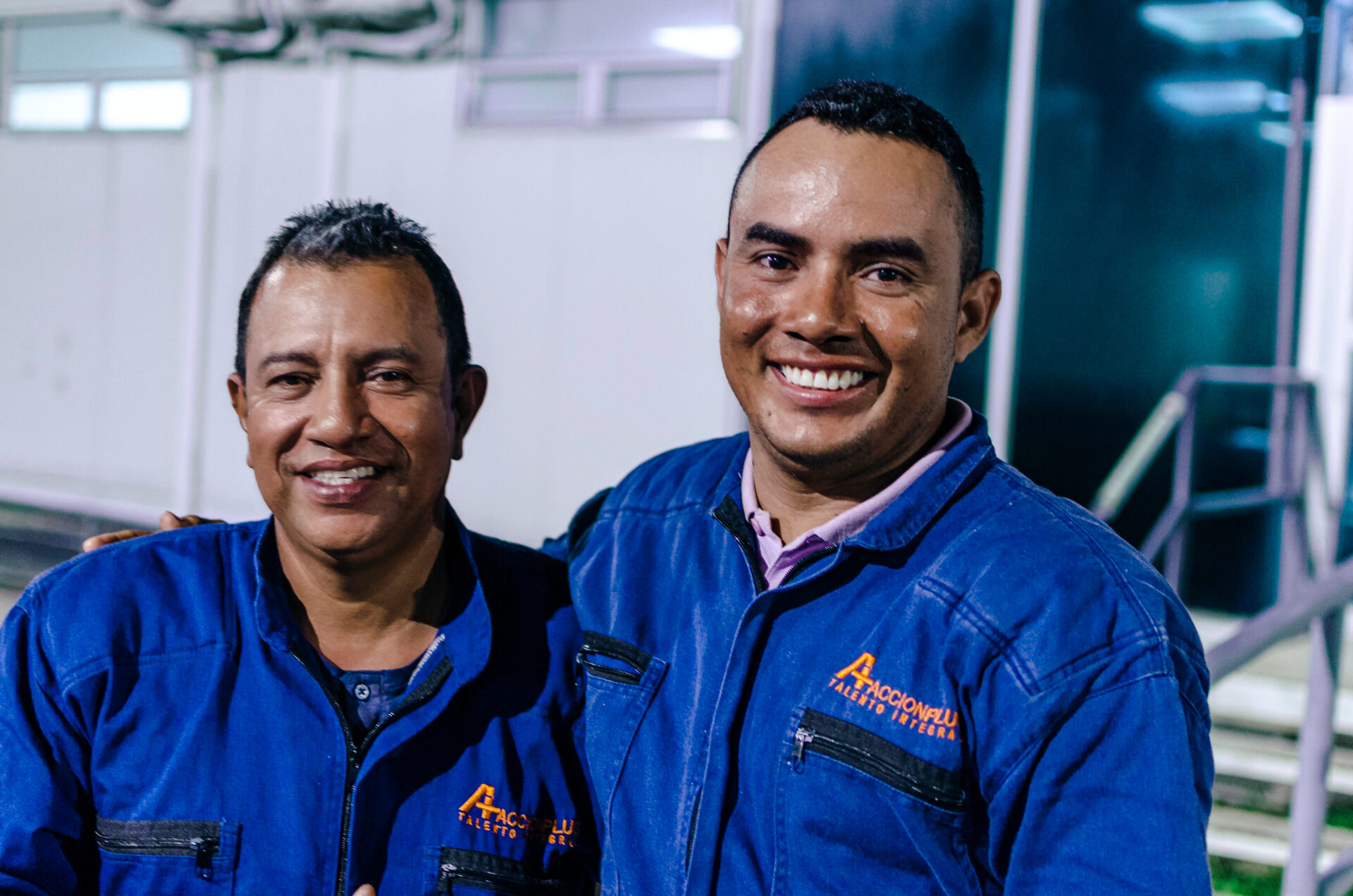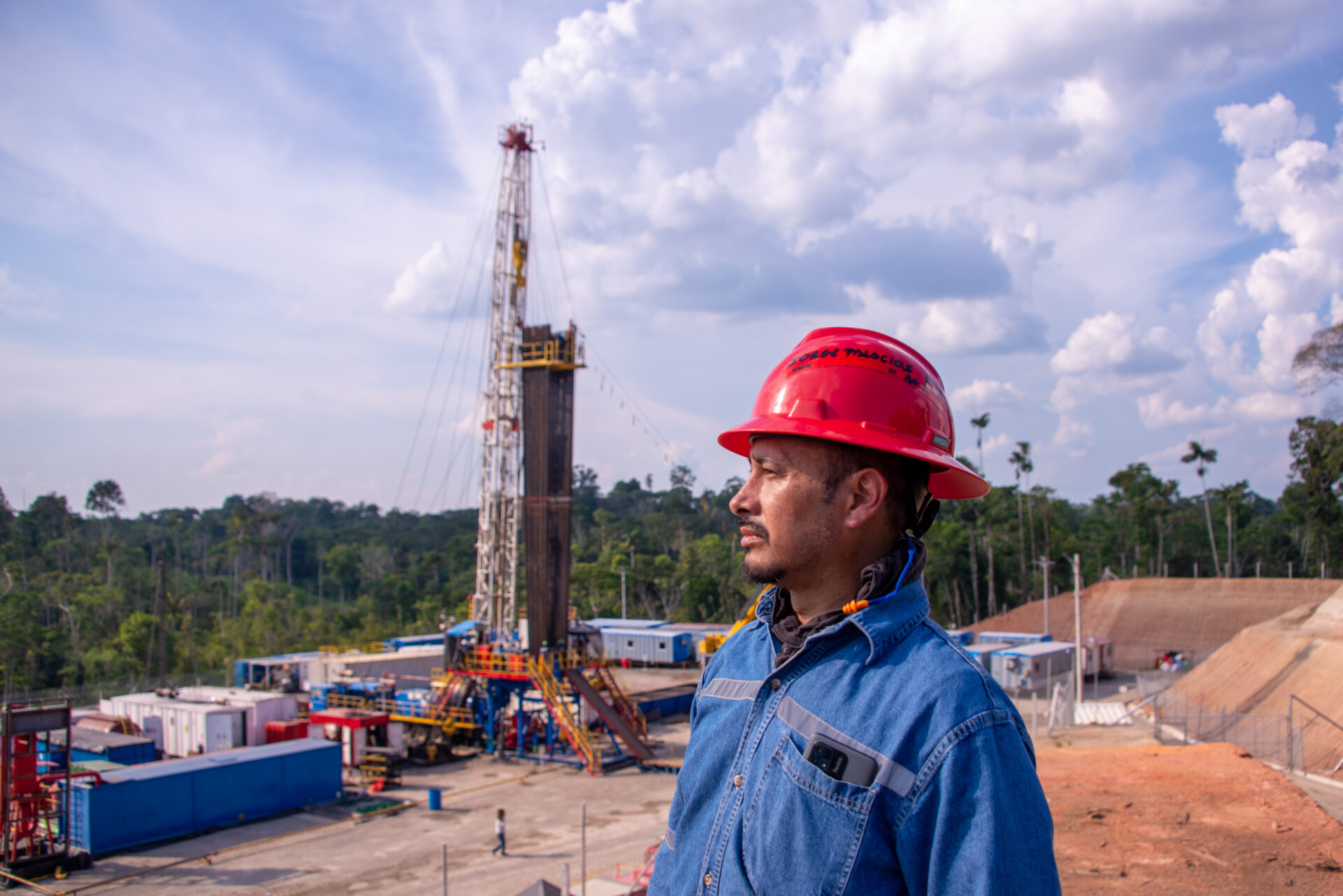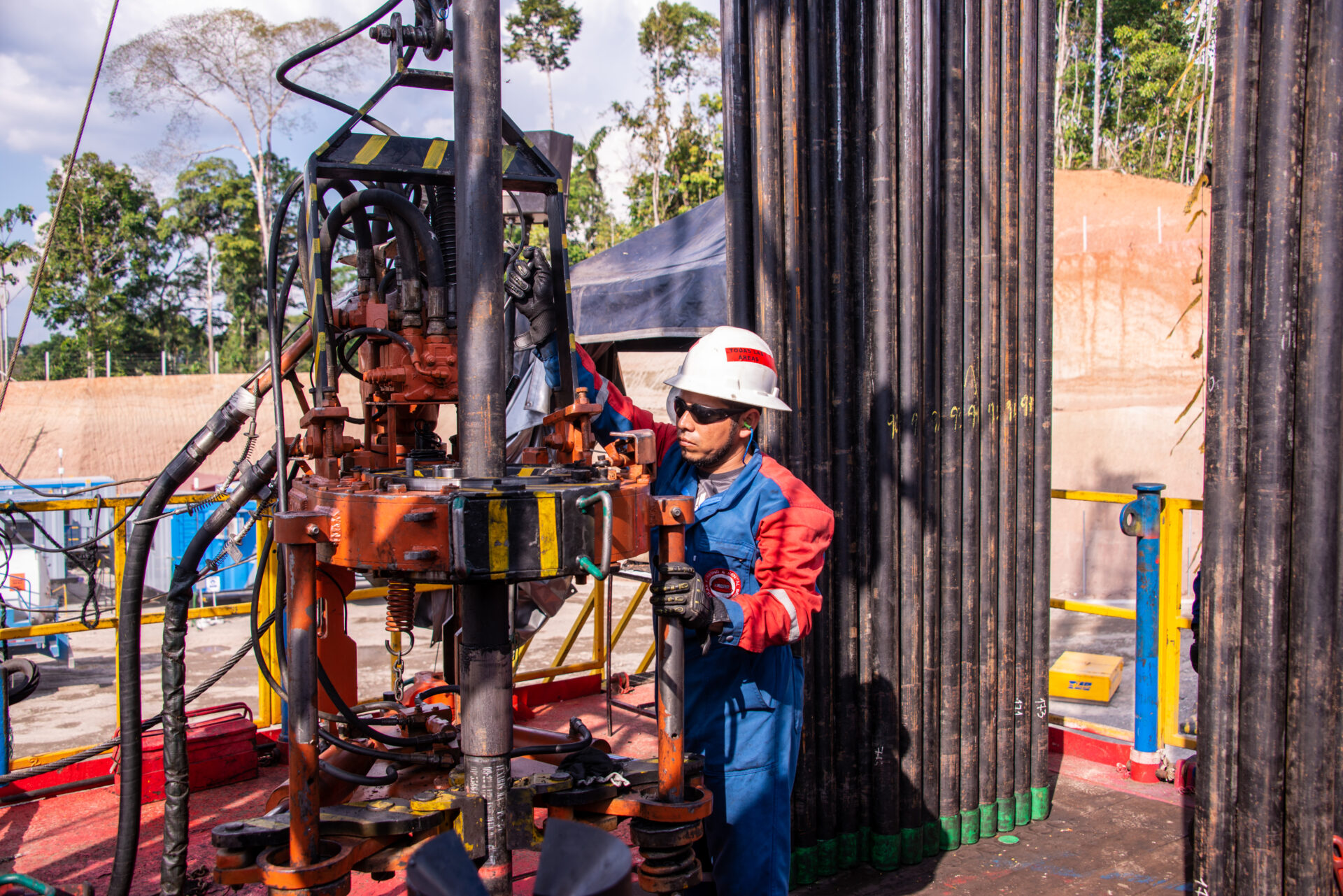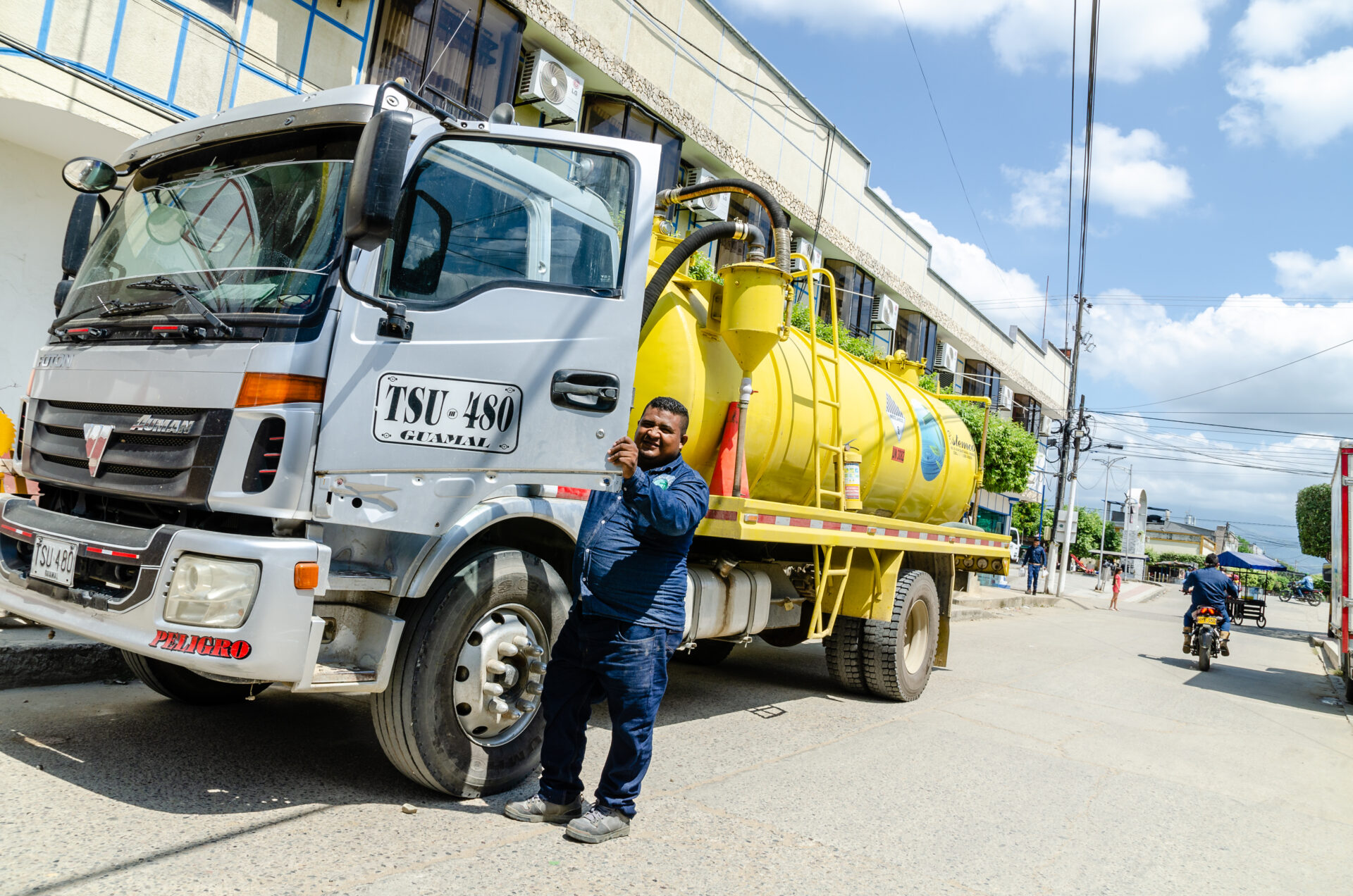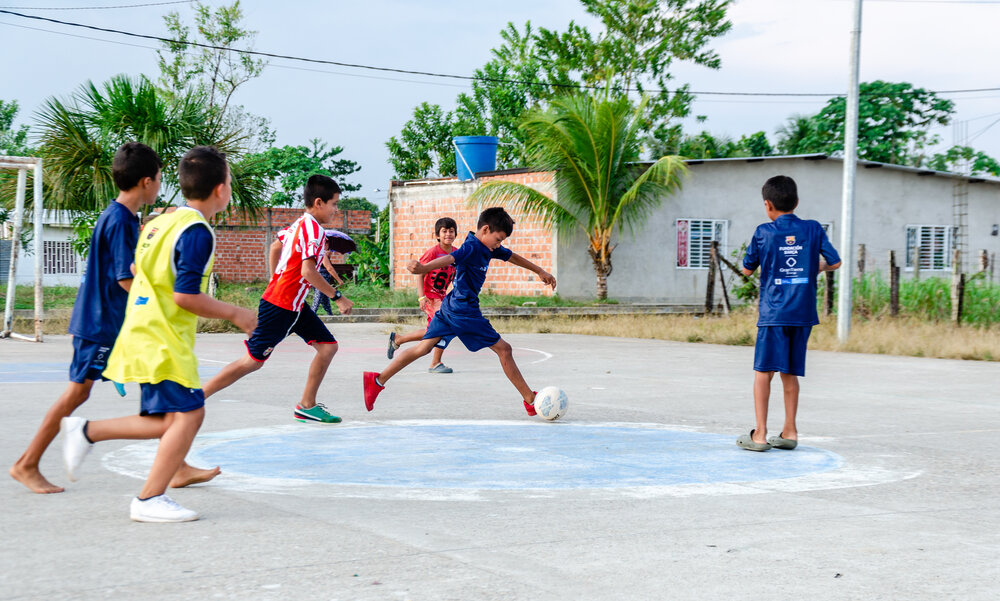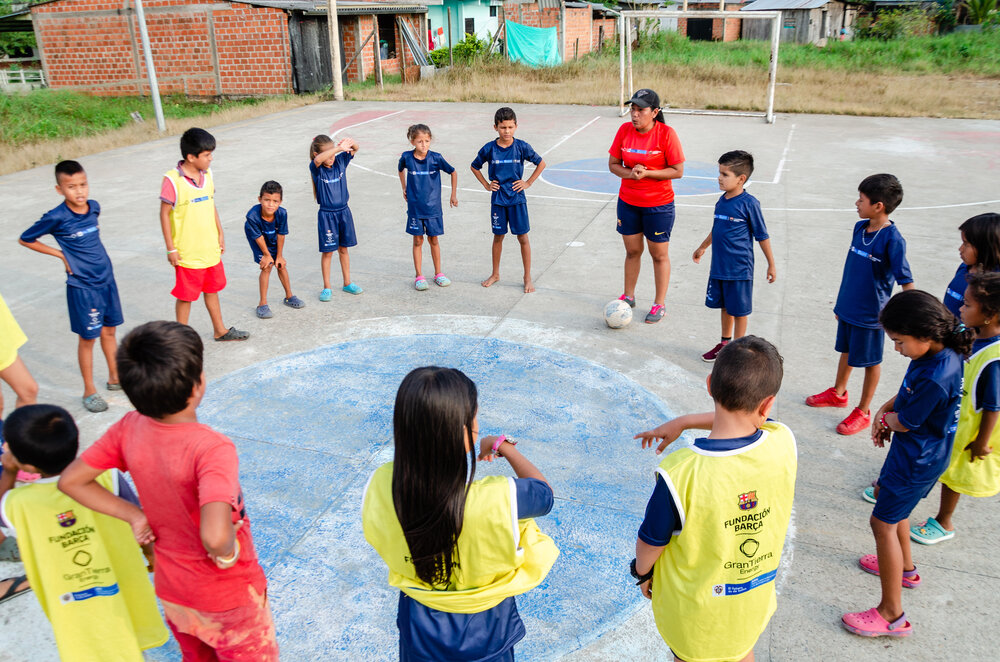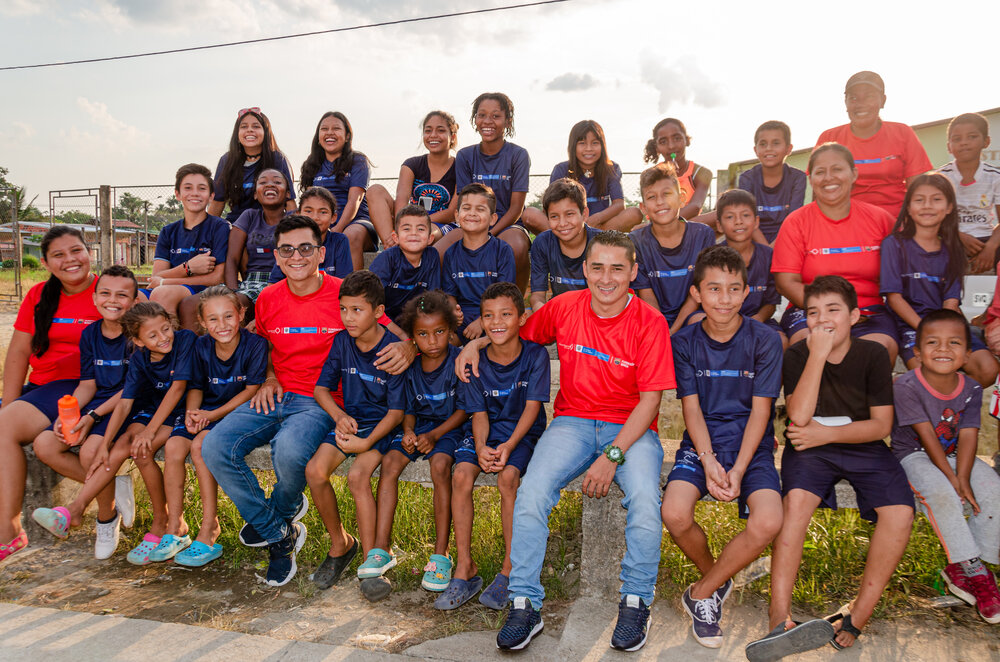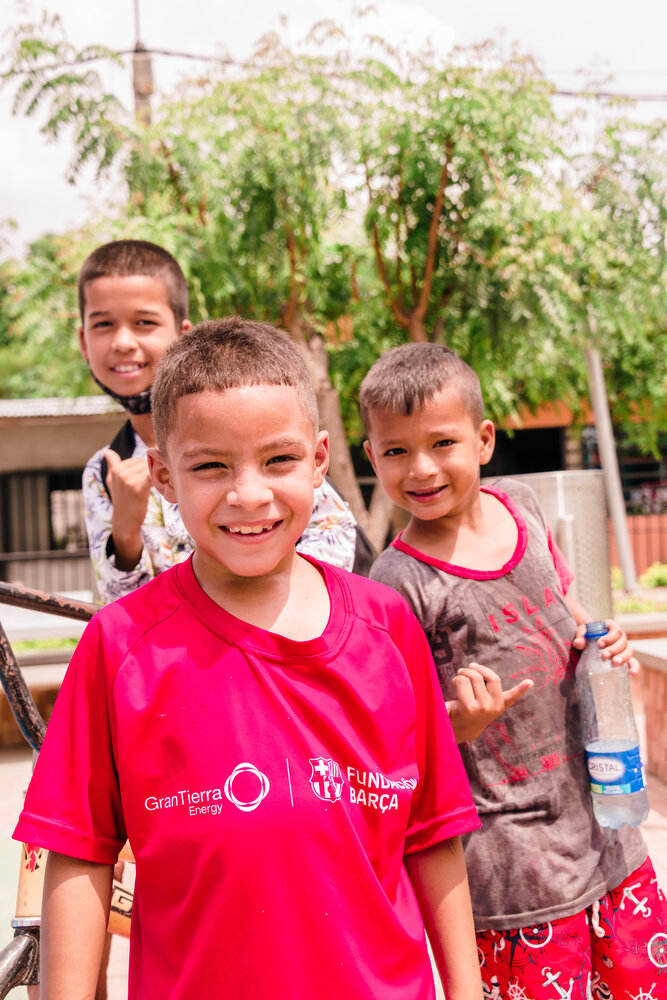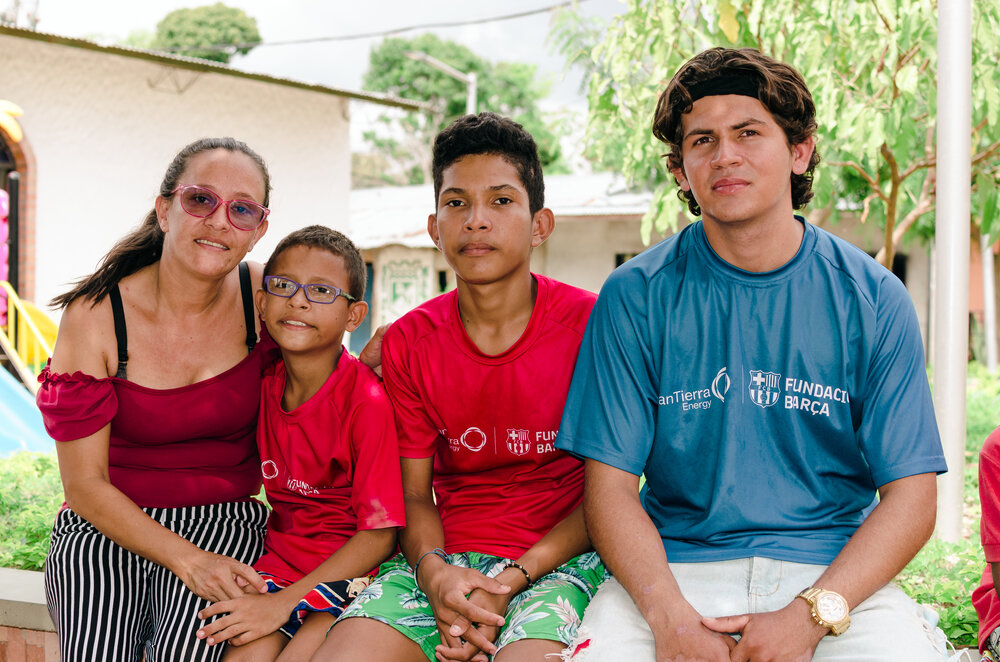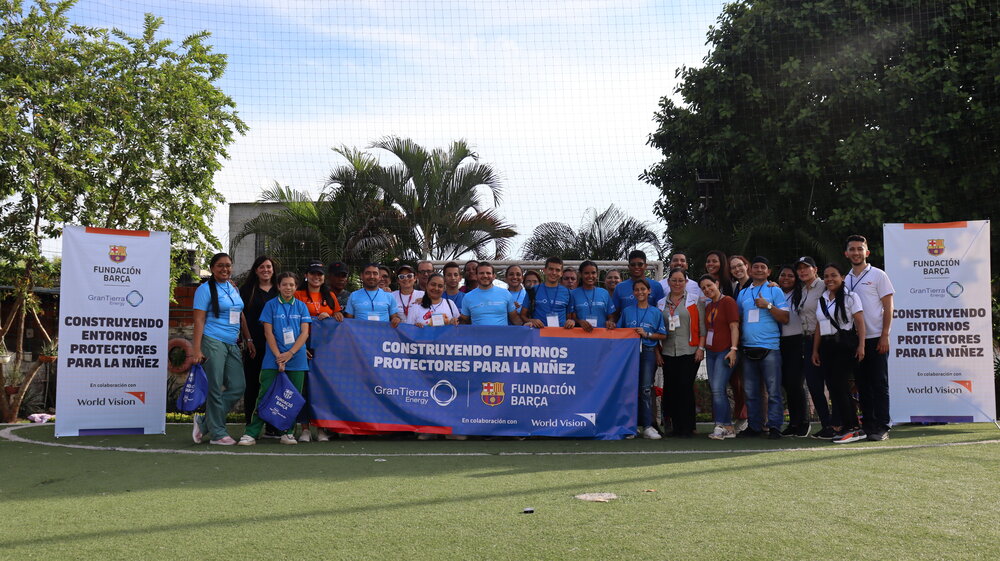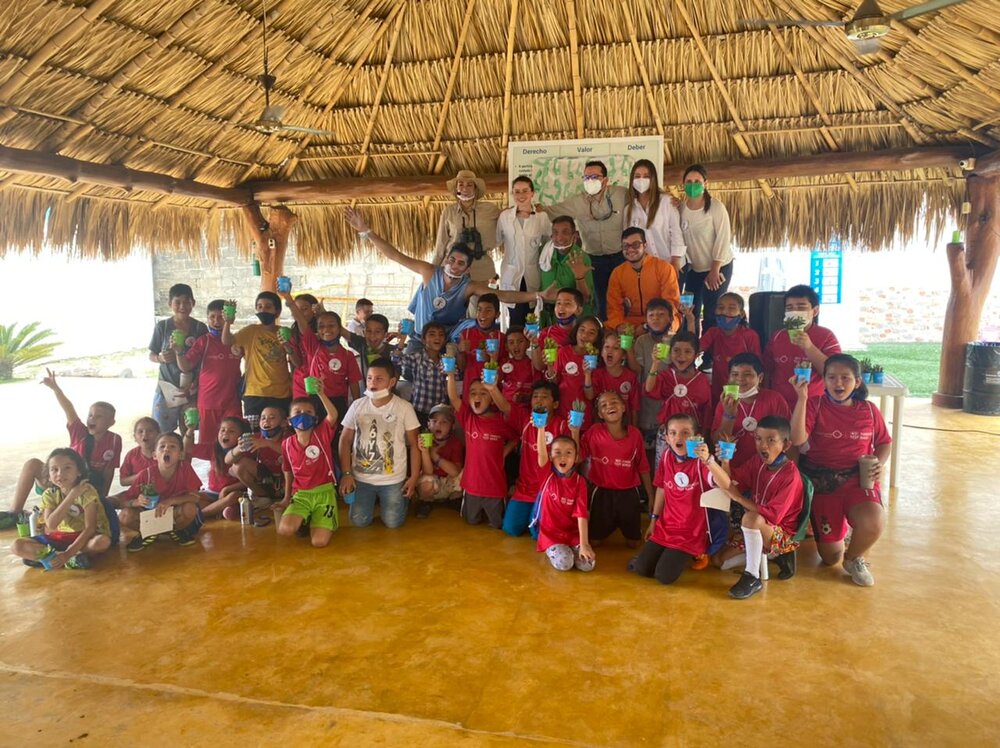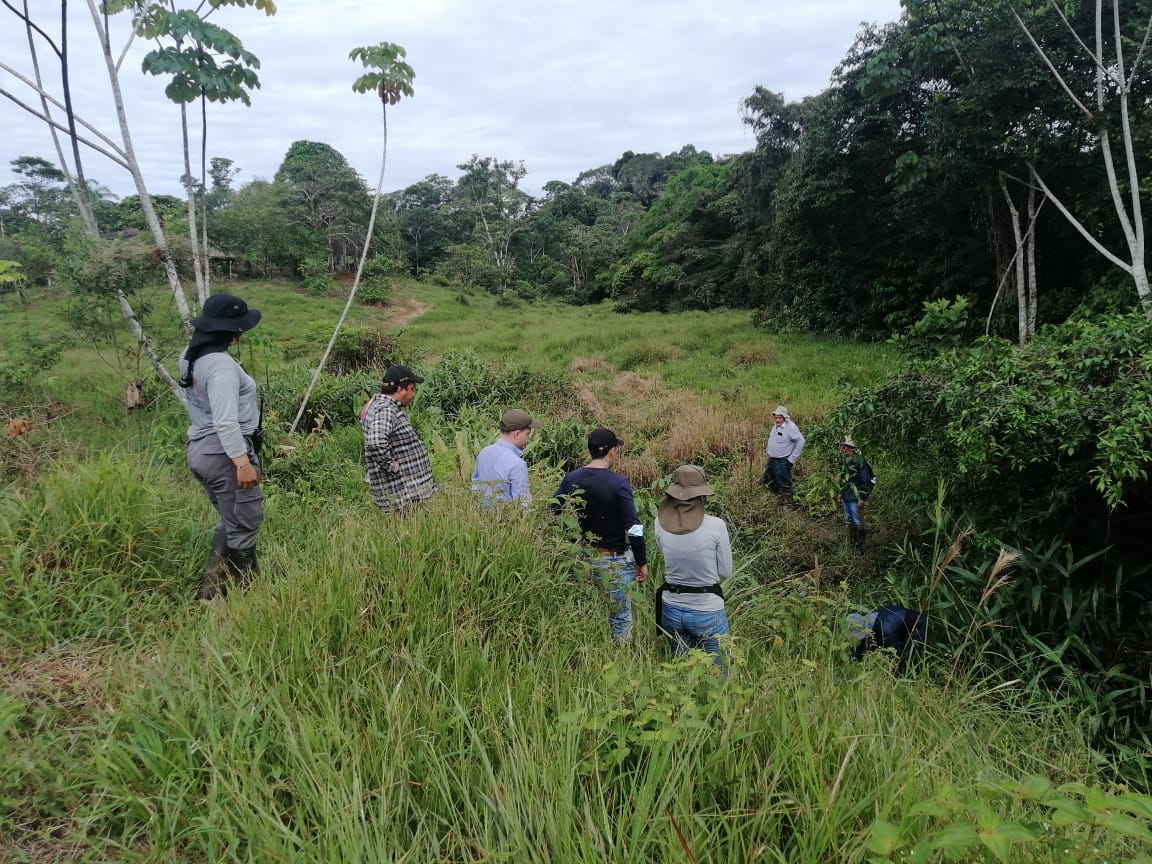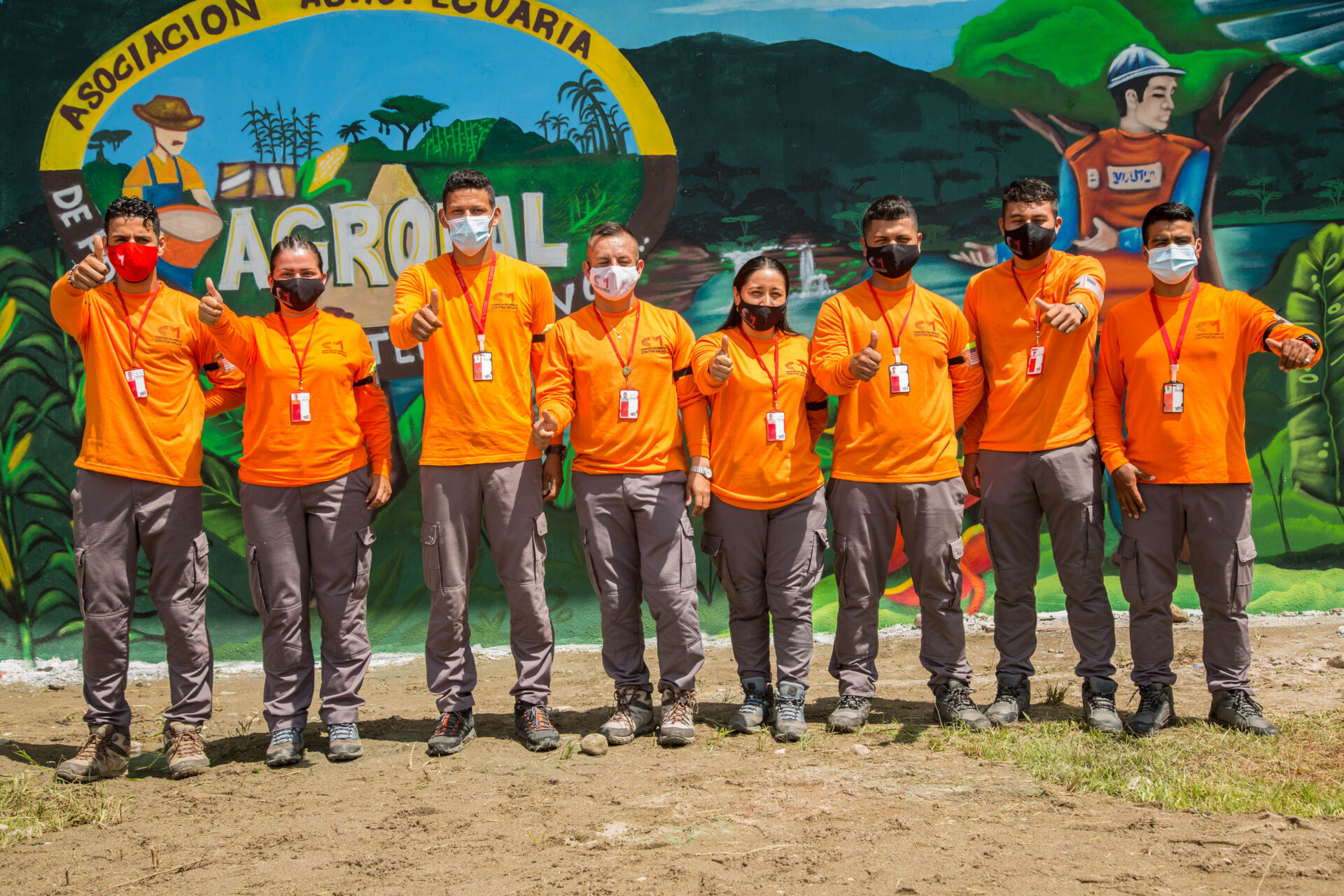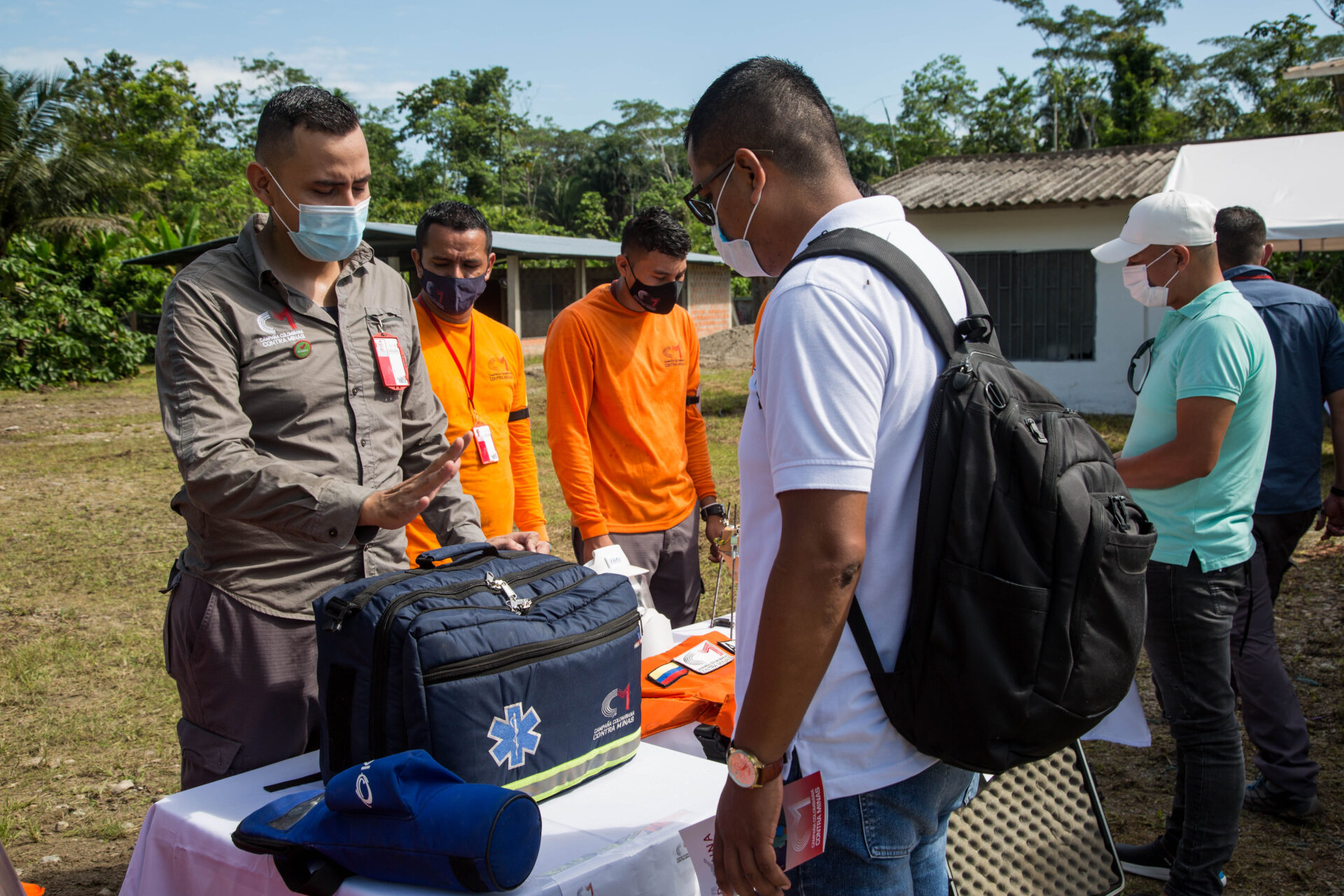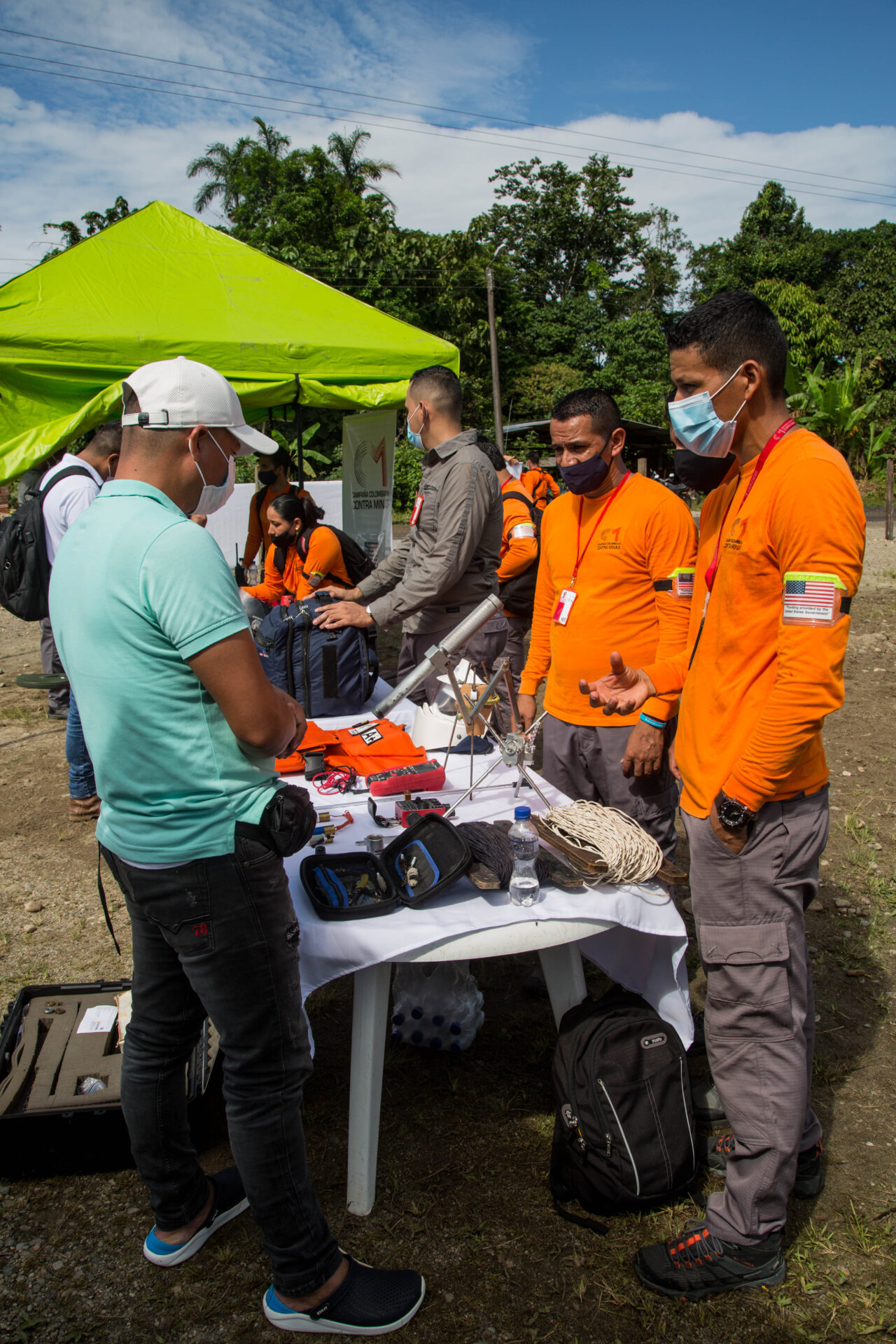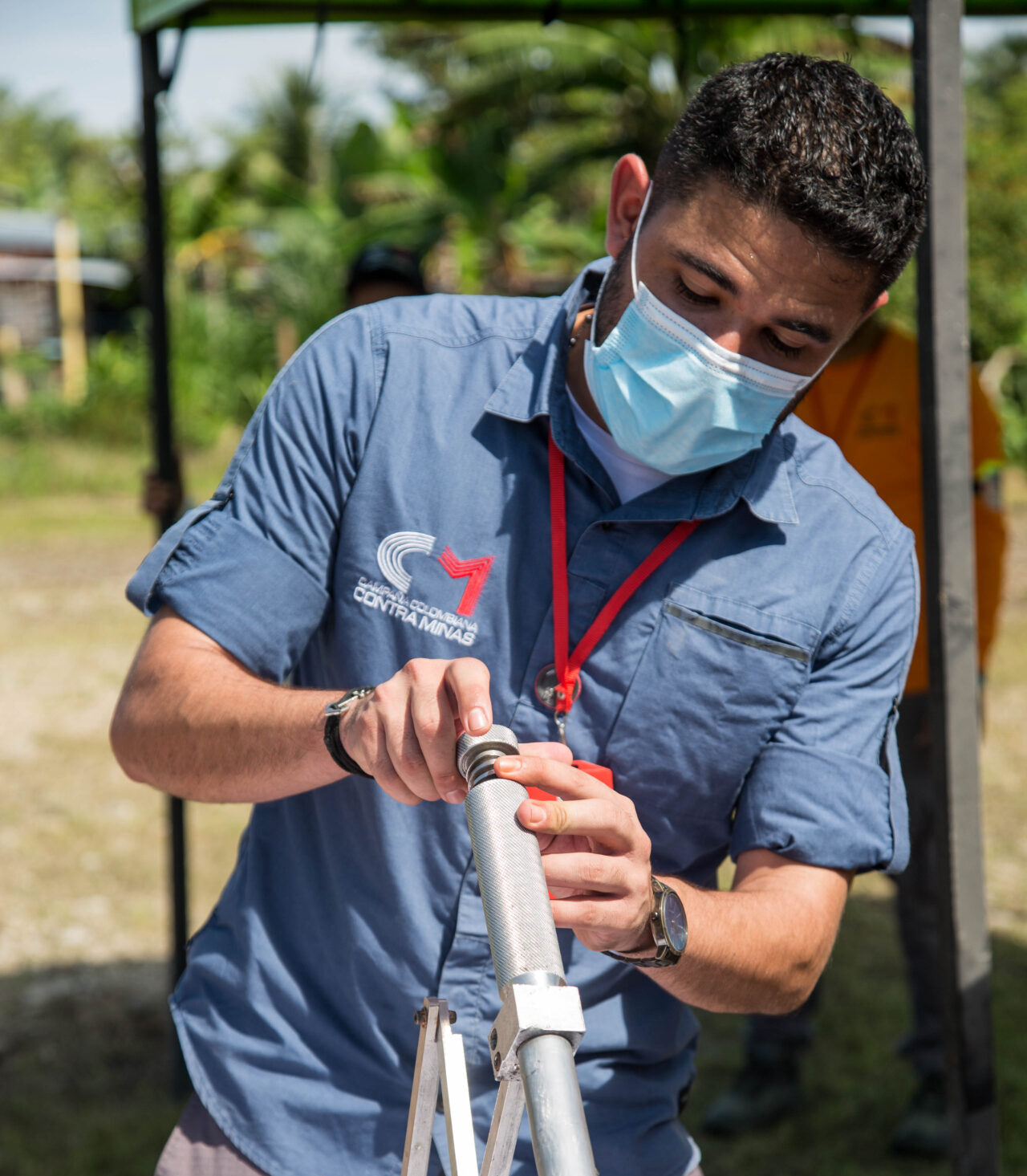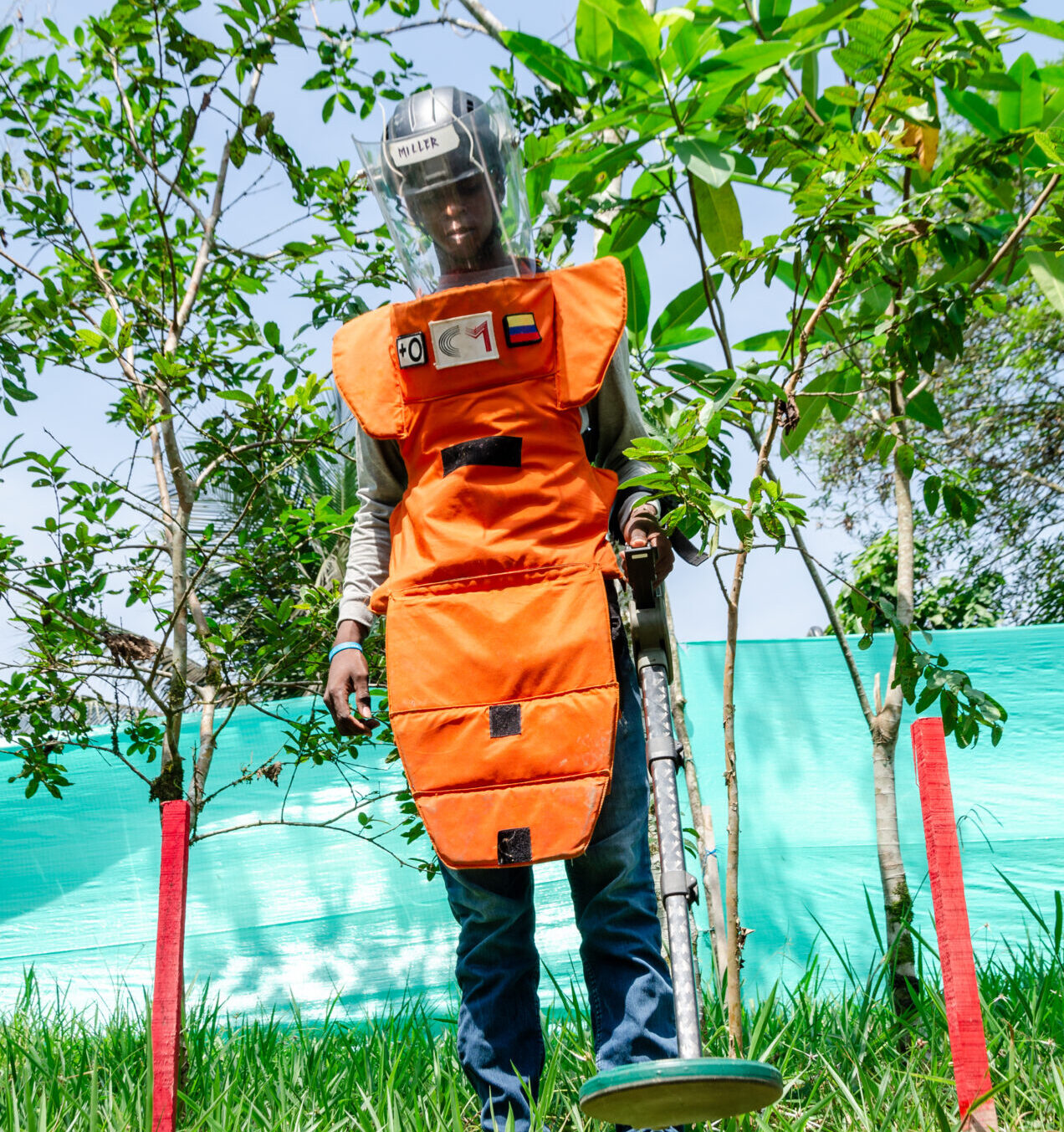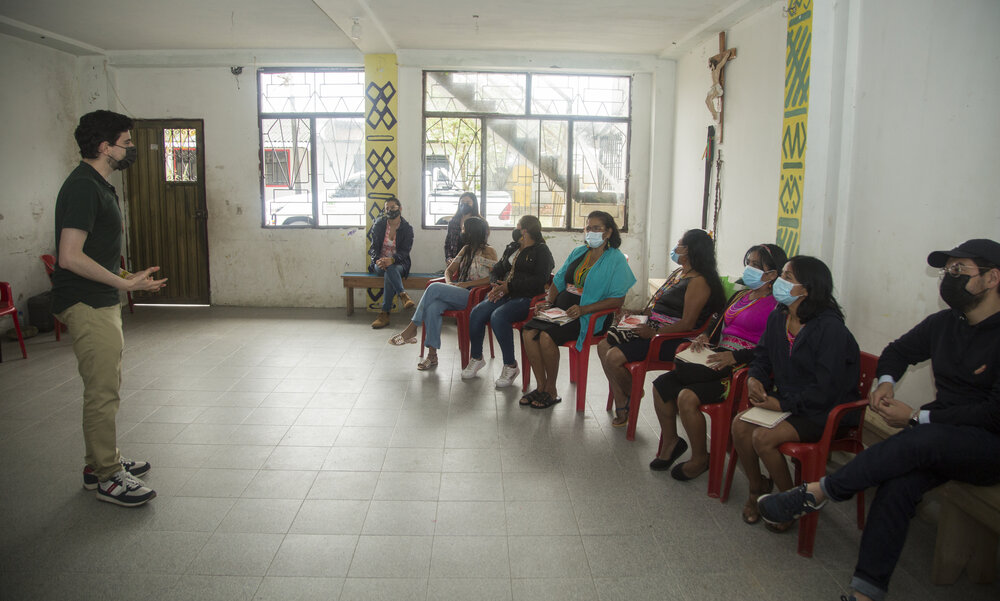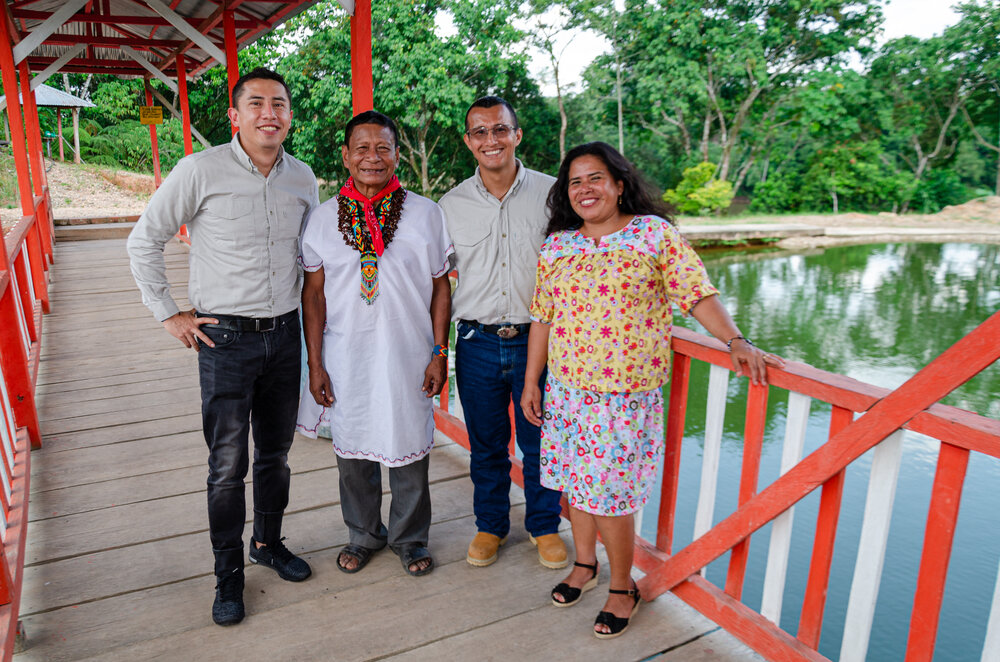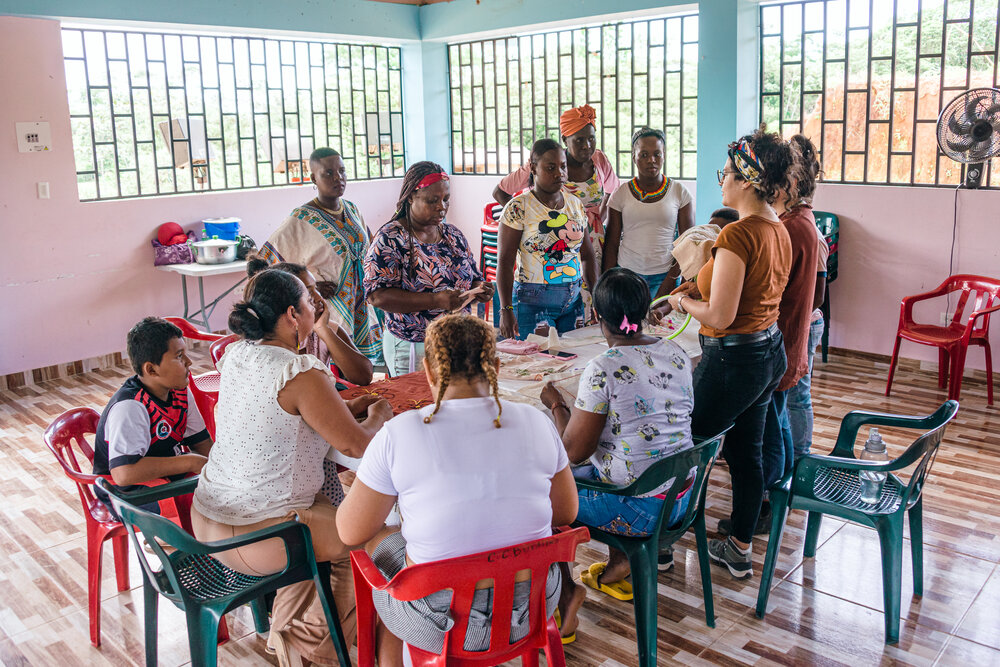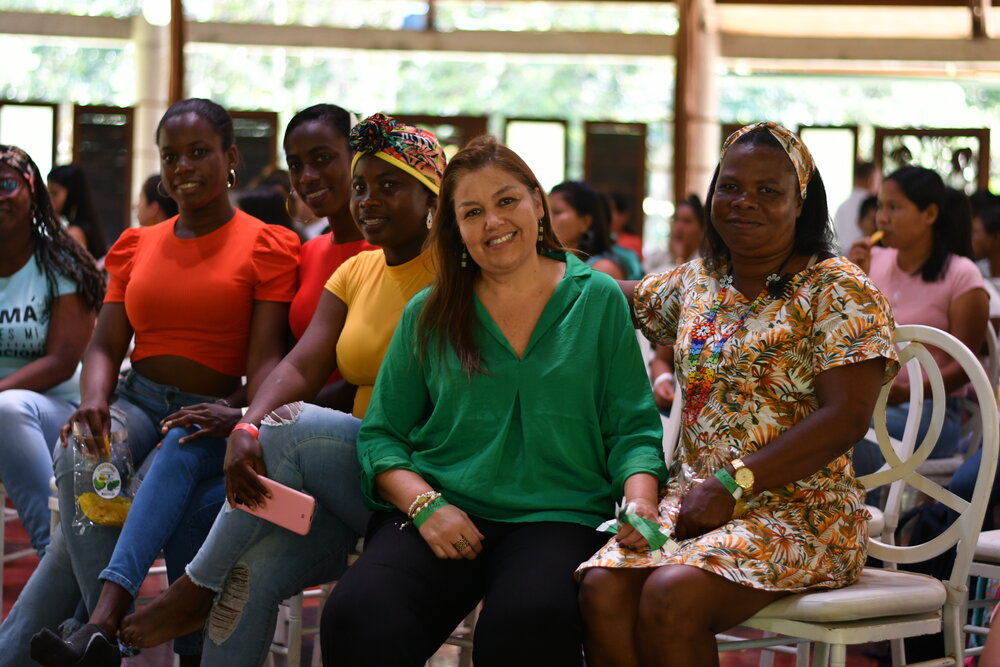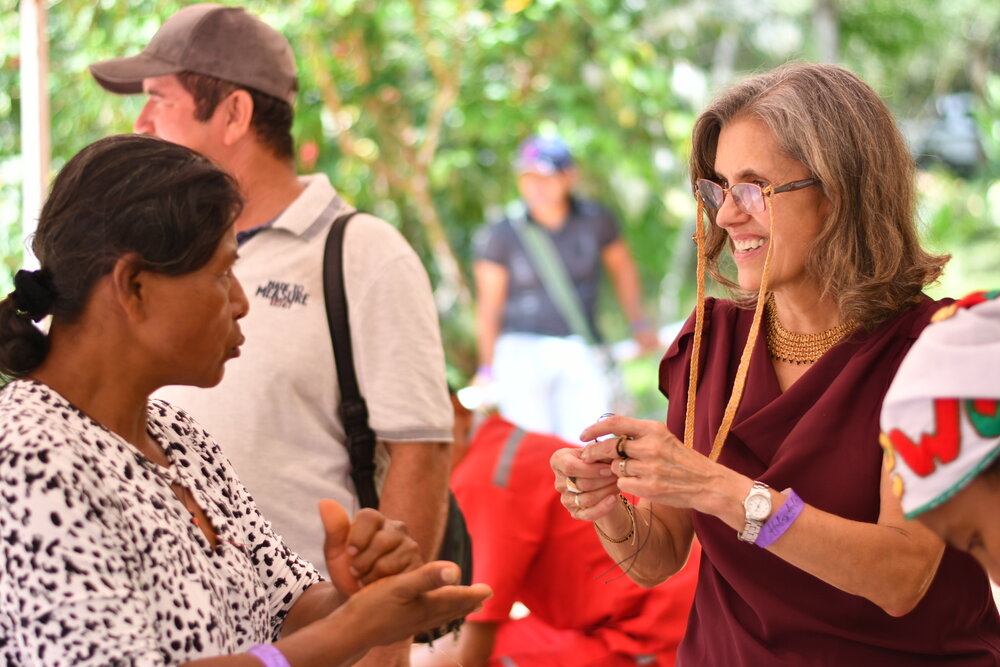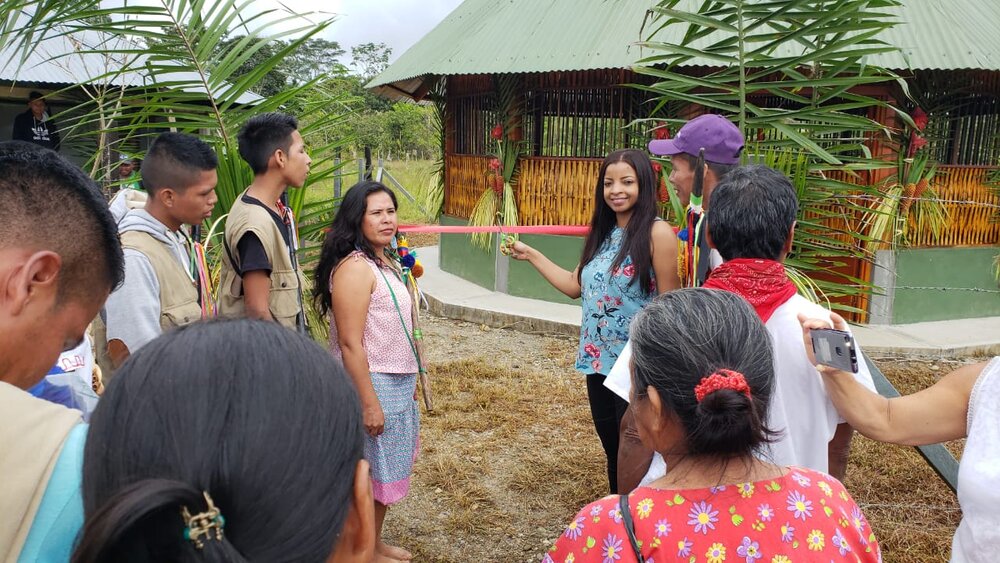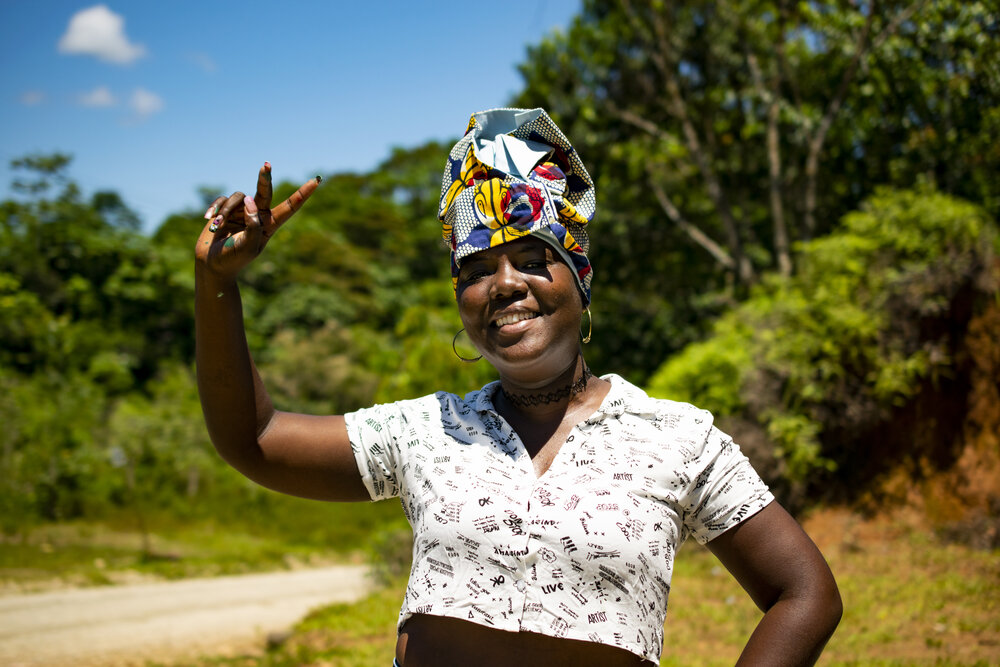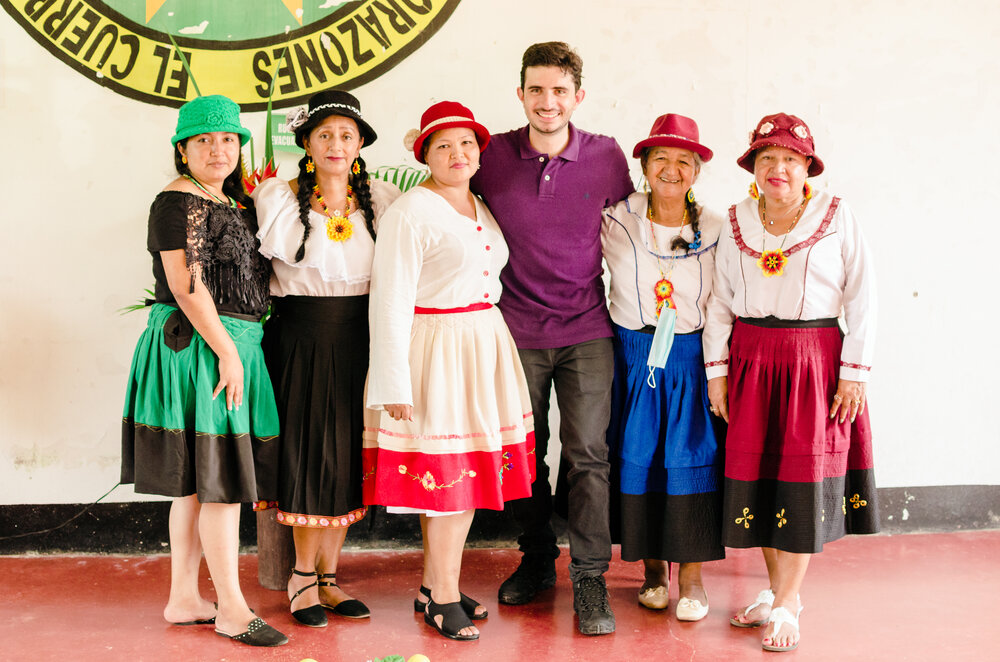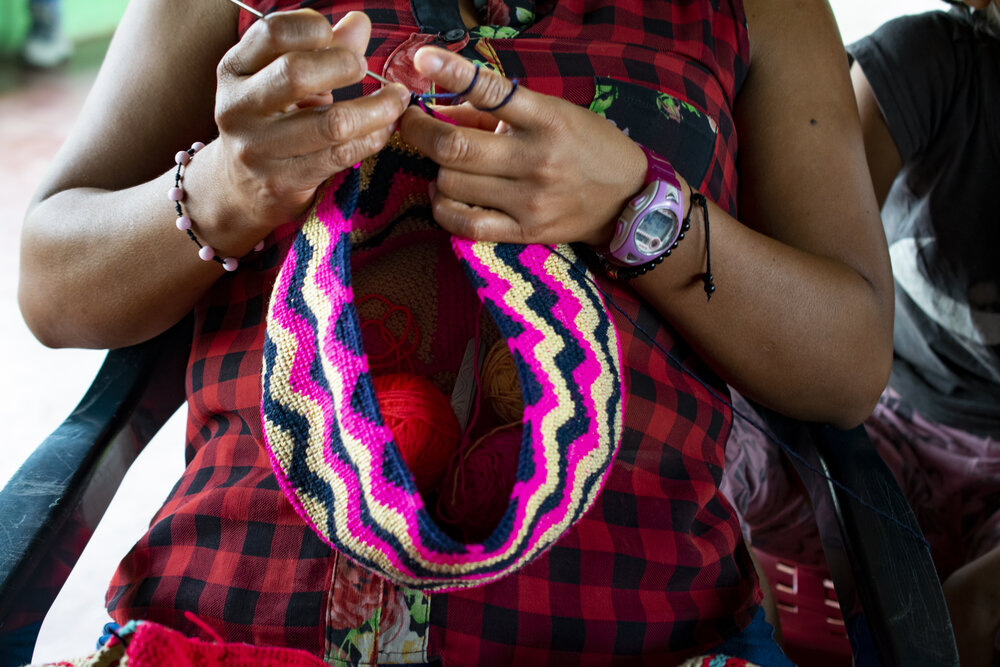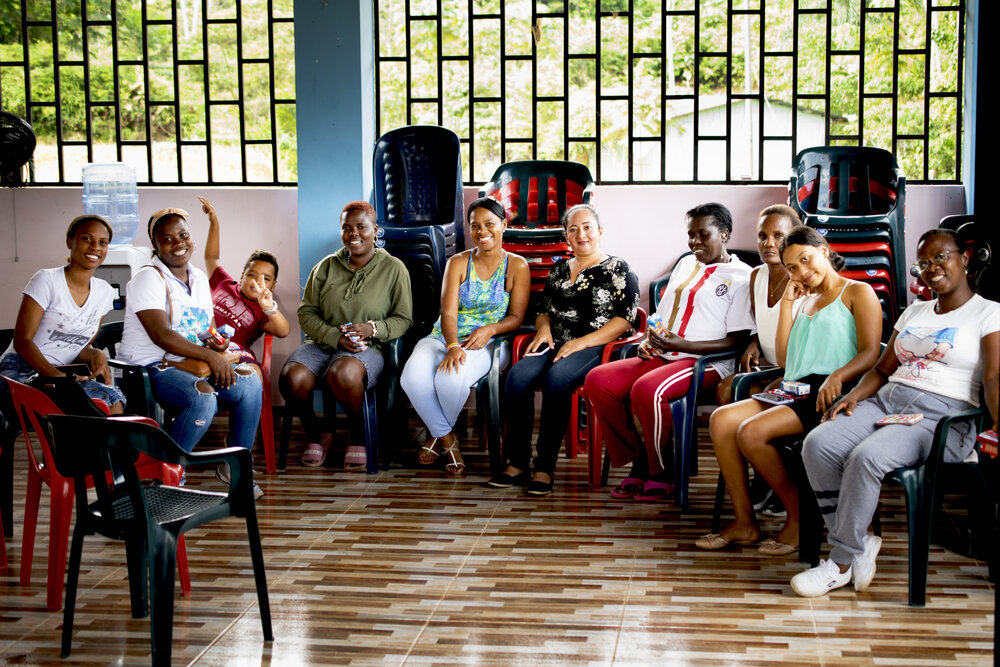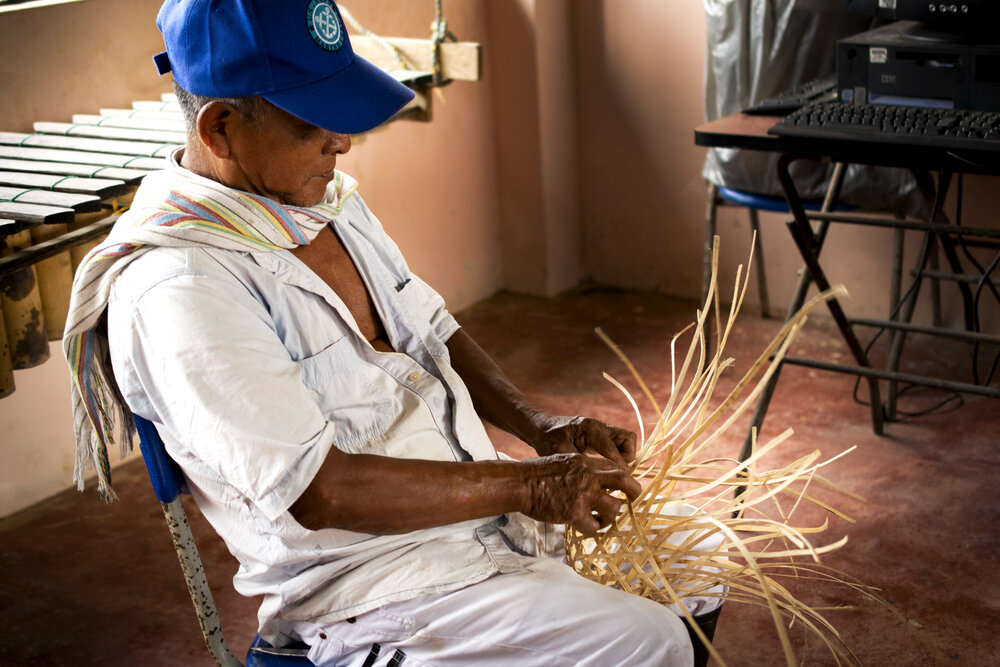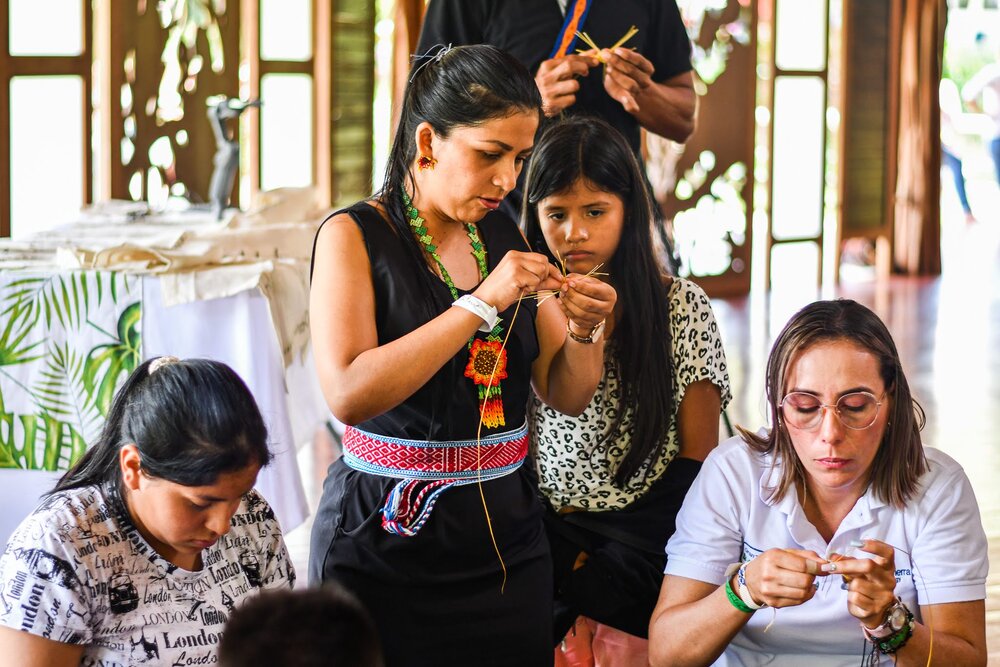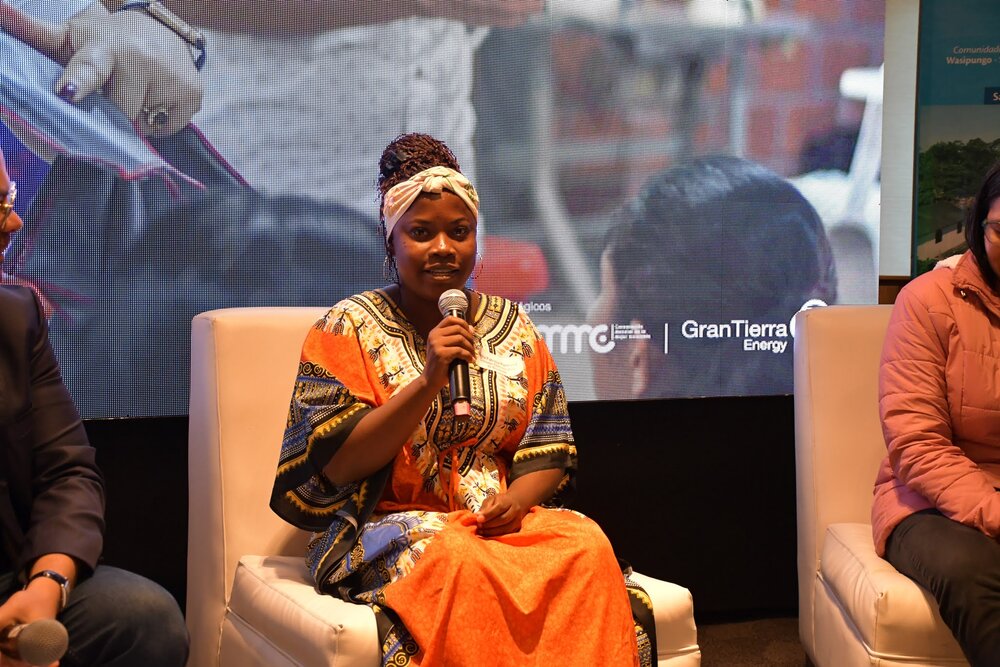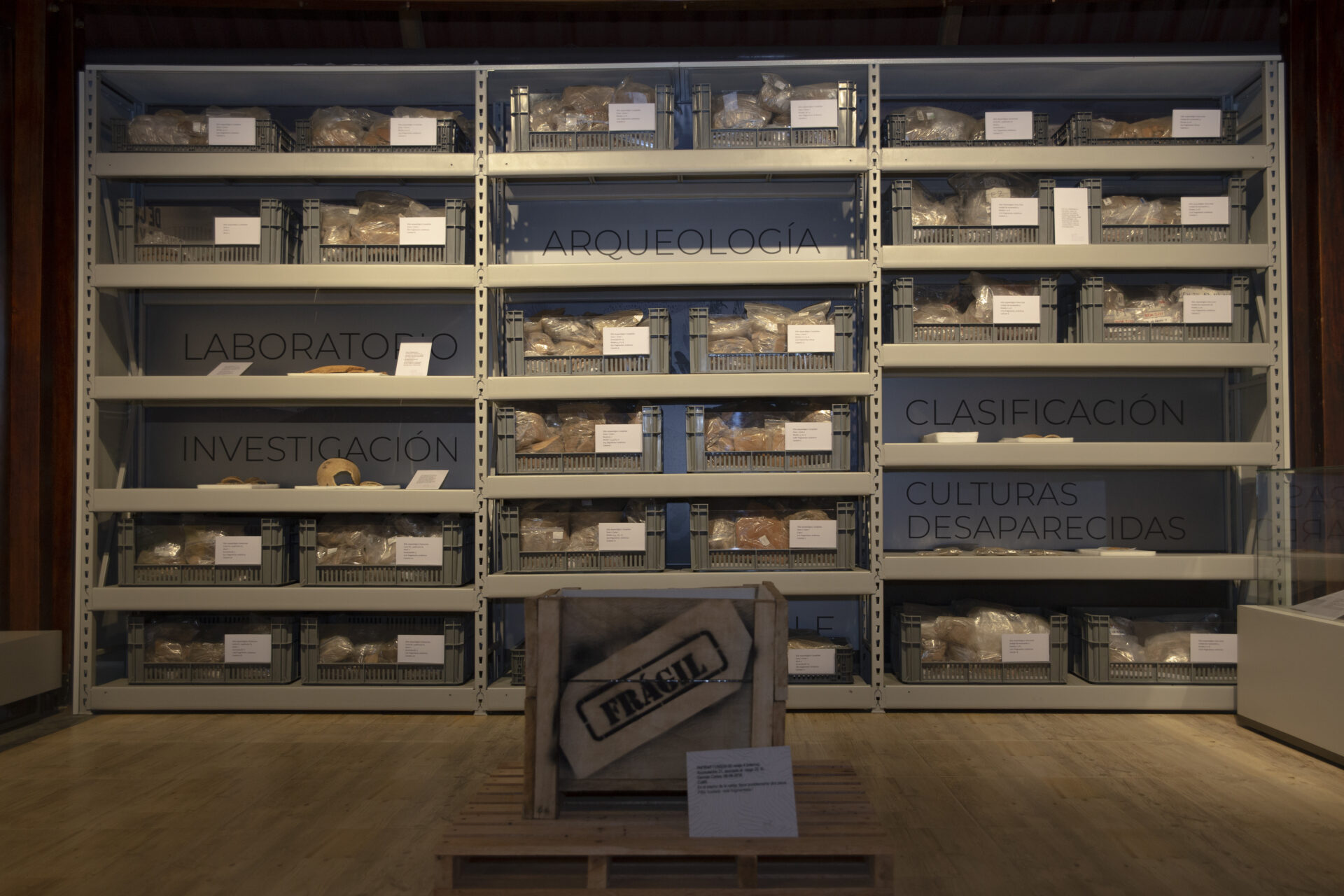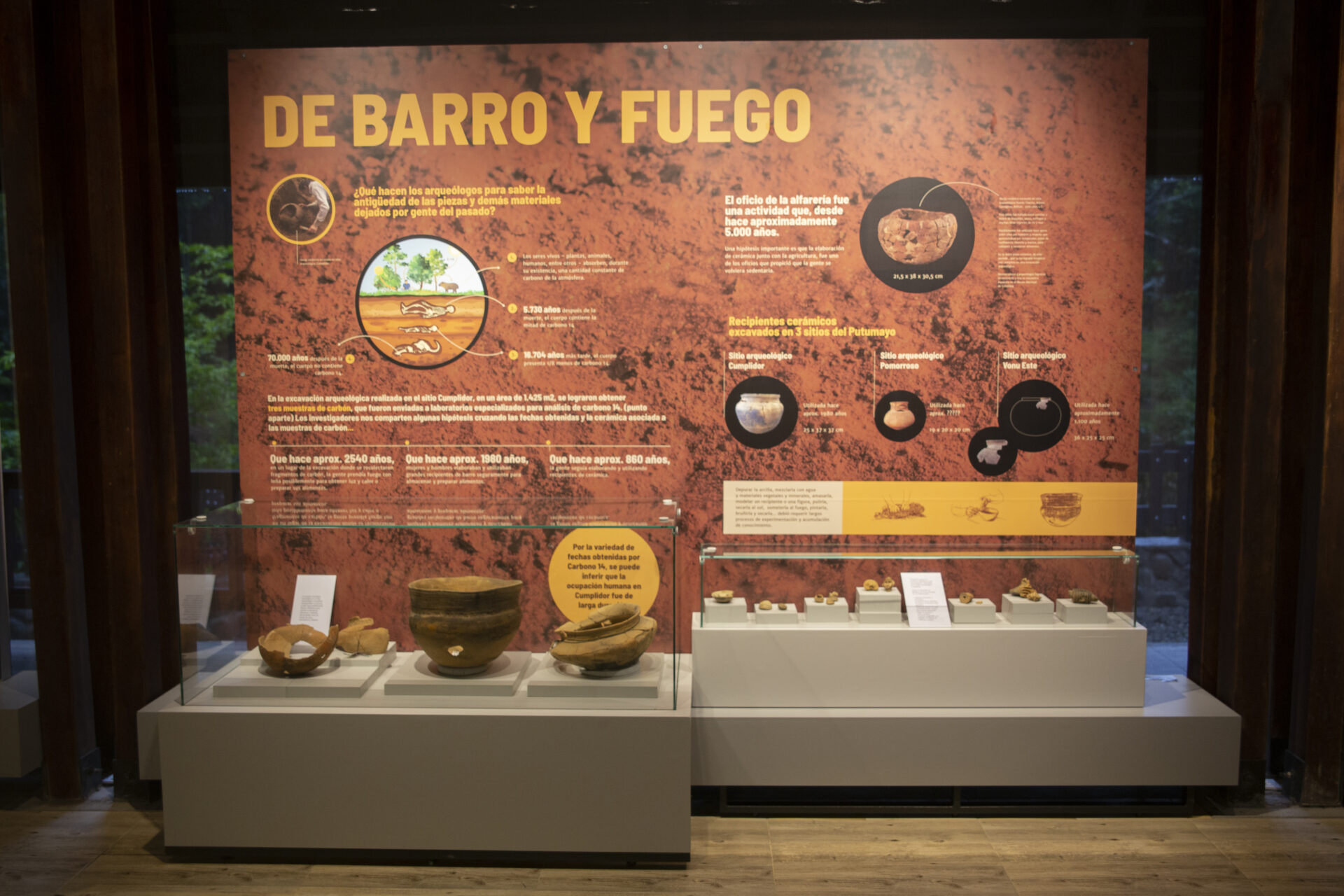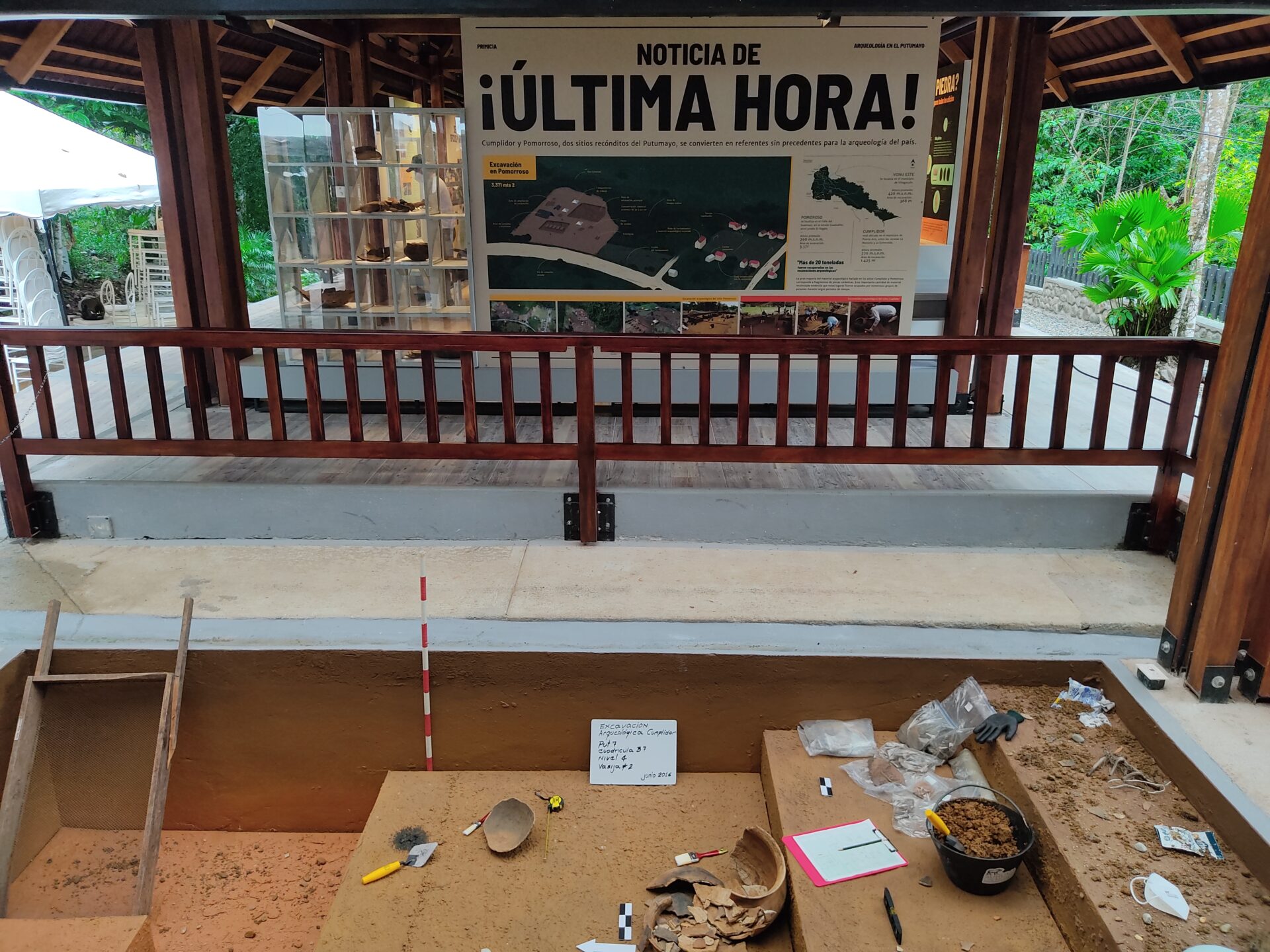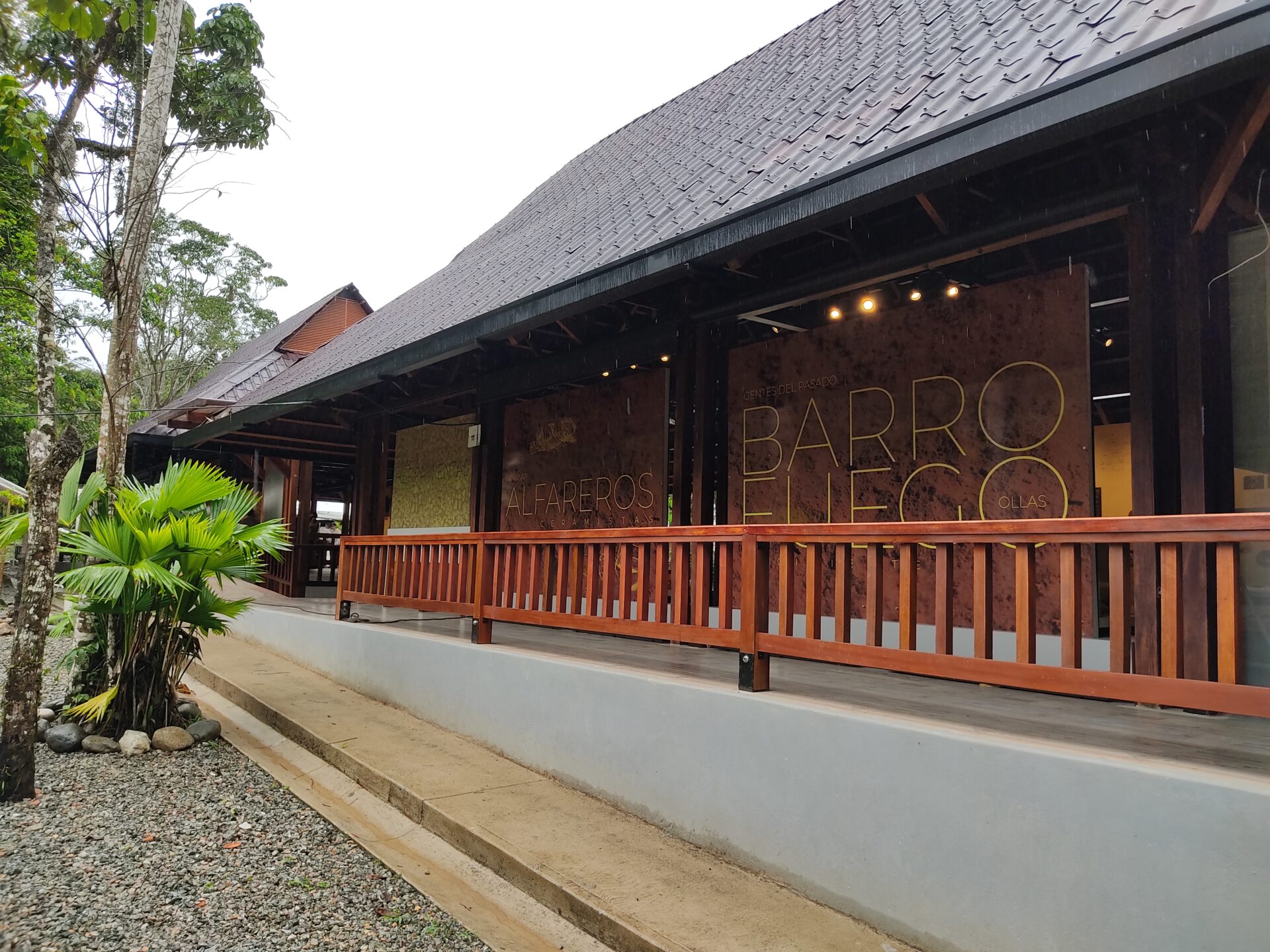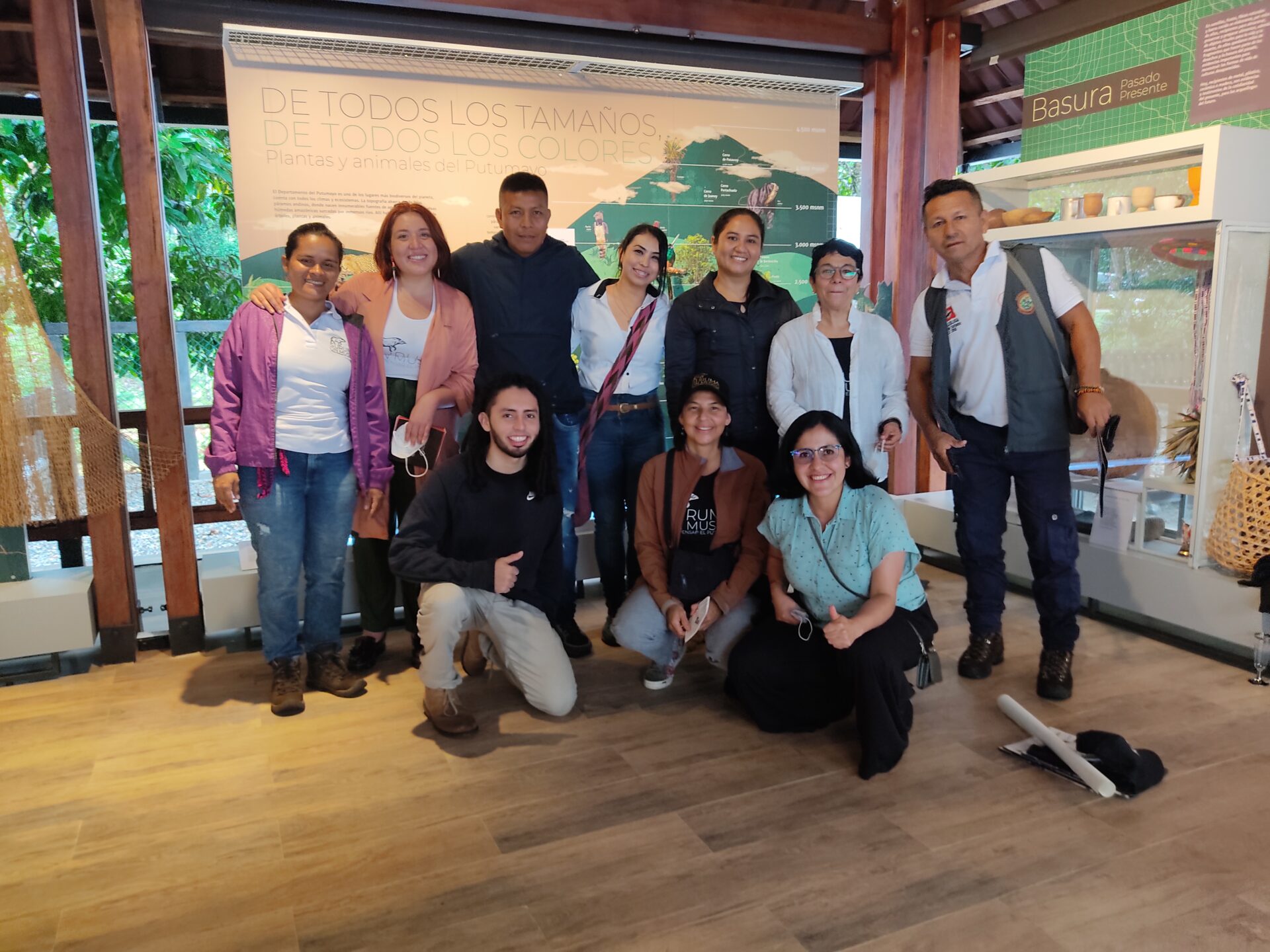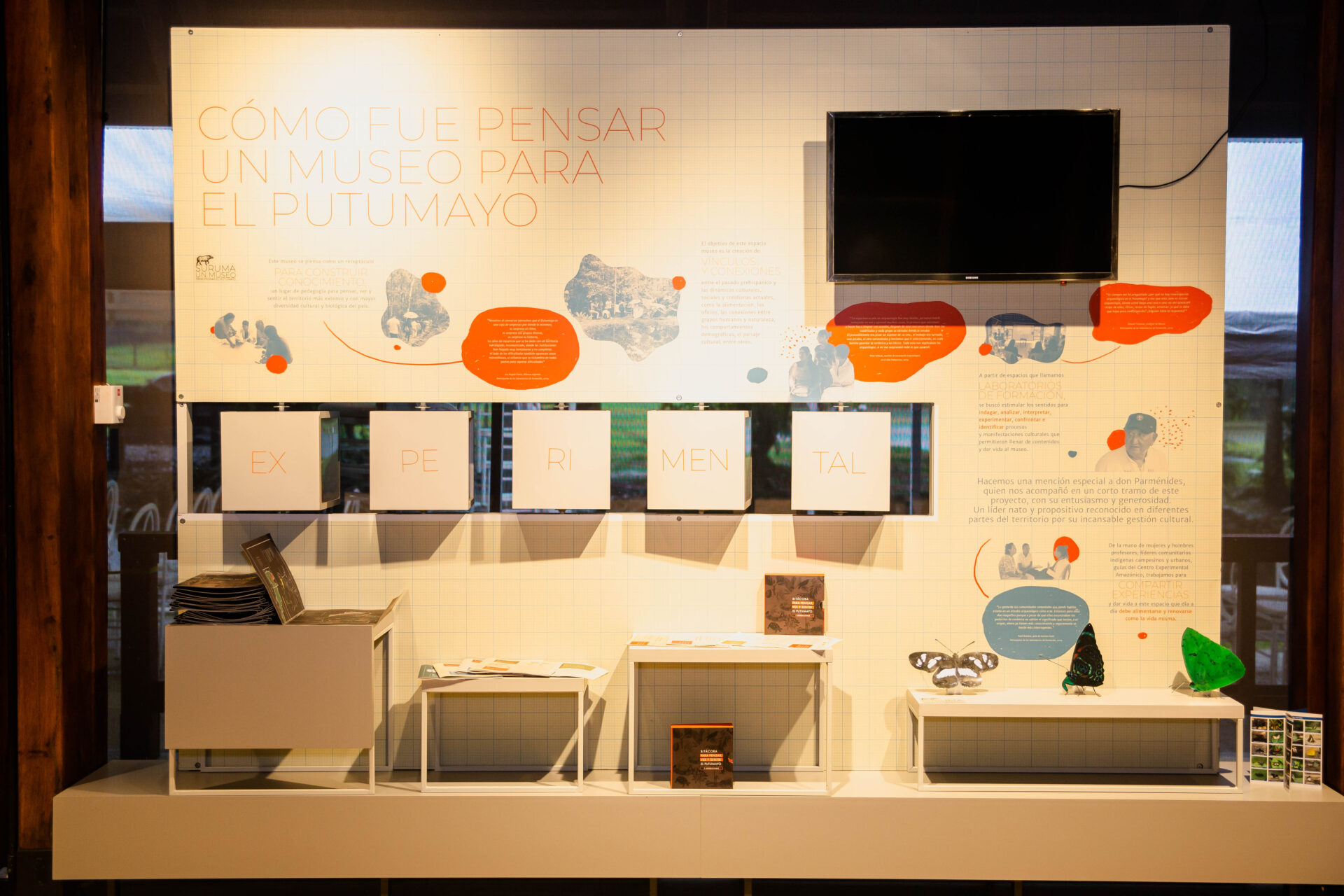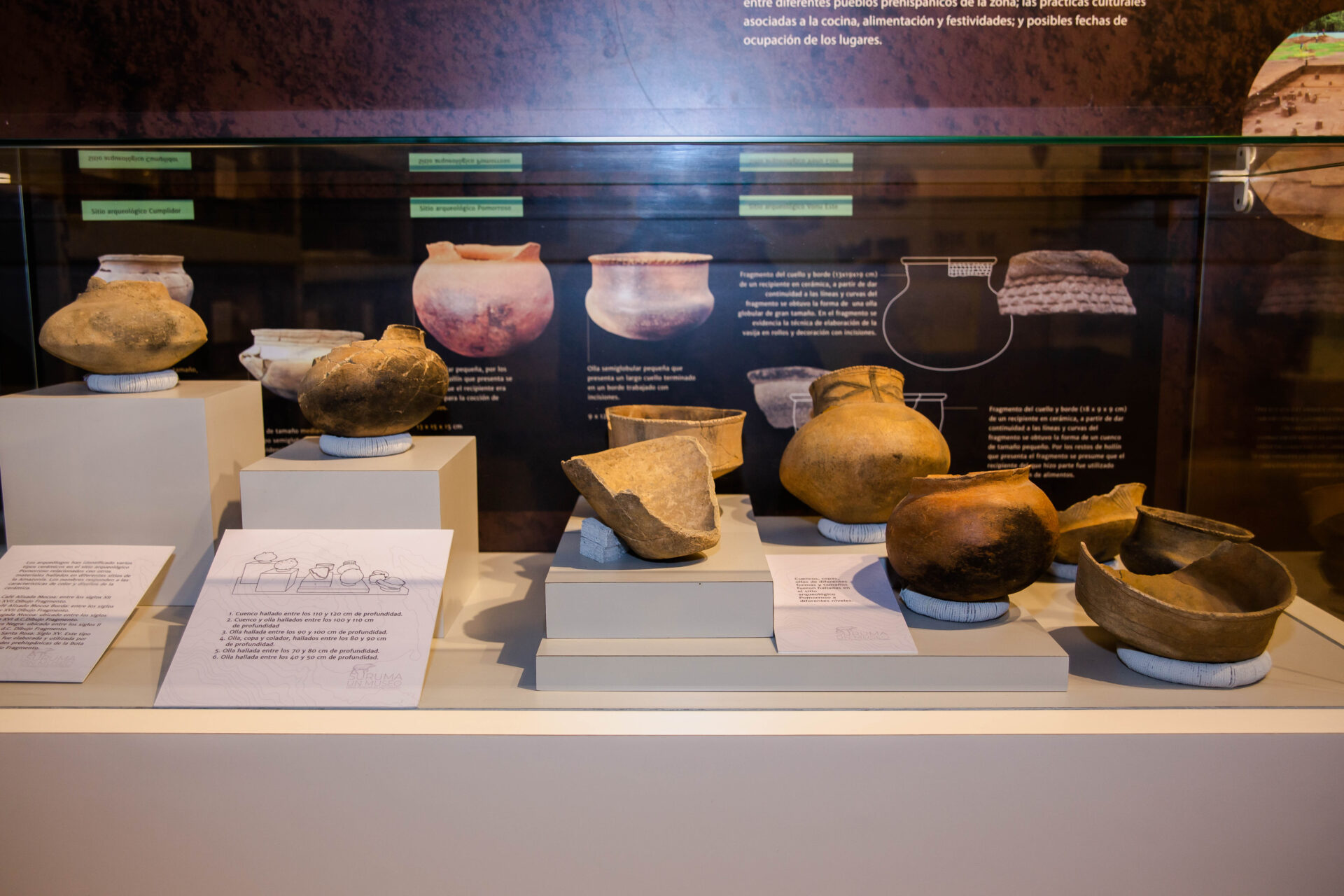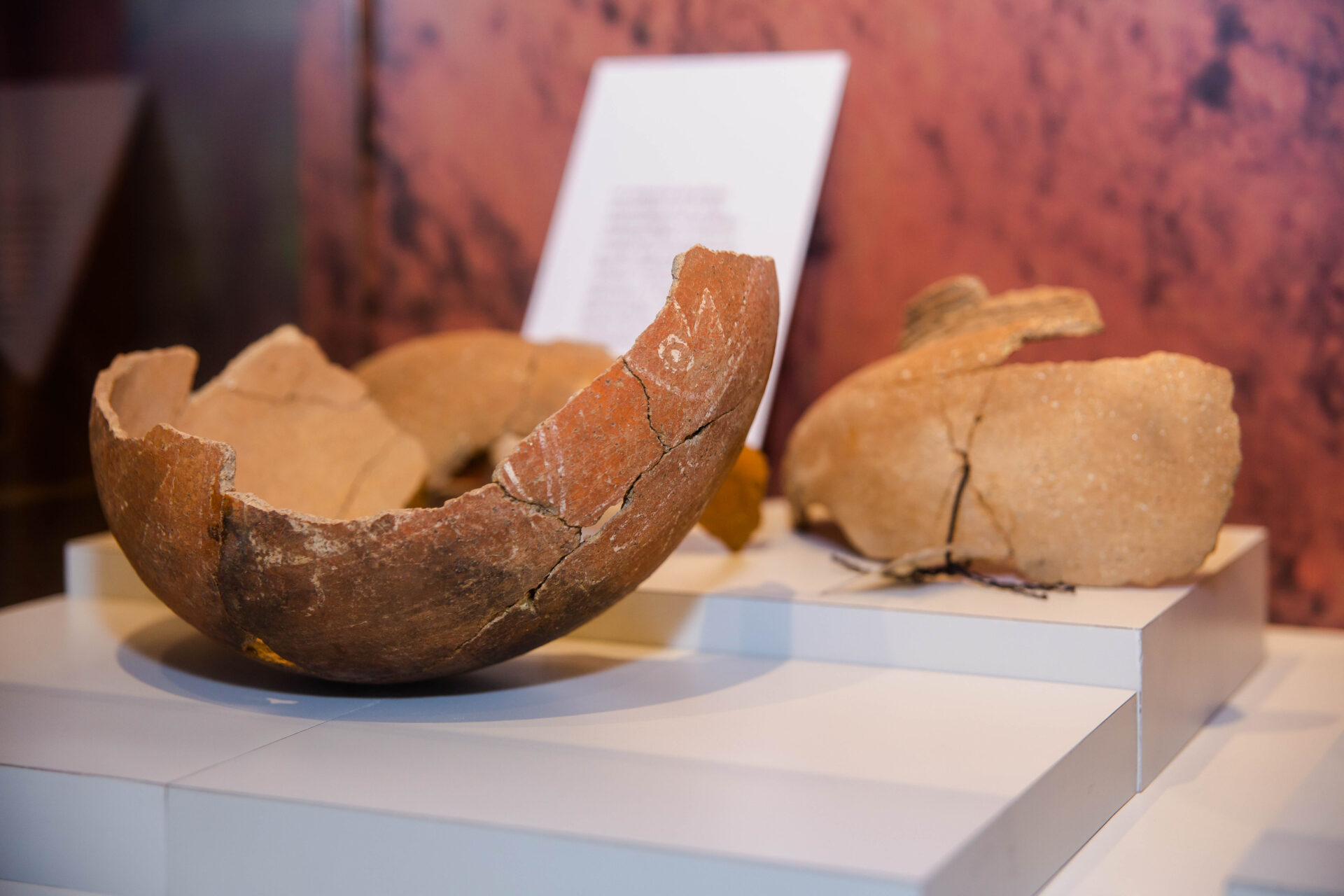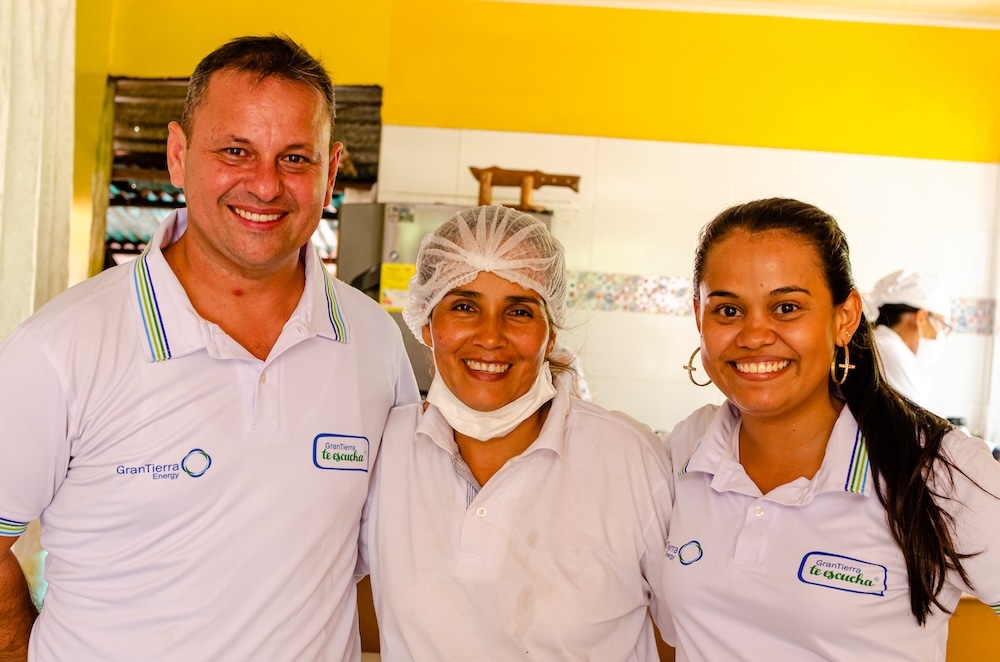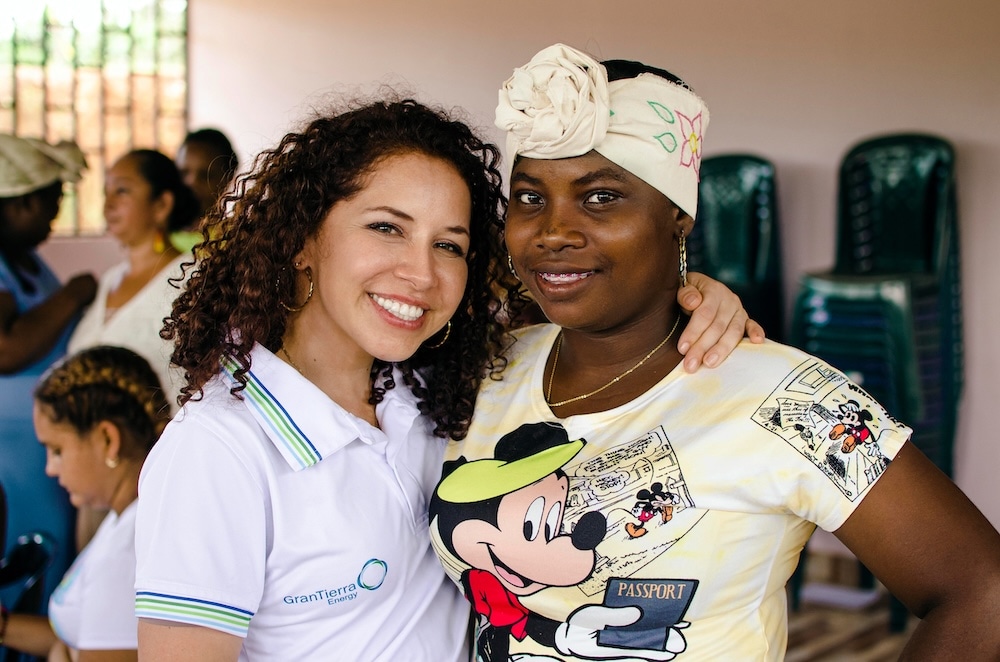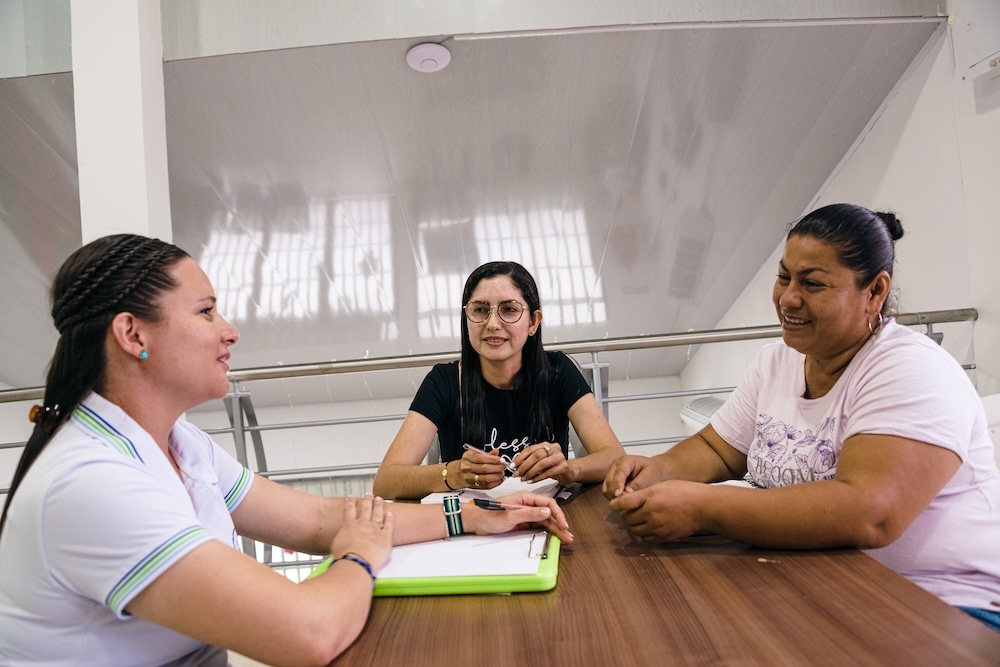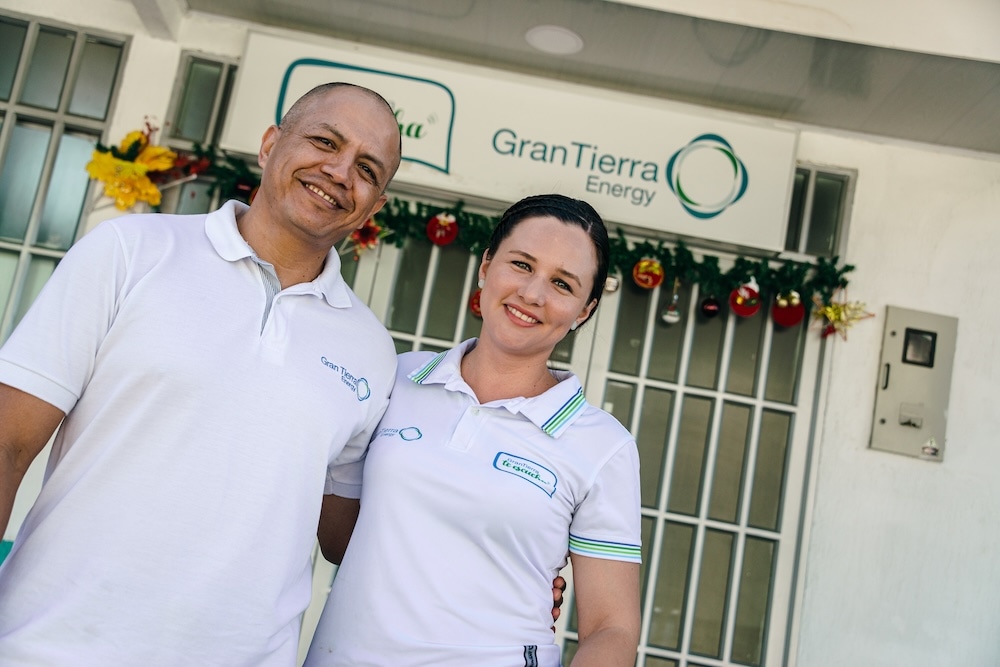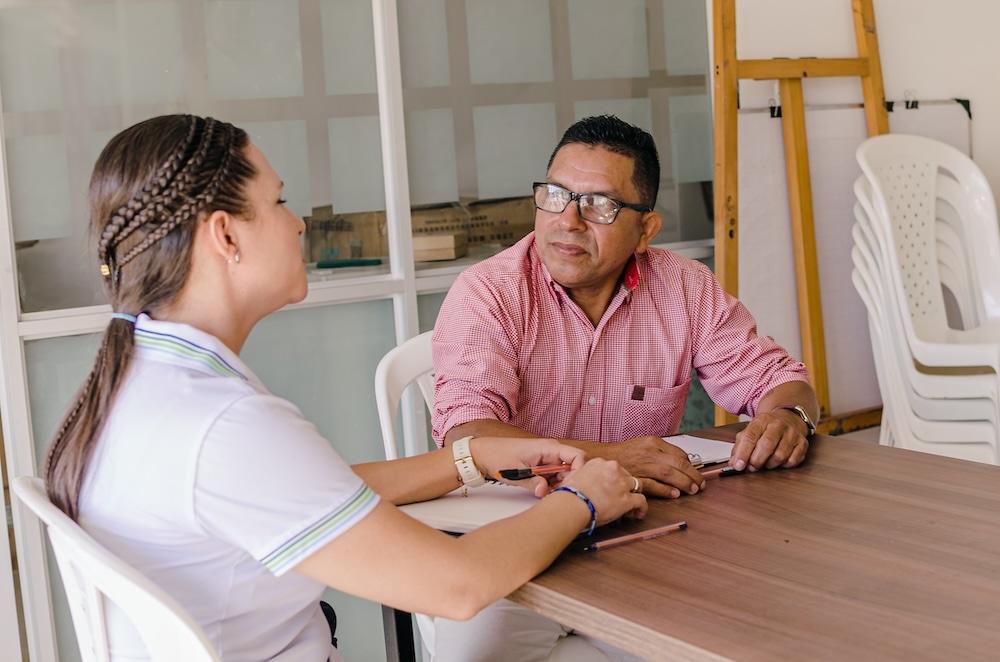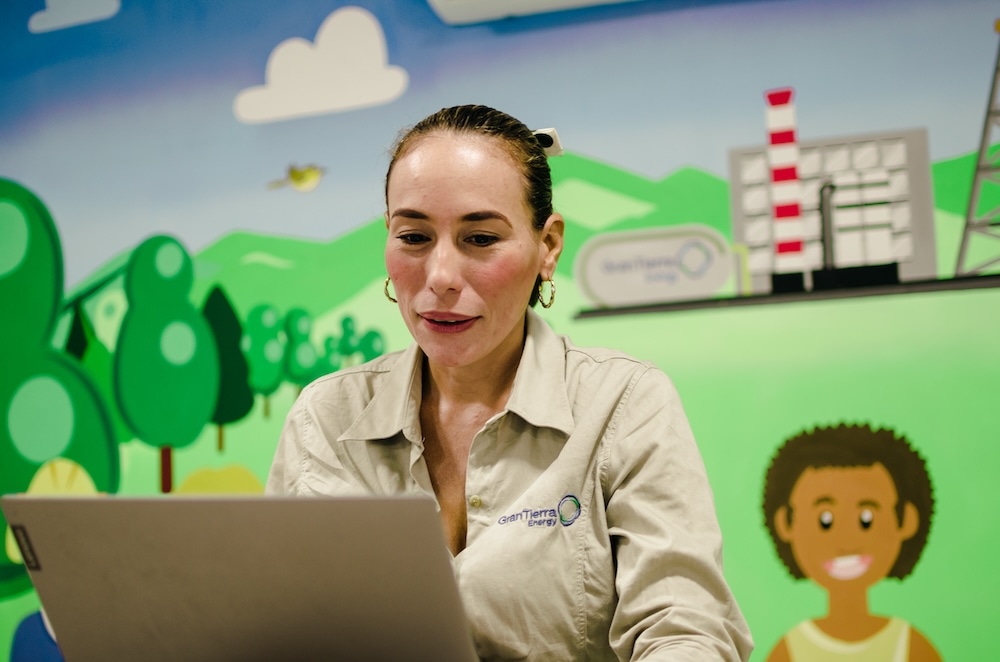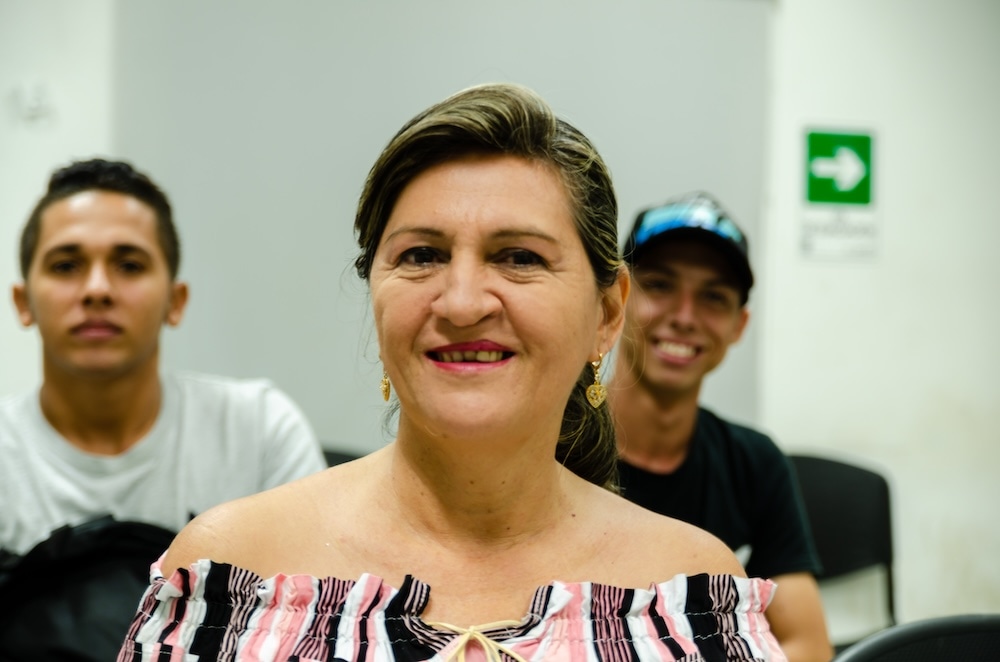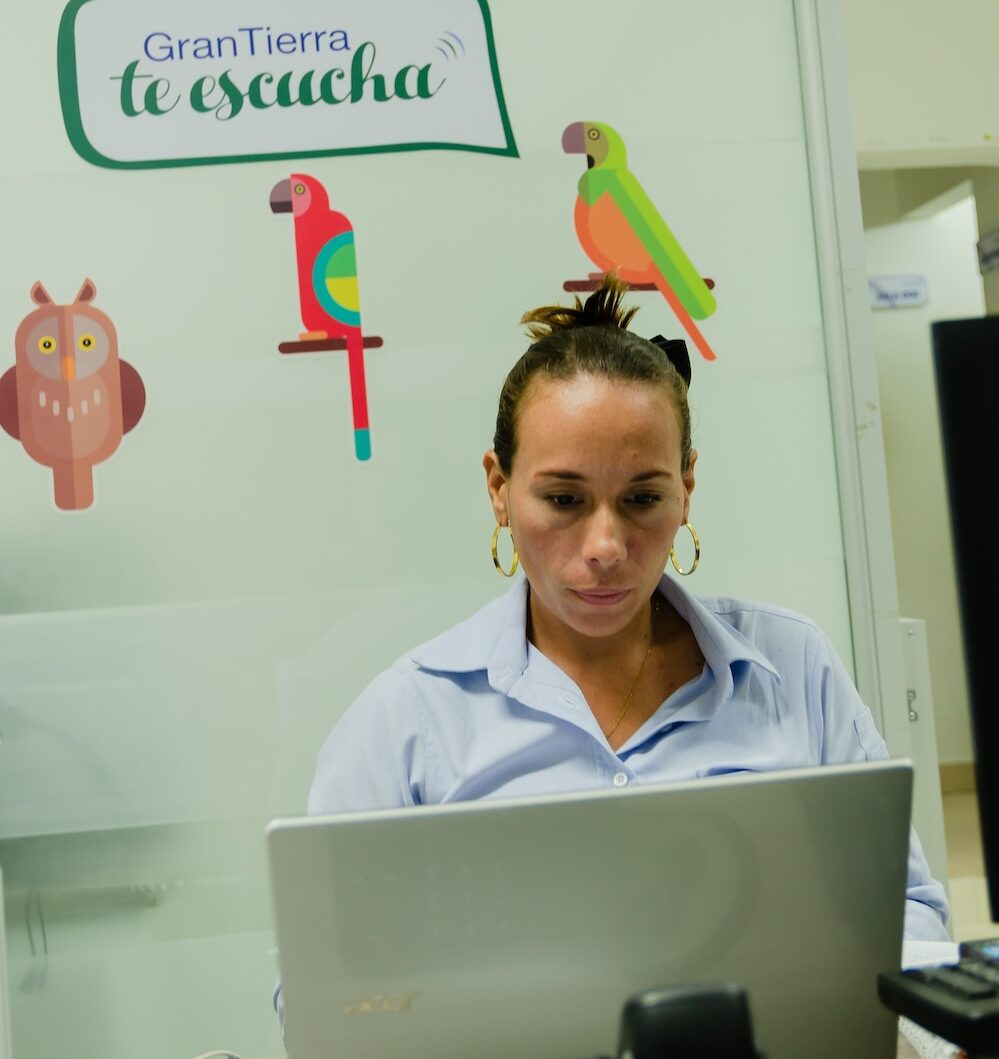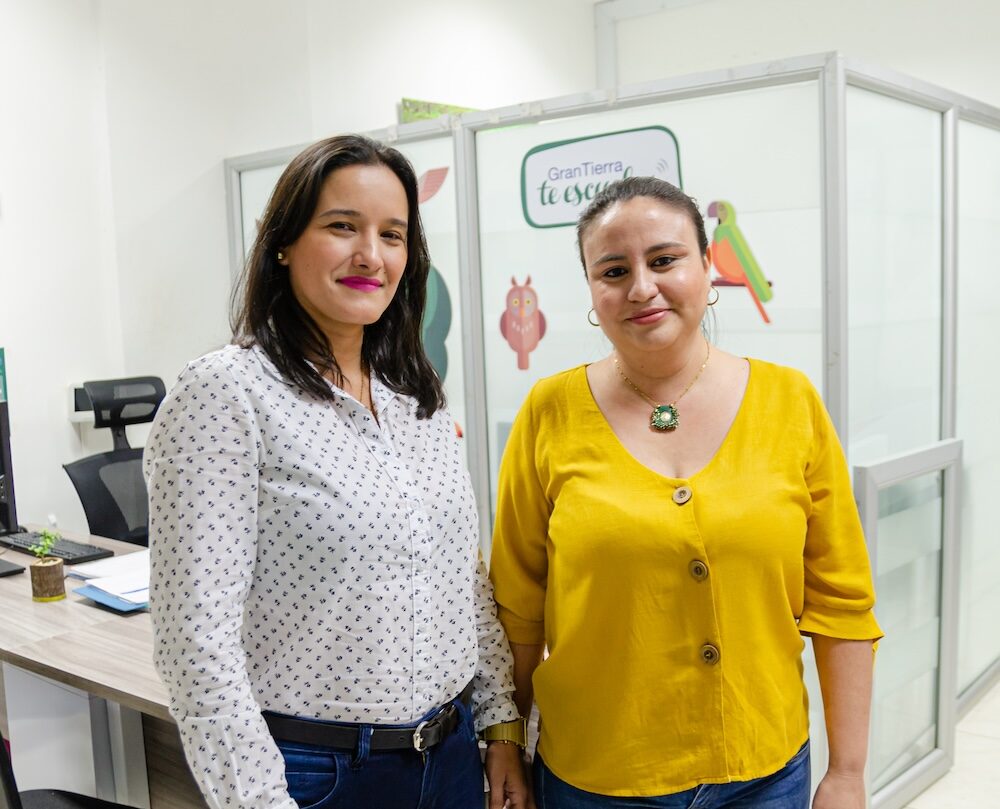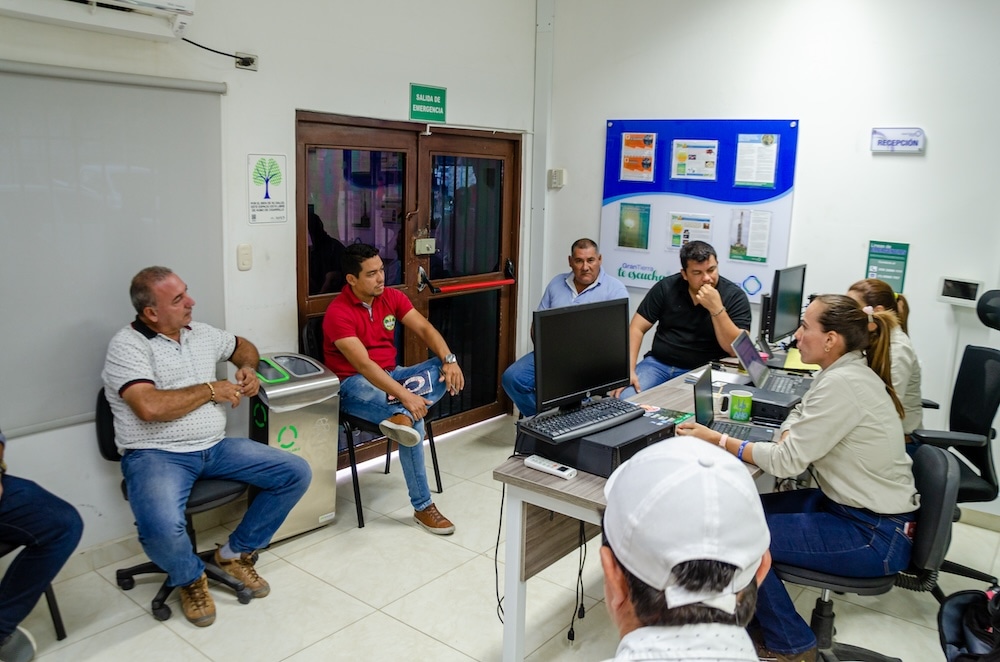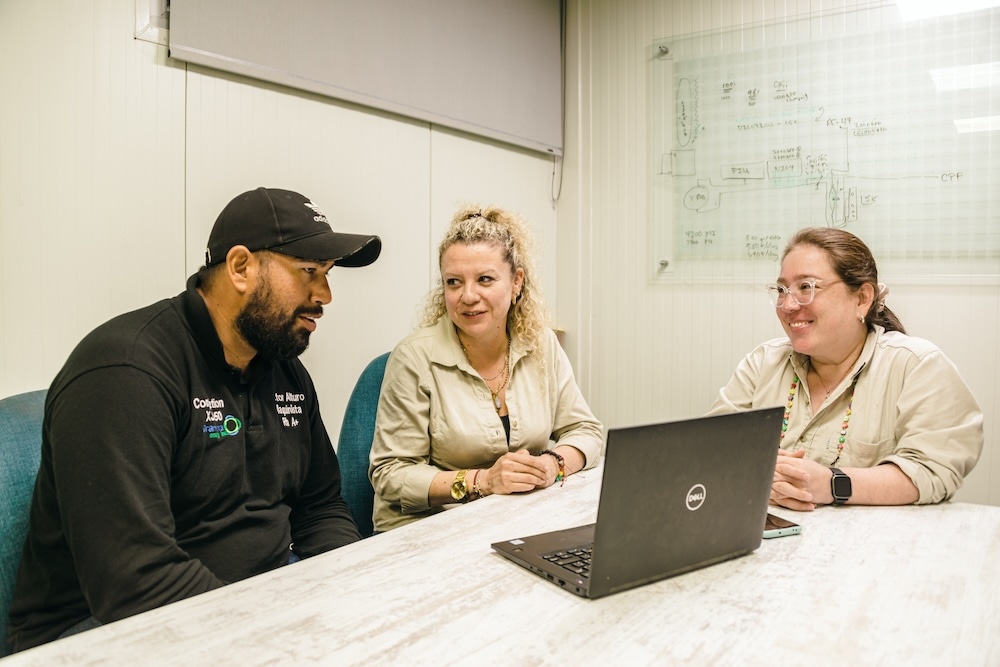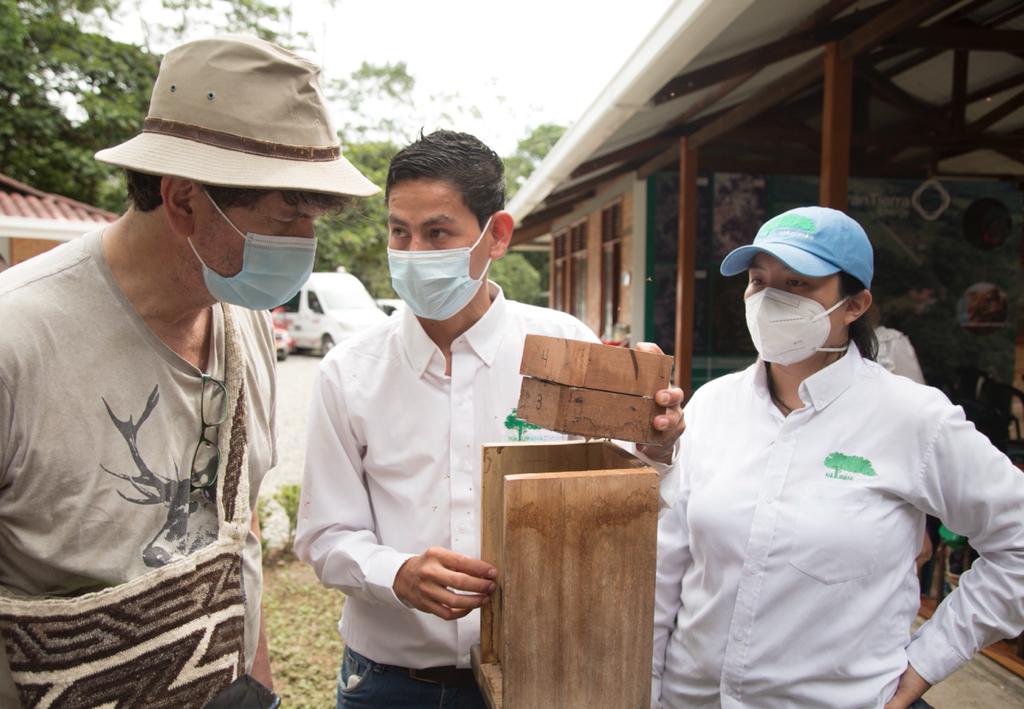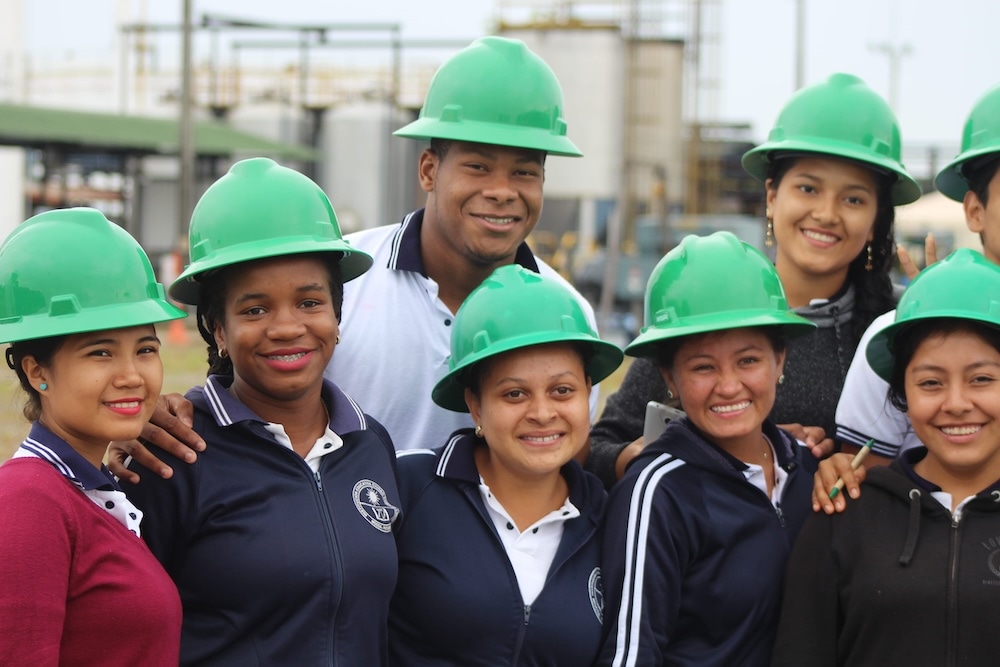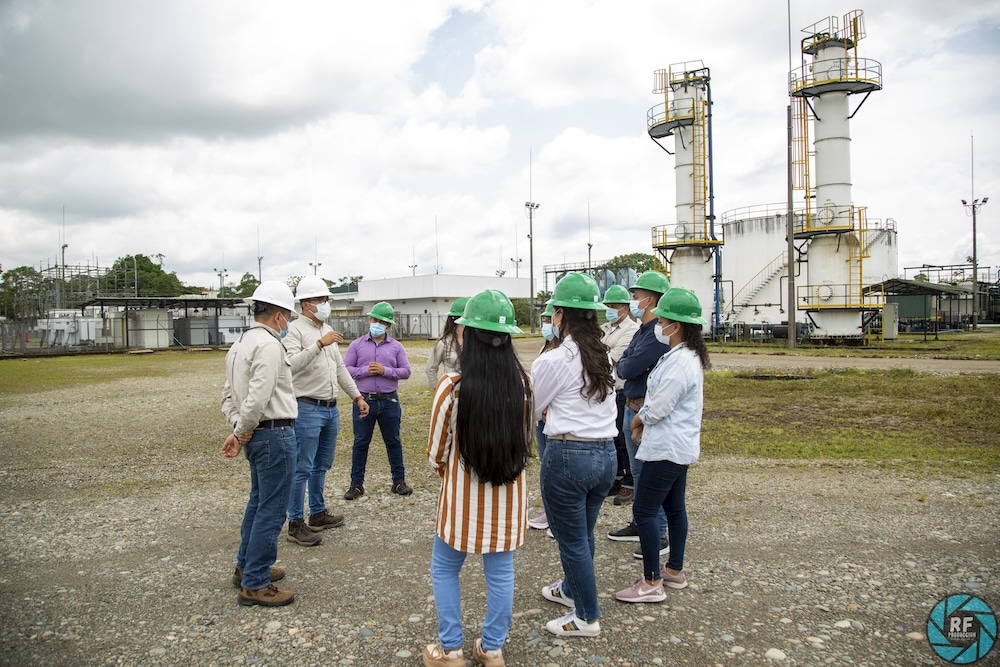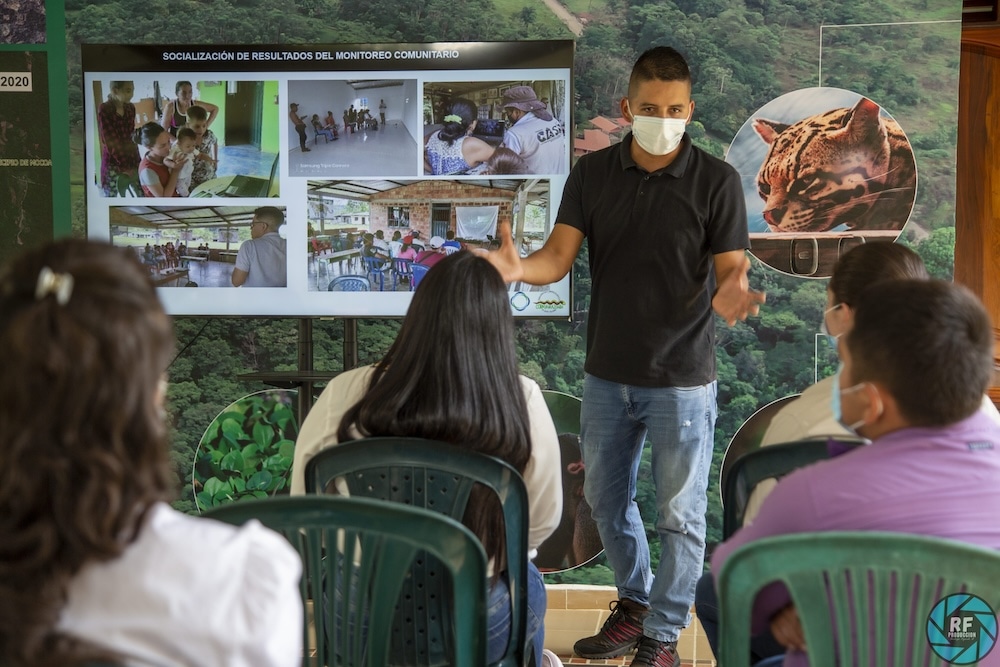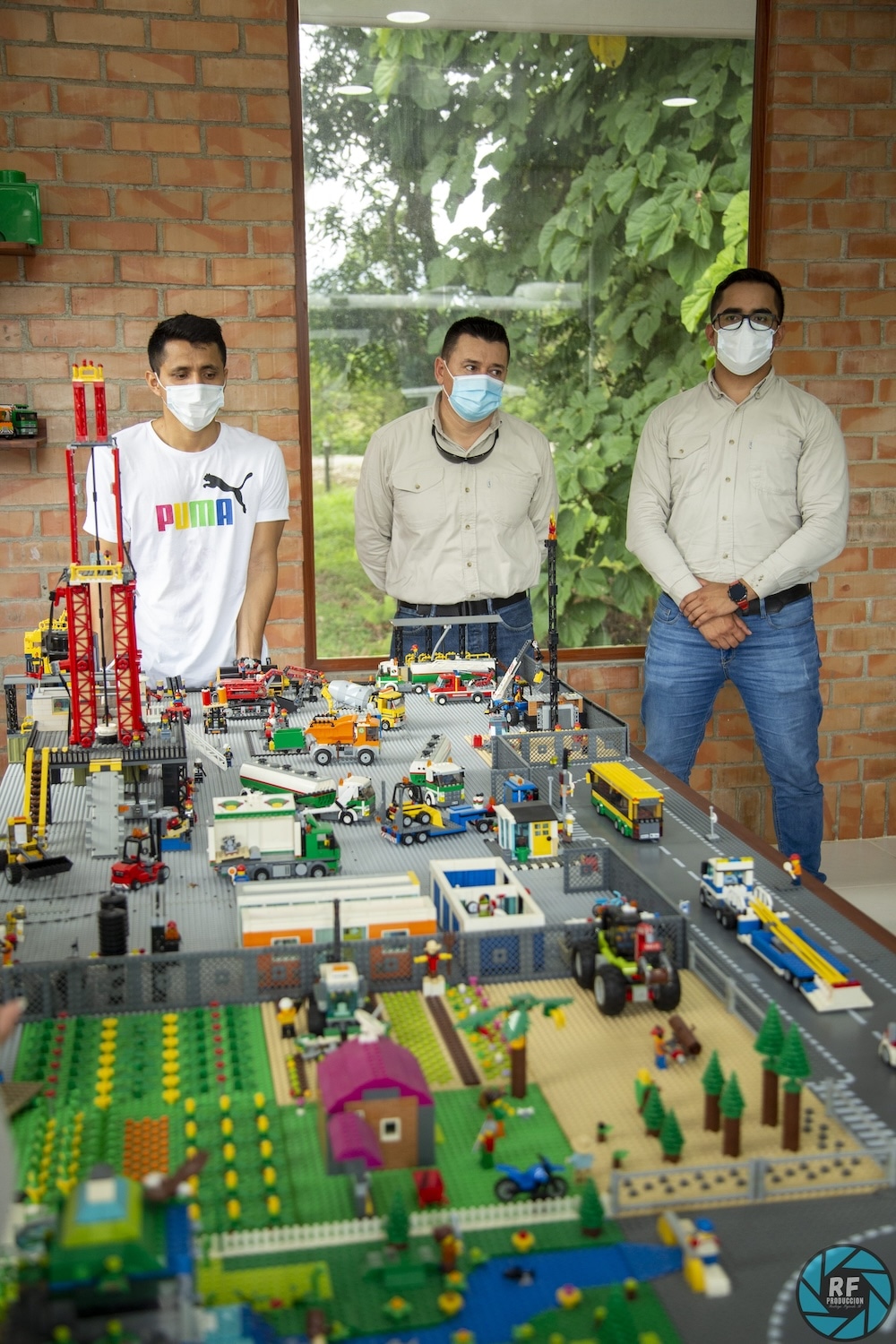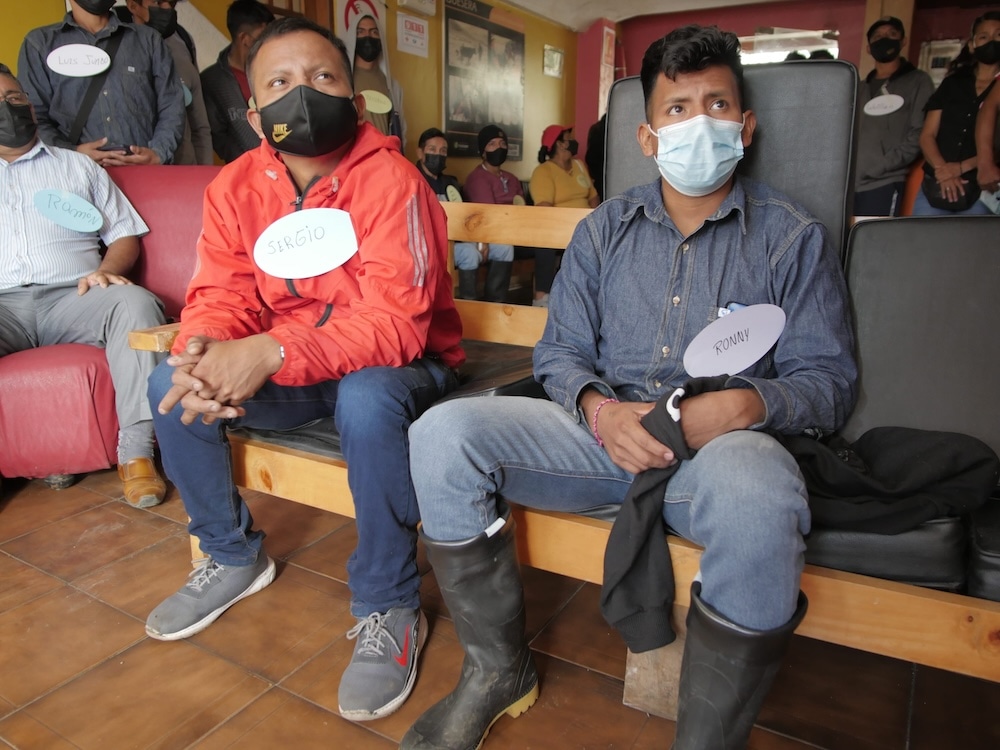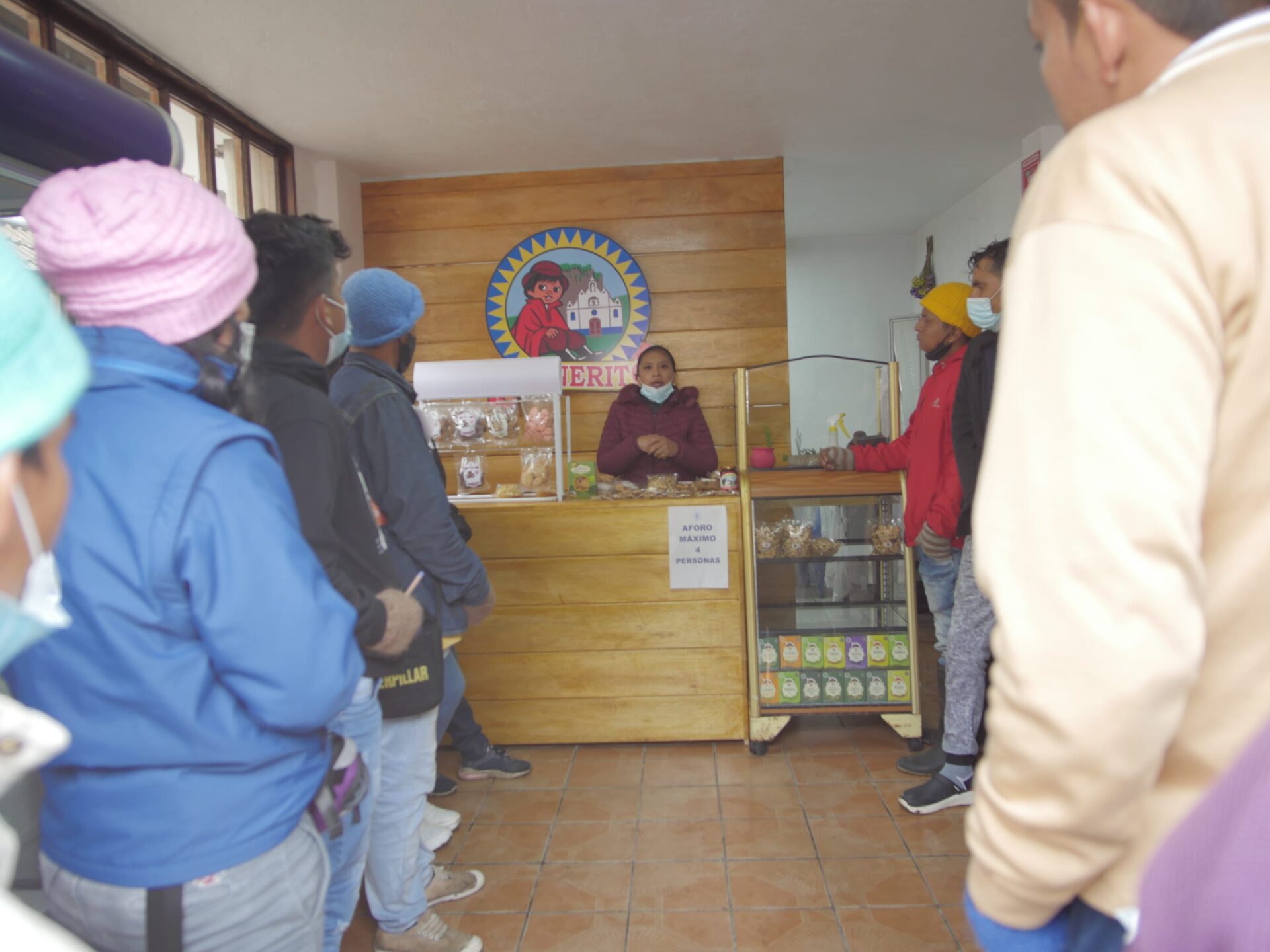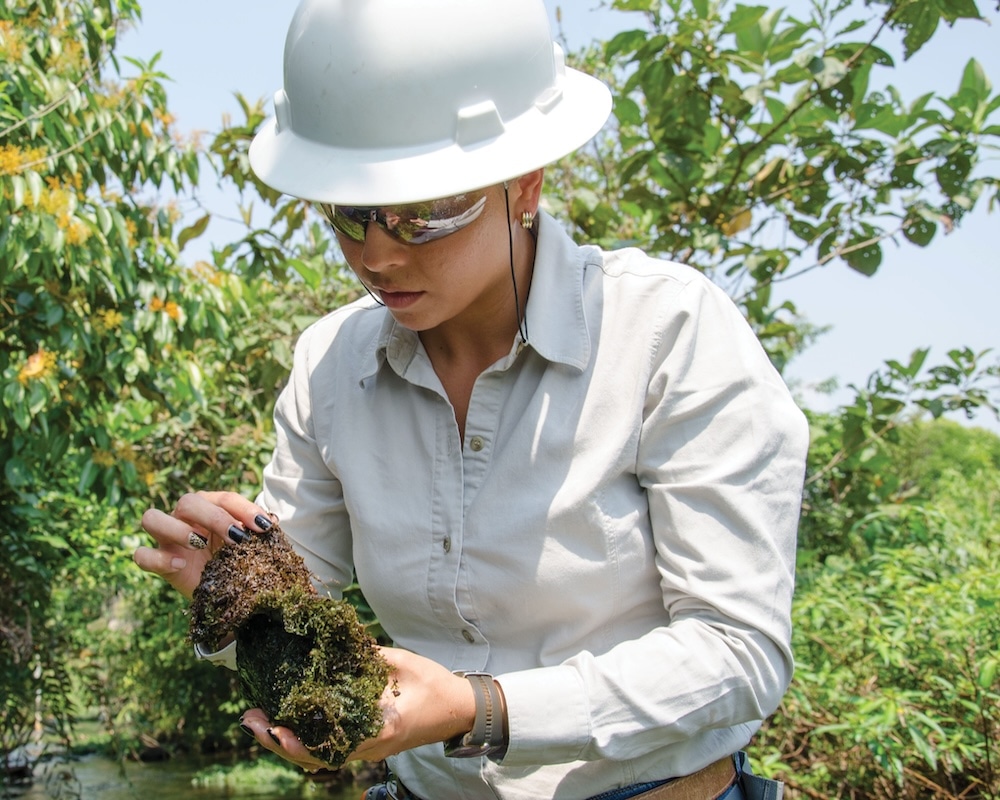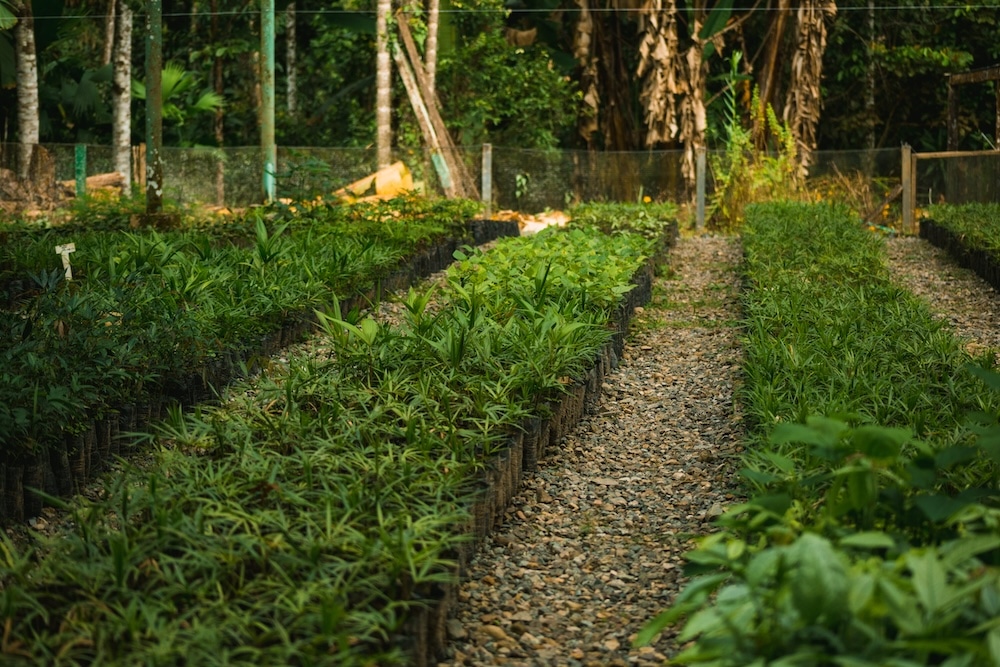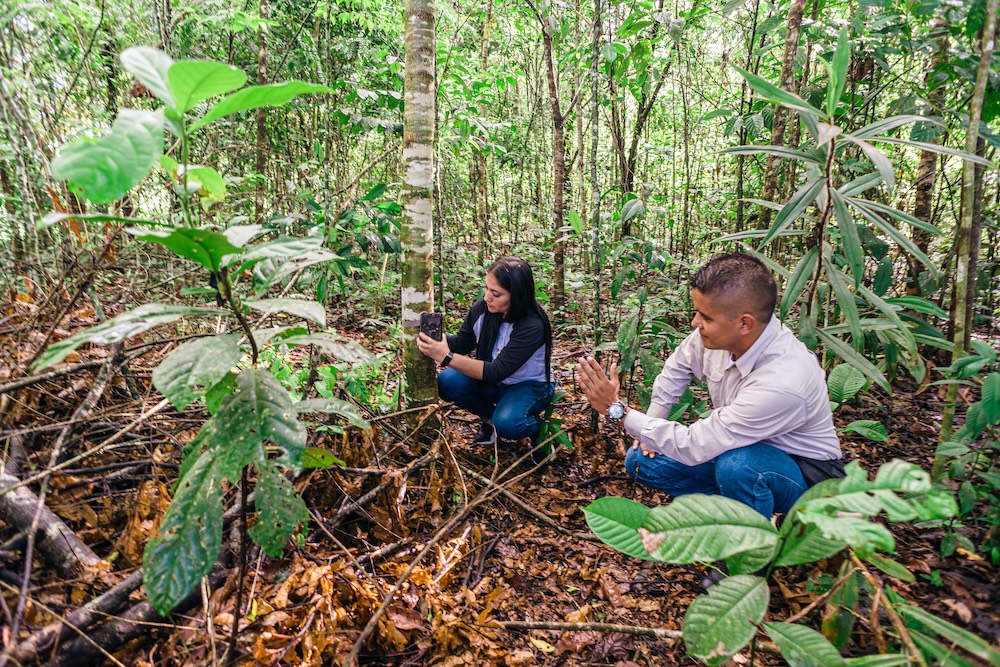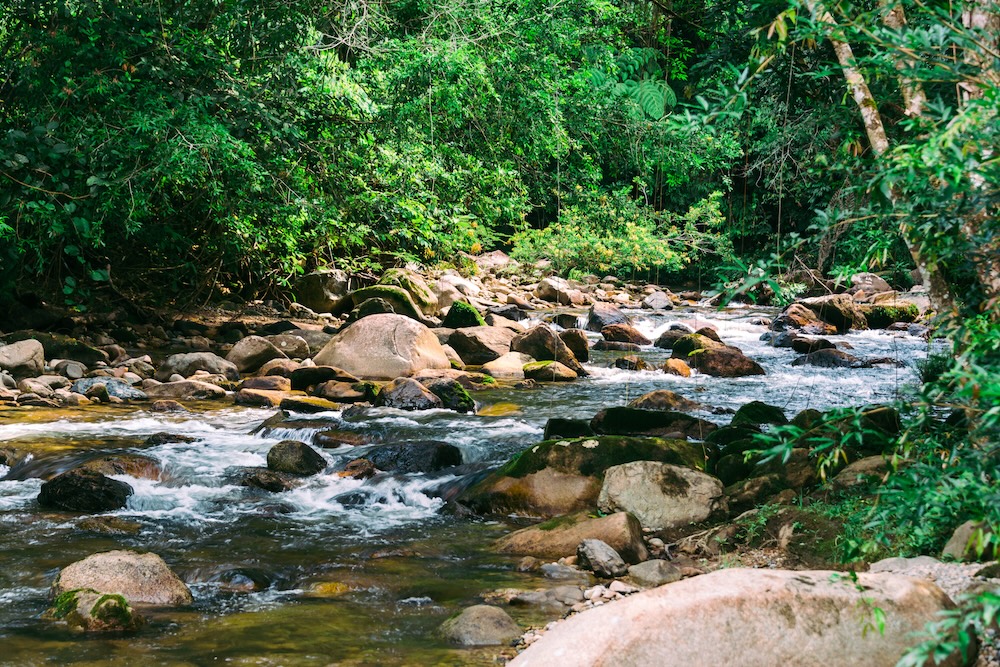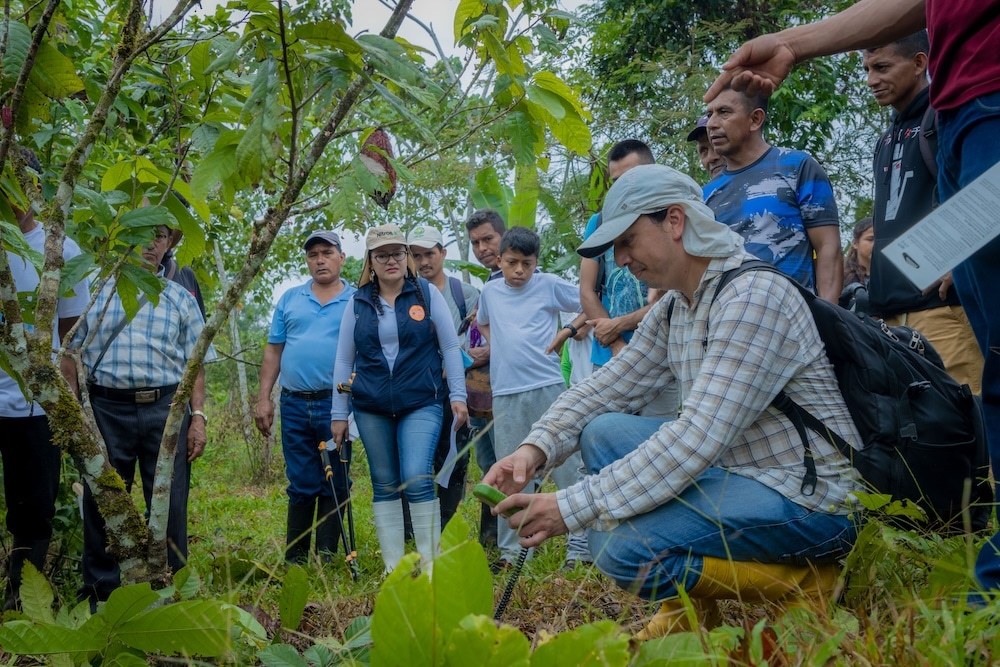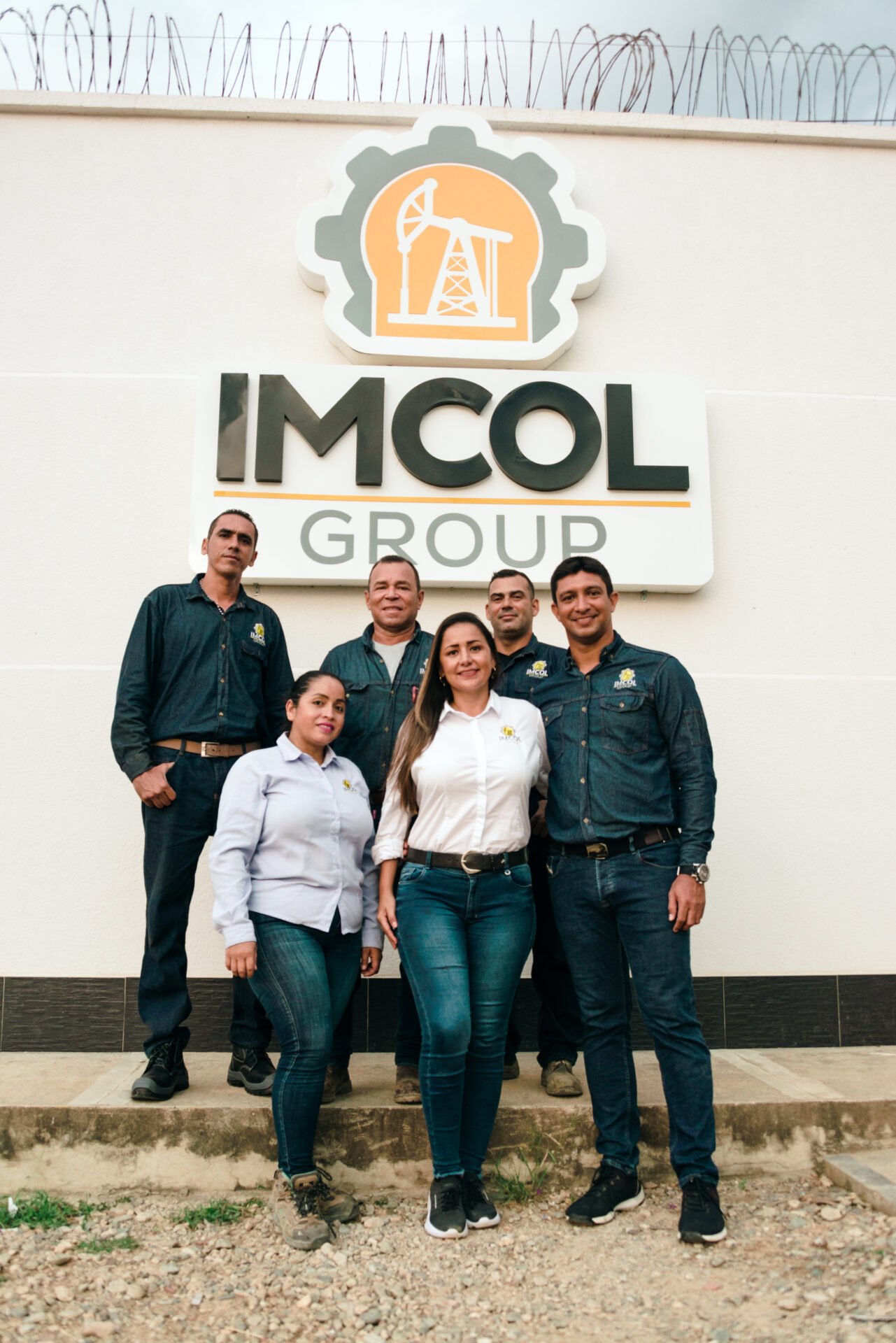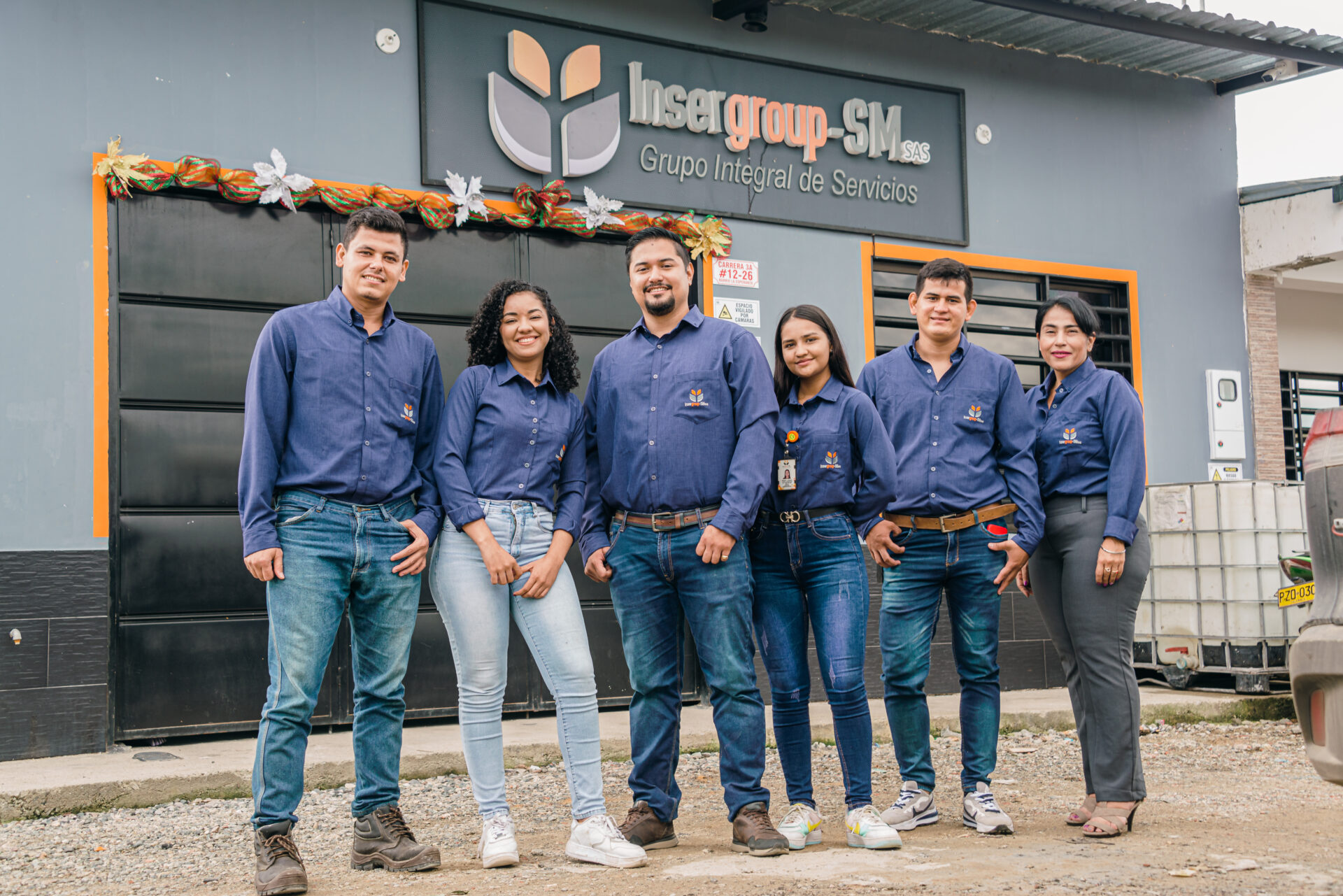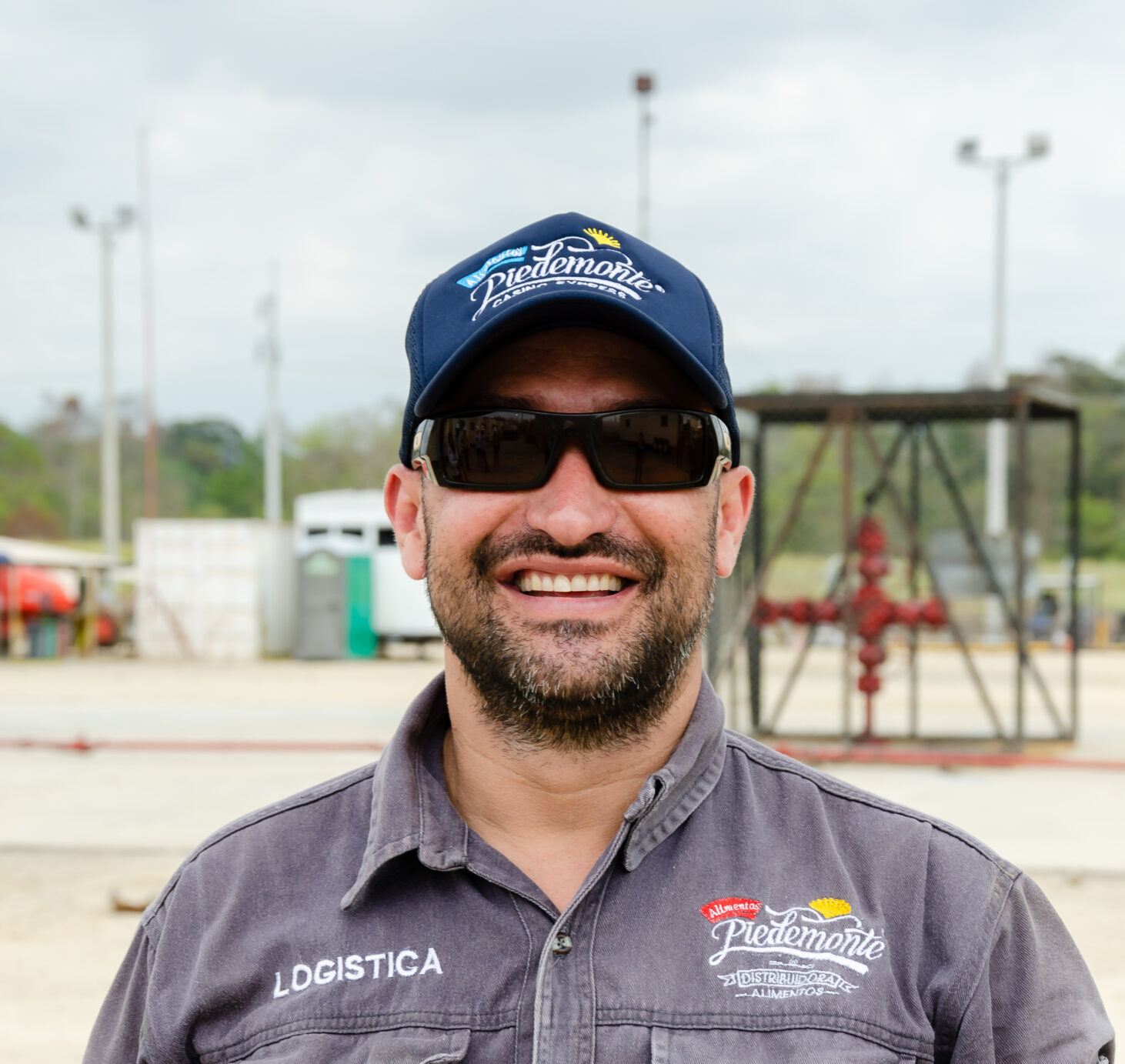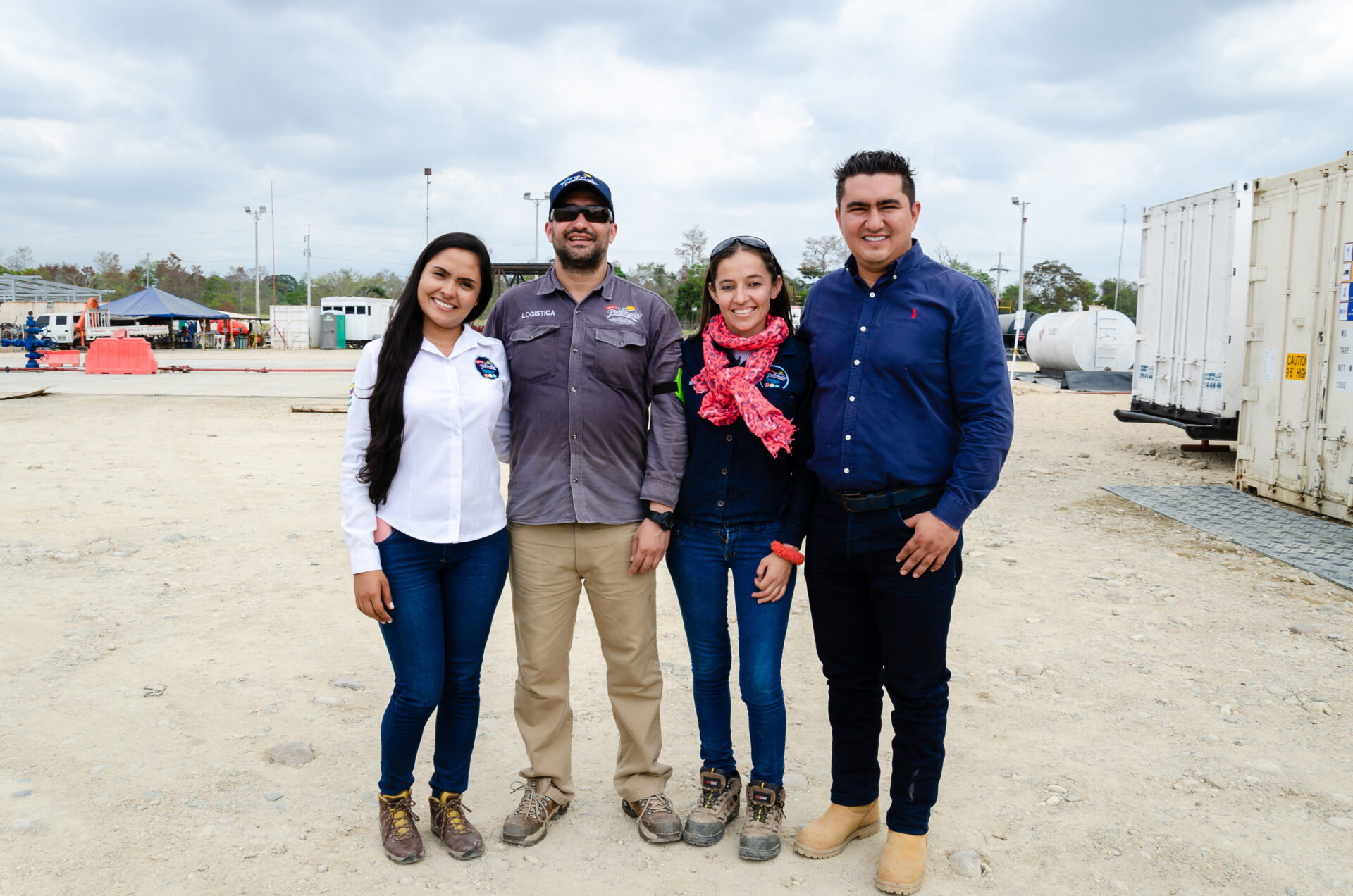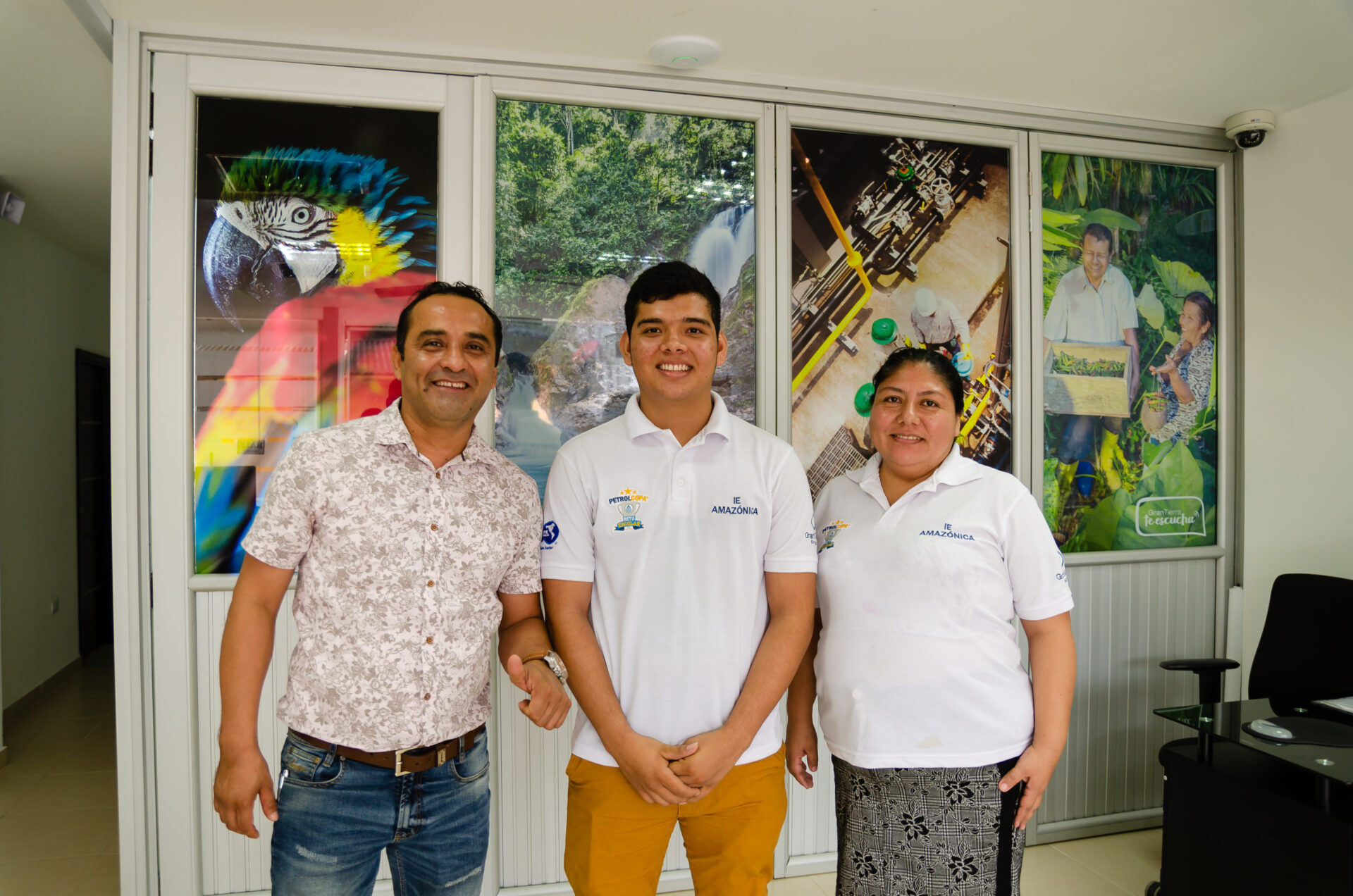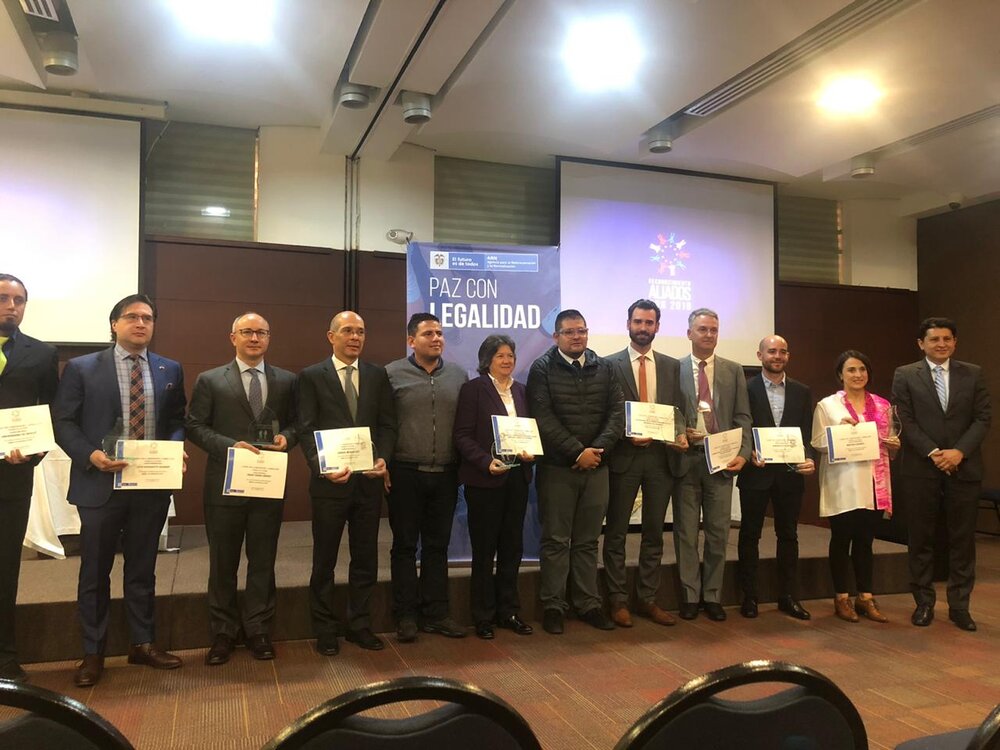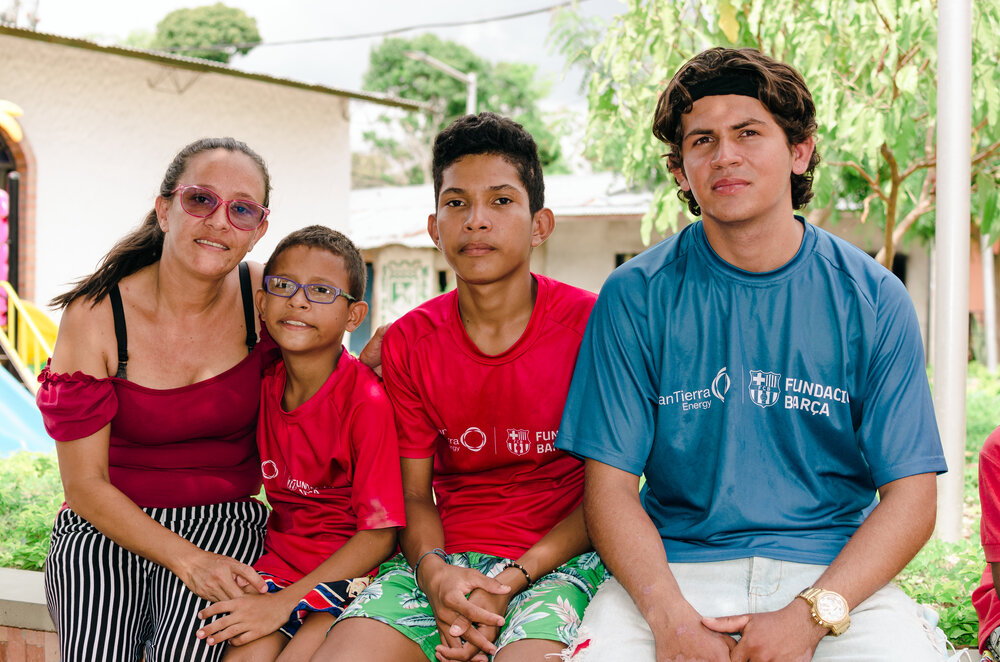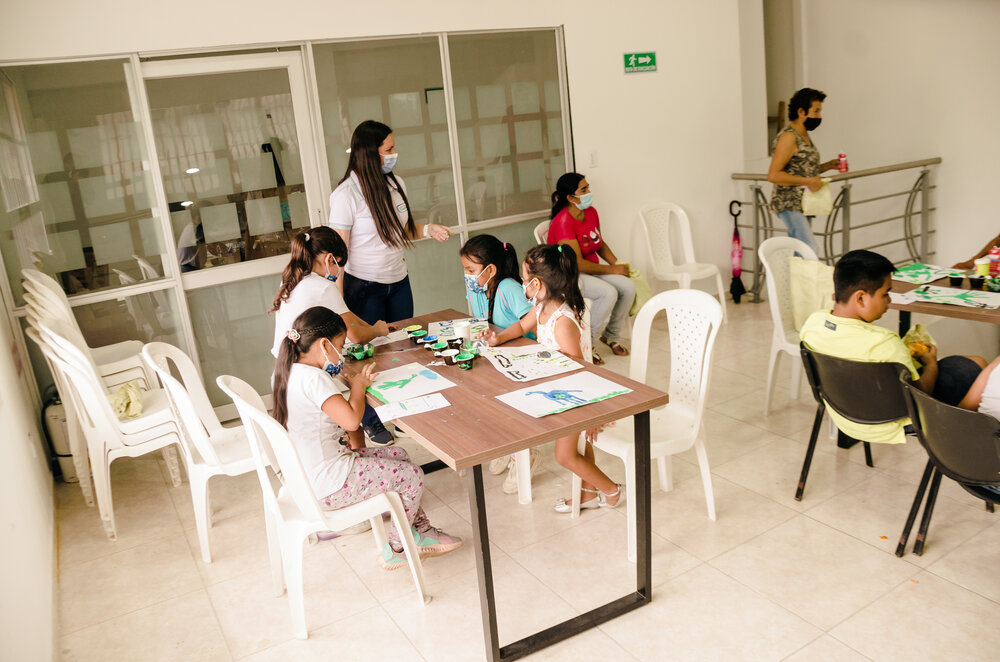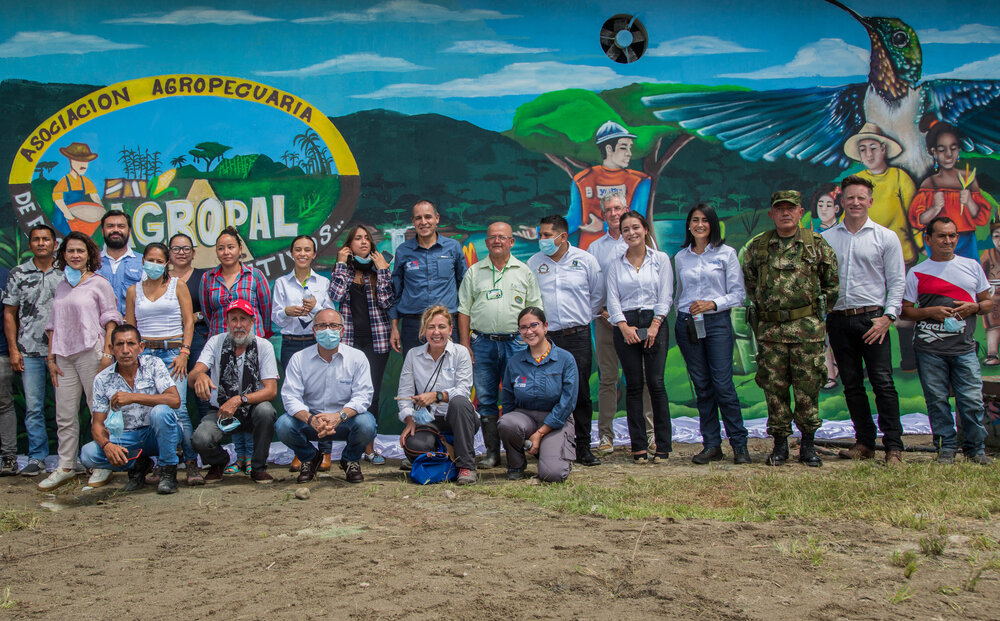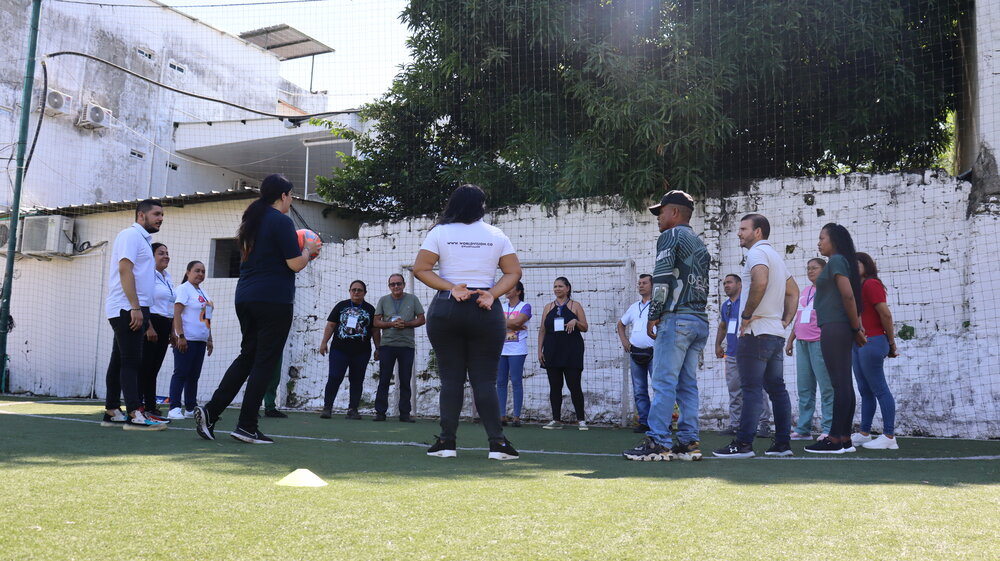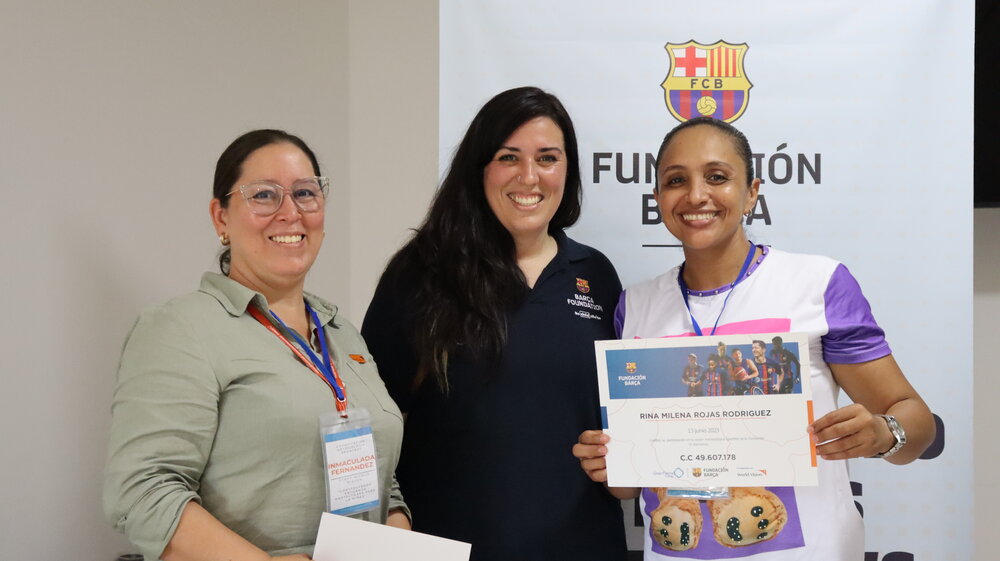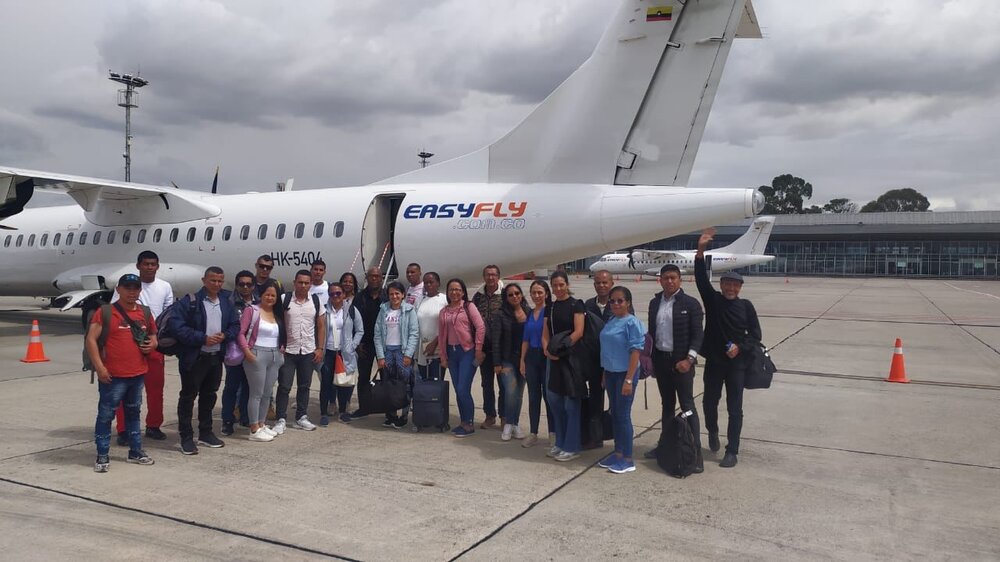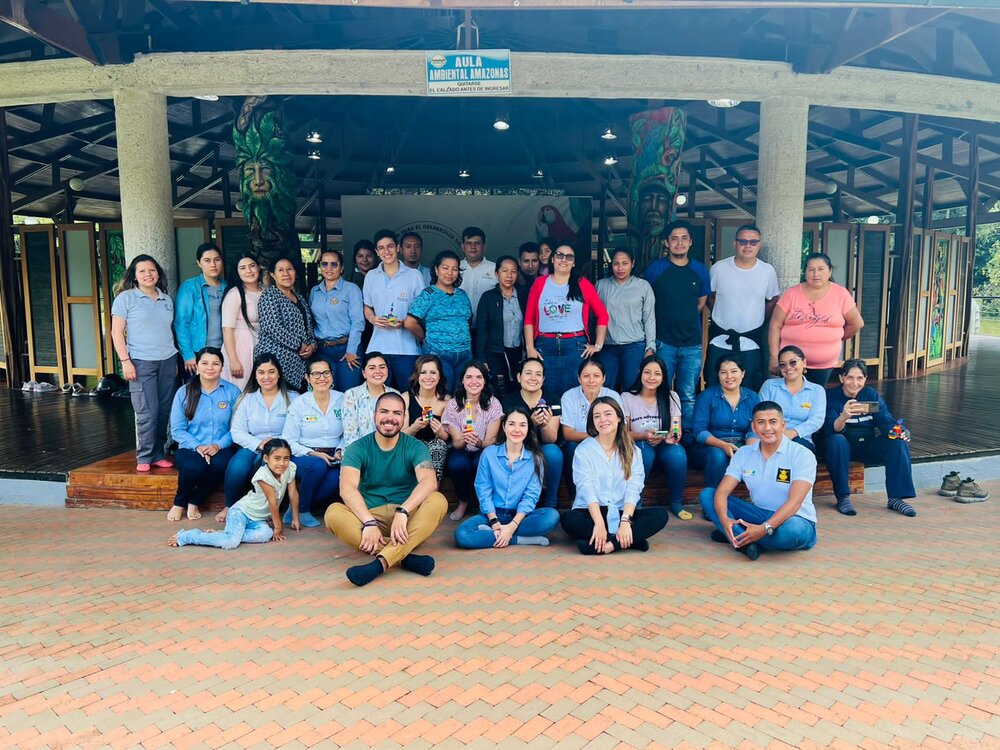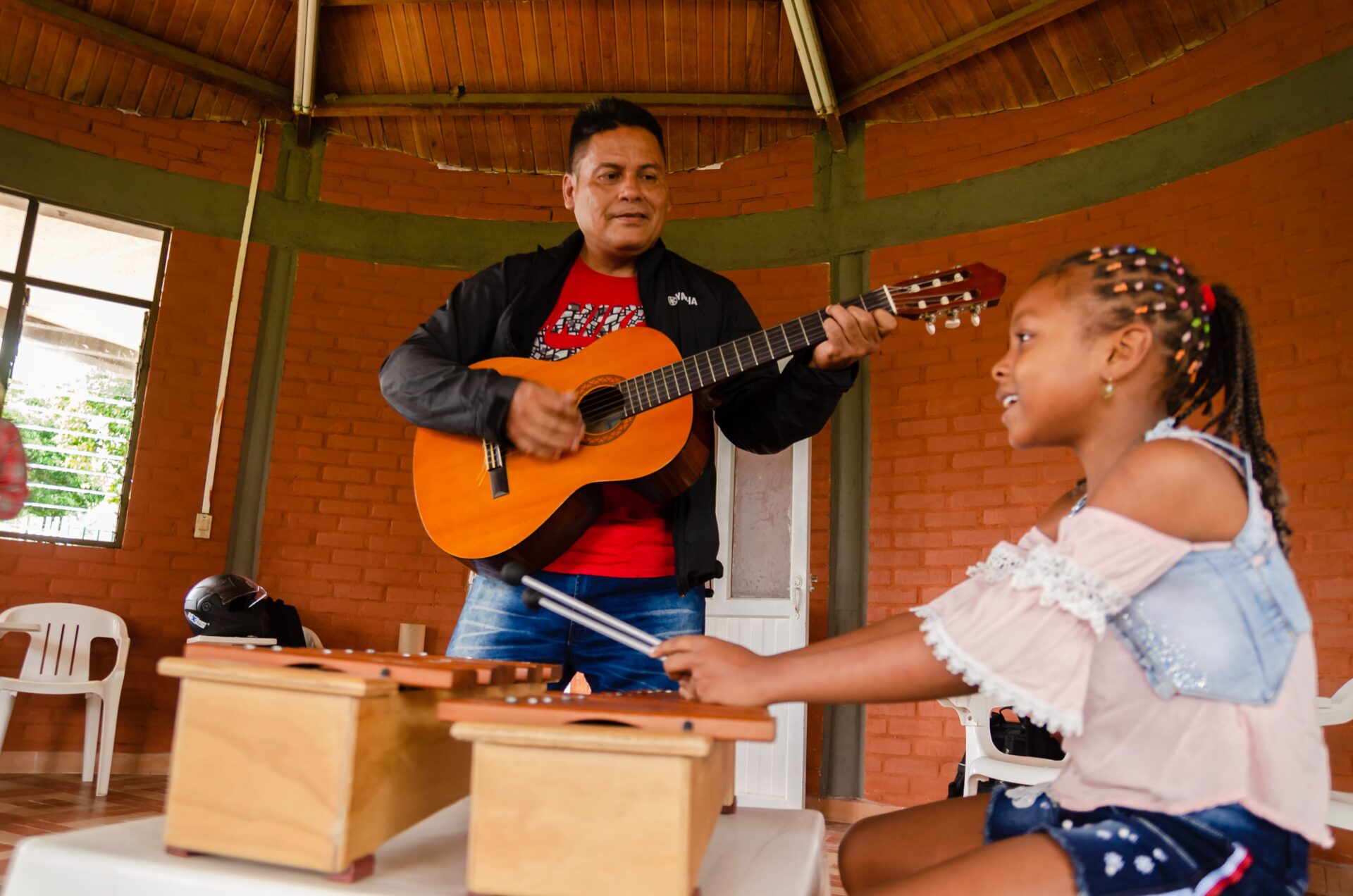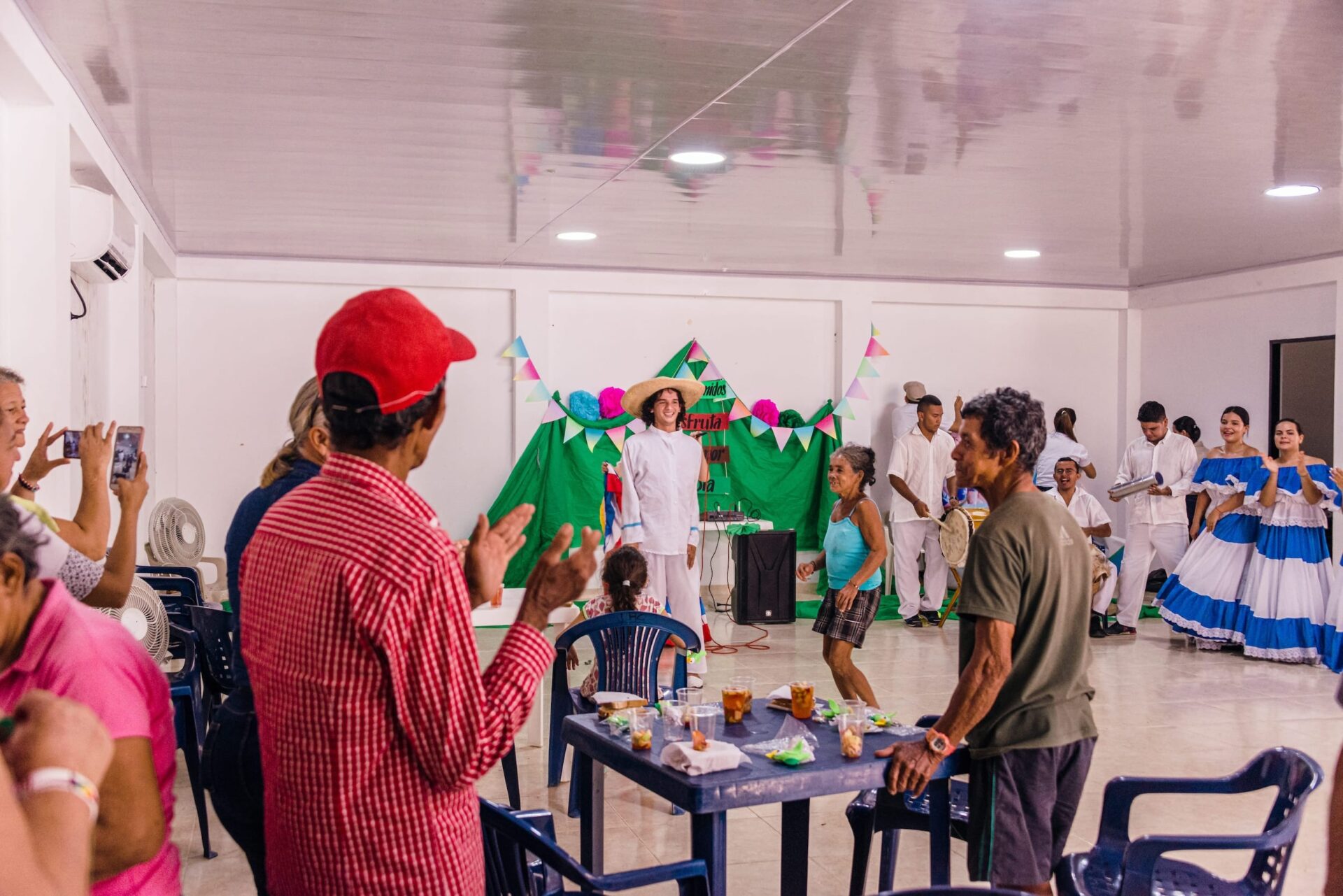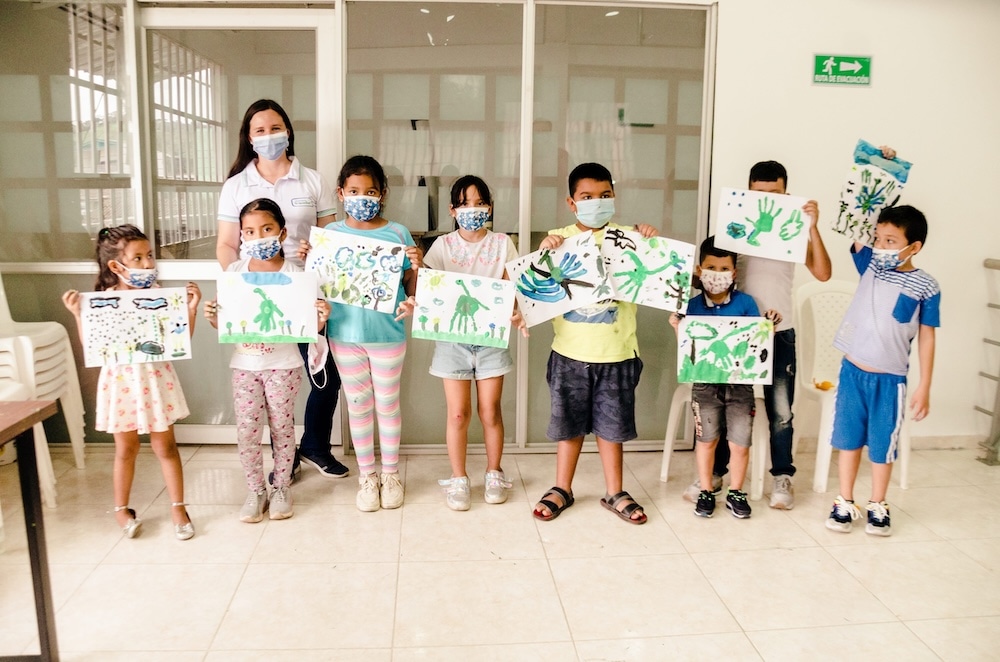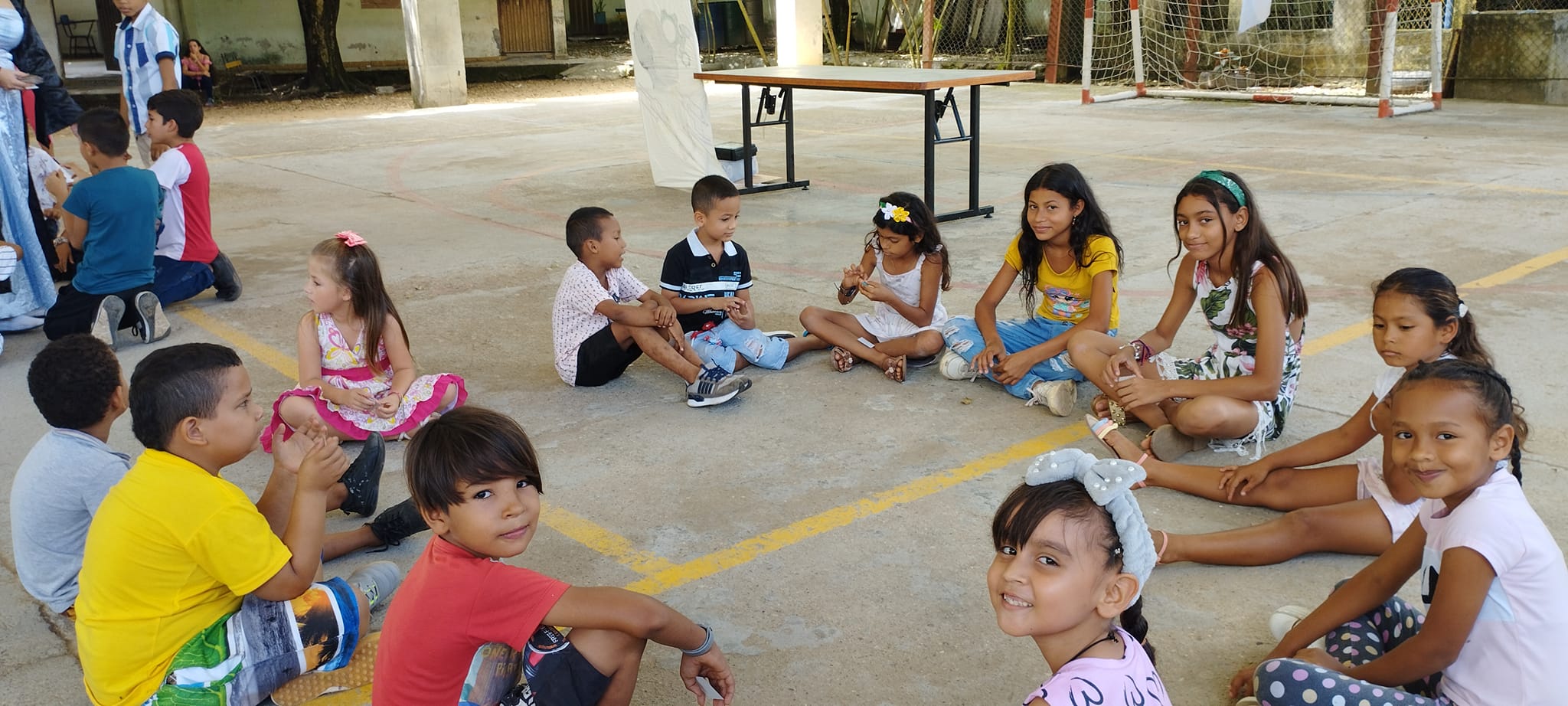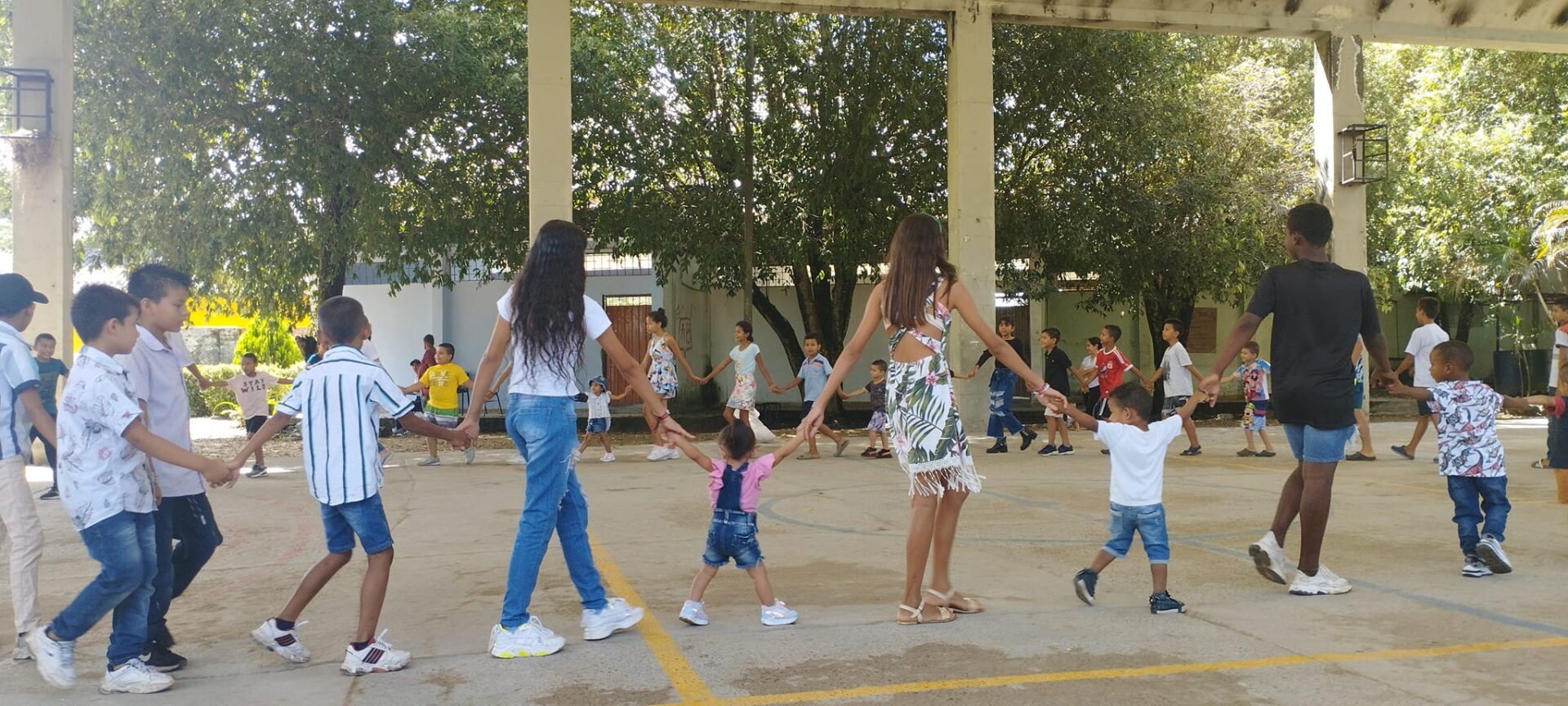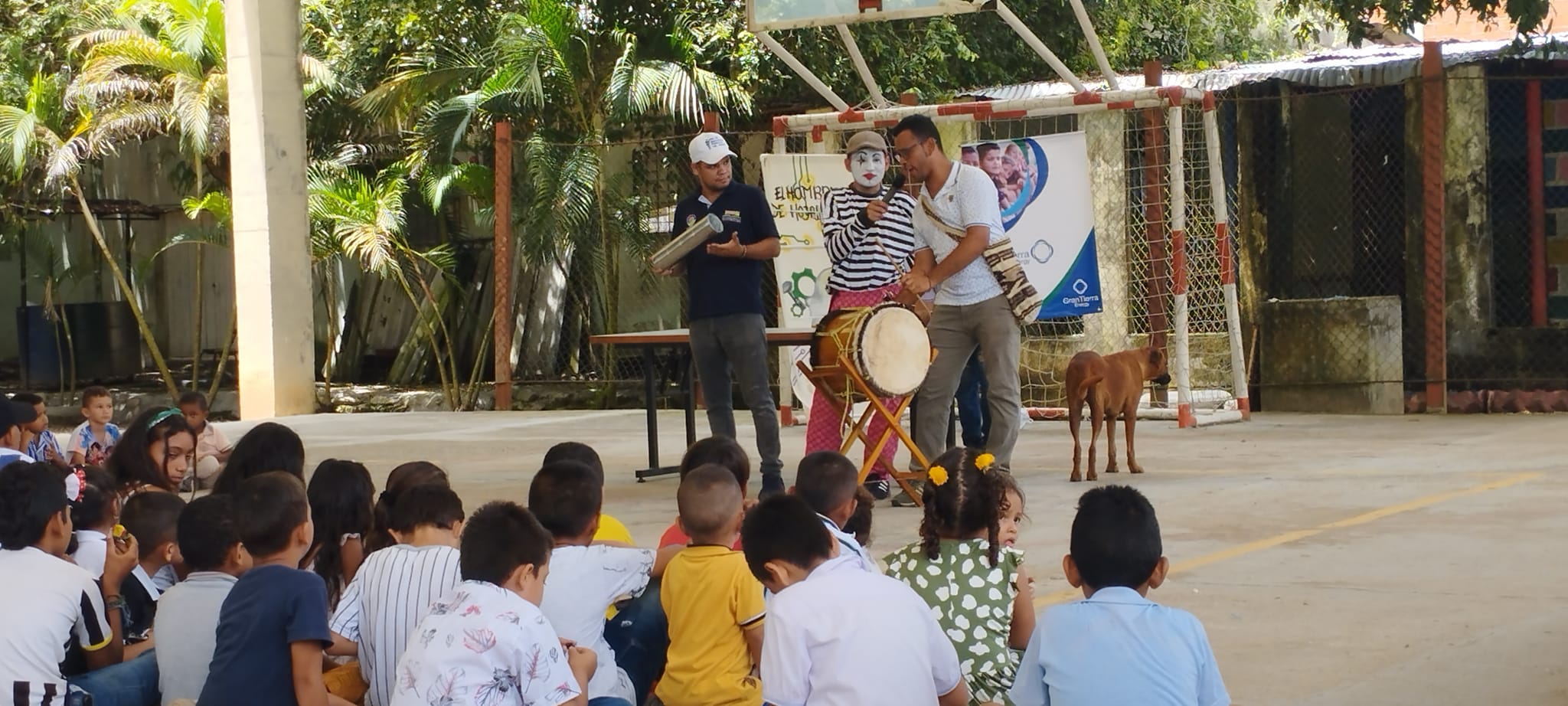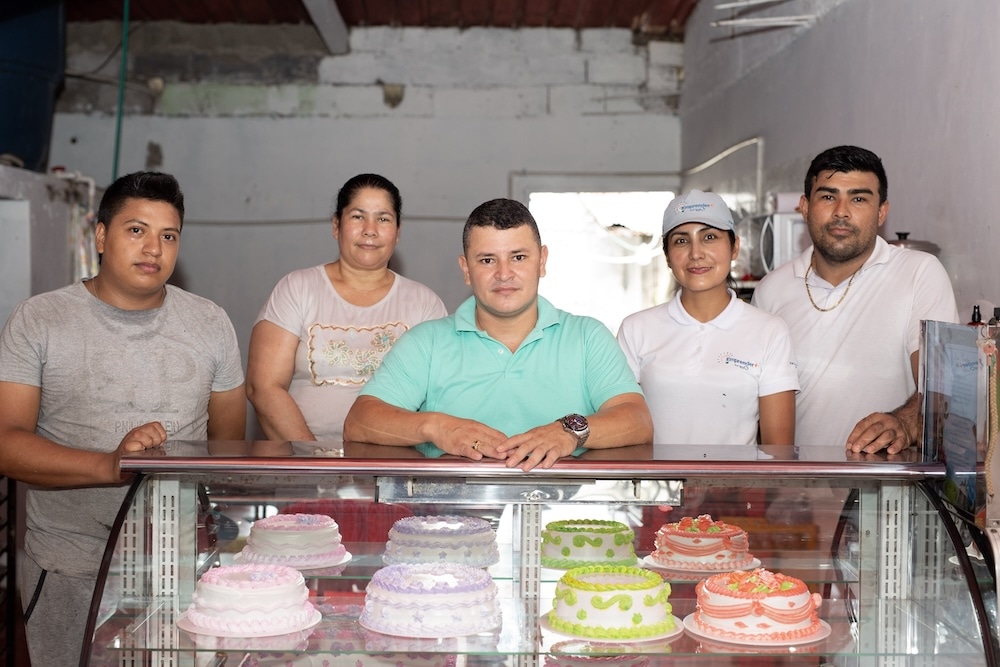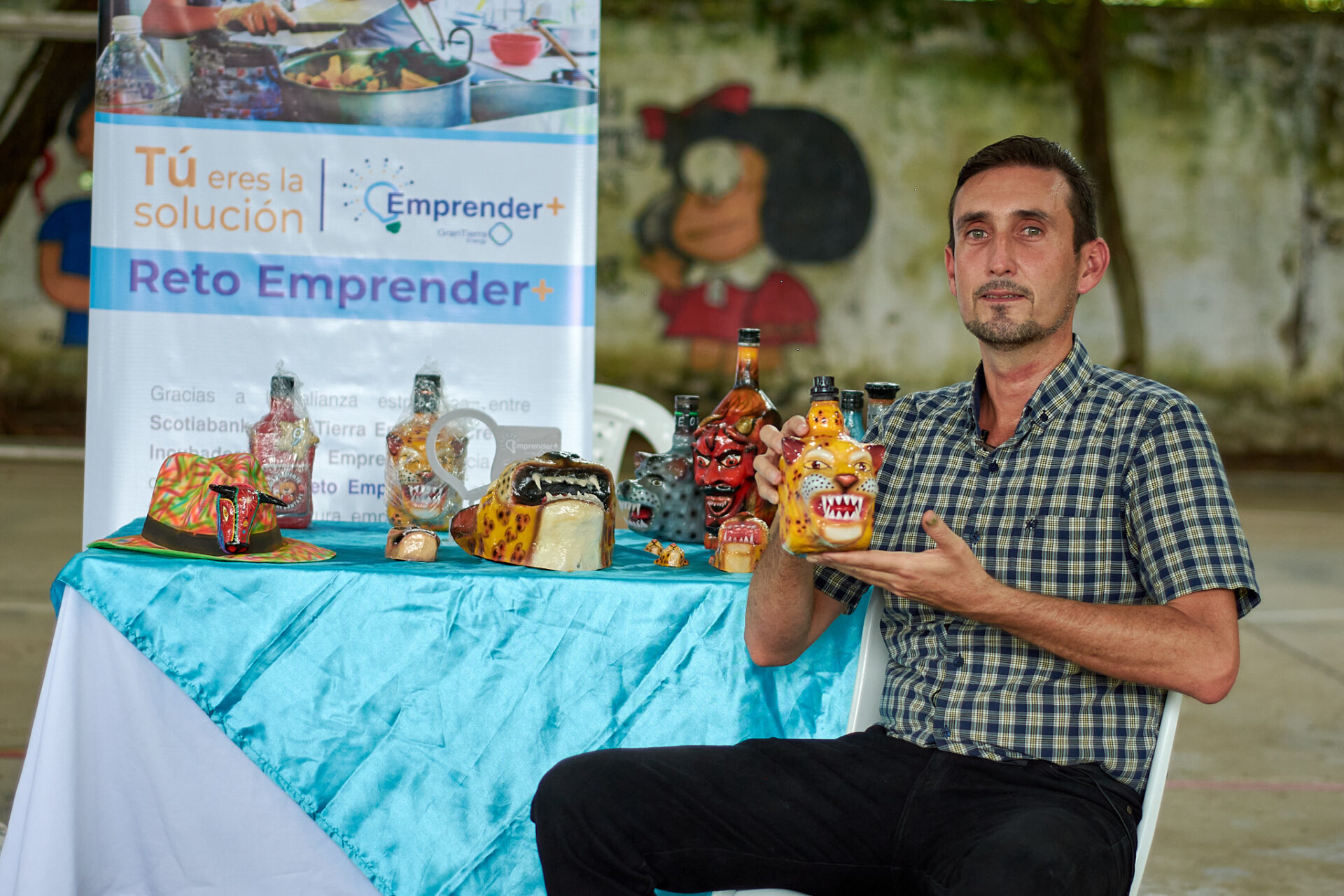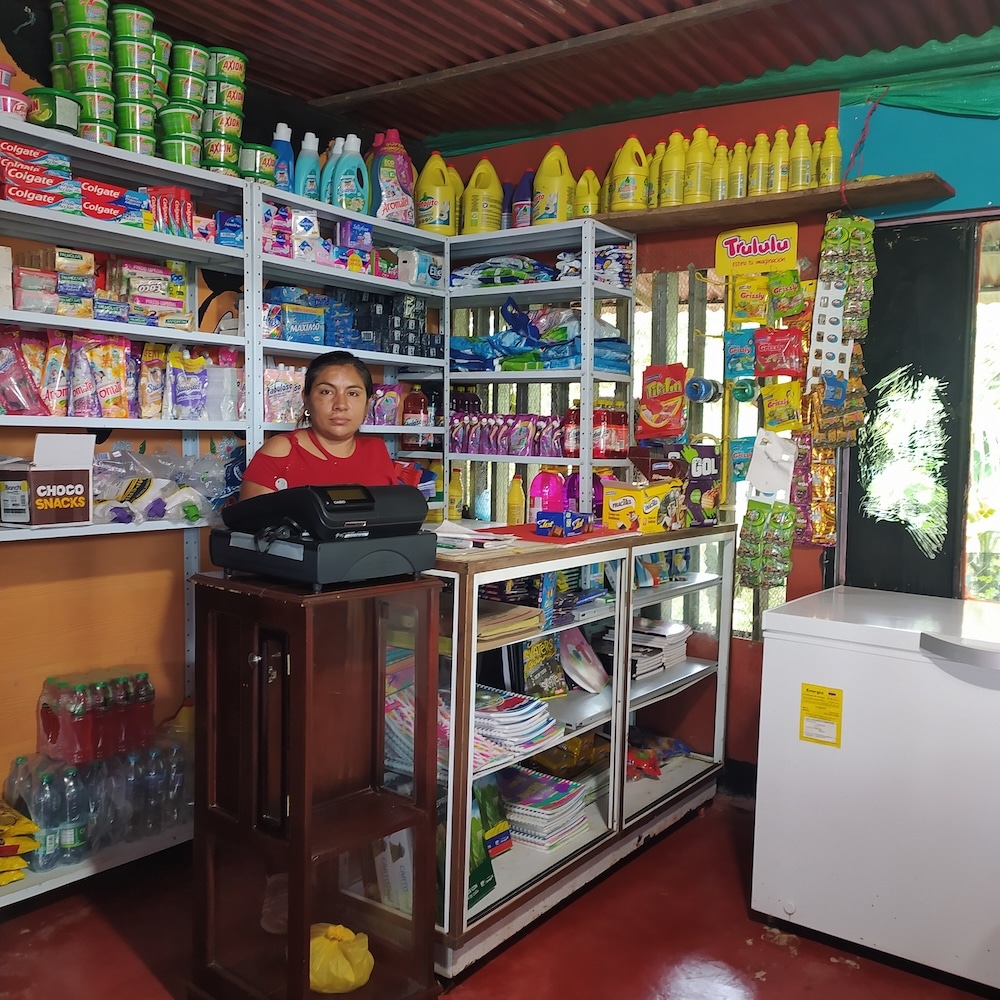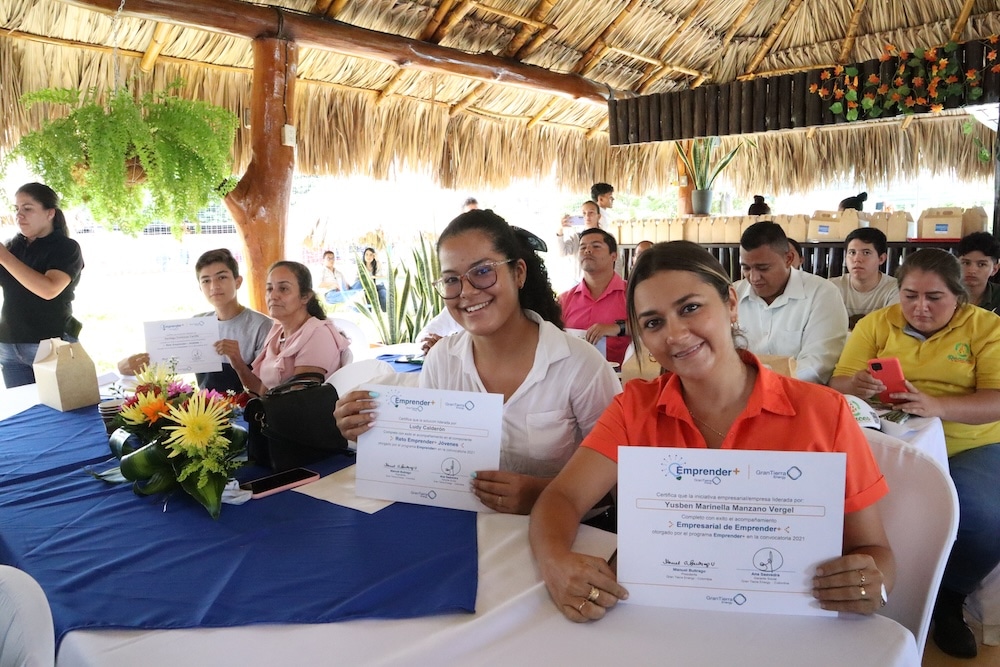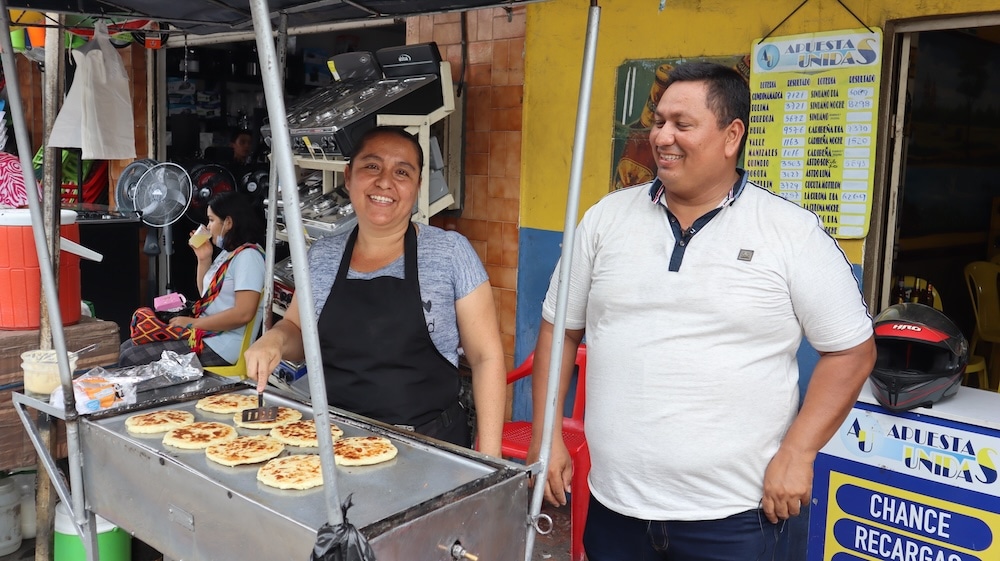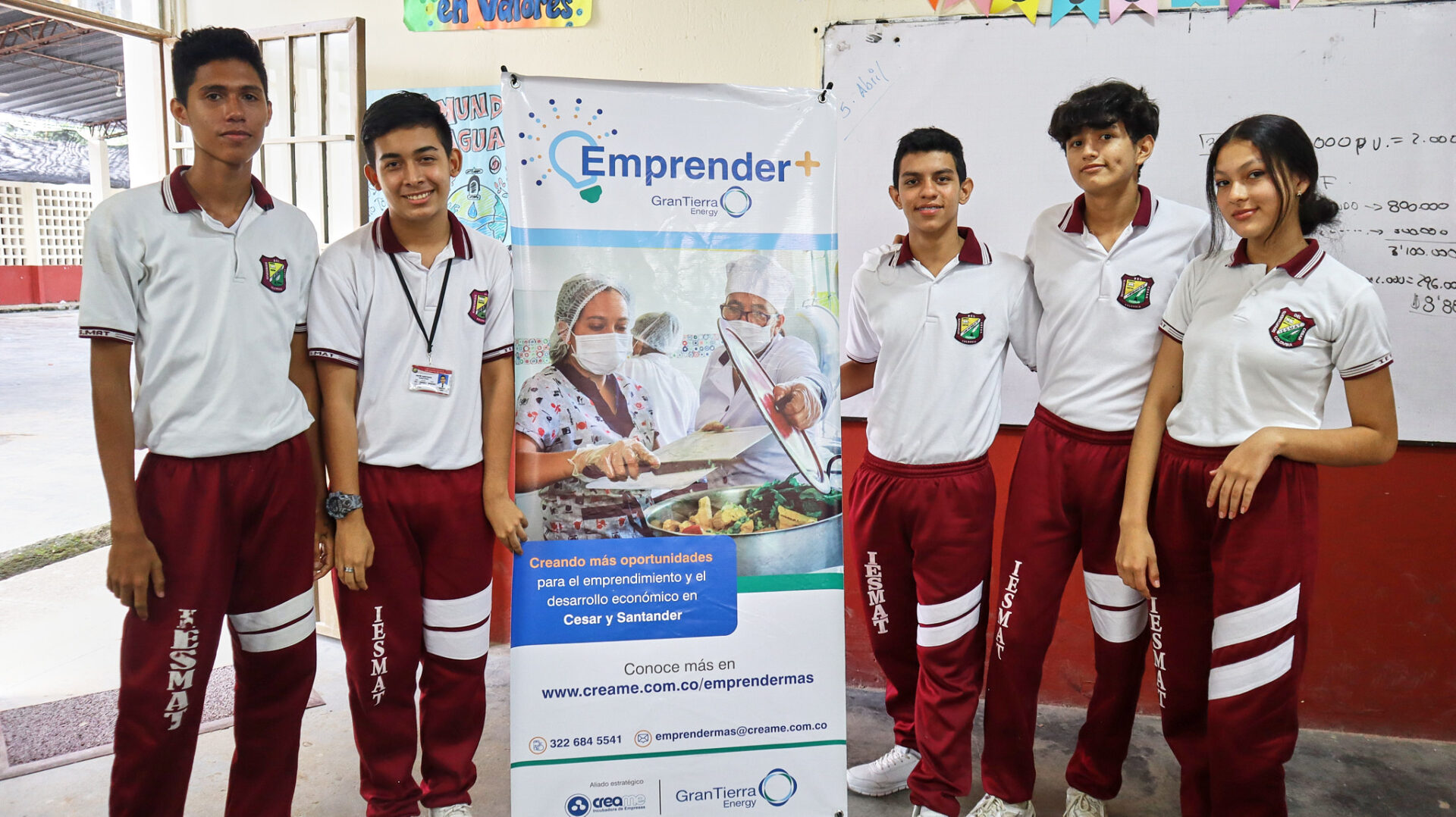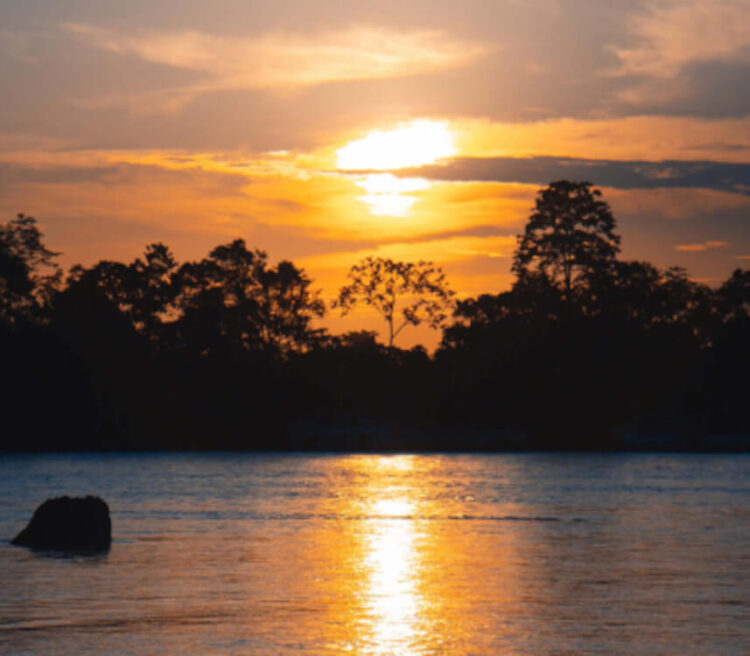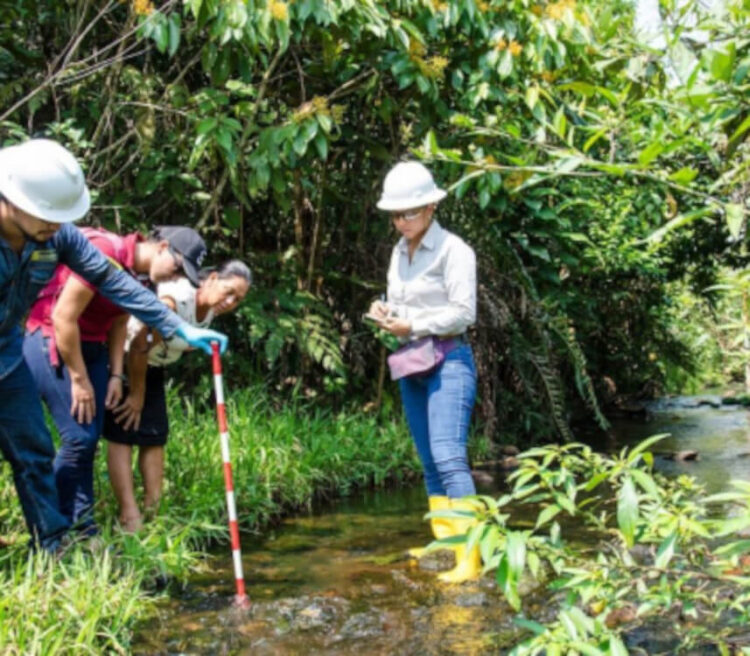Latest News
6 December 2024
5 December 2024
31 October 2024
Corporate Presentation
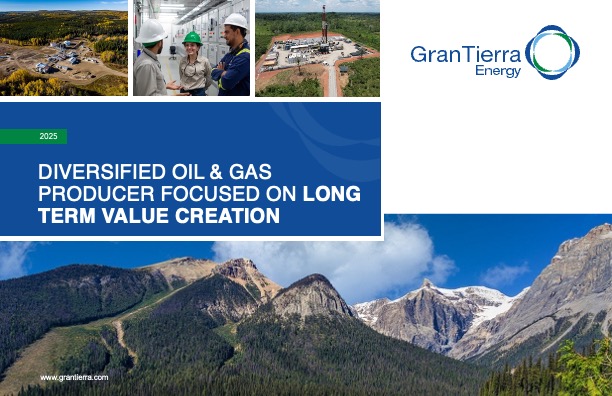
Latest Reports
Our Commitment to Shareholders
“GTE’s foundation is built on running a profitable and stable business while responsibly maintaining and growing a high-quality portfolio.”
– Gary Guidry, President and CEO, Gran Tierra Energy
Environment Spotlight
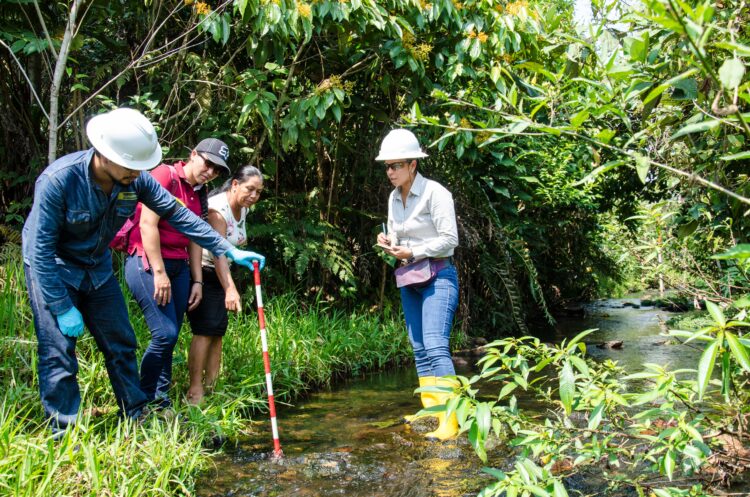
Inviting Communities to Participate in Water Monitoring
Social Spotlight
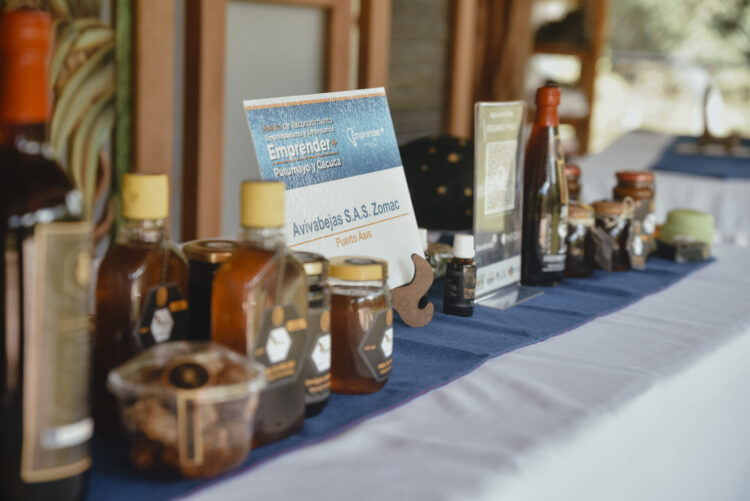
Gran Tierra’s Emprender+ Program
Governance Spotlight
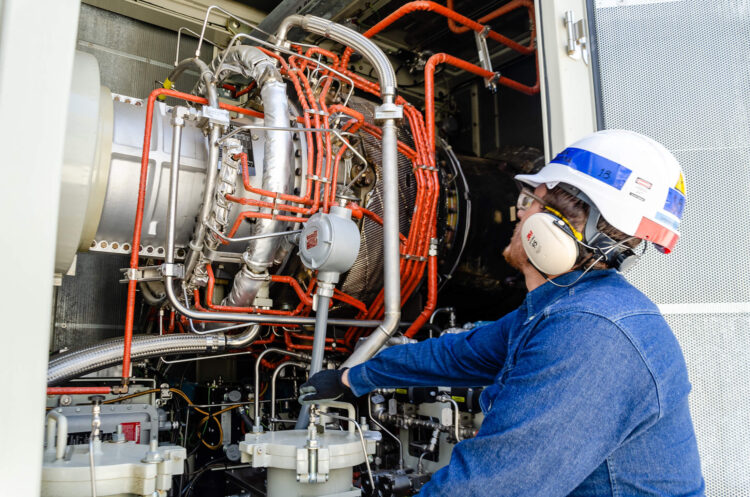
Gran Tierra’s Commitment to Governing our Business Ethically
SWIPE FOR MORE
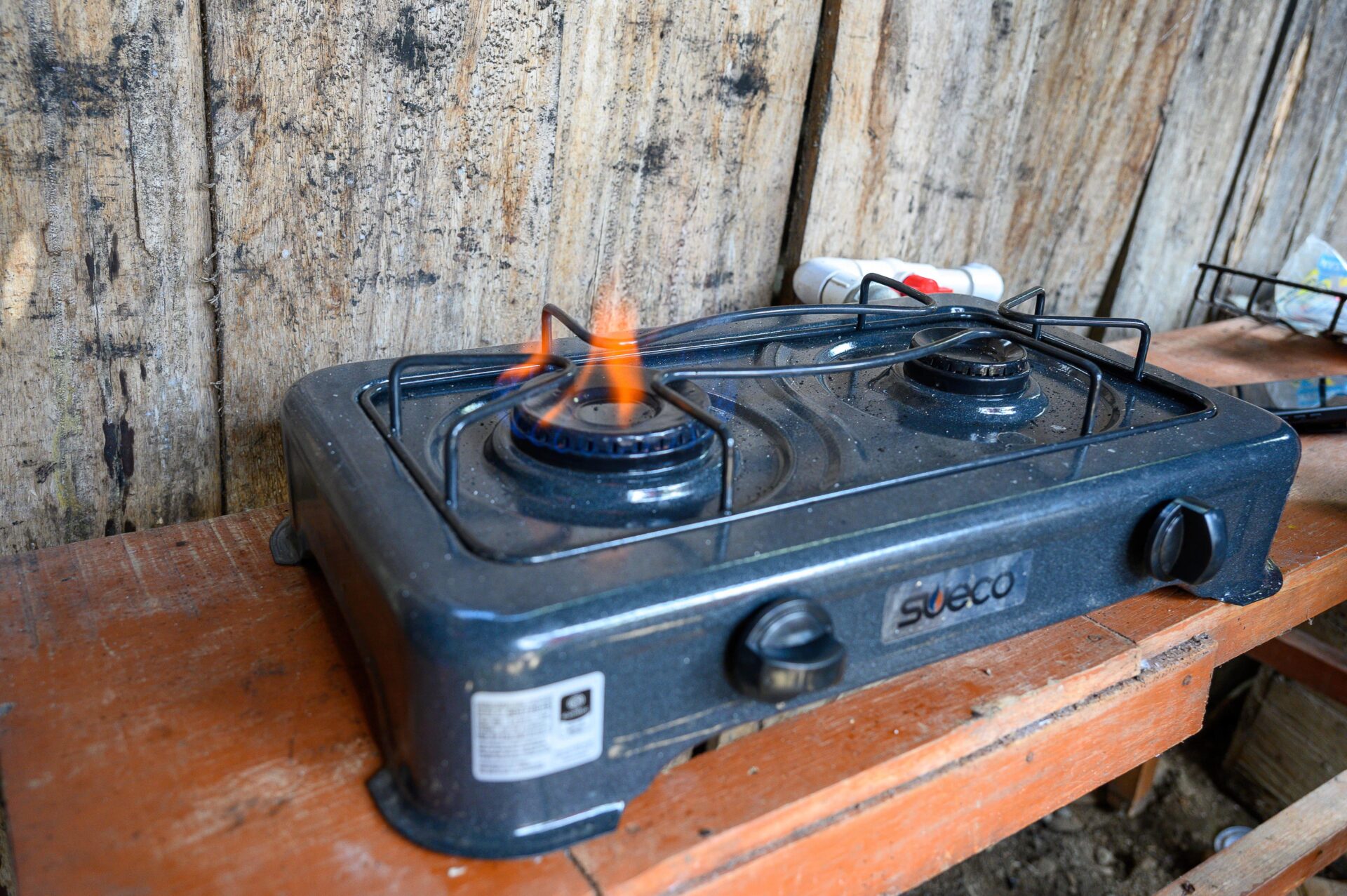
Transforming Residual Wastewater into Biogas
Within the Acordionero Forestry Centre, Gran Tierra Energy installed residential-scale anaerobic biodigesters. Biodigesters are systems that break down organic materials, such as food waste, agricultural residues, animal manure and wastewater, through a biological process called anaerobic digestion.
In many rural Colombian villages, untreated wastewater flows through open sewers, creating serious health and environmental risks—especially during the rainy season. At the same time, limited access to propane forces many households to rely on firewood, contributing to deforestation, air pollution, and causing significant adverse health effects.
To tackle these dual challenges, GTE partnered with Antonio Nariño University to install 13 residential-scale anaerobic biodigesters in the Putumayo villages of Carmelita, Puerto Vega, and Remolinos. These systems treat wastewater organically and produce biogas for nearly 40 households and a school. This technology demonstrates how a thoughtful design can create lasting environmental, social, and economic impacts.
This initiative, which satisfies Colombia’s requirement that 1% of project budgets be invested into environmental initiatives, demonstrates how a thoughtful design can create lasting environmental, social, and economic impacts. Encouraged by the project’s success, plans are underway to expand it to additional municipalities.
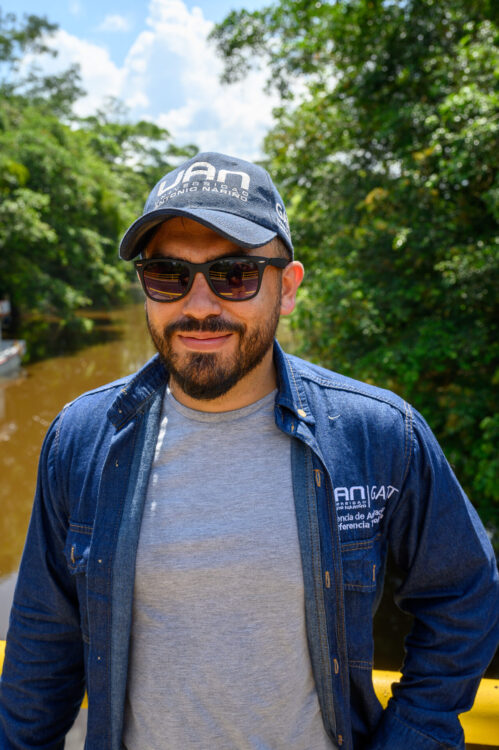
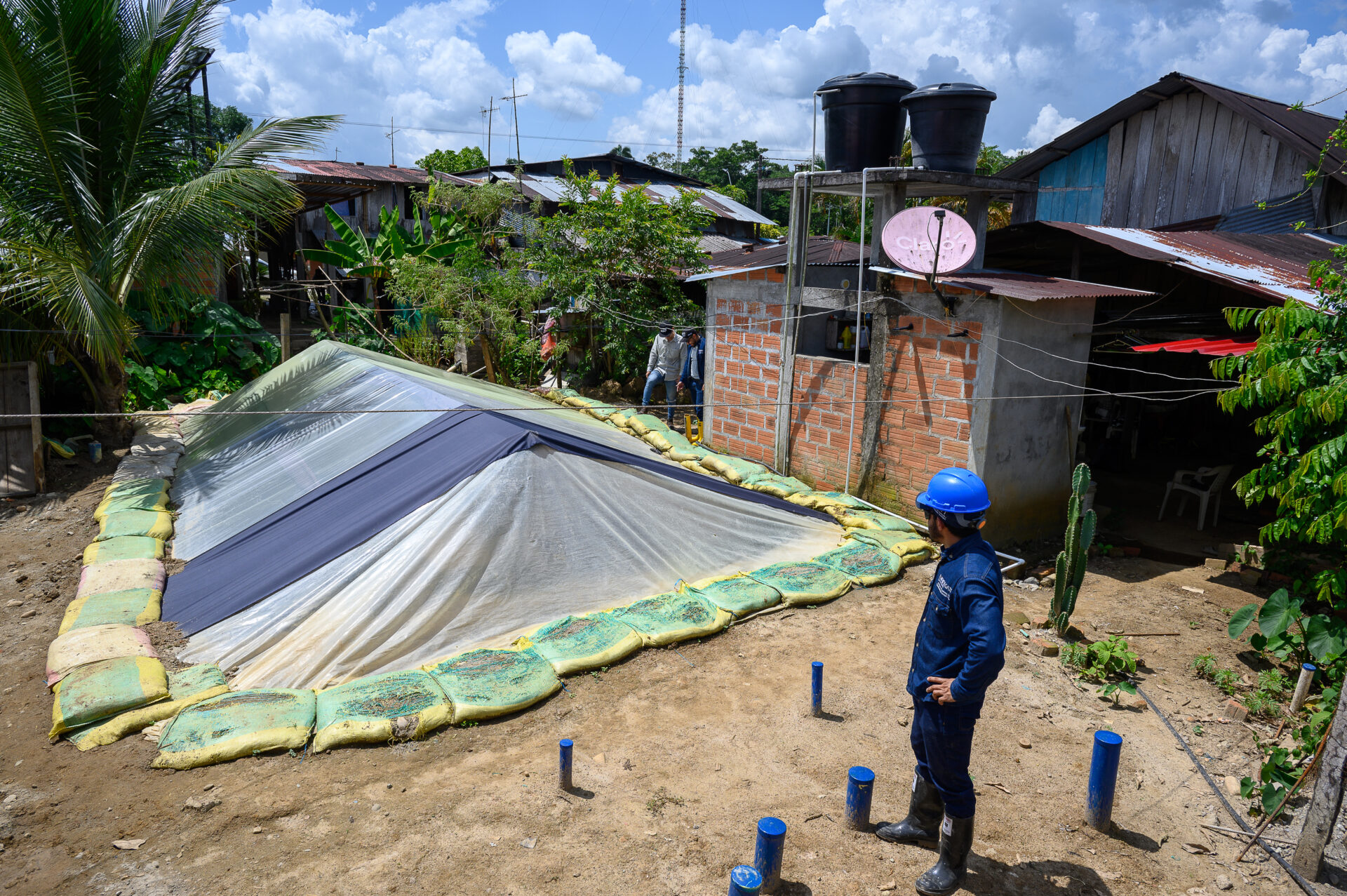
Bringing Safe Drinking Water to Rural Colombia
In remote villages of Putumayo, Colombia, where government support is limited, access to clean water remains a persistent challenge, exposing families to waterborne diseases and other health risks. To help close this gap, GTE partnered with the international NGO Ayuda en Acción to launch the Water for Communities initiative in October 2024.
The project will install a new water treatment system to ensure safe water access to thousands of residents across ten villages along the Puerto Vega–Teteyé corridor. Additionally, a community-based water laboratory and training centre will be established to help residents learn how to manage and preserve water resources sustainably.
As implementation begins in 2025, a central focus will be on training local residents to maintain the systems, ensuring long-term access to safe drinking water. This initiative complements an aqueduct system, also funded by the Company, through Colombia’s Works for Taxes program, which will bring potable water to another 1,300 residents in rural areas near Puerto Asís.
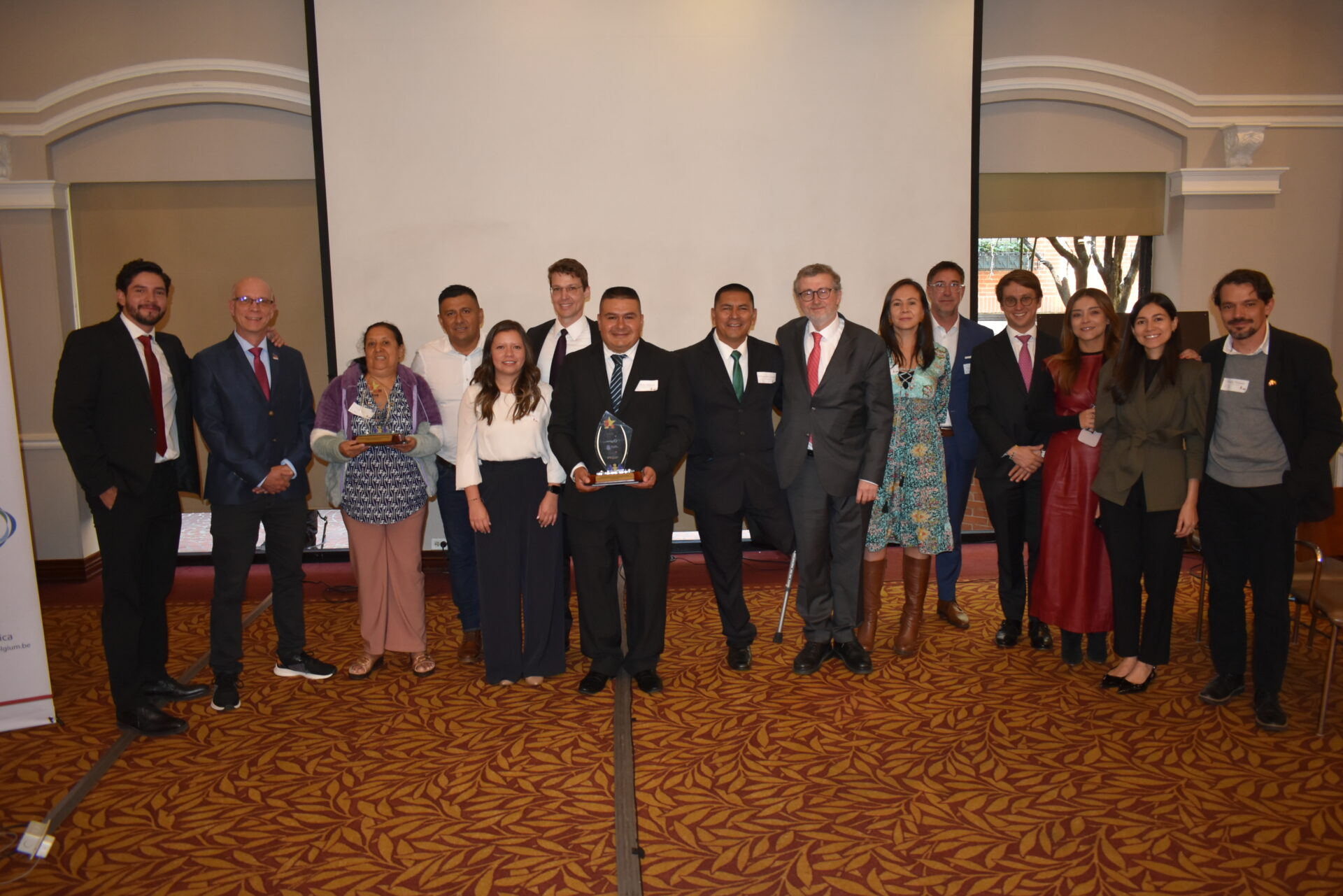
GTE Supports Prestigious Camina Award 2024, Honouring Champions for Peace
In December 2024, GTE joined the Embassies of Belgium and Canada and the Colombian Campaign Against Landmines to present the eighth CaMINA Award. This award honours community organizations working to support landmine victims and promote peace in Colombia.
This year’s winners were the Association of Veteran Survivors of the Armed Conflict of Cauca, “Path of Peace,” for helping disabled military veterans rebuild their lives, and Guillermo Murcia Duarte, recognized for his efforts to improve the rights and inclusion of landmine survivors.
GTE’s role in this award reflects its ongoing commitment to demining in Putumayo, where it works with its partners to clear landmines and help people regain safety and freedom of movement.
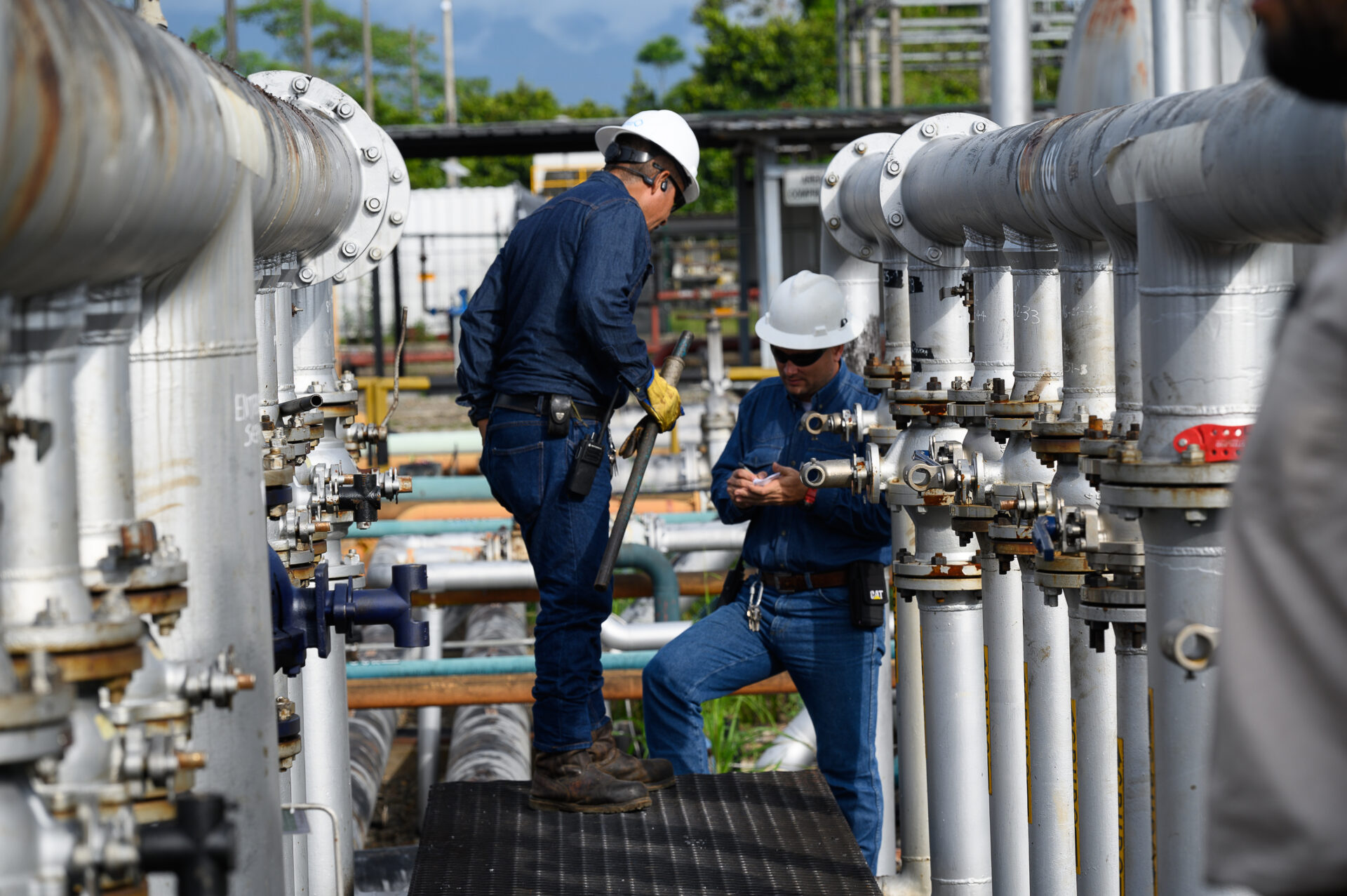
Preventing Fugitive Emissions Across our Operations
Gran Tierra Energy continues to advance its emissions reduction strategy across all areas of its operations in Canada, Colombia and Ecuador. As part of its commitment to operational integrity and environmental responsibility, GTE conducted a fugitive emissions survey in Colombia in 2024, identifying and repairing several small leaks. In Ecuador, the Company is developing a greenfield project with infrastructure designed early on to meet the highest environmental and operational standards. Advanced detection technologies in Canada are implemented to monitor and reduce fugitive emissions from its assets.
These regionally tailored initiatives for each country are part of GTE’s broader effort to integrate low-emission technologies wherever possible, as well as proactive maintenance practices across its asset base. The Company is replacing high-bleed pneumatic devices with solar-powered alternatives, optimizing infrastructure to reduce venting, and expanding the use of aerial and ground-based methane detection systems. Together these actions support GTE’s commitment to continuous environmental performance improvement and long-term sustainability of its operations.
Methane Reduction
Gran Tierra Energy is committed to reducing methane emissions across its operations by leveraging advanced technologies, improved monitoring systems, and infrastructure upgrades. The Company has implemented a variety of initiatives, including Leak Detection and Repair (LDAR) programs, third-party verified monitoring, and equipment electrification to reduce fugitive emissions. These initiatives are tailored to the regulatory context and operational realities of each country in which GTE operates.
The following sections highlight GTE’s methane reduction actions in Colombia, Canada, and Ecuador:
Colombia
GTE implements a government-approved LDAR program, using third-party Optical Gas Imaging (OGI) camera inspections to identify and repair leaks. In 2024, a full fugitive emissions survey further supported these efforts. Generation equipment is strictly monitored for gas quality compatibility, reducing emissions through efficient fuel use. Since 2019, methane emissions in Colombia have dropped by 37%, from 5,971 to 3,762 tons.
Canada
In Western Canada, GTE uses aircraft-mounted Light Detection and Ranging (LiDAR) systems and has replaced 519 high-bleed gas pumps with solar-powered units across 255 sites. These upgrades, along with site electrification and equipment replacement, have cut fugitive emissions by over 50% since 2023 and reduced total emissions by approximately 17,000 tCO₂e annually.
Ecuador
In Ecuador, GTE is developing a greenfield project with infrastructure designed to meet the highest environmental standards from the outset. The Company complies fully with government requirements on emissions, including methane, ensuring the project is equipped for low-emission operations once active.
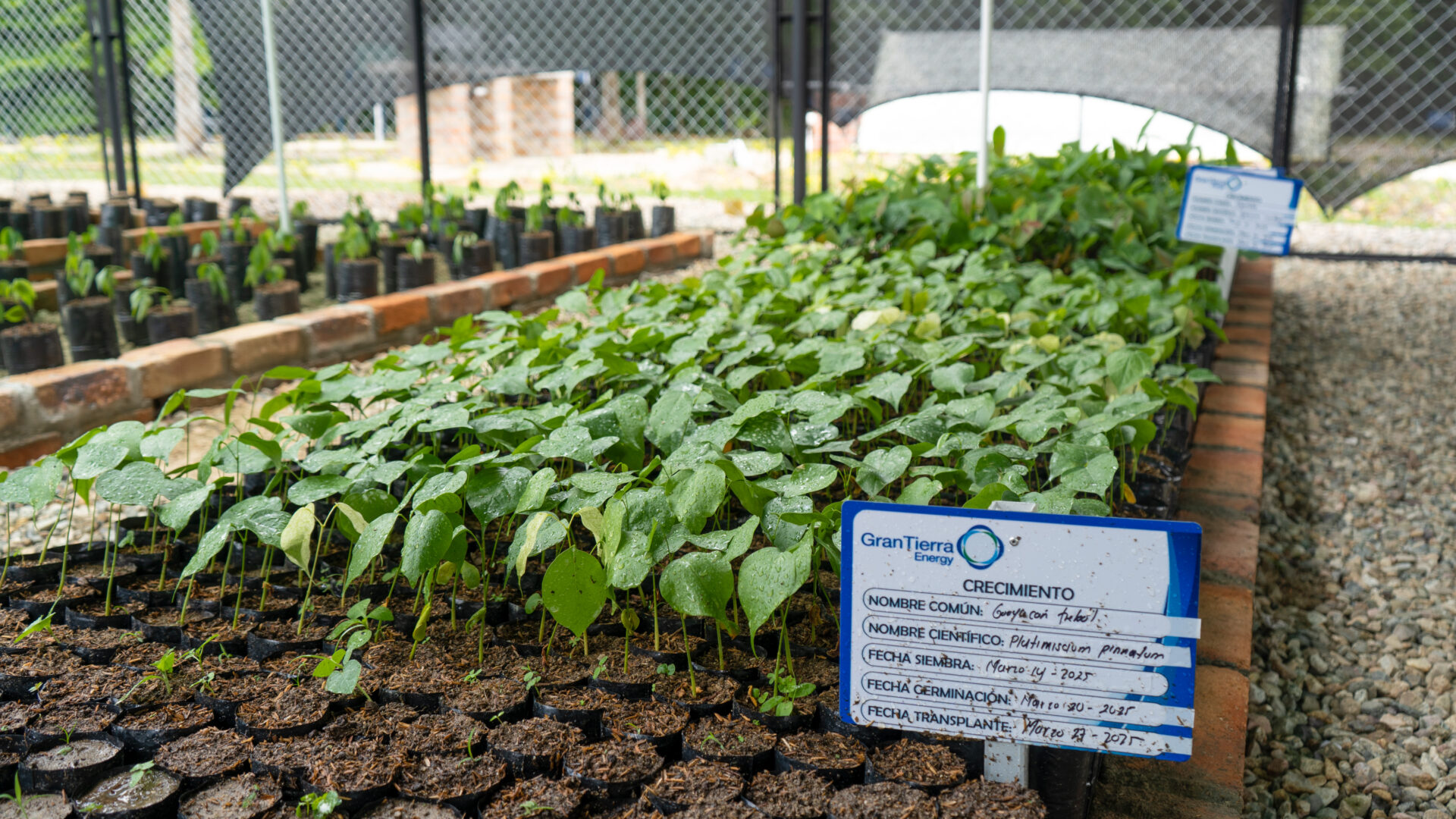
The Acordionero Forestry Centre
Gran Tierra Energy has officially opened the Acordionero Forestry Centre (AFC), a 185-hectare environmental innovation hub located in El Cairo village, a strategically important conservation zone in Cesar. It is Gran Tierra’s hope that AFC will play a key role in restoring forest corridors and preserving water bodies thar provide water to the surrounding communities. Nearly 11,000 native trees have already been planted at the Centre, reinforcing the Centre’s contribution to ecosystem recovery in the region. The AFC has also been designed to test and implement sustainability efforts aimed at long-term environmental resilience and regional economic development.
The Centre is located between two interconnected, biodiverse forested areas, through which more than 100 bird species have been recorded travelling. While the geography and ecosystems are different from Costayaco, the location allows the Centre to restore forest corridors and preserve river-based water sources for nearby communities. The AFC also includes a forest nursery for the restoration of native species of plants and trees. Currently, the nursery is producing approximately 9,000 plants per month, that are used to conserve the surrounding forest and are being donated to local families.
Aquaponics
At the heart of this innovation hub is a solar-powered aquaponics system that merges fish farming with hydroponic plant cultivation in a closed-loop system. GTE and local community members, are testing innovative aquaponics systems as part of a broader effort to explore sustainable agriculture models that could enhance environmental and economic resilience in the region. The aquaponics system accelerates food production, with a small land footprint, and have the goal of increasing food security and lowering food costs for families in the region. Nutrient-rich water from tilapia tanks is used to irrigate and fertilize crops such as basil, cherry tomatoes, lettuce, and aromatic herbs—without the need for soil or chemical pesticides. The system recycles water continuously, achieving over 90% water savings compared to conventional agriculture, and is powered by solar energy to ensure operational efficiency and a low environmental impact.
Meliponiculture
The AFC also includes a meliponiculture initiative that plays a key role in biodiversity conservation by protecting and reproducing native stingless bees—essential pollinators that support the health and regeneration of local ecosystems. These bees assist in the pollination of both native forests and cultivated plantations, helping sustain biodiversity and agricultural productivity. The initiative is also promoting environmental education by raising community awareness about the ecological importance of bees, while creating opportunities for local businesses in the production of high-value medicinal honey and honey-based products. By protecting bees, the AFC is helping to safeguard entire ecosystems and secure a more sustainable future for the region.
Through the Acordionero Forestry Centre, Gran Tierra Energy continues to lead in environmental responsibility, by combining reforestation, water conservation, and community-driven initiatives to strengthen Colombia’s ecosystems and support local families.
Anaerobic Biodigesters
Within the ACF GTE installed residential-scale anaerobic biodigesters. This system treat wastewater organically and produces biogas, eliminating open sewage while providing energy that can be used for cooking. In many rural Colombian villages, untreated wastewater flows through open sewers, creating serious health and environmental risks—especially during the rainy season. At the same time, limited access to propane forces many households to rely on firewood, contributing to deforestation, air pollution, and causing significant adverse health effects. This technology, demonstrates how thoughtful design can create lasting environmental, social, and economic impact.
This Centre highlights how Gran Tierra Energy goes beyond compliance by integrating its environmental legal requirements and new innovative conservation initiatives. Through the Acordionero Forestry Centre, Gran Tierra Energy continues to lead in environmental responsibility, by combining reforestation, water conservation, and community-driven initiatives to strengthen Colombia’s ecosystems and support local families.
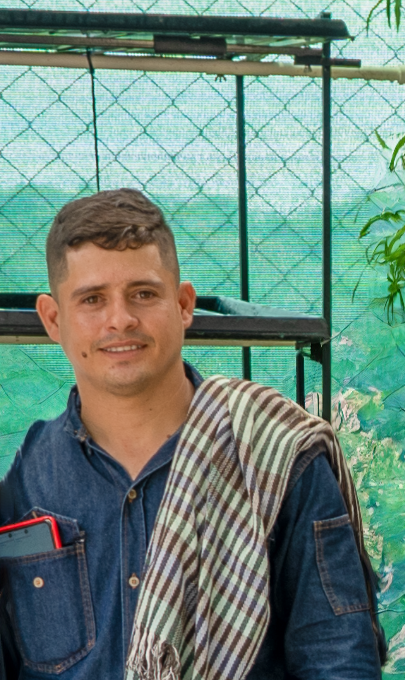
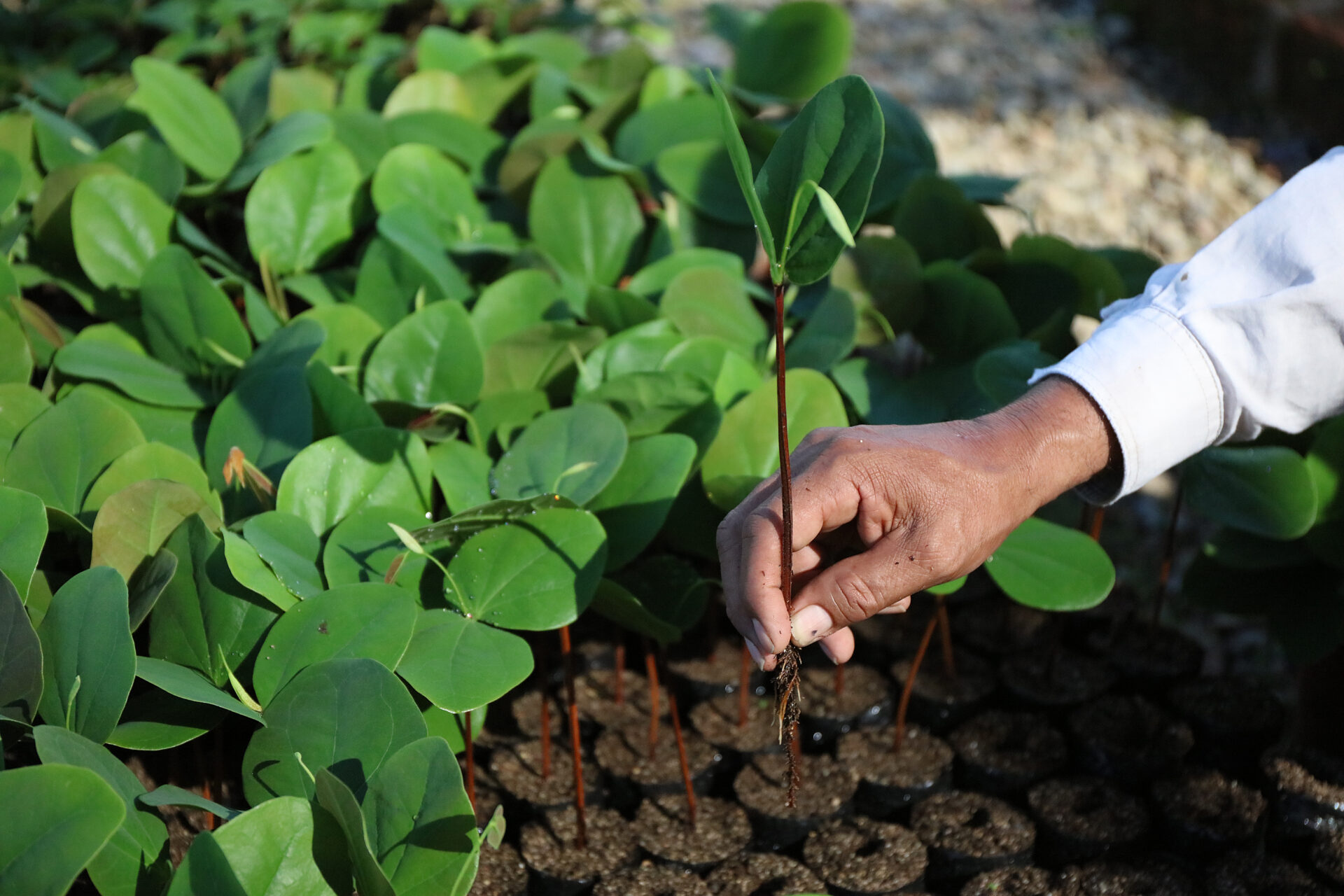
The Costayaco Forestry Centre
The Costayaco Forestry Centre (CFC) is one of the most innovative reforestation efforts in South America that has grown to 335 hectares, located near the Company’s production facilities in Putumayo. Established in 2010 in coordination with regional environmental regulator Corpoamazonia, the facility has grown into a significant habitat for butterflies, birds, large felines and other wildlife.
The Centre is strategically located in an important environmental corridor connecting the Andean foothills and Amazonian Forest ecosystems, serving as a focal point for the Company’s compensatory requirements as well as many of its voluntary environmental activities. After 10 years, the Company is very close to achieving its long-term goal of connecting the corridor to the foothills. The Centre, which was officially designated as a protected habitat and has been replicated around the country, also serves as a hub for nearby communities, hosting educational sessions, presentations and briefings.
A Source of Seedlings
The Forestry Centre has cultivated hundreds of thousands of seedlings providing local communities the capability to reforest their land with native trees. Residents have begun planting seedlings on their land, which over the years had been degraded by agriculture, animal husbandry, and other industries that damaged the natural habitats and sensitive ecosystems. The Centre is located in close proximity to the Sacha Wasi nursery which has the capacity to produce over one million seedlings each year as part of NaturAmazonas.
A Space for Learning
The Forestry Centre functions as a community learning space with programming for both youth and adults. Visitors can learn about GTE’s operations and environmental stewardship activities. The Centre has welcomed government officials, scientists, community members, companies, academic institutions, students and is open to all.
Monitoring the Restoration of Animal Life
The motion sensor camera and monitoring stations at the Costayaco Forestry Centre have successfully identified 121 species of birds, 15 species of amphibians and 11 mammal species. This is a significant increase from the last wildlife monitoring program in 2016, which shows that the Company’s conservation and reforestation efforts are restoring these natural habitats and attracting wildlife back to these regions.
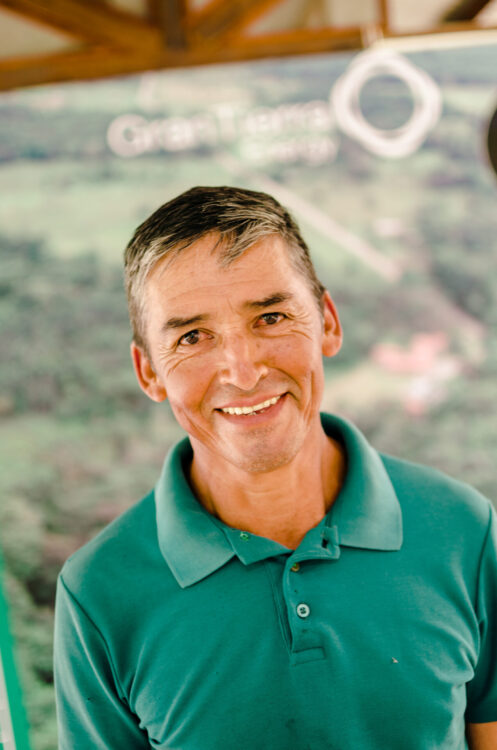
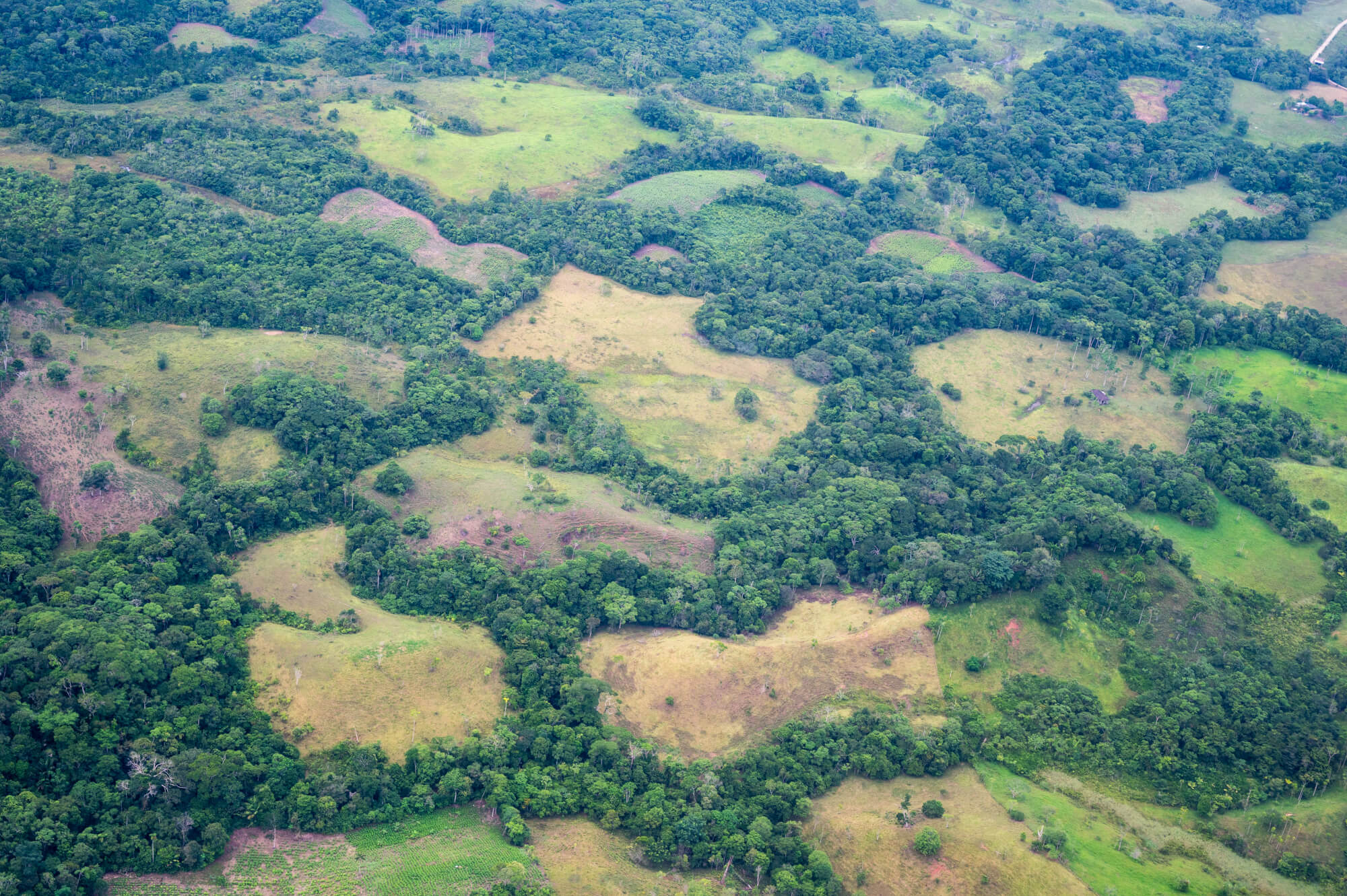
Gran Tierra Energy’s Conservation Footprint
Gran Tierra Energy’s Environmental Management Plan (EMP) states that GTE will minimize the footprint of project activities throughout the operations and that full remediation and reclamation will follow the cessation of operations. The plan also mandates that the Company respect land use by local communities and that the Company’s daily work activities shall minimize impacts on local land uses.
Up until the end of 2024, Gran Tierra’s conservation footprint in South America– including land reforested, conserved and preserved–totalled 5,372 hectares compared to our operations footprint of only 153 hectares. Read the following stories to learn more about Gran Tierra’s Environmental Management Plan and Waste Management Plan.
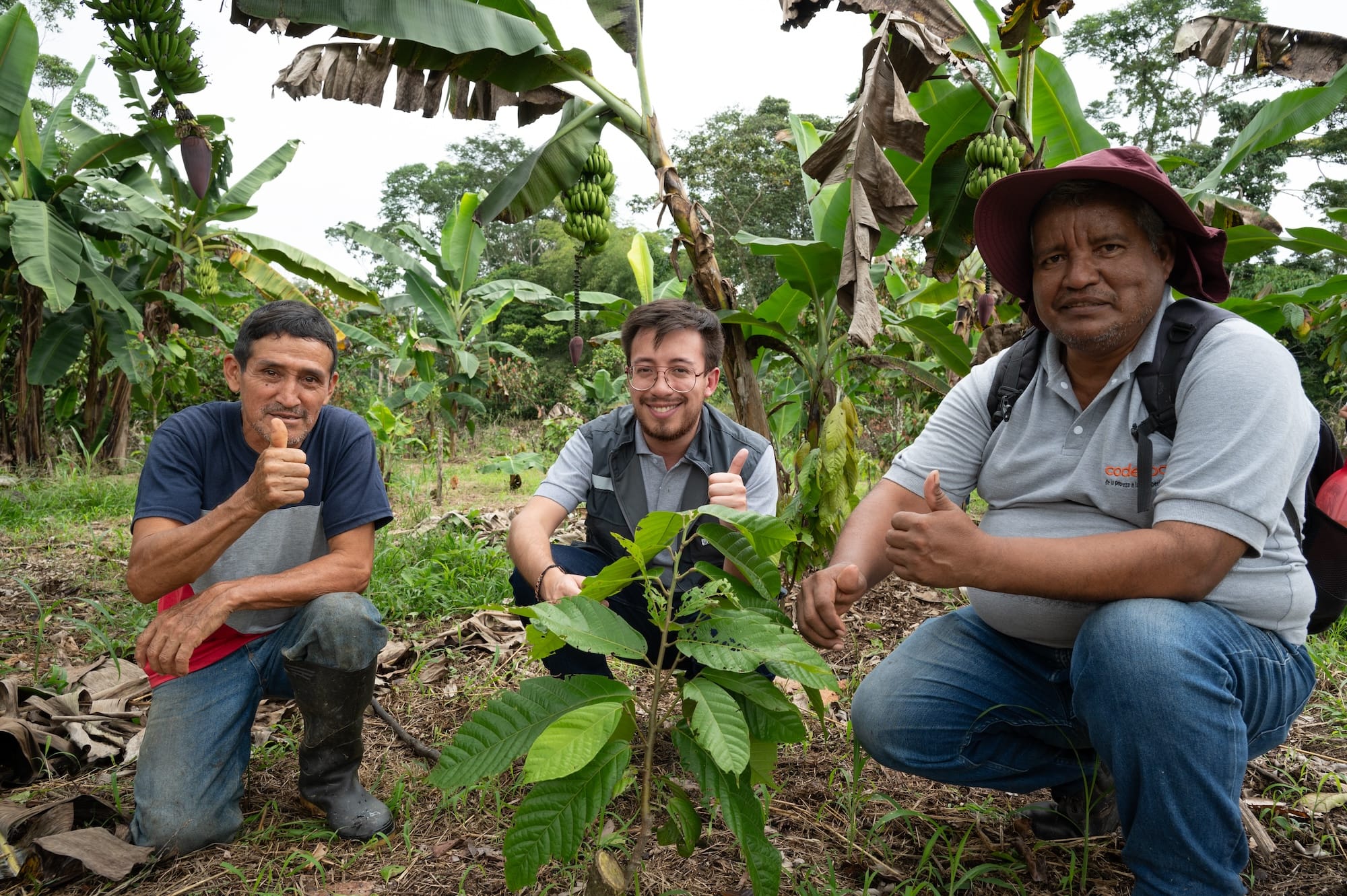
Supporting Community Environmental Monitoring in Ecuador
GTE maintains transparency about its environmental practices by ensuring stakeholders are well-equipped to understand, analyze, and respond to the information they receive, some of which can include highly technical data.
Informational Sessions in Ecuador to Strengthen Environmental Oversight
In 2024, Gran Tierra Energy strengthened its commitment to environmental responsibility by partnering with independent external subject matter experts to host a series of informational sessions on air dispersion modelling. This scientific tool is used to better predict and understand potential environmental impacts from industrial activity—an essential part of GTE’s approach to responsible operations.
Two sessions were held in Lago Agrio and one in Quito, creating a space for open dialogue and knowledge-sharing. A total of 32 GTE staff members and 14 technicians from Ecuador’s Ministry of the Environment (MAATE) participated. These sessions not only strengthened the technical understanding of air dispersion modelling but also established a trusted partnership between GTE and MAATE in promoting sustainable practices across the region. By proactively engaging with regulatory authorities and ensuring transparency in its operations, GTE continues to build trust with key stakeholders and reinforce its role as a responsible energy partner.
GTE has also previously offered an Environmental Monitoring Training workshops to help people living in the community of Unión Balsareña, who live near the Company’s operations in the Chanangue block in Sucumbíos, Ecuador, more effectively observe and provide feedback about GTE’s environmental monitoring procedures. The workshop covered regulations, studies, surveys and management, and ecological monitoring methodology and practices.
Seventeen community members participated in the workshop, and the Company provides ongoing support to ensure community leaders and program participants can continue to engage environmental experts to support their oversight role.
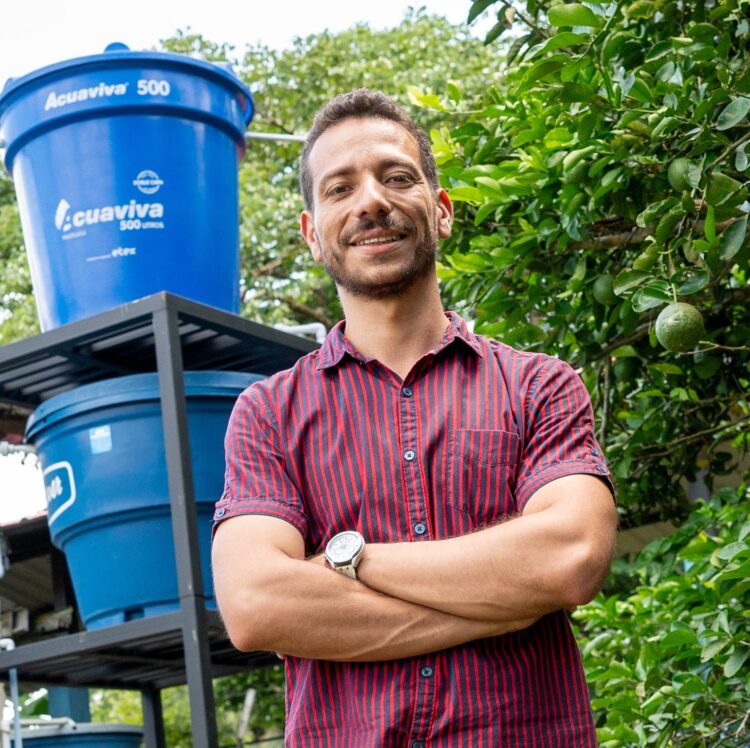

Innovative Conservation Agreements Protect Sensitive Areas
A highlight of GTE’s work was with the Putumayo Biodiversity and Development Initiative was the restoration within the Orito Ingi-Ande Flora Sanctuary for Medicinal Plants.
Dialogue with 15 families who were living in the protected zone and cultivating coca, resulted in important conservation agreements to protect the land. As part of the agreements, Gran Tierra Energy helped relocate the families, providing land and training to help them maintain their livelihoods. This allowed the environmental authorities, including the National Parks and the Ministry of Environment, to replace the illegal crops with native vegetation and preserve the integrity of the entire protected area of more than 100 square kilometres. So far, 29 hectares of land has been protected and restored.
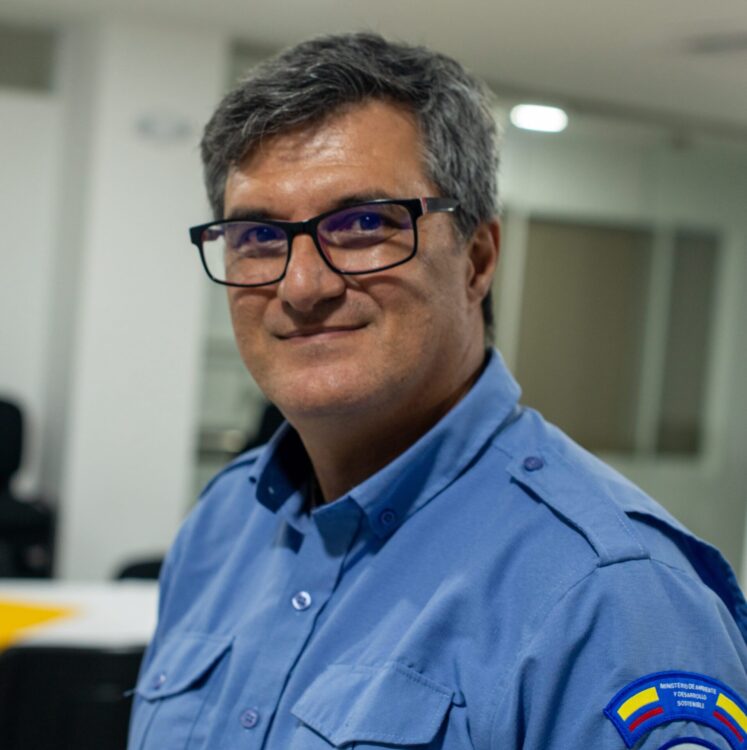
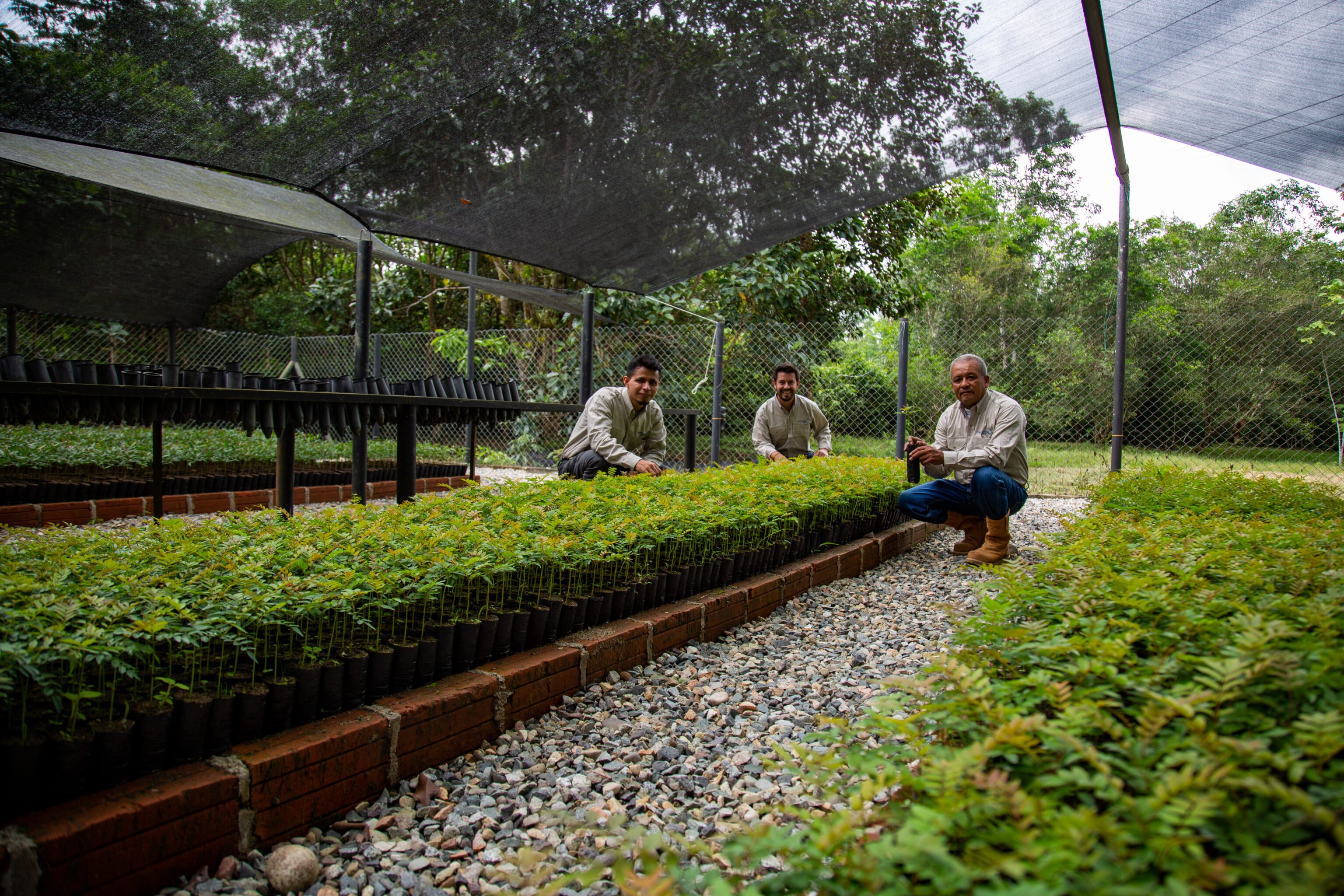
NaturAmazonas: Gran Tierra’s Largest Environmental Initiative
NaturAmazonas, the flagship conservation program started by GTE and Conservation International, has grown into an alliance of public and private institutions working together to address the root causes of deforestation. It works to develop solutions for reversing the process, while increasing the well-being of nearby communities.
GTE’s program has grown into a joint effort between the Colombian Ministry of the Environment and Sustainable Development, regional environmental agency, Corpoamazonia, and NGO Conservation International which oversees the project. The overall objective is to create the conditions required to protect and conserve Colombia’s Amazonia region by planting millions of trees and conserving land to restore important forested lands, helping residents live and work in greater harmony with the forest, and fostering partnerships amongst the institutions needed to effect long-term change at scale. This initiative strengthens the mechanisms needed for sustainable reforestation and large-scale conservation.
These include:
- Bringing numerous public and private institutions under an established framework to collaborate and increase their combined impact.
- Increasing knowledge of, and respect for, the value of forested areas.
- Implementing mechanisms for people and communities that reside in the area to make a sustainable living in harmony with nature.
In its first seven years, this USD $18 million initiative has reforested and ecologically restored over 2,000 hectares of land and has attracted additional partners interested in moving this revolutionary program forward. In 2023, Gran Tierra extended the NaturAmazonas program for another four years and continues its industry-leading reforestation in partnership with Conservation International.
+0M
trees
+1.6M trees have been planted
through NaturAmazonas
0
families
4,290 people have been positively impacted through NaturAmazonas
+0
hectares
Over 2,000 hectares of land have been
reforested and ecologically restored
SWIPE FOR MORE
+0M
seedlings
Over 3.7M seedlings have been distributed at the NaturAmazonas nurseries
~0
farmers
GTE helped ~700 farmers sustainably cultivate cacao, sugar cane, honeybees and acai through the NaturAmazonas program
~0
beehives
Contribute to pollination across ~24,000 hectares of native forests and cultivated plantations through GTE’s Sustainable Productive Landscapes program
SWIPE FOR MORE
Agroforestry Centres
The Guayuyaco Agroforestry Centre in the town of Piamonte was converted and refurbished from an abandoned social site of a nearby Indigenous Inga community and is capable of growing over one million seedlings each year to support the reforestation initiative. Women from Miraflores and the surrounding areas carry out planting work at the Guayuyaco Agroforestry Centre. Cacao seedlings are spliced together to develop high quality and resilient varieties of the crop.
The Sacha Wasi Agroforestry Centre located in El Mesón, Villagarzón has a production capacity of one million seedlings per year, a total area of 8.06 hectares, and is designed with spaces to store materials, equipment and supplies. This agricultural-focused nursery includes specific areas for preparation and bagging of the substrate, irrigation, germination, management and sowing modules.
Knowledge Generation
Local residents were hired for expeditions deep into the Piedmont, collecting and categorizing over 10,000 specimens of native plants. They are referred to as Guardians of Botanical Knowledge and they build their knowledge about the native plants and contribute to the creation of important mapping of the botanical make-up of the forest in their areas. Previously unknown plant species have been discovered by the Guardians.
So far, 27,000 specimens have been collected and processed, 1,404 of species have been identified, two of which are new for Colombia and over 130 people have directly benefited from the project.
Botanical Health Development Through Beekeeping
Thousands of bees swarm around unprotected beekeepers, who are not concerned because these are stingless bees, native to this part of the Amazon rainforest. It had previously been illegal in Colombia to cultivate stingless bees, but Gran Tierra worked with the Colombian authorities to change the regulations to allow local people to engage in this important line of sustainable production through the Company’s NaturAmazonas program. With 6,000 hives pollinating 24,000 hectares of plants and trees, supporting reforestation and contributing to botanical health, the bees are also producing honey for the farmers—a valuable, durable commodity with appeal in both local and national markets.
There is a high demand for stingless bee syrups, which have a number of different flavours, and keepers can also rent the bees out to local farmers for pollination, providing yet another stream of income. The association of beekeepers continues to grow, with 375 current members having been trained and certified.
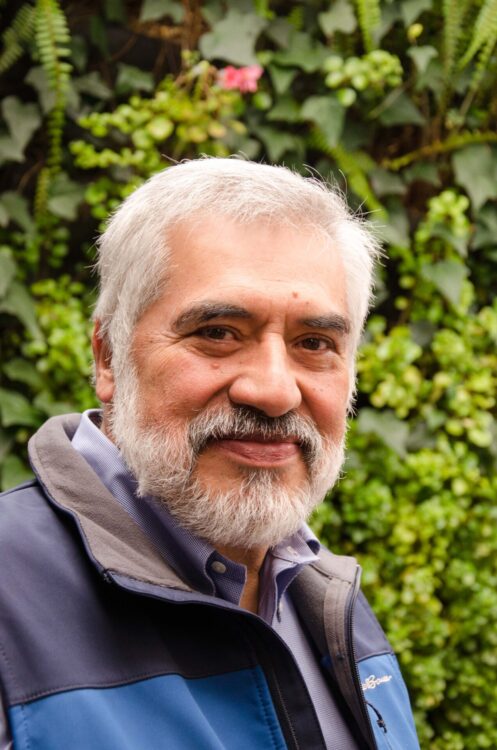
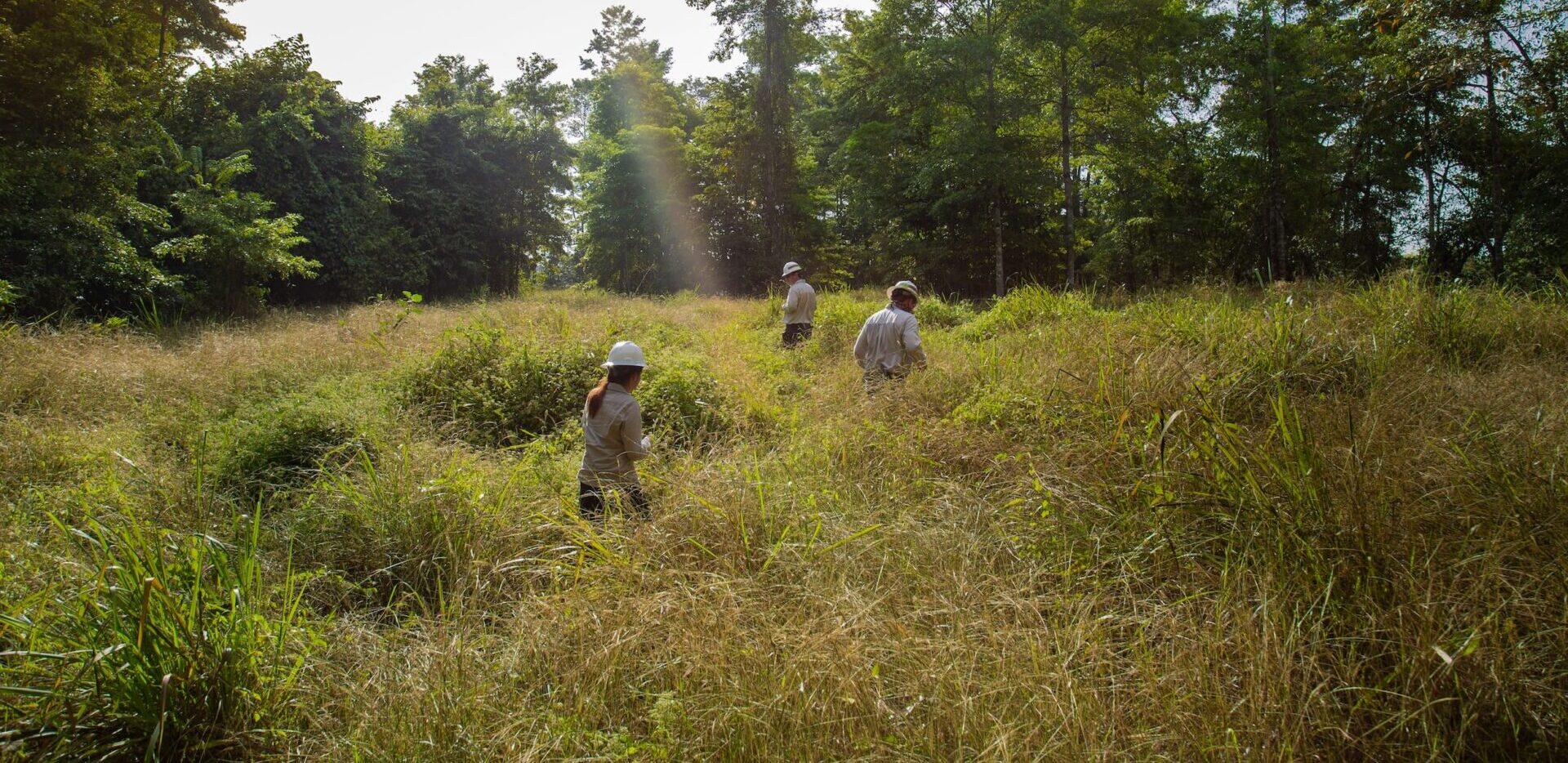
GTE's Environmental Management Plan
Gran Tierra Energy’s company-wide Environmental Management Plan (EMP) addresses how it handles environmental issues arising from its exploration and development projects and other operations.
The Plan is based on the environmental performance standards of the World Bank’s International Finance Corporation and reflects best industry practices. It will be amended and updated periodically. In any instances where local laws or regulations differ from the standards contained in Gran Tierra’s EMP, the Company will adhere to the more stringent requirement.
The EMP addresses issues like:
- Defining a code of conduct for all workers
- Conserving biodiversity
- Minimizing construction impacts, flaring and water use
- Controlling erosion
- Optimizing road and pipeline routing and construction
- Managing solid and liquid waste including hazardous substances
- Protecting and preserving cultural and archaeological resources
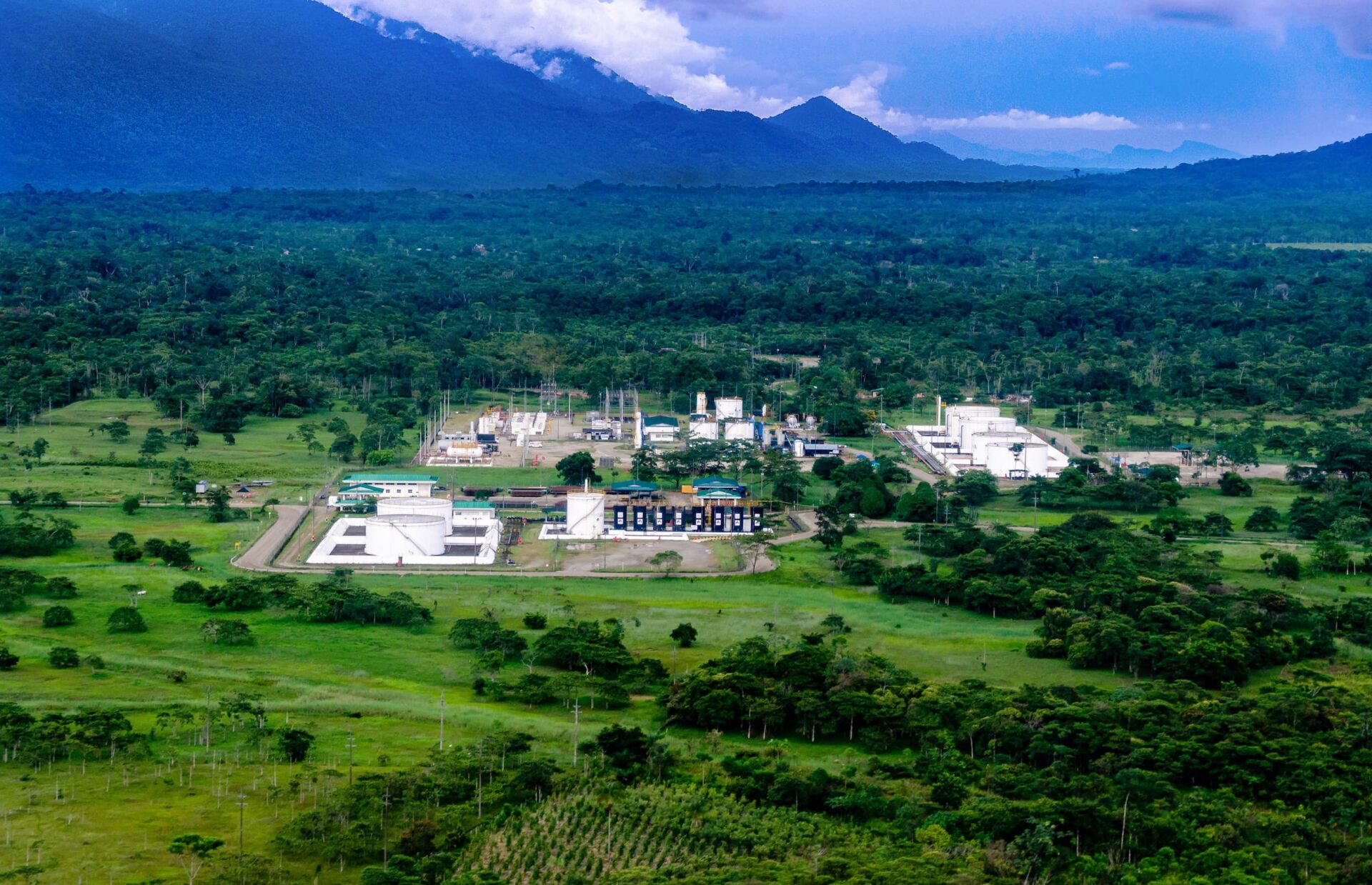
Waste Management
Gran Tierra’s Waste Management Plan (WMP) recognizes the Company’s responsibility to manage wastes properly. Waste is handled independently, according to the type (contaminated, organic, unusable or recyclable), through a process of separation at source.
One of the goals of internal management is always to reduce at the source the different waste generated by the operation and ensure as far as possible that the greatest amount of waste generated be reusable. One example of how we reuse waste is:
- At GTE’s Acordionero and Costayaco oil fields organic waste is composted. The compost is then used to fertilize gardens and to stabilize slope areas occupied by the project.
- In 2024, 74 tonnes of organic waste was treated and reused in the fields.
For waste that cannot be reused or recycled, the Company’s overall approach is to utilize capable third-party facilities. GTE is taking steps to lower the volume of wastes to the extent possible and to recycle or reuse waste in cooperation with local communities when possible.
GTE has established a procedure for selecting waste management companies with the best environmental performance records in the region. This process requires a legal review of the Company, internal and external audits and a review of their relationships with the environmental authorities and with the neighbors of their facilities.

Emissions Reduction: Reporting
Gran Tierra Energy’s environmental policy calls for the Company to track its greenhouse gas (GHG) emissions and take steps to reduce them wherever economically feasible.
Gran Tierra continues to voluntarily retain a respected expert in the field of air quality to create an assessment of its greenhouse gas emissions in Canada, Colombia and Ecuador. This assessment involves collecting, analyzing and quantifying annual air emissions data from GTE’s operations. It was conducted according to the guidelines and standards adopted by the following organizations: International Petroleum Industry Environmental Conservation Association (IPIECA), International Association of Oil and Gas Producers (IOGP), American Petroleum Industry (API), U.S. Environmental Protection Agency (EPA), Canadian Association of Petroleum Producers (CAPP) and Intergovernmental Panel on Climate Change (IPCC). Since 2016, the Company has also reported to the Carbon Disclosure Project.
An updated assessment using 2024 air emissions data will be released in 2025. View the 2023 Greenhouse Gas & Air Quality Report here.
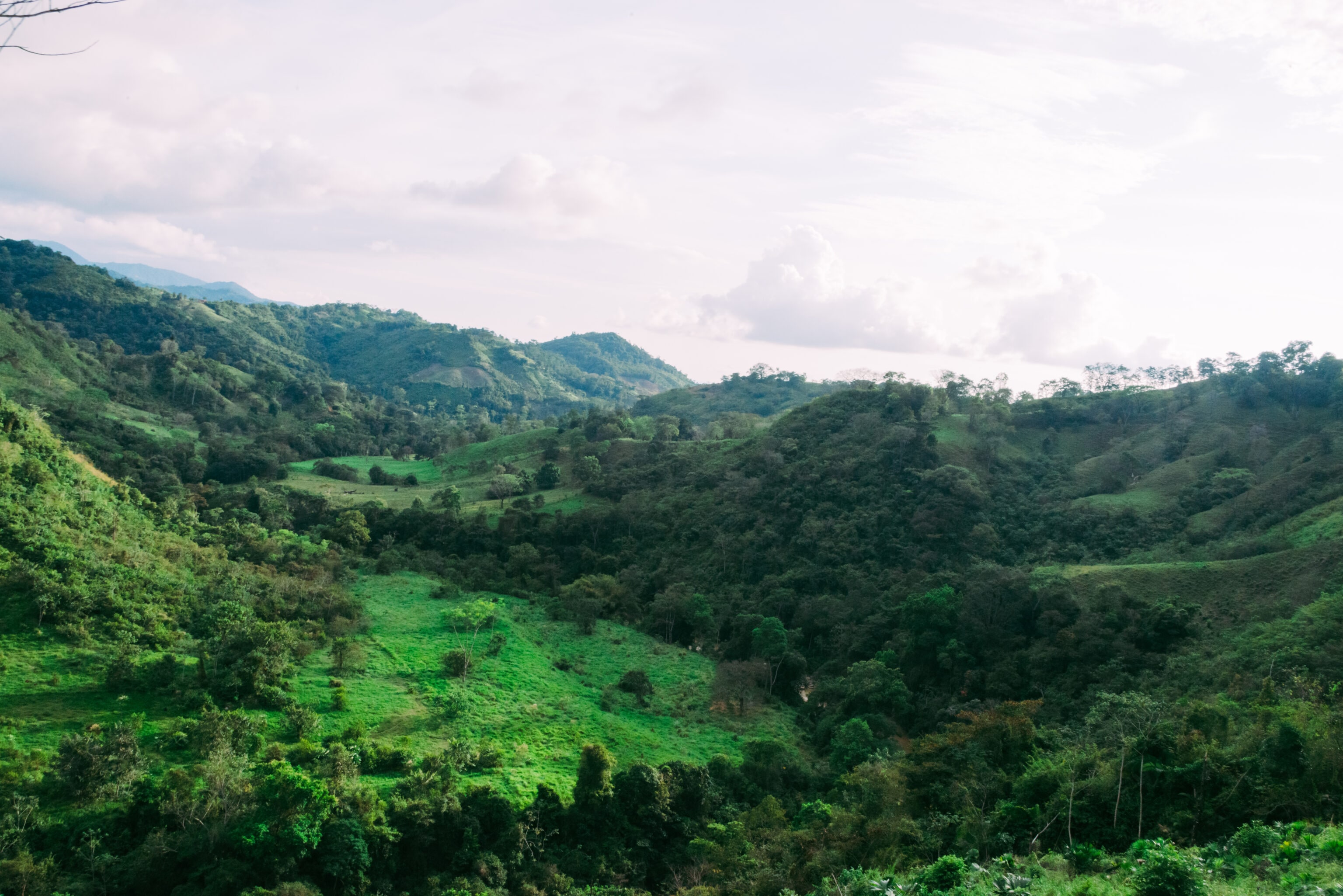
Emissions Reduction: Nature-Based Solutions
Nature-based solutions are an important pillar of Gran Tierra’s emissions reductions efforts, and the company supports environmental projects that aid in natural carbon sequestration. Natural carbon sequestration is the process of capturing and storing atmospheric CO2, as forests, wetlands and vegetation sequester carbon by capturing carbon dioxide from the atmosphere and converting it into organic matter.
Across all of its environmental programs, GTE has planted over 1.9 million trees and has conserved, preserved, or reforested over 5,300 hectares of land since 2018. Careful management ensures that the once-delicate saplings grow into sturdy, mature trees that contribute to national emissions reduction strategy goals. These efforts are undertaken through major initiatives including the NaturAmazonas project and the Costayaco and Acordionero Forestry Centres, which serve as hubs for sustainable reforestation and community
Reforestation Project with Conservation International
NaturAmazonas, Gran Tierra Energy’s flagship conservation program with Conservation International, has grown into a powerful alliance of public and private institutions tackling the root causes of deforestation.
NaturAmazonas has been at the forefront of Colombian conservation and reforestation efforts for seven years. With an $17 million investment, GTE has created a model for protecting the Colombian Amazon’s land, water, air, and biodiversity. In partnership with Conservation International, the Colombian Ministry of Environment and Sustainable Development, and Corpoamazonia, the program has restored ecosystems, fortified biodiversity and advanced sustainable agriculture. Equally important, NaturAmazonas strengthens the connection between people and nature, supporting lasting impact in one of the world’s most biodiverse regions.
This program has achieved significant impact in its reforestation efforts, promoting sustainable land use, biodiversity, and community development. Through efforts like restoring over 2,000 hecatres of land, maintaining 6,000 beehives and cultivating 880 hectares of cacao under agroforestry systems, it has help improve local ecosystems and agricultural productivity. Thousands of local people have gained access to training and resources. Overall, this program reflects a balanced approach to environmental conservation and strengthening rural communities.
To read more about the NaturAmazonas project, click here
Costayaco Forestry Centre: A Unique Resource for Reforestation
The Costayaco Forestry Centre (CFC), established by Gran Tierra Energy in coordination with the regional environmental regulator, Corpoamazonia, is one of the most innovative reforestation efforts in South America. The CFC contains 334.5 hectares of new and maturing forested areas and is close to achieving its long-term goal of connecting a critical ecological corridor linking the Andean foothills with the Amazon Rainforest. These two ecosystems are some of the most biodiverse in the world.
Acordionero Forestry Centre
Following the success of the Costayaco Forestry Centre, the Acordionero Forestry Centre (AFC) in San Martín, Cesar, was launched in 2024 as a 185-hectare environmental innovation hub located in El Cairo village, a strategically important conservation zone in Cesar. It is Gran Tierra’s hope that AFC will play a key role in restoring forest corridors and preserving water bodies thar provide water to the surrounding communities. Nearly 11,000 native trees have already been planted at the Centre, reinforcing the Centre’s contribution to ecosystem recovery in the region. The AFC has also been designed to test and implement sustainability efforts aimed at long-term environmental resilience and regional economic development.
Through the AFC, Gran Tierra Energy continues to support community-driven initiatives to strengthen Colombia’s ecosystems and support local families.
To learn more about the Costayaco and Acordionero Forestry Centres, click here.
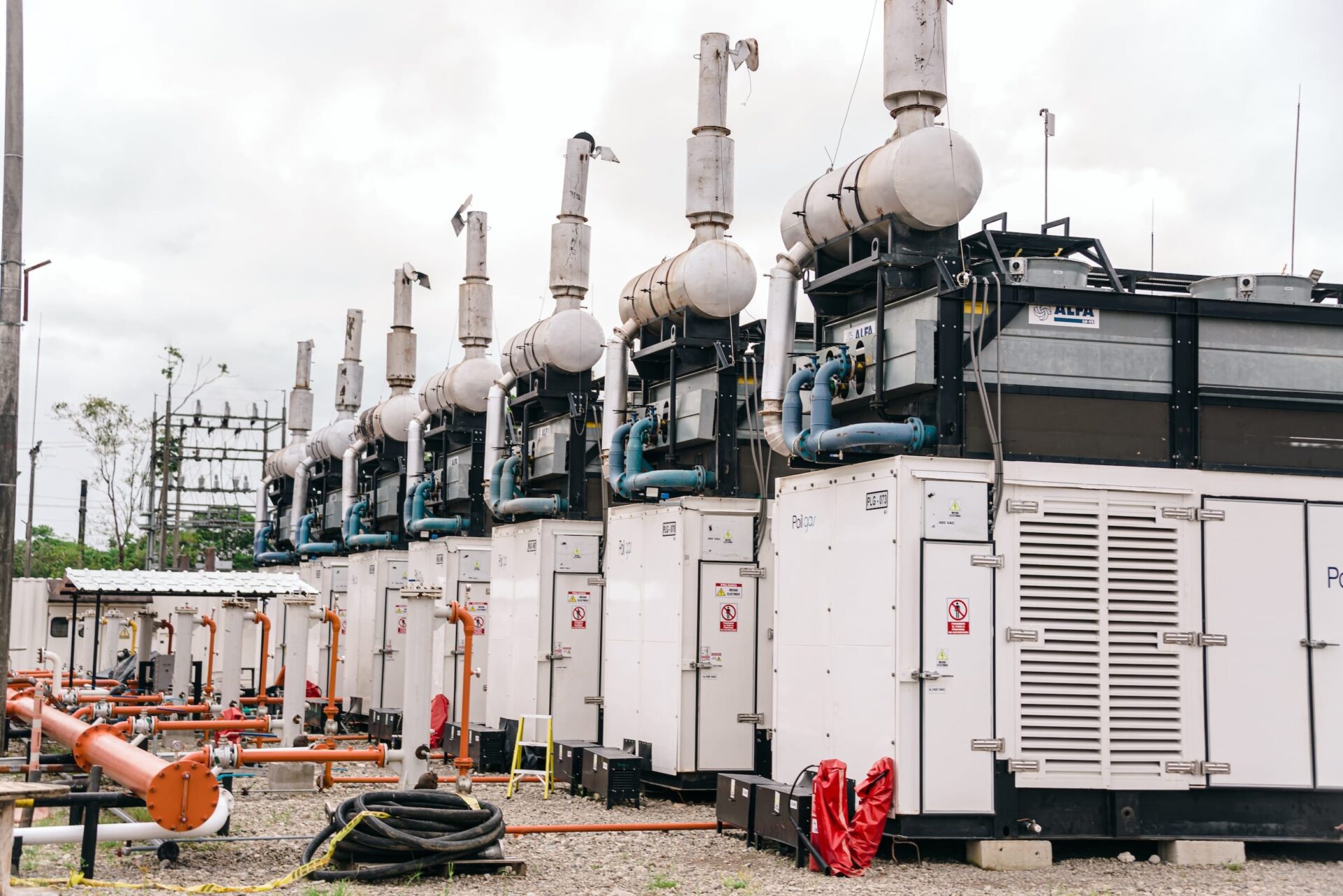
Emissions Reduction: Gas-to-Power
Gran Tierra’s ongoing effort to reduce direct emissions by converting associated gas produced from its wells into an energy source for its operations, continues to generate results. Additionally, converting gas to electricity significantly reduces the demand on municipal utilities, increases fiscal resilience by lowering unit production costs, and provides a more stable energy supply, while reducing flaring and greenhouse gas emissions.
The Company’s Gas-to-Power (G2P) program has significantly reduced emissions intensity over the last few years by using produced natural gas to produce electricity, reduce flaring, and significantly reduce the need to purchase, transport, and burn diesel fuel. When excess power is produced, GTE can provide additional electricity to the local grid helping residents and stabilizing energy sources. 80% of the produced gas from our South American operations in 2024 was used for energy.
With all major fields fully converted, GTE has turned its attention towards generating gas power at its smaller locations and in Ecuador. GTE began its G2P implementation in Ecuador in 2024, further contributing to the reduction of GHG emissions, flare volumes, and costs related to diesel consumption. This initiative supports GTE’s ongoing efforts to produce oil with the minimum possible associated GHG emissions and eliminating routine flaring at the Company’s facilities.
| FIELD | GAS-TO-POWER (kWh) | GAS USED (scf) | SAVINGS (USD)1 |
|---|---|---|---|
| COSTAYACO2 | 98,223,159 | 1,032,186 | $11,737,667 |
| VONU5 | 9,609,724 | 72,923,000 | $1,148,362 |
| MOQUETA3 | 143,267 | 13,413,000 | $18,087 |
| ACORDIONERO4 | 111,032,853 | 1,264,615,000 | $12,602,229 |
| MONO ARAÑA6 | 296,134 | 7,926,000 | $56,488 |
| LOS ANGELES7 | 532,168 | 13,382,000 | $7,450 |
| COHEMBI8 | 18,575,500 | 110,574,000 | $4,091,254 |
-
View Footnotes
-
[1] TRM=$USD 4,000
[2] Savings calculated from gas generation Vs Average National Power Grid 850-372=478 COP/kWh (0,1195 USD/kWh)
[3] Savings calculated from gas generation cost 505 COP/kWh (0.145 USD/kWh). In 2022, MQT G2P is exclusively used as generation support when occurs a failure in the national grid. For that reason there is not a cost associated to G2P.
[4] Savings calculated from gas generation Vs CNG generation 759-305-=454COP/kWh (0,113 USD/kWh)
[5] Savings calculated from gas generation Vs Diesel generation 1396-633=763 COP/kWh (0,19USD/kWh)
[6]Savings calculated from gas generation Vs Average National Power Grid 850-372=478 COP/kWh (0,119 USD/kWh)
[7] Savings calculated from gas generation Vs Average National Power Grid 689-633= COP/kWh (0,014USD/kWh)
[8] Savings calculated from gas generation Vs Diesel generation 1455-574= 881COP/kWh (0,22USD/kWh)

Amazon Butterfly Species Guidebook
Butterflies are an important indicator for maintaining healthy ecosystems and are a critically important part of conservation and management practices in the area.
An alliance of public and private institutions led by GTE and the industry group National Business Association of Colombia (ANDI), completed a study on the diversity of butterflies to better understand the role conservation, preservation and educational initiatives play in protecting the Andean-Amazonian piedmont region.
La Gran Tierra de las Mariposas (The Great Land of Butterflies) includes photographs of 250 species of diurnal butterflies. The alliance is also working on additional monitoring, educational, regulatory and community initiatives.
This study and cataloguing are a significant step in developing management and conservation practices for these species with high potential for scientific research and tourism.
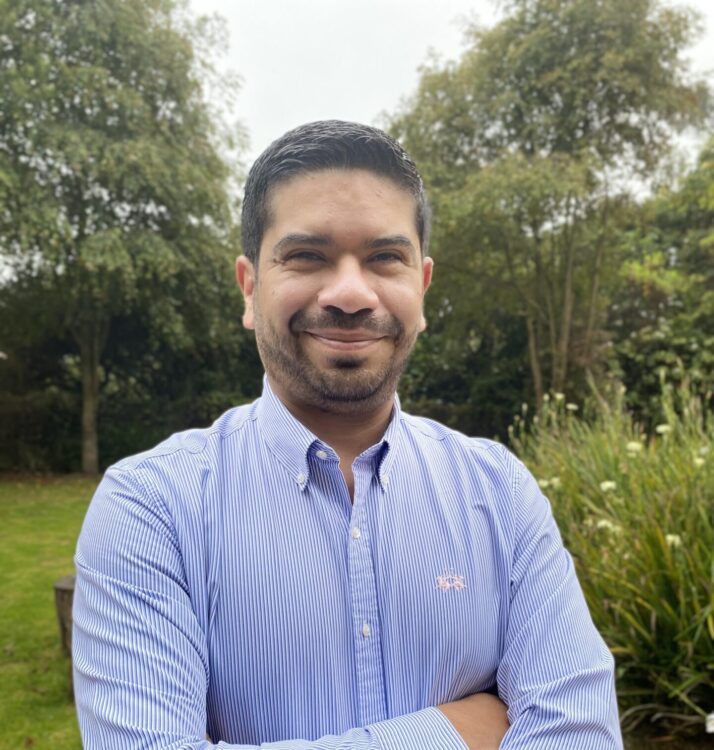

The Putumayo Biodiversity Initiative Enters a Second Phase
The Putumayo Biodiversity Initiative, a wide-ranging alliance of public and private institutions dedicated to preserving biodiversity in the Andean-Amazonian foothills in the department of Putumayo, entered its second phase in 2021. The initiative protects, conserves, and restores ecosystem connectivity and biodiversity through sustainable development. The initiative has become an important national benchmark for public-private investment in Colombia, creating new businesses and economic opportunities in biodiversity.
Gran Tierra is the first oil company to contribute environmental data to the Biodiversity Information System of Colombia (SIBColombia), providing researchers across Colombia access to thousands of records, images and videos from their biodiversity and conservation initiatives.
The initiative will also contribute towards the Putumayo-Içá River Basin Integrated Management Project, a pioneering international collaboration by Brazil, Ecuador, Peru and Colombia, providing a baseline for the Putumayo River and formulating guidelines for watershed management.

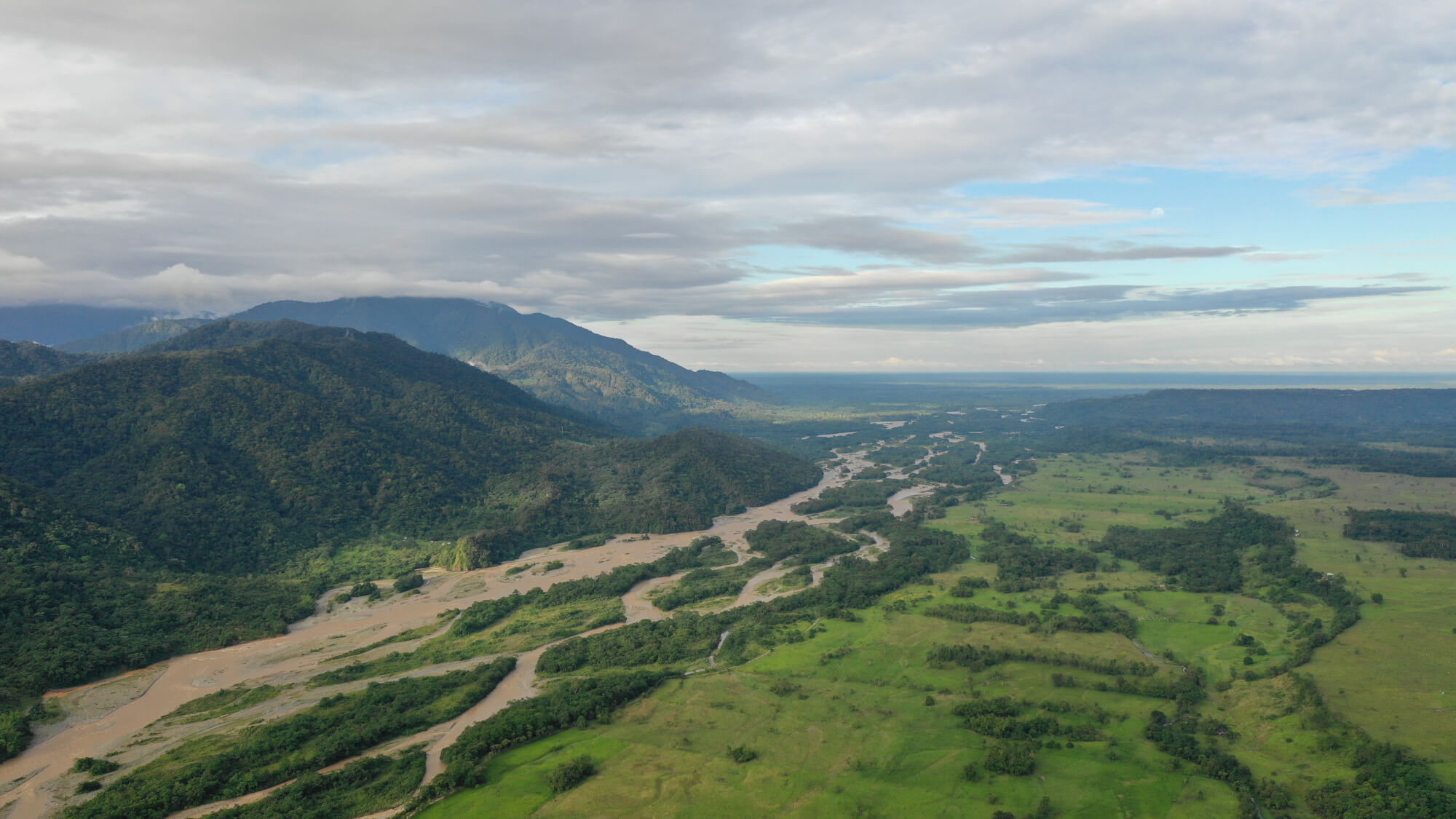
A Partnership with the Humboldt Institute
The partnership between Gran Tierra Energy and the Alexander von Humboldt Biological Resources Research Institute contributes to the understanding of biodiversity in the Putumayo and addressing concerns about industrial development in the area. Colombia has highly biodiverse areas, with large numbers of plant species, microorganisms, and fungi. However, some of the country’s ecosystems have deteriorated tremendously due to agriculture and livestock activities, urban expansion, illegal mining and illegal land practices.
The joint GTE-Humboldt Institute Chawar Project is a regional environmental assessment, created as a technical tool to track and monitor biodiversity changes in the Putumayo by incorporating a wide range of data sets including biodiversity, ecosystem services, and social and cultural information, especially in the Andean foothills. The project is part of GTE’s efforts to help the country proactively develop an understanding of species that need to be protected, and it will allow the Company to better consider environmental issues when determining how and where to plan development.
It also shows how compensation for the Company’s voluntary environmental and social investments can be structured to have the greatest impact on specific areas of interest as well as the broader region for years to come.
It will also show how compensation for the Company’s voluntary environmental and social investments can be structured to have the greatest impact on specific areas of interest as well as the broader region for years to come.
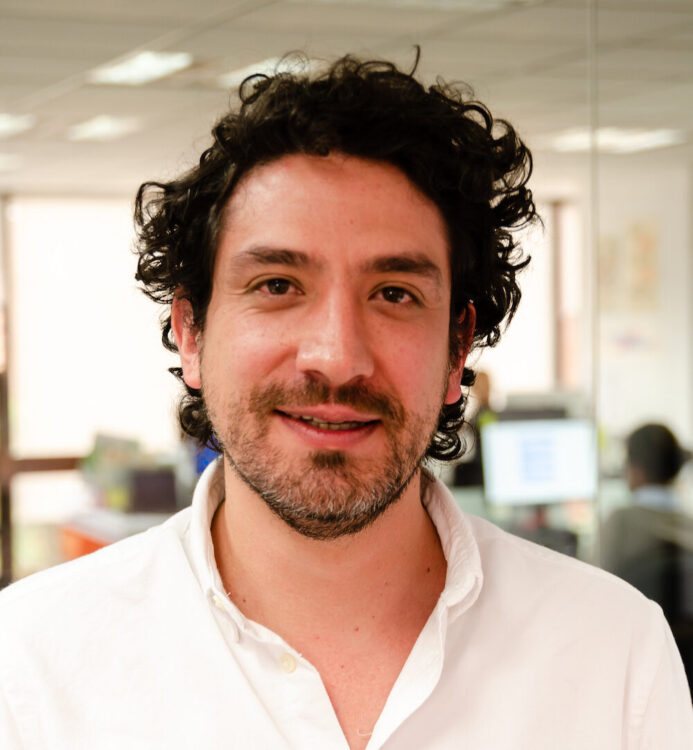
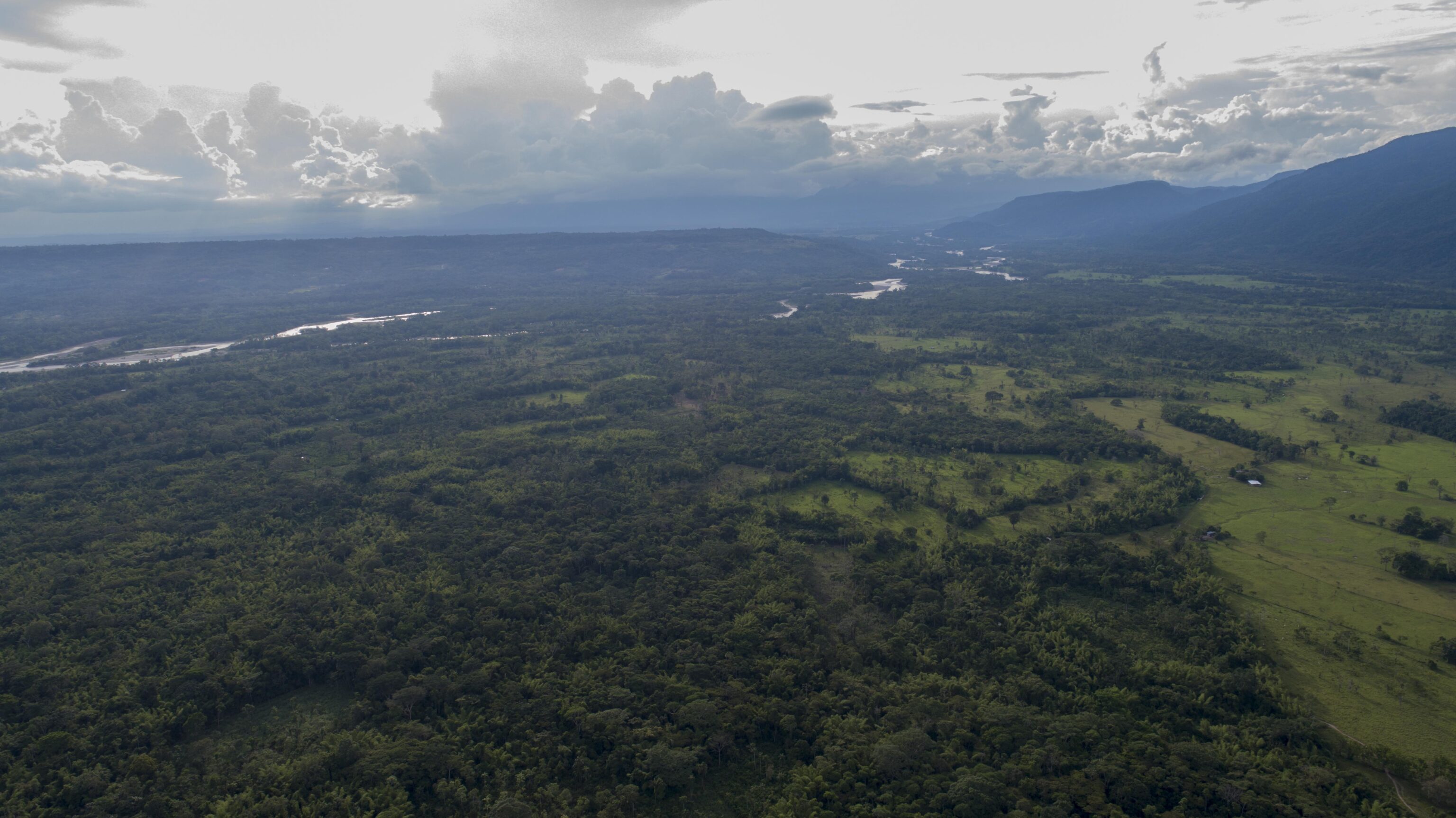
An Alliance with ANDI
GTE plays a role in strengthening industry-wide sustainability efforts through participation in the National Business Association of Colombia’s (ANDI) biodiversity and sustainability initiatives, participating in multilateral partnerships that promote conservation and the advancement of scientific knowledge in the country.
ANDI, Gran Tierra Energy, Corpoamazonia, the National Natural Parks of Colombia, Amazonian Institute of Scientific Research (SINCHI) and the Humboldt Biological Research Institute, have partnered together in an alliance that is focused on ecosystem protection, restoration and connectivity, sustainable development of biodiversity and promoting sustainable development in the region.
The alliance’s accomplishments thus far include:
- Launching an “Open Data on Biodiversity” strategy to showcase how the hydrocarbon sector contributes to biodiversity conservation.
- Creating a public-private partnership to develop joint biodiversity compensation efforts in key areas that connect the Andes and the Amazon. This includes working on land-use planning strategies that support both conservation and sustainable development in the Amazon region.
- Responsible for managing the progress, communication, and successful completion of projects such as ‘Aquatic Diversity in the Interfluvial Area of the Sub-basins of the Putumayo and Caquetá Rivers in the Putumayo Department,’ including reviewing and providing feedback on biodiversity standards issued by the Ministry of Environment and Sustainable Development (MADS).
- Establishing ANDI’s biodiversity office in Putumayo to support public sector efforts, with plans to expand to the Colombian Caribbean region and build new partnerships between Gran Tierra Energy and key allies for projects in the Middle Magdalena Valley.
Transforming Residual Wastewater into Biogas
In many rural Colombian villages, untreated wastewater flows through open sewers, creating serious health and environmental risks—especially during the rainy season. At the same time, limited access to propane forces many households to rely on firewood, contributing to deforestation, air pollution, and causing significant adverse health effects.
To tackle these dual challenges, GTE partnered with Antonio Nariño University and ANDI to install 13 residential-scale anaerobic biodigesters in the Putumayo villages of Carmelita, Puerto Vega, and Remolinos. These systems treat wastewater organically and produce biogas for nearly 40 households and a school, eliminating open sewage while providing energy that can be used for cooking.
This initiative, which satisfies Colombia’s requirement that 1% of project budgets be invested into environmental initiatives, demonstrates how thoughtful design can create lasting environmental, social, and economic impact. Encouraged by the project’s success, plans for expansion to additional municipalities are underway.


Conserving Wild Cats
Gran Tierra’s pioneering initiative to promote wild cat conservation in the Colombian Amazon, has identified six feline species that use its Costayaco Forestry Centre as a habitat. The project, implemented by Corpoamazonia in partnership with Gran Tierra Energy, has achieved a number of accomplishments in the Alto Putumayo, Amazonian Andean Foothills, and the Amazon Plain regions.
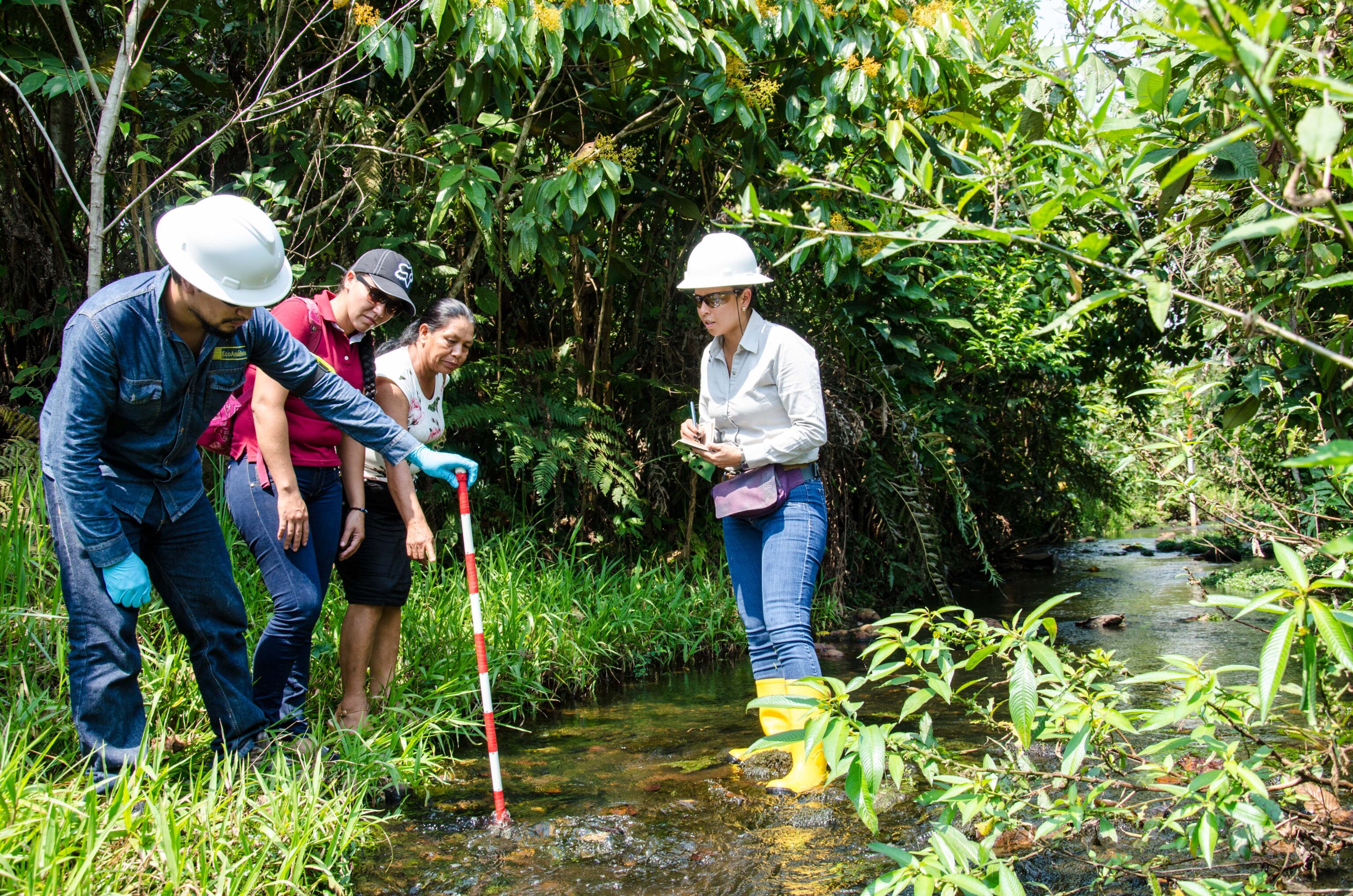
Inviting Communities to Participate in Water Monitoring
In accordance with Company policy and regulations, Gran Tierra regularly monitors and analyzes surface and groundwater using an external lab certified by government authorities; however, a myth that the Company often encounters in local communities is that lab results released by a corporation must be compromised.
To counter this, GTE will fund additional independent water studies for local communities in Colombia and Ecuador if they want to hire their own laboratory (as long as it is certified by Colombian and Ecuadorian regulators). GTE will take its own samples and compare them with the communities’ samples, sharing the results at a community meeting.
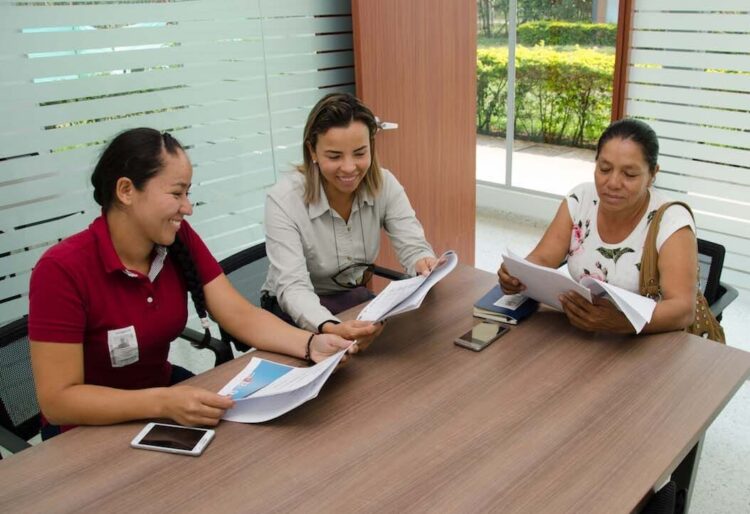
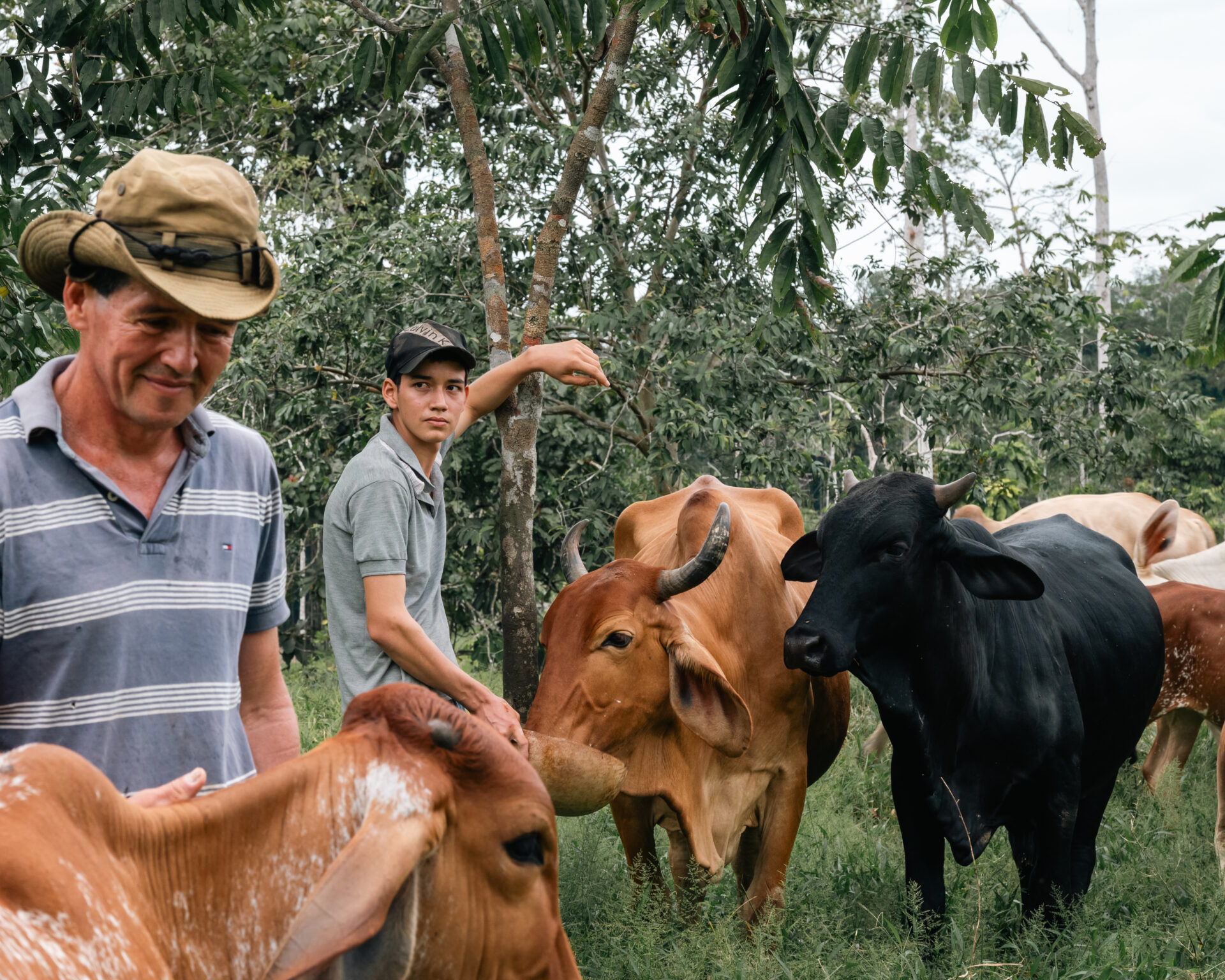
Sustainable Sucumbíos
Gran Tierra Energy’s flagship Ecuador social investment project Sustainable Sucumbíos, in partnership with the Ministry of Agriculture, focuses on transforming agricultural processes to make them more profitable and sustainable. GTE has invested US$3.3 million over four years, which has directly benefited local families in Ecuador, by improving agricultural productivity and increasing household income through agricultural technical assistance, training and supplies. This initiative supports long-term agricultural development by enhancing crop productivity, strengthening local livelihoods, and promoting environmentally responsible farming practices in the region.
GTE’s commitment to fostering sustainable growth in Ecuadorian communities through this project has delivered meaningful results. Notable achievements include the distribution of approximately 80,000 cacao plants to local farmers and the delivery of agricultural machinery units and cows to support the growth of farming operations in the region. In addition to the resources given to the local families participating in the program, GTE provides technical skills development through training and workshops. In 2024, 312 people attended workshops focused on gender inclusivity and financial guidance and 224 people were trained in agriculture and livestock field schools.
The project was first developed and implemented together with local communities of the 5 Ases, October 15, Lojanitos, La Milagreña, Pio Jaramillo and Rey del Oriente communities and in 2024, Sustainable Sucumbíos was expanded to include the communities of Union Balsareña, Patria Nueva, and Santa Mariana. To date, the program has benefited 741 families in the area surrounding GTE’s operations.
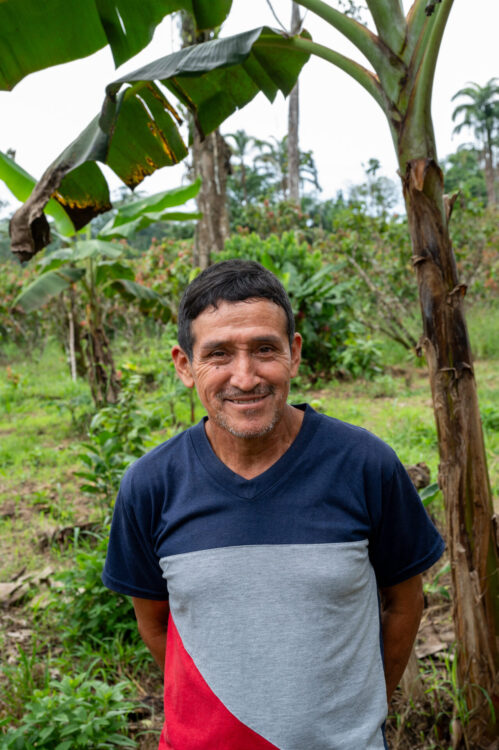

Engagement with First Nations Peoples in Canada
GTE’s engagement model in Western Canada is built on the same foundational principles as in the rest of its operations: respect, collaboration, and transparency. The Company recognizes that working with Indigenous Nations requires effective and transparent communication, cooperation, and mutual understanding. GTE’s approach is guided by:
1. Open and Ongoing Dialogue
GTE prioritizes proactive, clear and transparent communication to ensure meaningful consultation and engagement. This includes initiating early discussions, providing regular updates, and responding promptly to questions or concerns.
2. Respect for Rights and Traditions
The Company acknowledges and respects Indigenous rights, cultural heritage, and the significance of Traditional Territories.
3. Economic Participation and Opportunities
GTE supports Indigenous businesses, workforce development, and capacity building by actively integrating local vendors, contractors, and service providers from various First Nation businesses into its projects.


The Acordionero Forestry Centre
Gran Tierra Energy has officially opened the Acordionero Forestry Centre (AFC), a 185-hectare environmental innovation hub located in El Cairo village, a strategically important conservation zone in Cesar. It is Gran Tierra’s hope that AFC will play a key role in restoring forest corridors and preserving water bodies thar provide water to the surrounding communities. Nearly 11,000 native trees have already been planted at the Centre, reinforcing the Centre’s contribution to ecosystem recovery in the region. The AFC has also been designed to test and implement sustainability efforts aimed at long-term environmental resilience and regional economic development.
The Centre is located between two interconnected, biodiverse forested areas, through which more than 100 bird species have been recorded travelling. While the geography and ecosystems are different from Costayaco, the location allows the Centre to restore forest corridors and preserve river-based water sources for nearby communities. The AFC also includes a forest nursery for the restoration of native species of plants and trees. Currently, the nursery is producing approximately 9,000 plants per month, that are used to conserve the surrounding forest and are being donated to local families.
Aquaponics
At the heart of this innovation hub is a solar-powered aquaponics system that merges fish farming with hydroponic plant cultivation in a closed-loop system. GTE and local community members, are testing innovative aquaponics systems as part of a broader effort to explore sustainable agriculture models that could enhance environmental and economic resilience in the region. The aquaponics system accelerates food production, with a small land footprint, and have the goal of increasing food security and lowering food costs for families in the region. Nutrient-rich water from tilapia tanks is used to irrigate and fertilize crops such as basil, cherry tomatoes, lettuce, and aromatic herbs—without the need for soil or chemical pesticides. The system recycles water continuously, achieving over 90% water savings compared to conventional agriculture, and is powered by solar energy to ensure operational efficiency and a low environmental impact.
Meliponiculture
The AFC also includes a meliponiculture initiative that plays a key role in biodiversity conservation by protecting and reproducing native stingless bees—essential pollinators that support the health and regeneration of local ecosystems. These bees assist in the pollination of both native forests and cultivated plantations, helping sustain biodiversity and agricultural productivity. The initiative is also promoting environmental education by raising community awareness about the ecological importance of bees, while creating opportunities for local businesses in the production of high-value medicinal honey and honey-based products. By protecting bees, the AFC is helping to safeguard entire ecosystems and secure a more sustainable future for the region.
Through the Acordionero Forestry Centre, Gran Tierra Energy continues to lead in environmental responsibility, by combining reforestation, water conservation, and community-driven initiatives to strengthen Colombia’s ecosystems and support local families.
Anaerobic Biodigesters
Within the ACF GTE installed residential-scale anaerobic biodigesters. This system treat wastewater organically and produces biogas, eliminating open sewage while providing energy that can be used for cooking. In many rural Colombian villages, untreated wastewater flows through open sewers, creating serious health and environmental risks—especially during the rainy season. At the same time, limited access to propane forces many households to rely on firewood, contributing to deforestation, air pollution, and causing significant adverse health effects. This technology, demonstrates how thoughtful design can create lasting environmental, social, and economic impact.
This Centre highlights how Gran Tierra Energy goes beyond compliance by integrating its environmental legal requirements and new innovative conservation initiatives. Through the Acordionero Forestry Centre, Gran Tierra Energy continues to lead in environmental responsibility, by combining reforestation, water conservation, and community-driven initiatives to strengthen Colombia’s ecosystems and support local families.


The Costayaco Forestry Centre
The Costayaco Forestry Centre (CFC) is one of the most innovative reforestation efforts in South America that has grown to 335 hectares, located near the Company’s production facilities in Putumayo. Established in 2010 in coordination with regional environmental regulator Corpoamazonia, the facility has grown into a significant habitat for butterflies, birds, large felines and other wildlife.
The Centre is strategically located in an important environmental corridor connecting the Andean foothills and Amazonian Forest ecosystems, serving as a focal point for the Company’s compensatory requirements as well as many of its voluntary environmental activities. After 10 years, the Company is very close to achieving its long-term goal of connecting the corridor to the foothills. The Centre, which was officially designated as a protected habitat and has been replicated around the country, also serves as a hub for nearby communities, hosting educational sessions, presentations and briefings.
A Source of Seedlings
The Forestry Centre has cultivated hundreds of thousands of seedlings providing local communities the capability to reforest their land with native trees. Residents have begun planting seedlings on their land, which over the years had been degraded by agriculture, animal husbandry, and other industries that damaged the natural habitats and sensitive ecosystems. The Centre is located in close proximity to the Sacha Wasi nursery which has the capacity to produce over one million seedlings each year as part of NaturAmazonas.
A Space for Learning
The Forestry Centre functions as a community learning space with programming for both youth and adults. Visitors can learn about GTE’s operations and environmental stewardship activities. The Centre has welcomed government officials, scientists, community members, companies, academic institutions, students and is open to all.
Monitoring the Restoration of Animal Life
The motion sensor camera and monitoring stations at the Costayaco Forestry Centre have successfully identified 121 species of birds, 15 species of amphibians and 11 mammal species. This is a significant increase from the last wildlife monitoring program in 2016, which shows that the Company’s conservation and reforestation efforts are restoring these natural habitats and attracting wildlife back to these regions.


NaturAmazonas: Gran Tierra’s Largest Environmental Initiative
NaturAmazonas, the flagship conservation program started by GTE and Conservation International, has grown into an alliance of public and private institutions working together to address the root causes of deforestation. It works to develop solutions for reversing the process, while increasing the well-being of nearby communities.
GTE’s program has grown into a joint effort between the Colombian Ministry of the Environment and Sustainable Development, regional environmental agency, Corpoamazonia, and NGO Conservation International which oversees the project. The overall objective is to create the conditions required to protect and conserve Colombia’s Amazonia region by planting millions of trees and conserving land to restore important forested lands, helping residents live and work in greater harmony with the forest, and fostering partnerships amongst the institutions needed to effect long-term change at scale. This initiative strengthens the mechanisms needed for sustainable reforestation and large-scale conservation.
These include:
- Bringing numerous public and private institutions under an established framework to collaborate and increase their combined impact.
- Increasing knowledge of, and respect for, the value of forested areas.
- Implementing mechanisms for people and communities that reside in the area to make a sustainable living in harmony with nature.
In its first seven years, this USD $18 million initiative has reforested and ecologically restored over 2,000 hectares of land and has attracted additional partners interested in moving this revolutionary program forward. In 2023, Gran Tierra extended the NaturAmazonas program for another four years and continues its industry-leading reforestation in partnership with Conservation International.
+0M
trees
+1.6M trees have been planted
through NaturAmazonas
0
families
4,290 people have been positively impacted through NaturAmazonas
+0
hectares
Over 2,000 hectares of land have been
reforested and ecologically restored
SWIPE FOR MORE
+0M
seedlings
Over 3.7M seedlings have been distributed at the NaturAmazonas nurseries
~0
farmers
GTE helped ~700 farmers sustainably cultivate cacao, sugar cane, honeybees and acai through the NaturAmazonas program
~0
beehives
Contribute to pollination across ~24,000 hectares of native forests and cultivated plantations through GTE’s Sustainable Productive Landscapes program
SWIPE FOR MORE
Agroforestry Centres
The Guayuyaco Agroforestry Centre in the town of Piamonte was converted and refurbished from an abandoned social site of a nearby Indigenous Inga community and is capable of growing over one million seedlings each year to support the reforestation initiative. Women from Miraflores and the surrounding areas carry out planting work at the Guayuyaco Agroforestry Centre. Cacao seedlings are spliced together to develop high quality and resilient varieties of the crop.
The Sacha Wasi Agroforestry Centre located in El Mesón, Villagarzón has a production capacity of one million seedlings per year, a total area of 8.06 hectares, and is designed with spaces to store materials, equipment and supplies. This agricultural-focused nursery includes specific areas for preparation and bagging of the substrate, irrigation, germination, management and sowing modules.
Knowledge Generation
Local residents were hired for expeditions deep into the Piedmont, collecting and categorizing over 10,000 specimens of native plants. They are referred to as Guardians of Botanical Knowledge and they build their knowledge about the native plants and contribute to the creation of important mapping of the botanical make-up of the forest in their areas. Previously unknown plant species have been discovered by the Guardians.
So far, 27,000 specimens have been collected and processed, 1,404 of species have been identified, two of which are new for Colombia and over 130 people have directly benefited from the project.
Botanical Health Development Through Beekeeping
Thousands of bees swarm around unprotected beekeepers, who are not concerned because these are stingless bees, native to this part of the Amazon rainforest. It had previously been illegal in Colombia to cultivate stingless bees, but Gran Tierra worked with the Colombian authorities to change the regulations to allow local people to engage in this important line of sustainable production through the Company’s NaturAmazonas program. With 6,000 hives pollinating 24,000 hectares of plants and trees, supporting reforestation and contributing to botanical health, the bees are also producing honey for the farmers—a valuable, durable commodity with appeal in both local and national markets.
There is a high demand for stingless bee syrups, which have a number of different flavours, and keepers can also rent the bees out to local farmers for pollination, providing yet another stream of income. The association of beekeepers continues to grow, with 375 current members having been trained and certified.

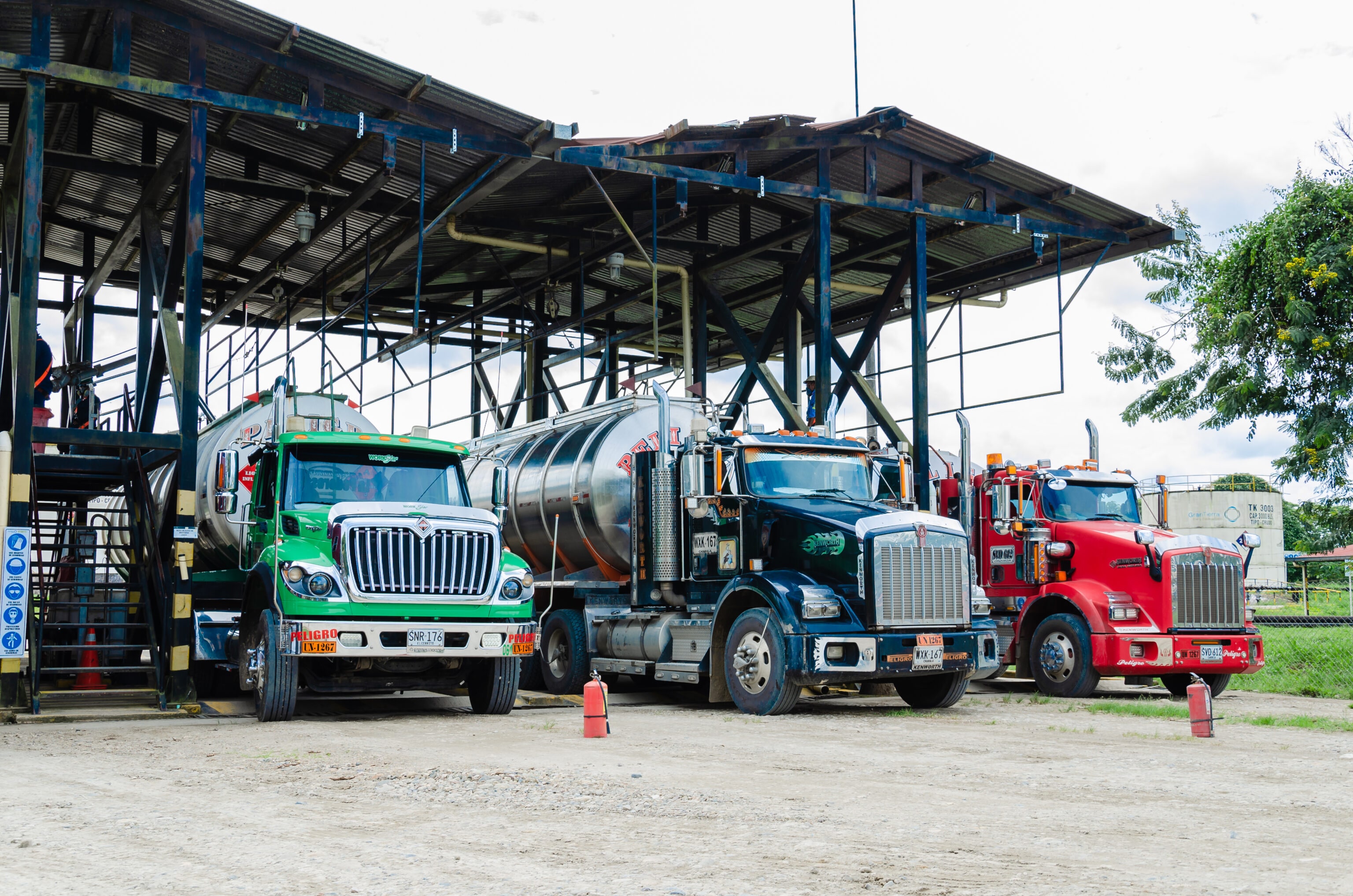
Gran Tierra’s Key Partners Program
GTE’s successful Key Partners program has evolved from a simple award given to the best performing vendors into an integrated, multi-stage program with five components. This program has led to tremendous growth in the capabilities, capacity and competitiveness of vendors in the areas where the company operates.
GTE’s Key Partners program helps supply chain partners develop their technical and administrative capabilities. Key Partners includes educational programs tailored to the needs of local suppliers in partnership with well-respected academic institutions and regional Chambers of Commerce. Key Partners also facilitates relationships between contractors and local suppliers, fostering a growing ecosystem of opportunities for area businesses. Performance evaluations measure, recognize, and reward outstanding vendors.
Components of Key Partners
- Developing close, beneficial relationships with existing and potential vendors through continuous contact with dedicated company staff. This ensures ongoing dialogue and alignment between vendor and company.
- Dedicated high-value training offered to managers and owners of vendor companies delivered in partnership with regional Chambers of Commerce.
- Supply Chain standards that ensure GTE’s contractors are also sourcing from local suppliers.
- Performance evaluations that measure, recognize and reward outstanding vendors.
- Facilitating relationships between contractors and local suppliers to foster a growing ecosystem of opportunities for area businesses.
Gran Tierra’s Commitment to our Key Partners
- Economic Growth
Gran Tierra Energy promotes free competition as a constitutional right. This encourages local businesses to provide higher quality goods and services not only to our operations, but also to Colombia and Ecuador. - Education Development
Gran Tierra develops educational programs tailored to the needs of our local suppliers. Through these programs we are providing opportunities for educational advancement with well-respected academic institutions. - Improved Networking
We provide our Key Partners with full access to the database for commercial opportunities with Gran Tierra and our contractors. - Sustainable Relationships
Gran Tierra recognizes the importance of sustaining strong relationships with our suppliers and contractors through our Key Partners program. We are always willing to listen and assist our Key Partners.
Members of the Key Partners Program are Expected To:
- Offer high quality goods and services.
- Submit competitive proposals, both in price and quality, when invited to bid.
- Be a collaborative partner with the goal of ensuring that GTE operations are carried out safely and accurately.
- Respect corporate decisions made by GTE or its contractors.
- Understand and apply GTE’s Human Rights and Anti-Corruption Policies in their business practices.
- Participate in activities developed by GTE aimed at strengthening business skills.
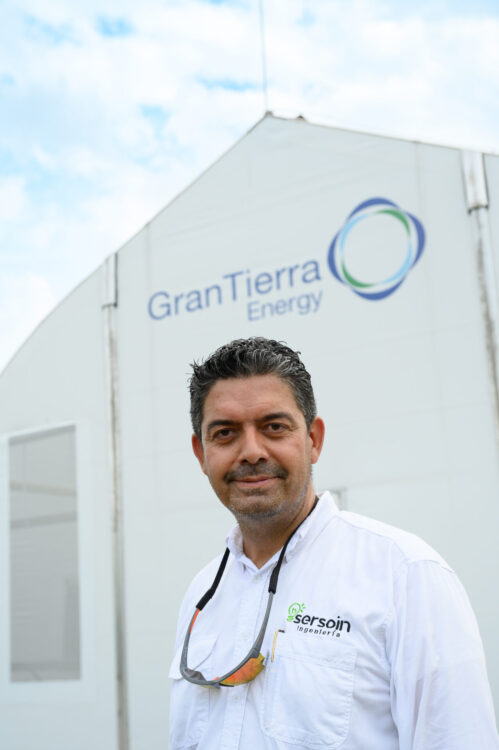
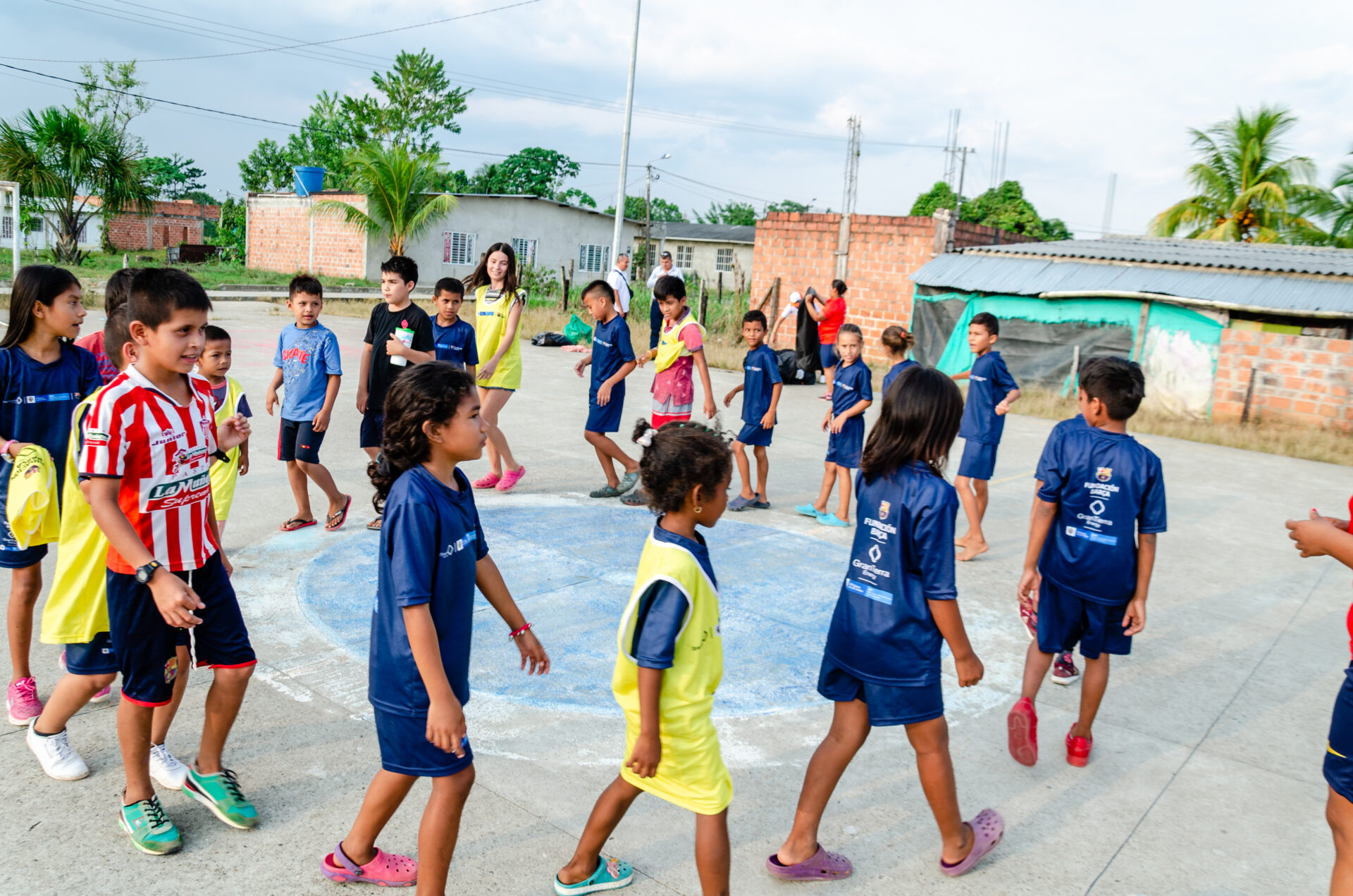
Preventing Child Recruitment in Putumayo
Gran Tierra Energy, the FC Barcelona Foundation, Colombia’s Agency for Reincorporation and Normalization (ARN) and the World Vision International Foundation, continue their strategic alliance to increase resilience in vulnerable children and reduce their susceptibility to two important Human Rights concerns in the area: substance abuse and militia recruitment.
Financed by GTE, the program is implemented by the Youth Violence Prevention Program of the Barça Foundation and uses football as a unifying tool for children from vulnerable populations, children living in poverty and descendants of Afro-Indigenous minorities to learn about conflict resolution, prosocial behaviour development and other important life skills. Expected long-term outcomes include stronger, more stable communities, greater education attainment, increased employment and positive health indicators.
According to the Colombian Family Welfare Institute (ICBF), the project has been effective in preventing forced recruitment of minors, having documented multiple cases of preventions in program participants. To date, the Preventing Child Recruitment Program directly prevented eight cases of forced recruitment and intervened in multiple cases of intrafamily violence, ensuring at-risk children receive protection and care. The project also helps female victims of sexual and physical violence with psychiatric, emotional and legal support.
In 2024, the project Preventing Child Recruitment program exceeded the initially established expectations by over 150%. This extended agreement has benefitted over 2,300 youth, as well as their families. As a result, 5,000 people in the area were positively impacted from this program.

0%
reduction in school dropout rates
Teachers who participated in the program reported a 47% reduction rate in school dropouts
~0
KIDS AGED 6-17
~5,000 children benefit from the Child Recruitment Prevention program, including children living in poverty & descendants of Afro-Indigenous minorities
0
prevention cases
8 cases of forced recruitment were prevented to date
SWIPE FOR MORE
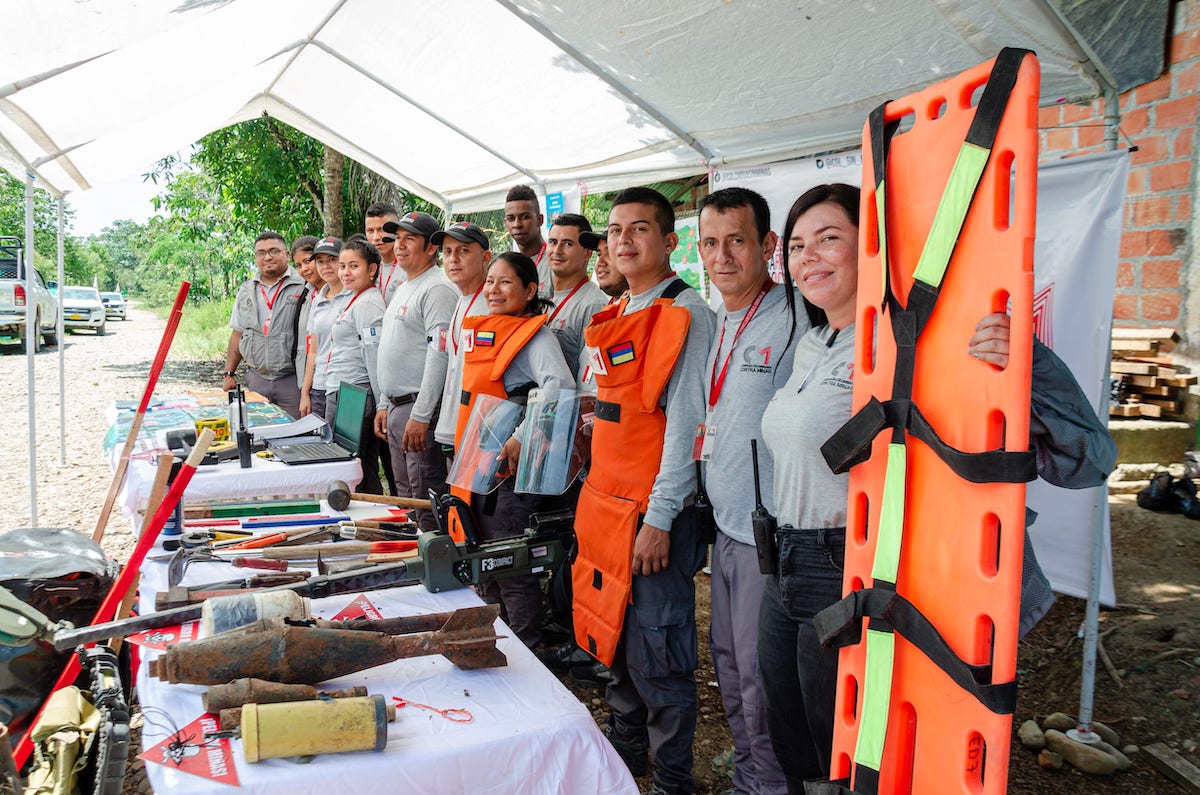
Addressing Legacy Threats to Human Safety
One of the most significant Human Rights threats throughout Colombia is the prevalence of anti-personnel mines and other explosive devices that are an unfortunate legacy of the decades-long conflict in the country.
To address this risk in southern Putumayo where the Company undertakes exploration and development activities, GTE launched a Humanitarian Demining Pilot Project in 2019 with the help of an alliance made up of GTE, the Colombian Campaign Against Mines (CCCM), the Colombian High Commissioner of Peace, Ecopetrol, the United States Department of State and the Norwegian Ministry of Foreign Affairs.
This important demining project has investigated over 57,400 hectares of land that has now been cleared of anti-personnel mines and the Puerto Vega Teteyé area in Puerto Asís has been declared free of contamination.
Because of this project, nearly 3,000 residents of nearby towns can now move about freely along the Puerto Vega-Teteyé corridor without the fear of legacy anti-personnel devices. In 2023, more than 22,400 additional hectares in the municipalities of Puerto Asís and Orito were certified free from antipersonnel mines and explosive devices, and nearly, 300 landmines, unexploded ordinance, and improvised explosive devices have been identified and removed since 2021 with zero accidents and the full support of local communities.
In 2024, GTE helped locate and safely manage eight explosive devices found near its Cohembi field in Colombia. This initiative has improved the living conditions of 972 residents, contributing to a safer environment and promoting respect for the right to life and security in these regions.
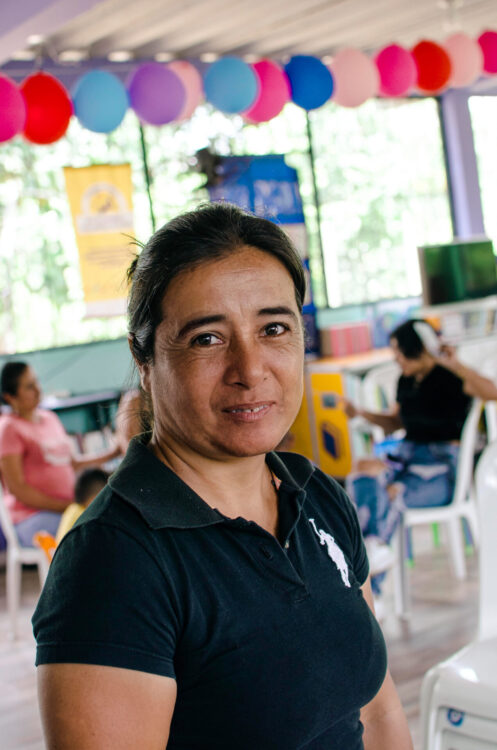
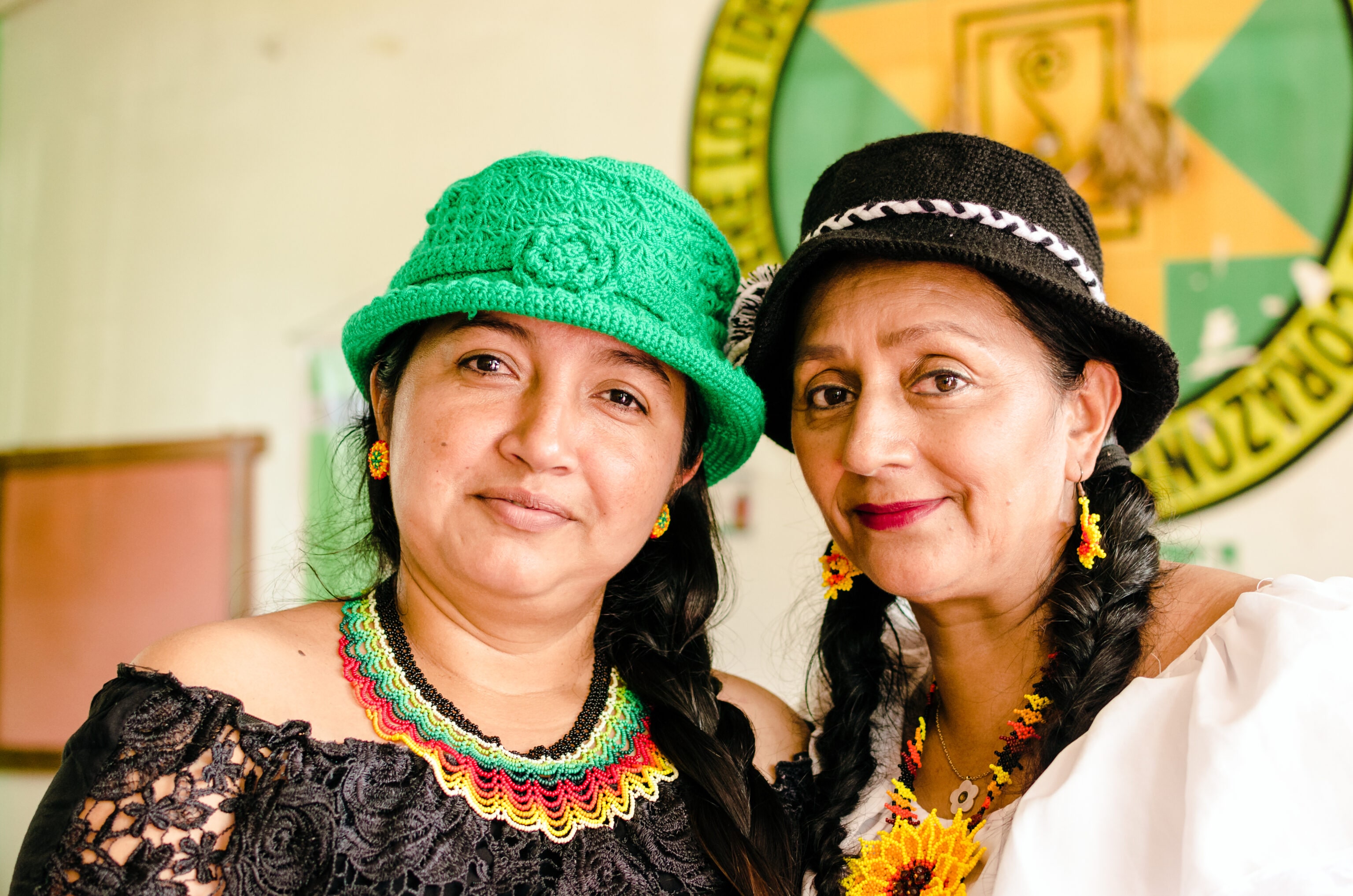
Prior Consultation with Indigenous Groups
Colombia’s Constitution grants Indigenous groups the right to “Free Prior Informed Consultation” or Prior Consultation (PC) before any project is considered near Indigenous land. These communities can be found throughout the country, and there are a number of Indigenous groups and several Afro-Colombian groups in the Putumayo near Gran Tierra’s operations. With its increased exploration and development activities in the Putumayo, many of which interact with these protected communities, GTE has created a department focused solely on the Prior Consultation process.
PC represents a formal process for establishing dialogue between ethnic communities and the Company to ensure they are adequately informed and consulted about company activities; how these activities might interact with and/or impact them; and how any impacts will be mitigated, compensated or prevented. GTE, like other companies in Colombia that participate in the PC process, works with Colombia’s Ministry of the Interior, which follows the formal process and ensures that someone from the ministry or local government are present during each community interaction.
GTE believes that the culture, beliefs, and worldview of Indigenous and ethnic communities offer immense value to society, and Prior Consultations are opportunities to strengthen relationships with these important stakeholders. In 2024, GTE made progress in six Prior Consultation processes, all of which are still ongoing. Since 2016, GTE has initiated 53 Prior Consultation processes, 85% of which resulted in successful agreements.
Furthermore, the Company has several programs designed to support the Indigenous and Afro-descendant population through socio-cultural, social infrastructure and development projects. The Company has also built four ancestral cultural centres for community meetings and activities in order to strengthen the traditions of the Indigenous and Afro-Colombian communities of Orconepul, Alto Orito, Afro Council of Puerto Limón and Martin Luther King.
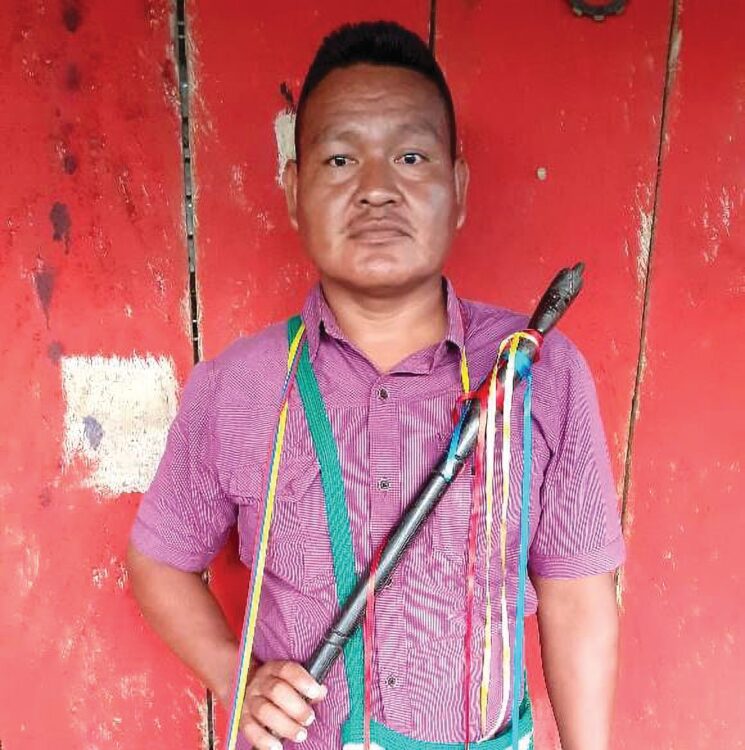
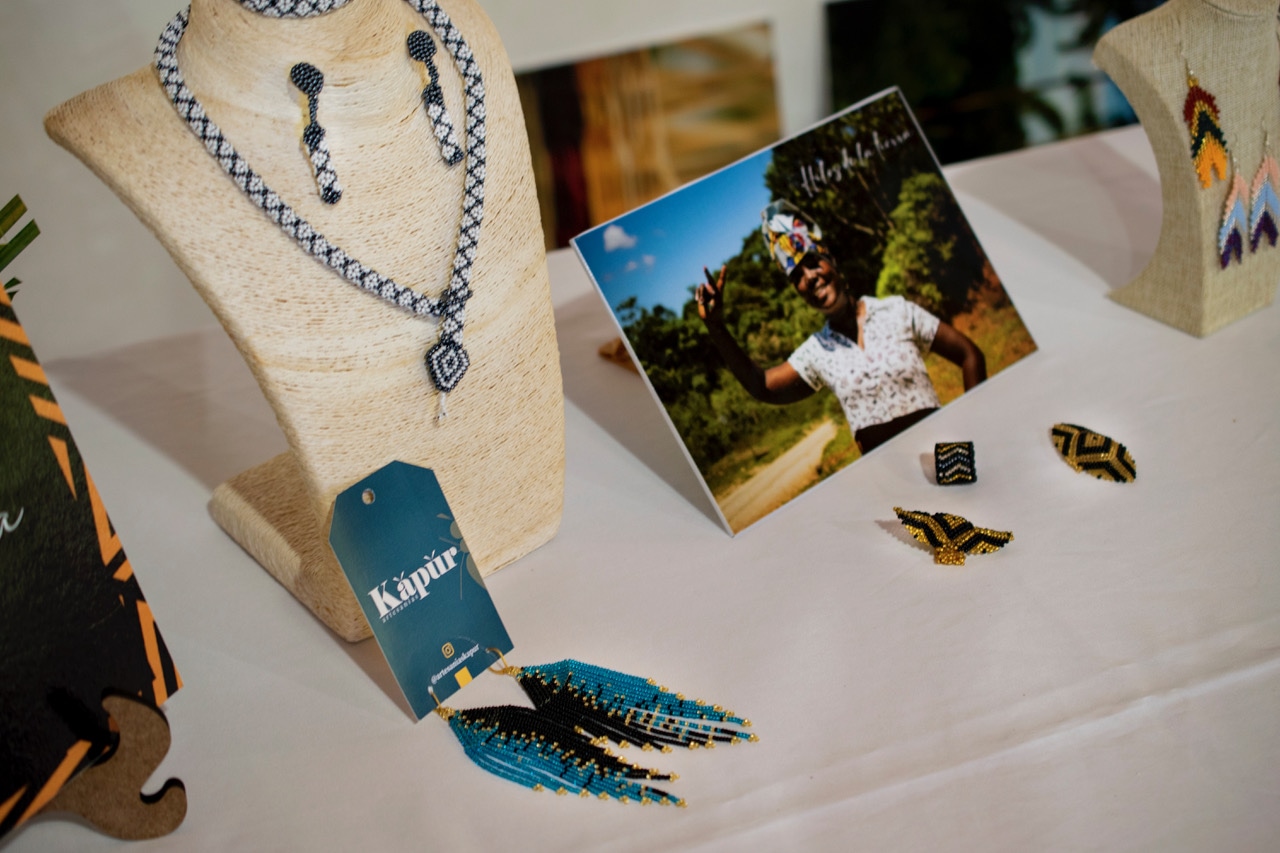
Threads of the Earth
Gran Tierra Energy recognizes the importance of strengthening relations with Indigenous communities living in areas near GTE’s operations. With this in mind, Gran Tierra in partnership with the World Corporation for Women in Colombia (CMMC) created the Hilos de la Tierra (Threads of the Earth) program, which aims to recover ancestral practices through the creation of handcrafted designs using recycled materials as well as innovate with new materials and techniques in design.
In the Putumayo, the program works with artisans and ethnic women’s groups using natural fibers, dyes, seeds and recycled goods to help facilitate the recovery of ancestral practices. In the Middle Magdalena Valley, the program works with vulnerable women dedicated to fashion. The project is aimed at improving the incomes of participants and addresses gender bias in traditional family dynamics with women making up 90% of the participants in 2024.
The handcrafted products reflect the culture, traditional practices, and history from local Indigenous, Afro-Caribbean and rural communities. In 2024, 58% of participants of the program were of Afro-Colombian and Indigenous descent. These traditional artisans preserve their culture through their handcrafted artifacts and share stories about their lived experiences and their territories as a way to inform and educate others.
Gran Tierra’s Hilos de la Tierra program made its return to Expoartesanías 2024, an event that provides our artisans and designers of Putumayo and the Middle Magdalena Valley to join together to present their handcrafted designs. Hilos de la Tierra generated over USD$30,000 in sales alone at this year’s Expoartesanías, with all proceeds benefiting more than 150 artisans from Putumayo, Cesar and Santander. These earnings were made possible by travelling within Colombia to feature their products at various commercial events. The success of these efforts highlights the growing demand for artisanal products and the ongoing support for local entrepreneurs.
In 2023, through this program, participants and renowned Colombian designer Juan Pablo Socarrás, took centre stage on the runway during North America’s third-largest fashion show, Vancouver Fashion Week 2023 to showcase a clothing collection they collaborated on. Three of the artisans were sponsored by GTE to travel to Vancouver, Canada, to participate in the entire fashion week experience. The artisans prepared for the show with Socarrás and his team, observed their work on a major international runway, and connected with international sellers following the show.
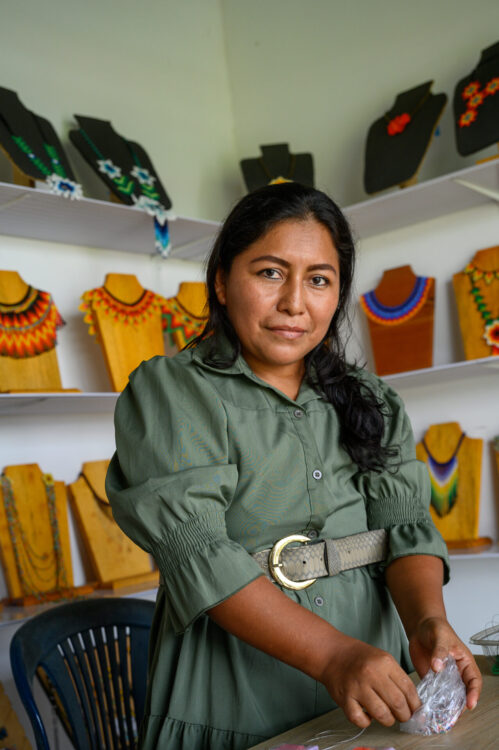
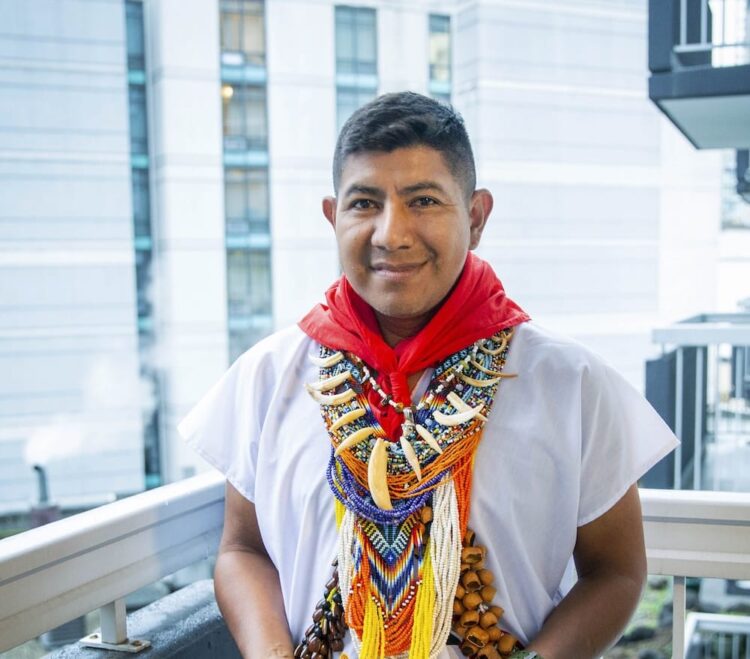
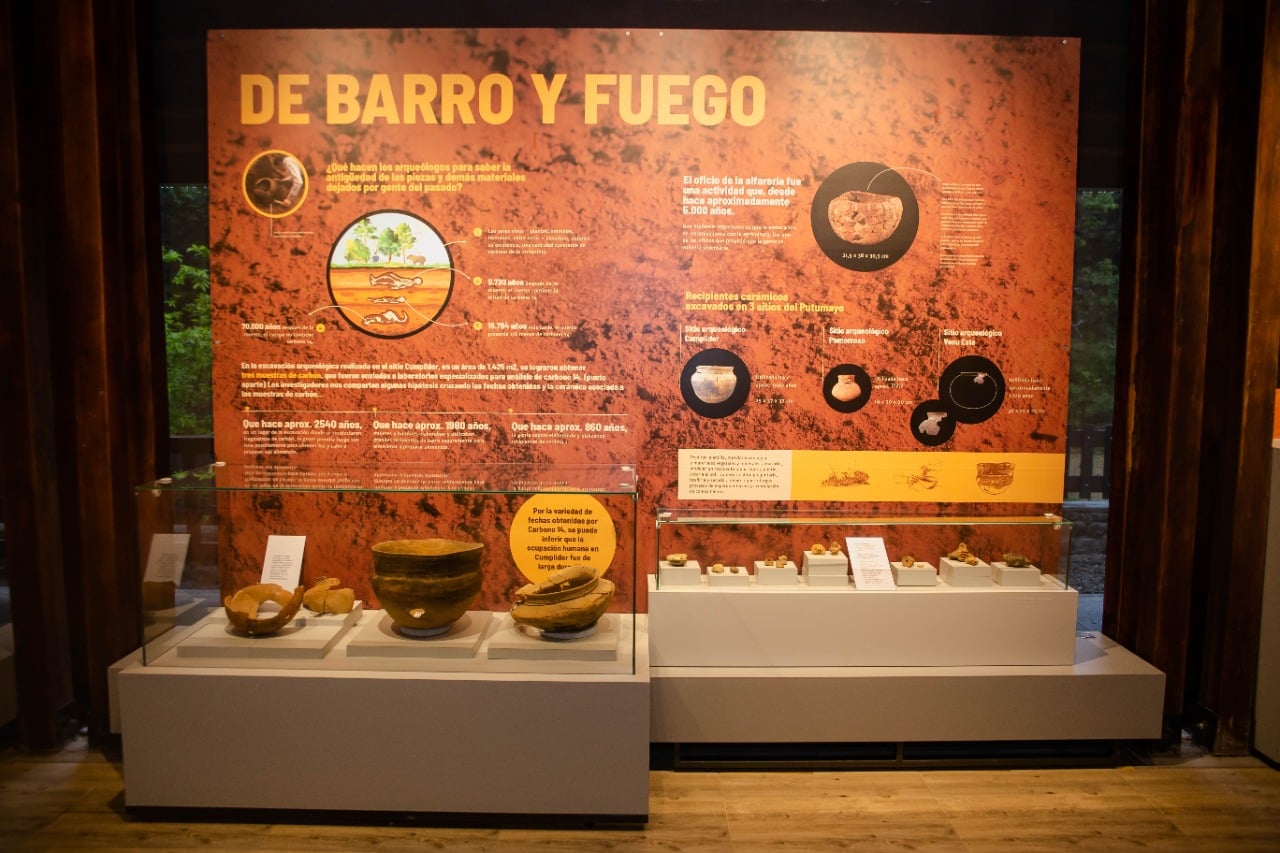
The Suruma Museum
Gran Tierra Energy in partnership with Corpoamazonia and the Colombia Institute of Anthropology and History (ICANH) built and opened, in November 2021, a museum in Putumayo that will serve local communities as a permanent archaeological exhibition.
The Suruma museum is located in the Amazon Experimental Centre (CEA) located near Mocoa, Putumayo and is an educational space to preserve historical artifacts and tell the story of the history and culture of the Putumayo department. There are 15 permanent museum exhibits, distributed in two structures and a central area showcasing the reconstruction of an archaeological excavation area. The museum contributes to the social growth of these territories and their communities by allowing visitors to explore and celebrate the cultural diversity of Putumayo and the Colombian Amazon.
All of the artifacts housed in the Suruma Museum were discovered by Gran Tierra Energy through our archaeological activities in Putumayo. These specific archaeological activities took more than four months of work and during this period of time, 25 archaeologists and 160 local field helpers excavated more than 3,300 square metres.
To date, more than 20 tons of archaeological materials have been recovered and the inventory of the recorded archaeological material is composed of ceramic fragments, lithic artifacts (two carved projectile points), complete pottery pieces, archeological features (coal and fire pits) and a goldsmith’s piece.
In 2024, more than 11,000 people visited the Suruma Museum during its fourth year open. This is the first archaeological museum in Colombia’s Amazon region.
From the beginning, Suruma was designed to also work as a travelling museum that could share its exhibits, culture, and traditions with other communities. In 2024, it was featured at the United Nations Biodiversity Conference of the Parties (COP 16), with support from Colombia’s Ministry of Culture. To help share the museums story more widely, the Colombian Institute of Anthropology and History (ICANH) created a replica with seven different displays. This replica was also shown at the Jorge Garcés Borrero Departmental Library in Cali, where visitors from over 190 countries had the chance to experience it. The exhibit offered a valuable contribution to global conversations about biodiversity conservation and the sustainable use of natural resources.
Last year, the temporary exhibit “People of Putumayo Narrate: Journeys, Exchanges, and Claims” travelled across Colombia, including to the National Museum of Colombia in Bogota and UNESCO-declared World Heritage Site, San Agustín Archaeological Park in the department of Huila.
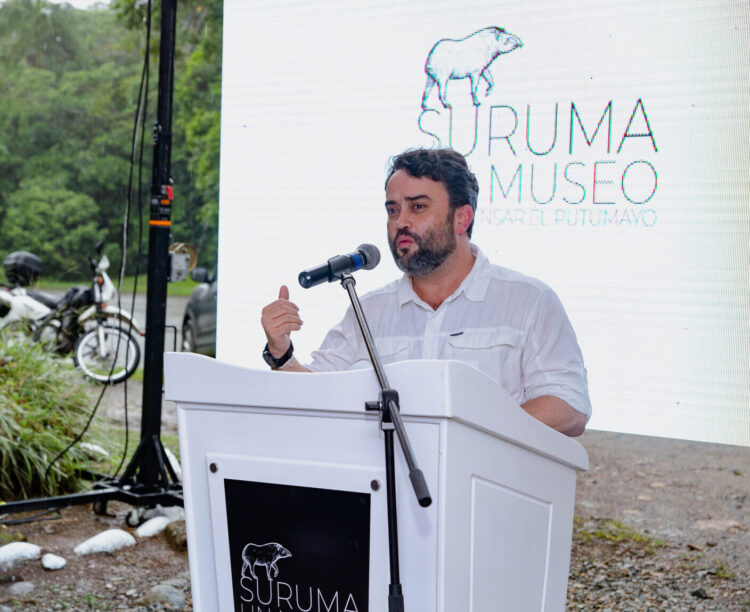
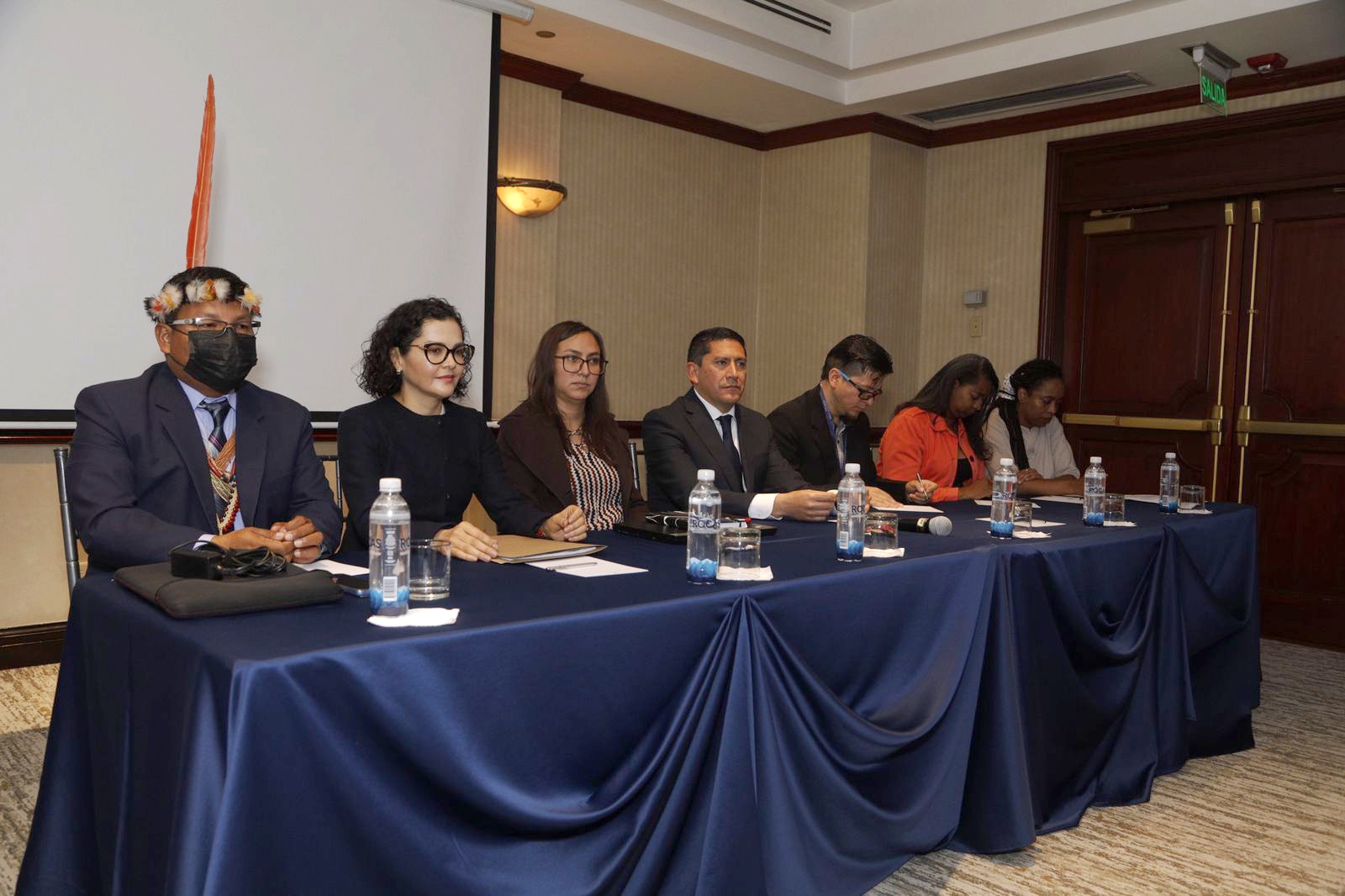
Engaging Leading Human Rights Experts
GTE and renowned business and human rights experts Shift first collaborated in 2019 to identify and work to address human rights issues related to GTE’s business operations and value chain. Shift is the leading centre of expertise on the United Nations Guiding Principles on Business and Human Rights (UNGPs). The nonprofit organization at one point was chaired by the late John Ruggie who authored the Guiding Principles during his mandate as the UN Secretary-General’s Special Representative on Business & Human rights.
Shift introduced GTE staff to a methodology for effectively assessing human rights risks. Shift also facilitated discussions with GTE’s management, corporate responsibility personnel and other field staff at the Company’s operations sites in Colombia and Ecuador, in order to build additional capacity within the Company for managing human rights issues.
With operations in Ecuador currently growing, in 2023 and 2024, the Company carried out training led by Shift, on the standards of the Guiding Principles of Human Rights and Business. This training workshop was attended by supply chain partners, government officials and civil society organizations. In 2023, the Company also held a session with 19 local supply chain partners in Lago Agrio, communicating its Human Rights Policy, operating philosophy, and the requirements to apply its corporate policies and contractual clauses that speak to the respect and protection of Human Rights.
The partnership between Shift and GTE continues today. Gran Tierra is one of 18 companies that participate in Shift’s Business Learning program, which was designed to support companies that are committed to working to fulfill their responsibility to respect Human Rights. In order to qualify for the program, participants must meet the following criteria:
- Evidence of high-level commitment to business and Human Rights
- Demonstrated organizational capacity to drive the implementation process
- Support for the broader, mission-driven learning approach
- Coherence with Human Rights principles

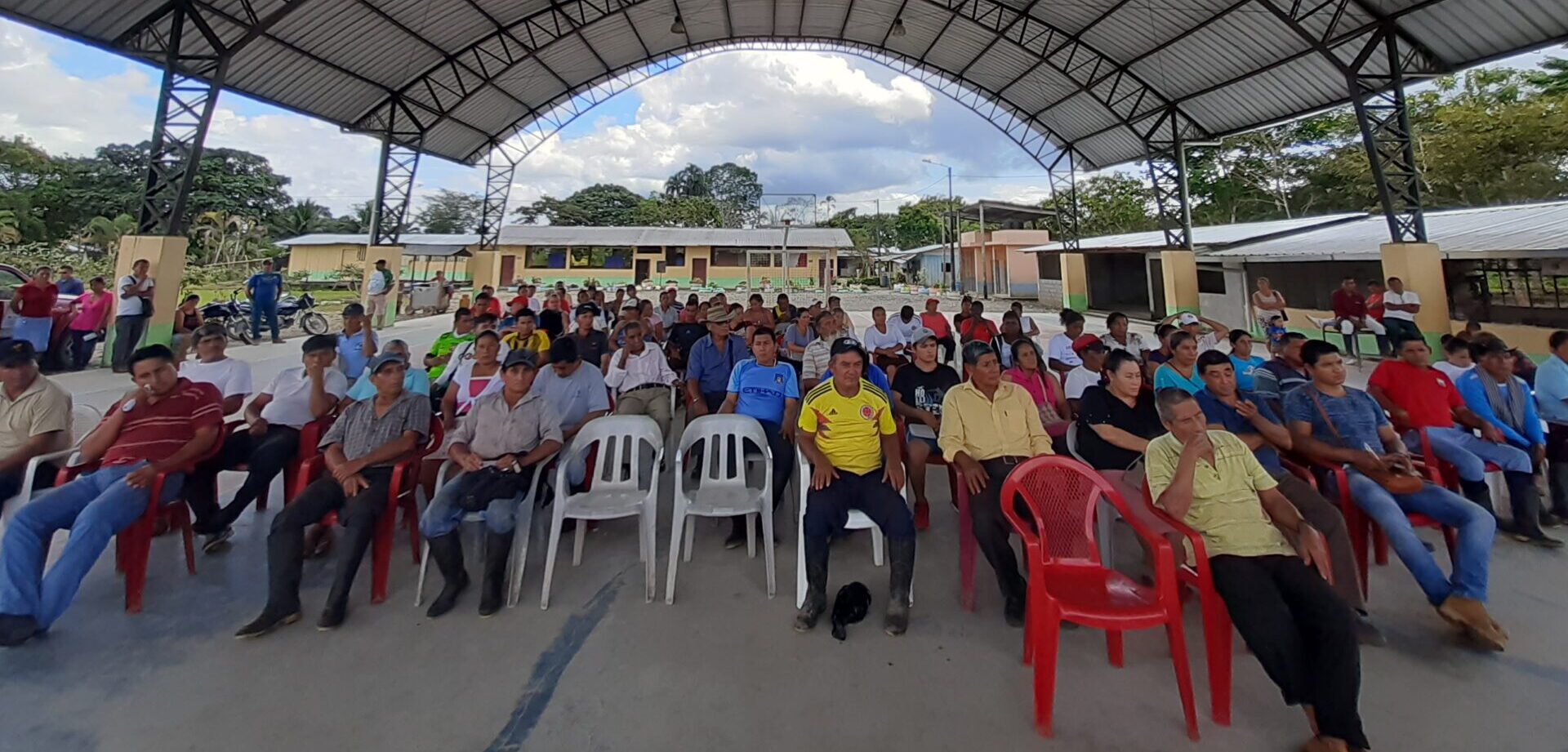
Protecting Human Rights in Ecuador
As a new operator in a country, Gran Tierra must contend with industry legacy impacts that the region may have had. While it is a new company for local Ecuadorian populations in the Sucumbíos province, Gran Tierra’s international experience as a responsible business partner has prepared it well to meaningfully engage communities and manage Human Rights risks in Ecuador. Continued proactive relationship building efforts are key factors in the Company’s ability to demonstrate its respect for protecting Human Rights and its commitment to protecting health safety and the environment to its neighbours.
Prior to any exploration and development work taking place in Ecuador, a Human Rights and Environmental training session was conducted for 35 leaders in the area of influence of GTE’s operations. The session was intended to share knowledge and provide tools to better understand the international rules and regulations that exist to help protect Human Rights, the Environment, and natural resources.
Access to information is a right that Gran Tierra promotes in the regions where it operates. In Ecuador, the Company has implemented a Transparency Committee as an innovative way to facilitate trust and relationship building between communities, local authorities, and GTE. In 2024, GTE held 16 Transparency Committee meetings with neighbouring communities, involving leaders from eight different communities. The Committee guarantees a space for dialogue, transparency and community participation to validate regulations, agreements and commitments.

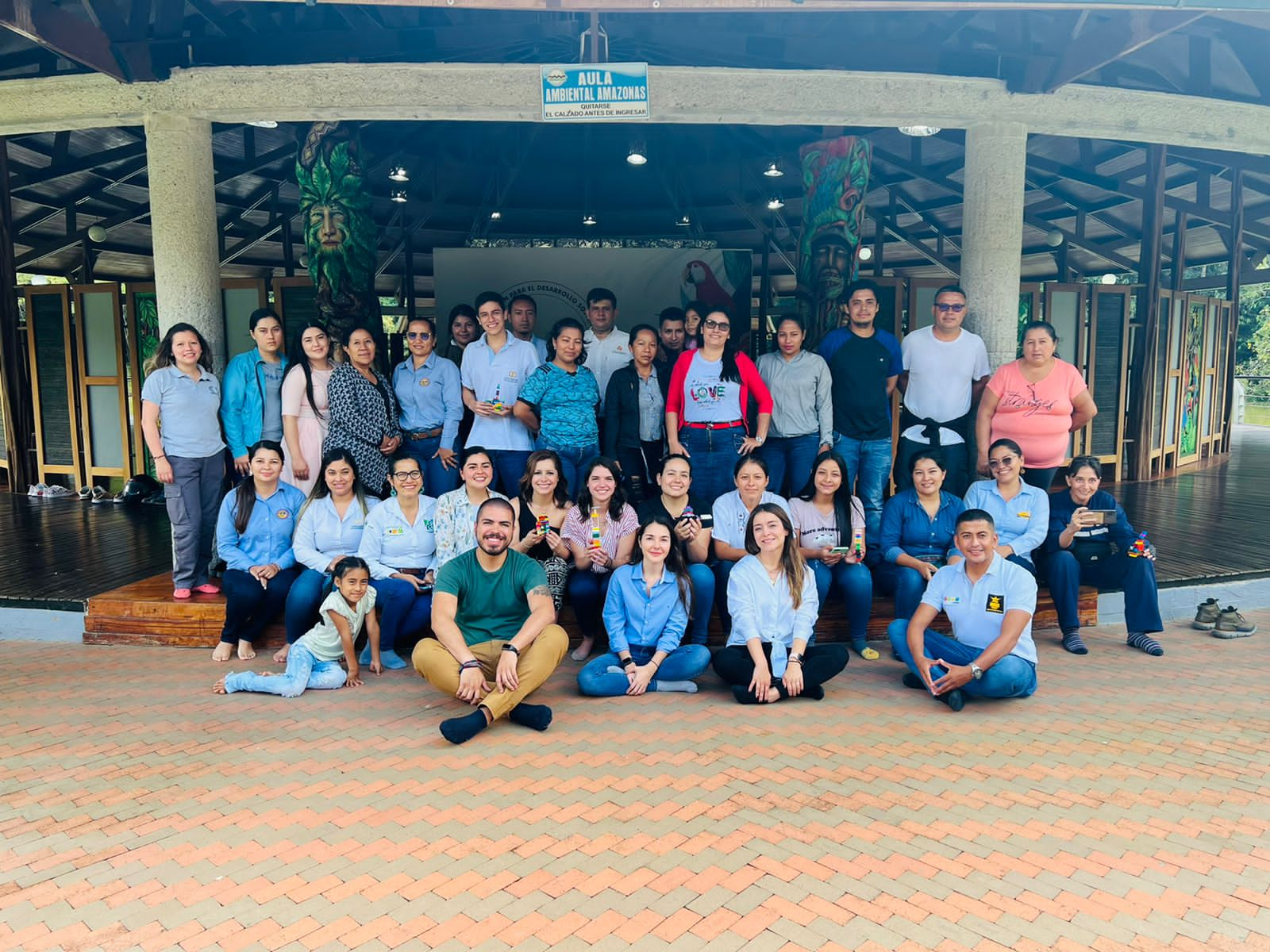
Supporting Colombia’s Reintegration and Reincorporation Efforts
A number of GTE’s efforts are focused on supporting the Colombian government’s reintegration of ex-combatants back into Colombian society. The dynamics of post-conflict situations are complex, but the objective is simple: to support the country’s efforts at achieving lasting peace. Creating economic opportunities is one of the critical issues facing the reintegration of 13,000 ex-combatants back into Colombian society.
Providing these individuals with viable economic opportunities is instrumental in ensuring their successful transition from a life marked by conflict and violence to one characterized by stability and productivity. By facilitating access to employment, training, and entrepreneurship opportunities, GTE contributes to the broader objective of encouraging ex-combatants to become self-sufficient, law-abiding citizens. When individuals are gainfully employed and can support themselves and their families through legitimate means, they are far less likely to revert to the activities that led to their involvement in conflict.
GTE’s successful reintegration and peace process will help strengthen the civil society and the economic underpinnings of the country. GTE has been recognized for its commitment to multiple Human Rights projects supporting Colombia’s reintegration efforts by the Agency for Reincorporation and Normalization (ARN).
GTE’s reintegration contributions are made through the following Human Rights programs:
- Cacao Nurseries
This program created by Gran Tierra Energy and Fedecacao provided participants with nurseries and the opportunity to grow and sell cacao with technical support and guidance from experts in the field. - Preventing Child Recruitment Program
This program works to prevent the forced recruitment of girls and boys by using football as a unifying tool for children to learn about conflict resolution, prosocial behaviour development and other important life skills. Ex-combatants, who are reintegrated into society, have an opportunity to share their stories and teach future generations how and why to avoid recruitment. Click here to learn more about the Preventing Child Recruitment program.
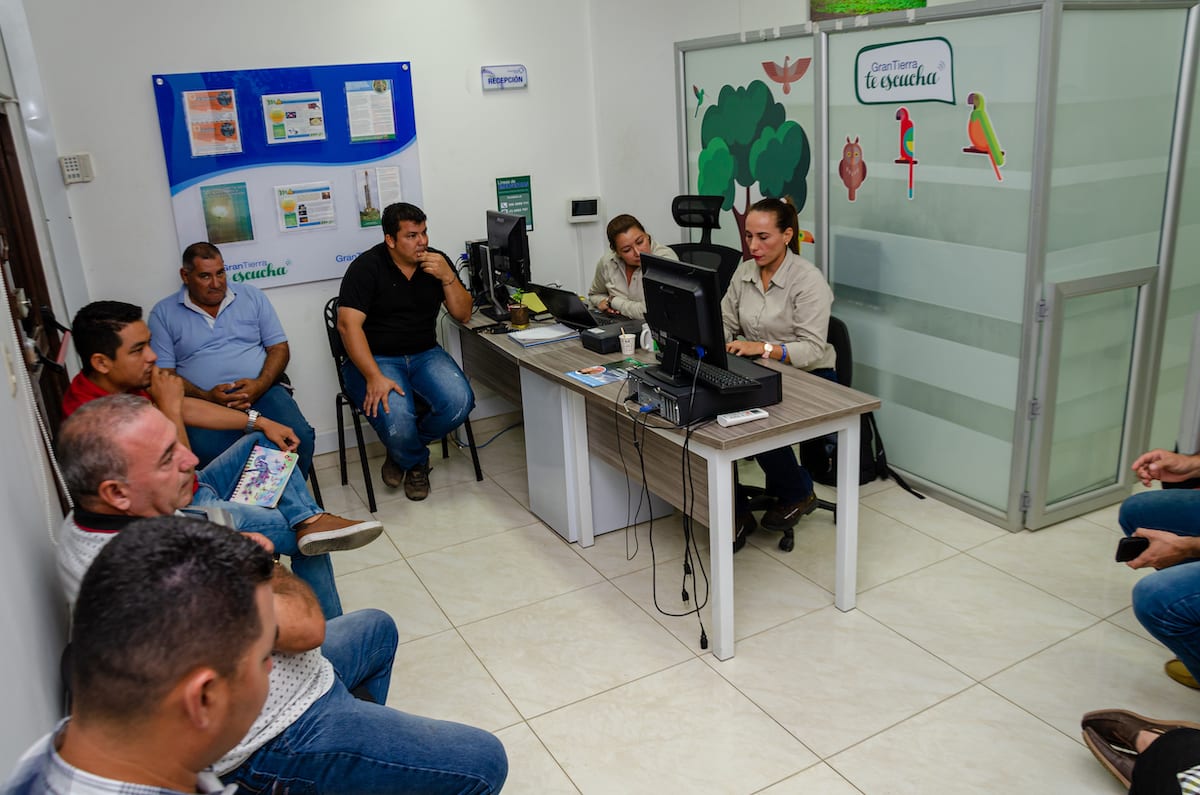
Gran Tierra Te Escucha: An Open Door for the Community
As part of its efforts to maintain a strong, positive relationship with local communities, Gran Tierra has local offices that are part of a program called “Gran Tierra Te Escucha” (Gran Tierra Listens). The role of each office is to create a physical, easily accessible channel for community members to engage in two-way communications with the Company.
Community members are encouraged to visit the offices in an effort to uncover potential concerns, which are referred to as Petitions, Complaints and Grievances (PQR’s). This important feedback from community partners can highlight opportunities for improvement or specific issues that the company must respond to.
Gran Tierra also offers Mobile GTE Te Escucha offices in Ecuador to ensure that the residents of the more remote communities near the Company’s Charapa and Chanangue operations have the opportunity to be heard and regularly engage directly with the Company each month. With GTE’s mobile offices, the Company has logged in 329 hours of direct engagement, furthering open dialogue with the communities.
Gran Tierra can measure the effectiveness of its grievance management process through the number of PQRs, the higher the numbers of petitions, questions, complaints, or claims (PQRs) indicate that communities feel comfortable engaging with the company. In 2024, Gran Tierra Te Escucha offices received 1,527 PQRs.
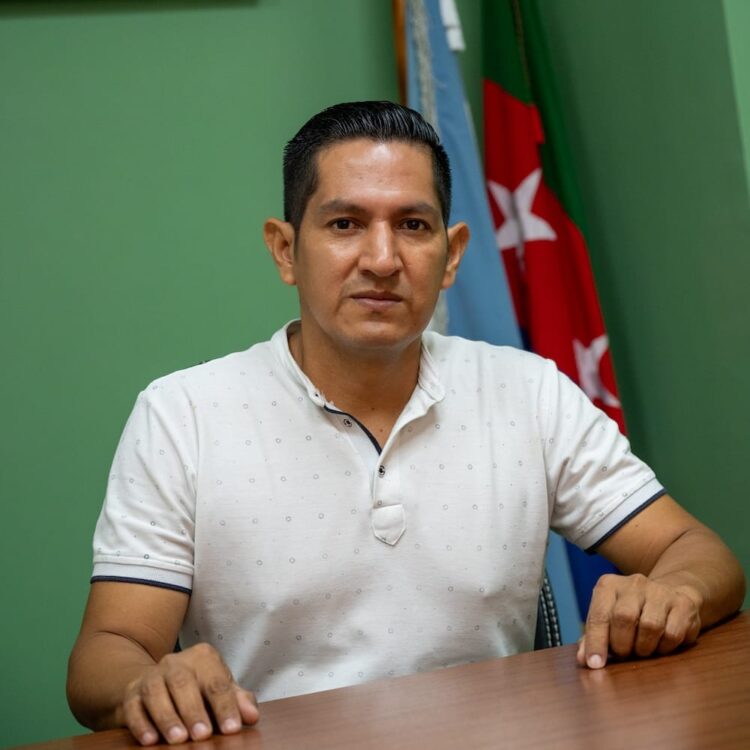
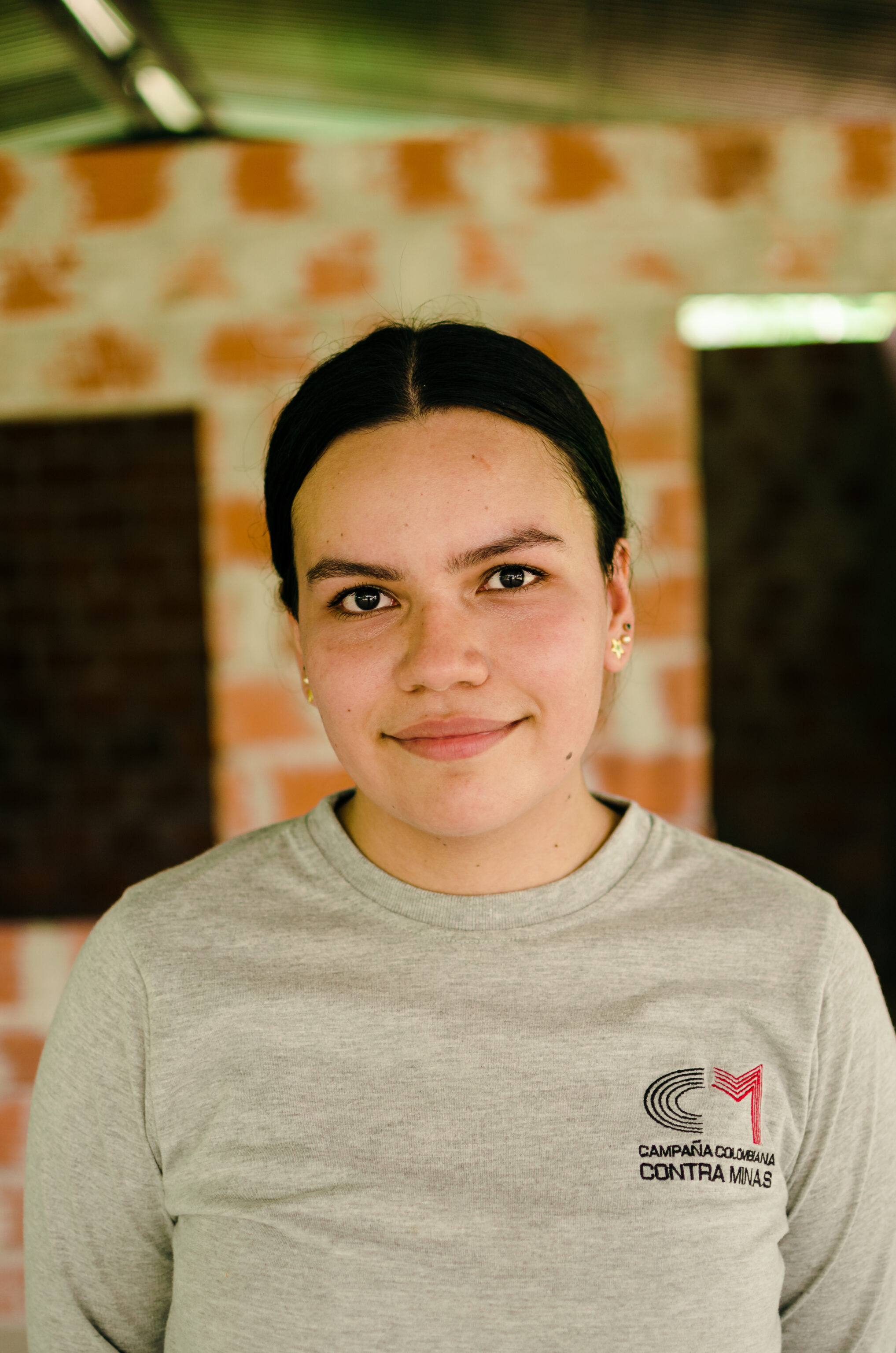
How Gran Tierra Handles Petitions, Complaints and Claims
Gran Tierra respects the evolving relationships with local communities and the Company has continued to build relationships based on mutual understanding and acceptance. Gran Tierra seeks to provide quality, timely, coherent, efficient and responsible responses that build trust, manage expectations and minimize environmental risks.
Whether Gran Tierra has delegated an activity or performed it directly, GTE is committed to being responsible for how it is carried out. Dialogue with communities through Petitions, Complaints and Claims (PQRs) embodies principles recommended by the World Bank Group and performance criteria that are set forth in the United Nations publication Guiding Principles on Business and Human Rights.
This process serves as an early warning system for emerging community concerns, providing the Company an opportunity to analyze the situation, assess the impact, anticipate any issues, and appropriately respond.
The Process
There are four in-person and correspondence-based channels that people can use to file petitions, complaints and claims. These are screened and go through the documentation centre and the coordination centre. Everything is coded with a report received in real time at Gran Tierra’s headquarters in Canada and regular reports are sent to senior management. An Effectiveness Committee meets every month, looking at trends. To ensure that the system continues to improve, internal and external satisfaction surveys and performance statistics are reviewed by GTE’s senior management team on a regular basis.
To see the ways to submit a PQR visit our Community Queries page here.

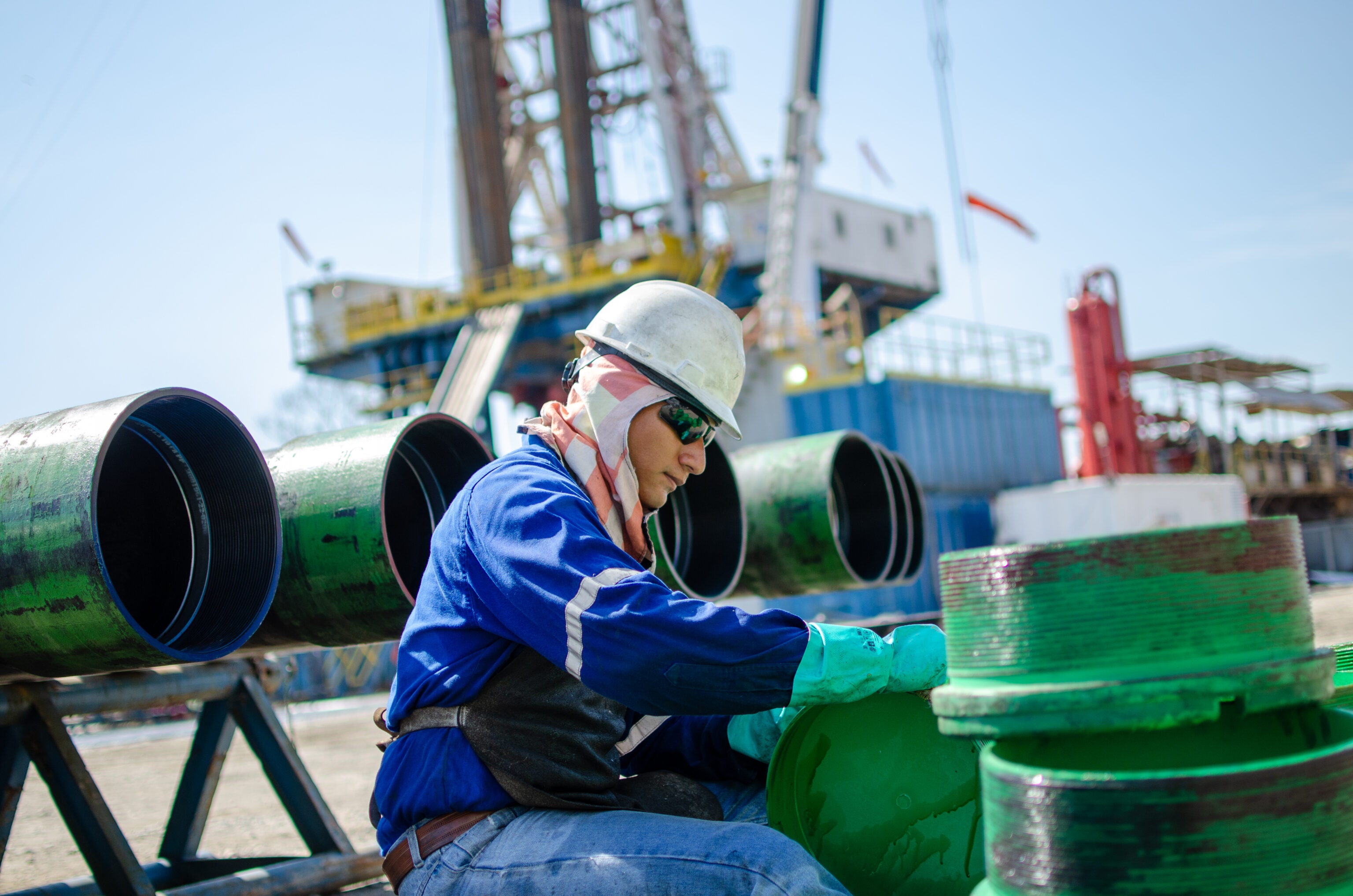
Familiarization Trips
GTE has several programs that let people see first-hand what the Company does to minimize the impact of its operations on the environment. One program is called Familiarization Trips (Fam Trips), which involves encouraging stakeholders to visit production sites and observe the Company’s practices, particularly with respect to operations and the environment. Since 2019, GTE has hosted nearly 40 Familiarization Trips (FamTrips), welcoming over 780 people to the Company’s facilities: the Costayaco Forestry Centre, the Costayaco and Acordionero operations facilities, our fields, and the Suruma Museum.
This program has proved to be effective in countering myths some people have regarding industry practices, by providing basic information about hydrocarbons, and by providing basic information on how oil operations work. Some visitors come from areas near current operations and some are from areas where GTE is planning to operate.
In 2024, Gran Tierra Energy expanded Fam Trips into Ecuador, with the activities now linked to complementary initiatives like training. This has generated expectations in areas of indirect influence and is seen as an effort to gradually engage the broader community. GTE hosted self-sustainable initiatives, ventures related to local production, manufacturing and marketing of small entrepreneurs in the country, with 79 people participating.
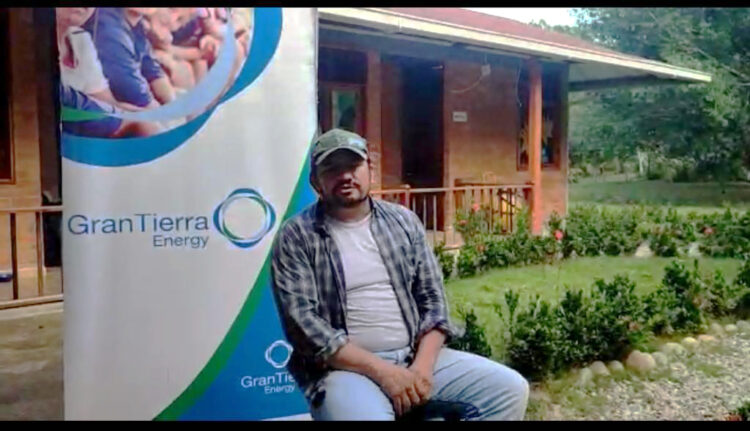
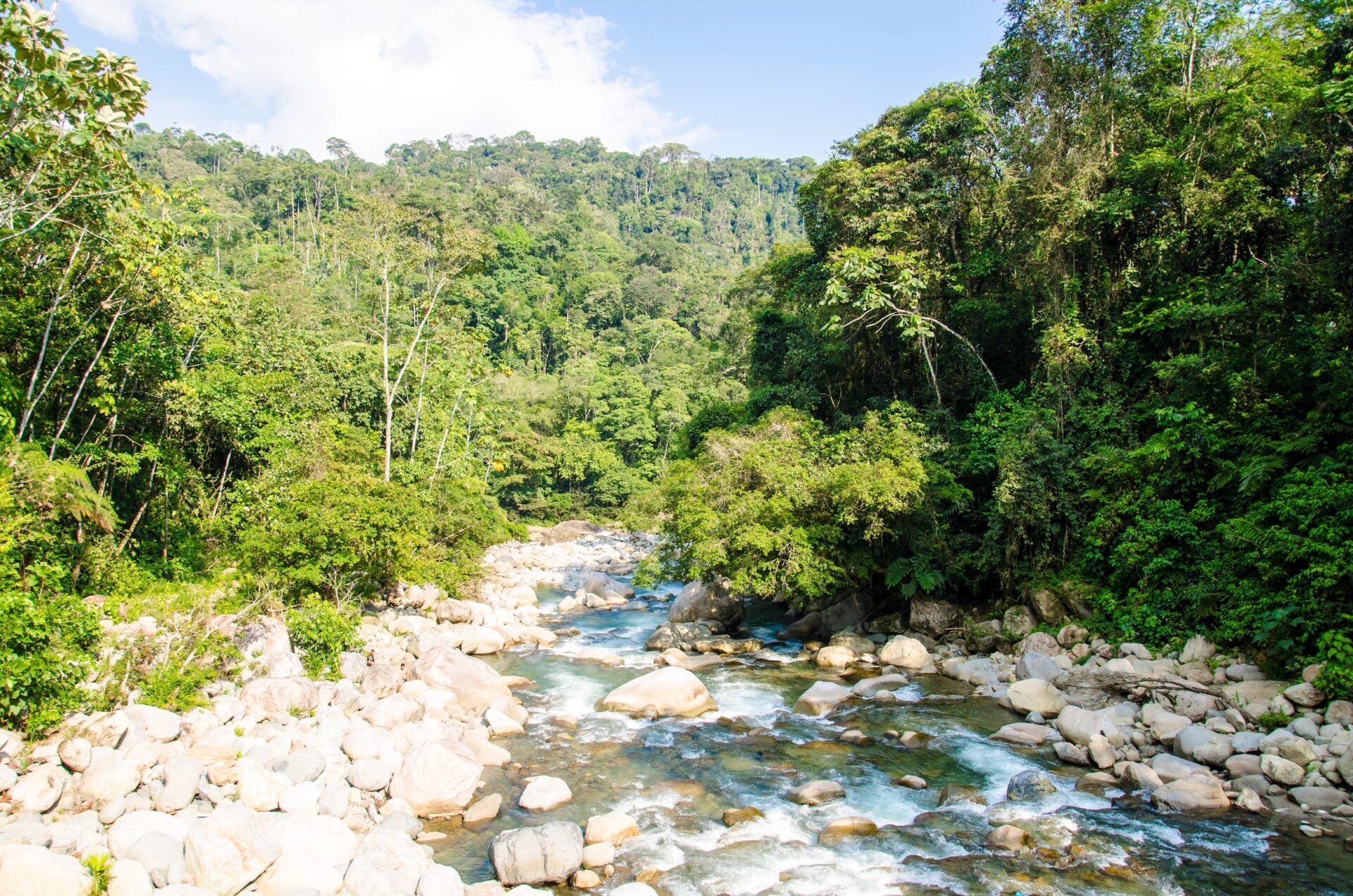
Protecting the Water and Environment
Gran Tierra believes that the protection of freshwater is an essential part of responsible oil and gas exploration and production. The Company is committed to ensure that its operations do not have an impact on groundwater and aquifers. Independent monitoring and testing have confirmed that Gran Tierra has fully safeguarded groundwater quality throughout its history of drilling operations in Colombia.
Clean water is a vital, limited resource everywhere in the world, and fundamental to healthy, thriving communities in Canada, Colombia and Ecuador. Gran Tierra’s goal is to maintain efficient and responsible water usage throughout the life cycle of its operations and to achieve zero surface water usage.
GTE implements multiple strategies to reduce the use of surface water for industrial processes. The Company has updated its existing operations and implemented new project design requirements that minimize surface water use, making significant progress towards its objective of 100%, closed-cycle production water use, meaning, any water discharged from GTE’s operations must meet high-level, internationally accepted quality standards before release.
GTE’s Water Management Program ensures its water use does not adversely impact access to water by residents and businesses in communities near its operations.
Independent Water Monitoring in Local Communities
GTE will fund additional independent water studies for local communities in Colombia and Ecuador if they want to hire their own laboratory (as long as it is certified by Colombian and Ecuadorian regulators). GTE will take its own samples and compare them with the communities’ samples, sharing the results at a community meeting.
Gran Tierra also performs rigorous environmental impact assessments of its proposed projects. An important part of GTE’s approach is being transparent about environmental practices, inviting communities to witness its activities and dispelling myths. The goal is to show communities what the company is doing, rather than just talking about it.
If you have any questions about Gran Tierra’s operations near your community, please contact us at: teescuchacolombia@grantierra.com or teescuchaecuador@grantierra.com.
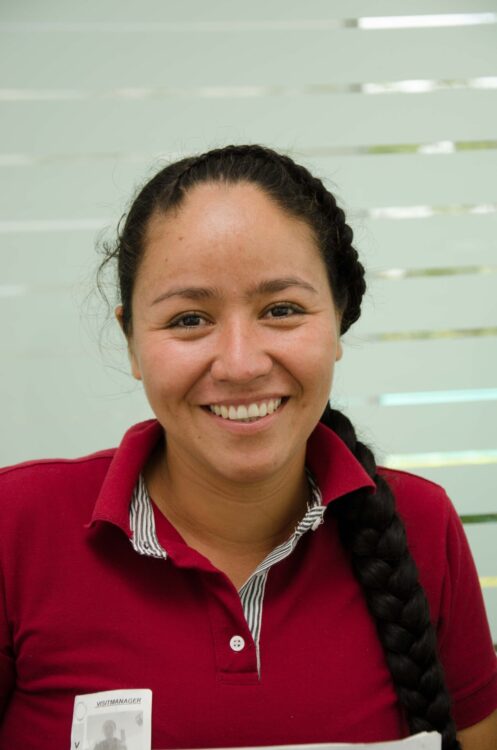
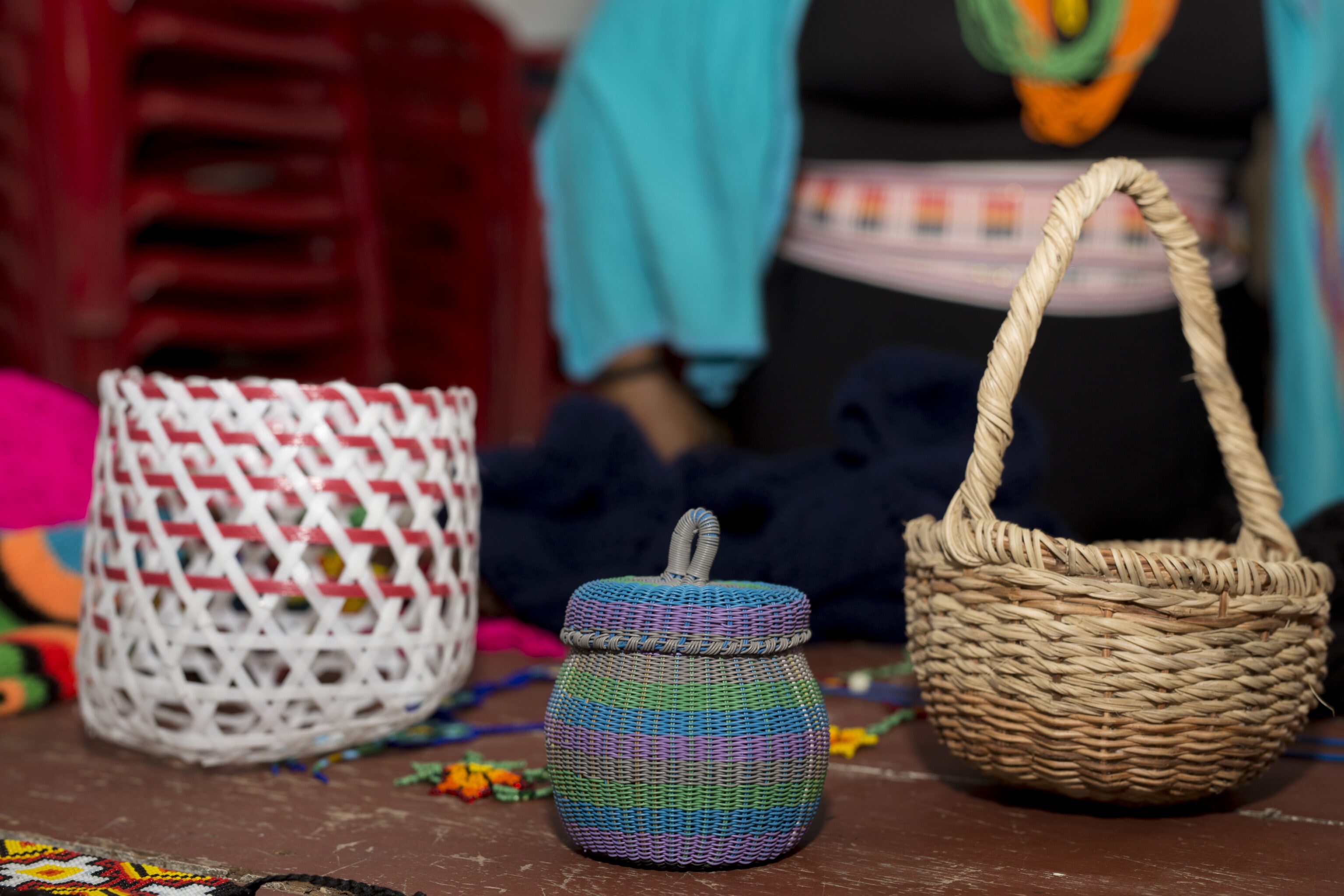
Putting Local Businesses First
GTE continues to increase opportunities for local contractors and suppliers through a strategy focusing on putting local companies first to meet its needs for goods and services, only expanding its search beyond the locality if no qualified providers are available. Local vendors are an important driver of regional economies, as GTE’s contributions circulate well beyond its direct supply chain.
Providing opportunities for local businesses to participate and evolve with GTE’s operations is a fundamental value. Significant investments have been made in training, education and operations to drive economic growth and build a reliable supply chain through its award-winning Key Partners program.
+0
contracts
+1,100 contracts were fulfilled through partnerships with local companies in Colombia and Ecuador in 2024
+$0M
awarded locally
GTE awarded over USD$106 million to local companies for goods and services in 2024
0
New Companies GTE
Welcomed 70 new companies into its vendor & supplier directory
SWIPE FOR MORE
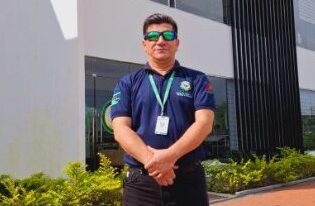
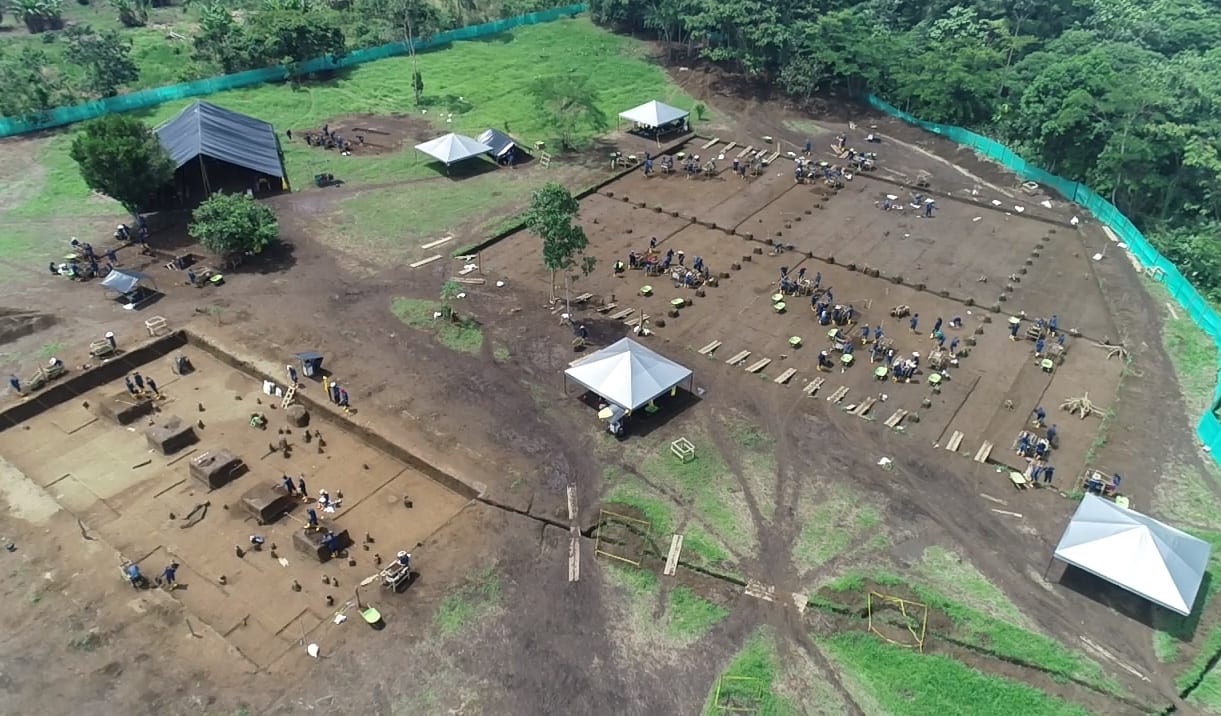
Protecting Colombia’s Archaeological Heritage
As an operator in a country with significant archaeological potential, Gran Tierra implements the Colombian Institute of Anthropology and History’s (ICAHN) Archeology program that guides our projects during the early stages of operations. This allows the Company to identify and plan for the specific archaeological characteristics of the areas where the Company wants to build new civil works or infrastructure. In turn, this helps to assure the protection, conservation and recovery of the country’s archaeological heritage.
Gran Tierra’s Environmental Management Plan, the EMP, calls for the following measures to be taken before any operational development begins:
- Prior to the beginning of excavation in any area that has not been disturbed for the development of well pads or roads, a preliminary assessment of cultural/archaeological values will be conducted by a qualified specialist.
- If significant sites exist or are suspected, appropriate measures to protect or document these sites and recovery of any artifacts is implemented.
- In areas of suspected high archaeological value, a local archaeologist will be employed to provide on-site support in identifying chance discoveries and developing an appropriate approach to avoiding or preserving them.
In addition, as a prerequisite to receiving an environmental license, Colombia authorities require developers to prepare a site-specific archaeological management plan.
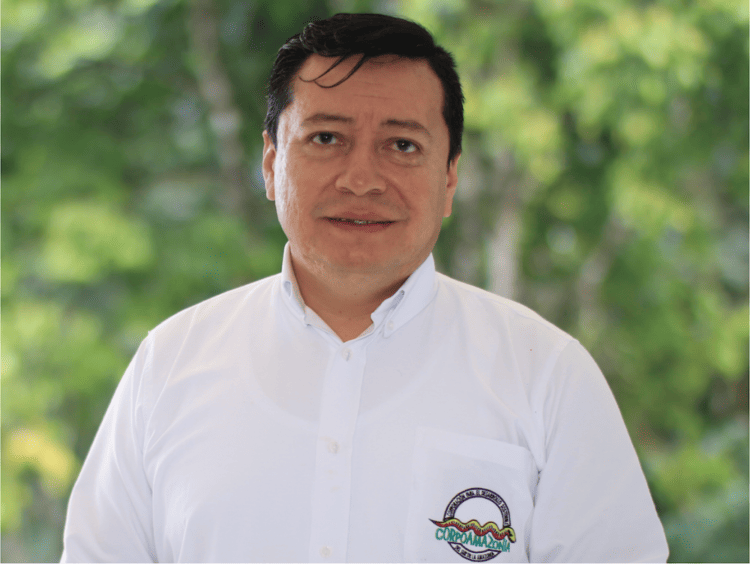
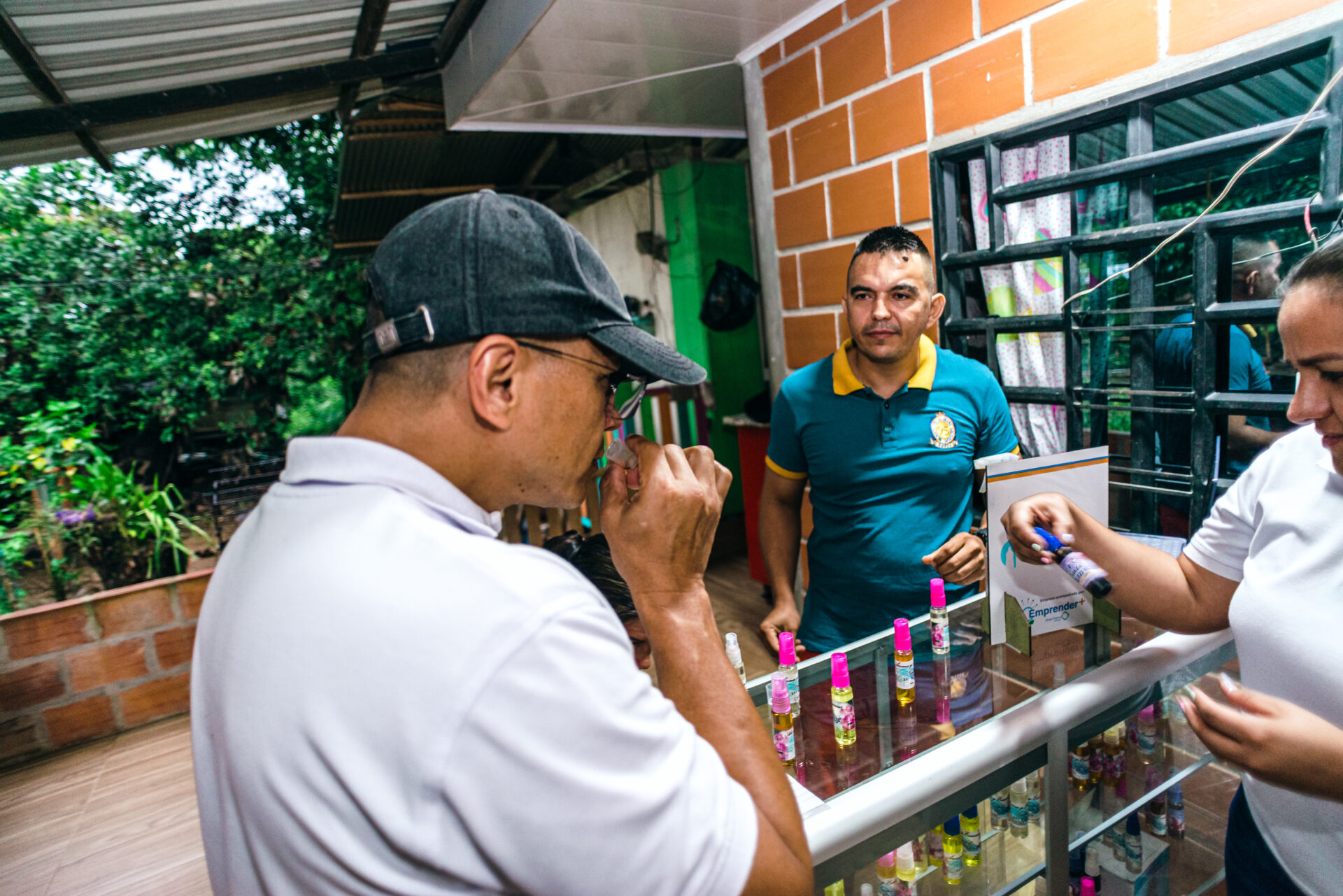
Strengthening Human Rights Throughout the Supply Chain
Gran Tierra Energy is committed to operating at the highest level of responsible business conduct, through the adherence and application of the highest Human Rights and Business international standards, as well as in strict compliance with the legislation of the countries where the company operates. The Company creates and ensures a non-discriminatory and respectful work environment for all its personnel and contractors, offering safe and healthy working conditions. Gran Tierra is also committed to managing human rights risks within its business and through its supply chain, including working to combat forced labour and child labour.
To ensure that our operations are conducted with the highest ethical and transparent performance, Gran Tierra requires strict adherence to all of its Corporate Policies throughout its supply chain. Furthermore, the Company conducts its operations in alignment with the ILO Fundamental Principles and Rights at Work of the 1998 International ILO Declaration, including a commitment to the elimination of child labour, forced labour, discrimination in the workplace, and recognition of freedom of association – all essential to maintaining excellence in operations.
Our commitment to human rights awareness, principles and protections help partners and suppliers prepare for and respond to any scenario throughout GTE’s value chain. In 2024, 332 contracts were entered into with 200 suppliers for the provision of goods and/or services in Colombia and Ecuador. 100% of these contracts included human rights clauses and a document called The Responsible Practices for the Respect of Human Rights (RPRHR), which outlines that all suppliers are required to provide services to the Company in accordance with GTE’s human rights policies.
Since 2021, Gran Tierra has offered training to its contractors to help them understand and adhere to its Human Rights Policy. To strengthen commitments and good practices within its supply chain, the Company partnered with Hemisferio Consultores and ICESI University to deliver targeted programs to 22 local contracting companies, many of whom have since formalized their own Human Rights policies.
Gran Tierra Energy will continue to strengthen the integration of human rights principles across its operations and supply chain, as part of its commitment to ethical and responsible business conduct.
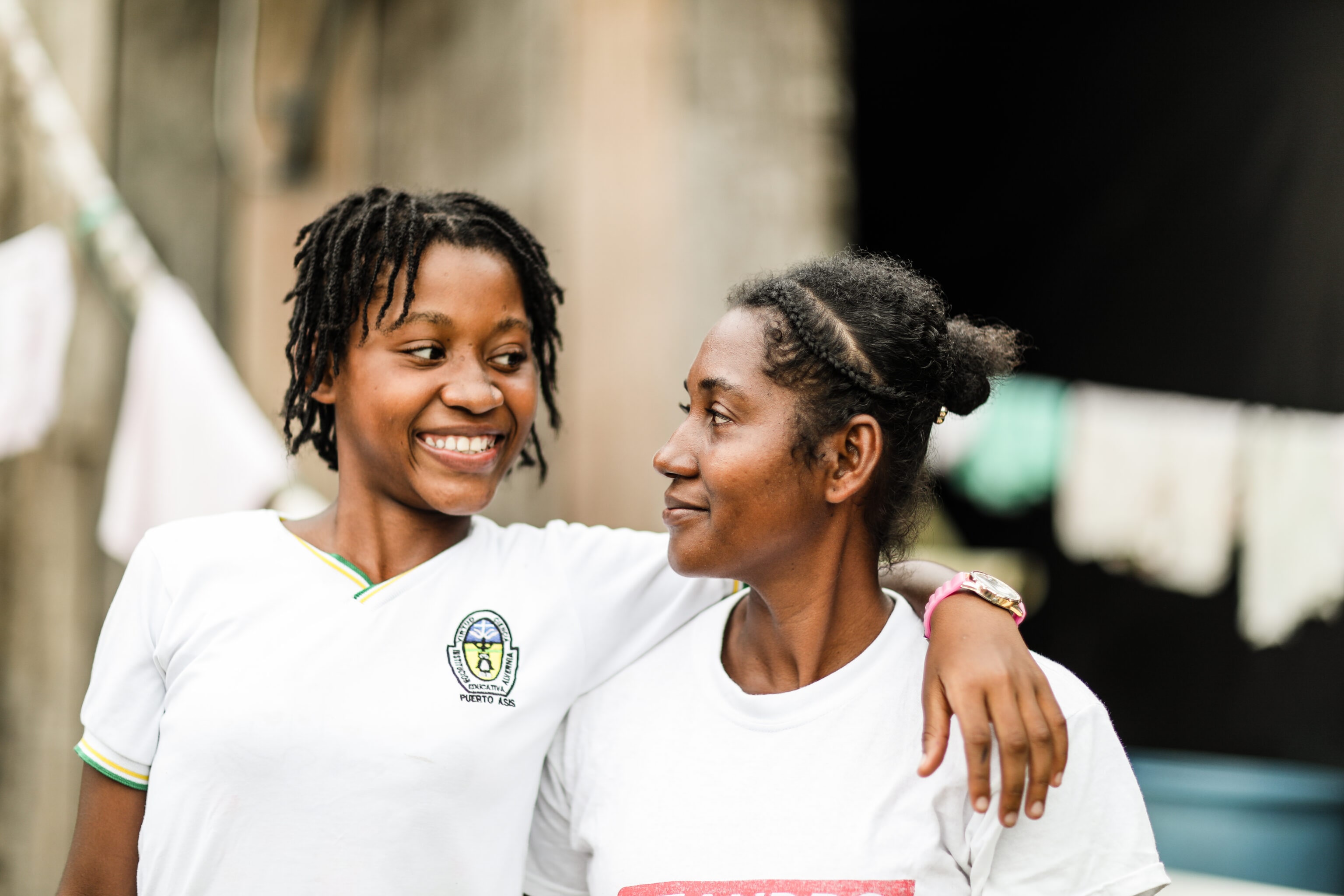
Supporting our Stakeholders with Human Rights Training
One of the main pillars of GTE’s Human Rights work involves integrating its policies and concepts into its business. This effort requires extensive training with internal stakeholders to ensure they understand and adhere to the Company’s policies which are designed to protect rights.
This includes:
- Environmental management and licensing, including rights to land, water, and other natural resources.
- Health and Safety, including the right to life, physical integrity and security.
- Social freedom, including rights to protest and exercise legal rights.
Training sessions for a variety of external stakeholders focus on fundamental Human Rights concepts as well as GTE’s policies and scope of responsibility to the community. These sessions look at GTE’s Human Rights best practices and showcase the overall strategy for addressing and managing any Human Rights issues.
Training The Workforce
A fundamental part of Gran Tierra’s commitment to respecting and promoting human rights is the integration of its Human Rights Policy at all levels of the organization. GTE conducts a range of activities to build awareness and understanding of Human Rights principles among employees, contractors, and supply chain partners. Central to this strategy is regular training, which equips personnel to identify and address potential issues, such as preventing forced and child labour child labour and ensuring safety and respect for social leaders in the communities who live near our operations.
Strengthening Suppliers
Since 2021, Gran Tierra has offered training to its contractors to help them understand and adhere to its Human Rights Policy. To strengthen commitments and good practices within its supply chain, the Company partnered with Hemisferio Consultores and ICESI University to deliver targeted programs to 22 local contracting companies, many of whom have since formalized their own Human Rights policies.
Strengthening transparency and access to information
Transparency, respect, and open communication with communities are key pillars of GTE’s community engagement. In 2024, the Human Rights team rolled out a series of internal workshops designed to strengthen staff capacity and ensure consistent standards for communities’ rights to transparency and access to information.
The workshops were held in Ecuador (4 sessions) and Colombia (2 sessions), reaching 52 employees across the social, environmental, and licensing teams. The sessions covered five topics:
- Guide for Participatory Dialogue
- Guide for Maximum Disclosure and Transparency
- Guide for Differential (Ethnic) Approaches
- Guide to Clear Language and Accessibility
- Document Management Tool

0
new courses
2 new human rights courses were developed to help employees, contractors and supply chain partners identify and understand human rights principles
0
contracting companies
22 contracting companies received training to understand and comply with GTE’s Human Rights Policy, and many have since adopted their own human rights policies as a result
0
training sessions
6 training sessions were held in Colombia and Ecuador, reaching 52 employees across the social, environmental and licensing teams
SWIPE FOR MORE
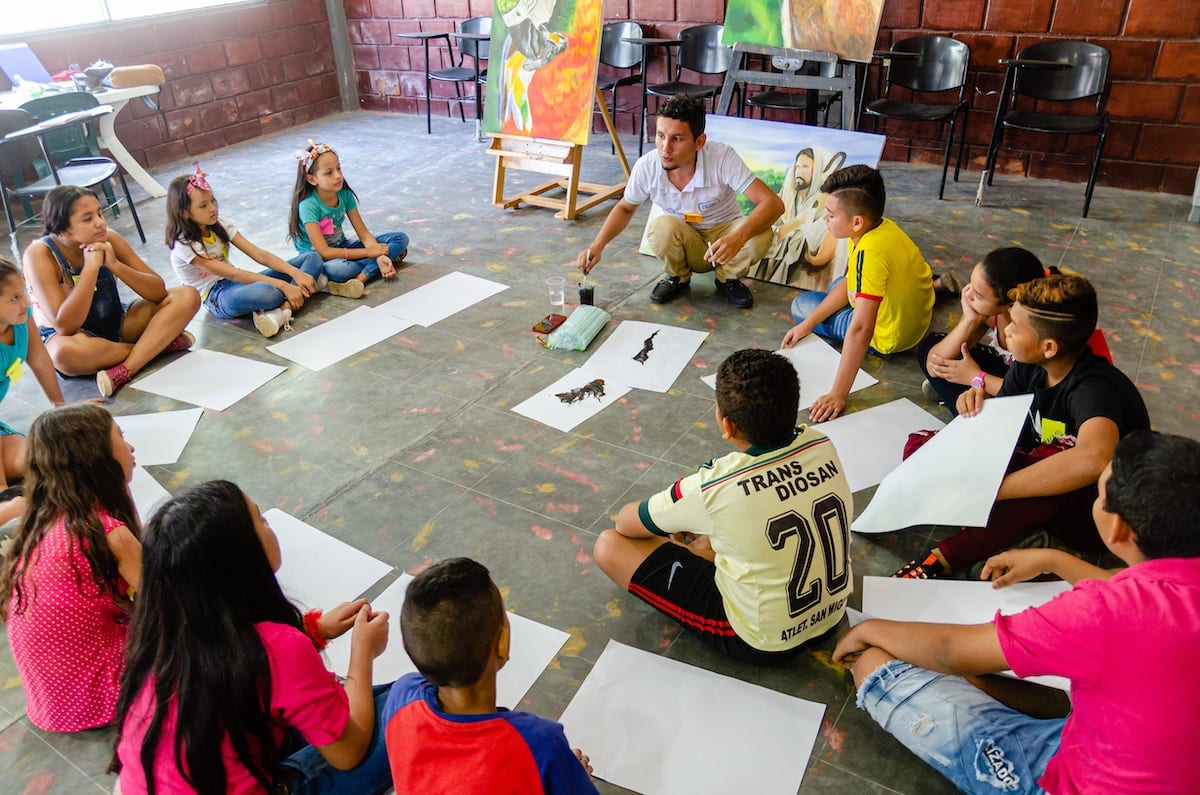
Gran Tierra in My Community
GTE regularly hosts a variety of community-based activities to strengthen ties with communities, leaders, and institutions in the areas where Gran Tierra operates. The events cover a wide variety of topics, including operational, educational and cultural.
Designed to strengthen bonds with local communities, leaders, and institutions in Putumayo, Cauca, Santander, and Cesar departments, GTE In My Community (GTE En Mi Comunidad) hosts recreational and educational activities with themes that reinforce shared values, healthy coexistence, and the value of living in community. In 2024, over 700 men, women and children participated came together to participate in this educational and family-friendly initiative.
These events are also part of Colombia’s national “Brujula” program which instills principles of personal, family, and social coexistence. Out of more than three hundred participating municipalities, the program in Rio Negro which is focused on victims of violence and has been supported by GTE, was recognized as one of the top 20 in Colombia by Colombian NGO Corporacion Juego y Ninez (Game and Childhood Corporation).
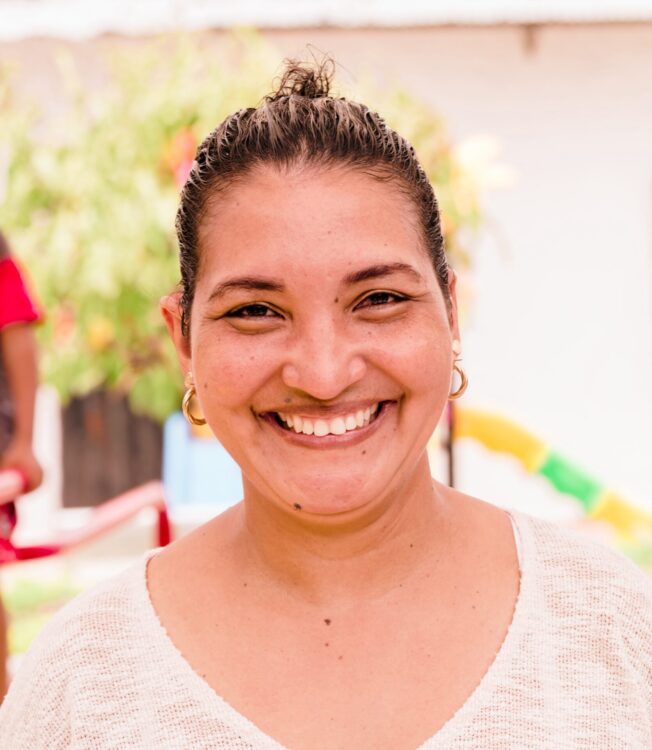
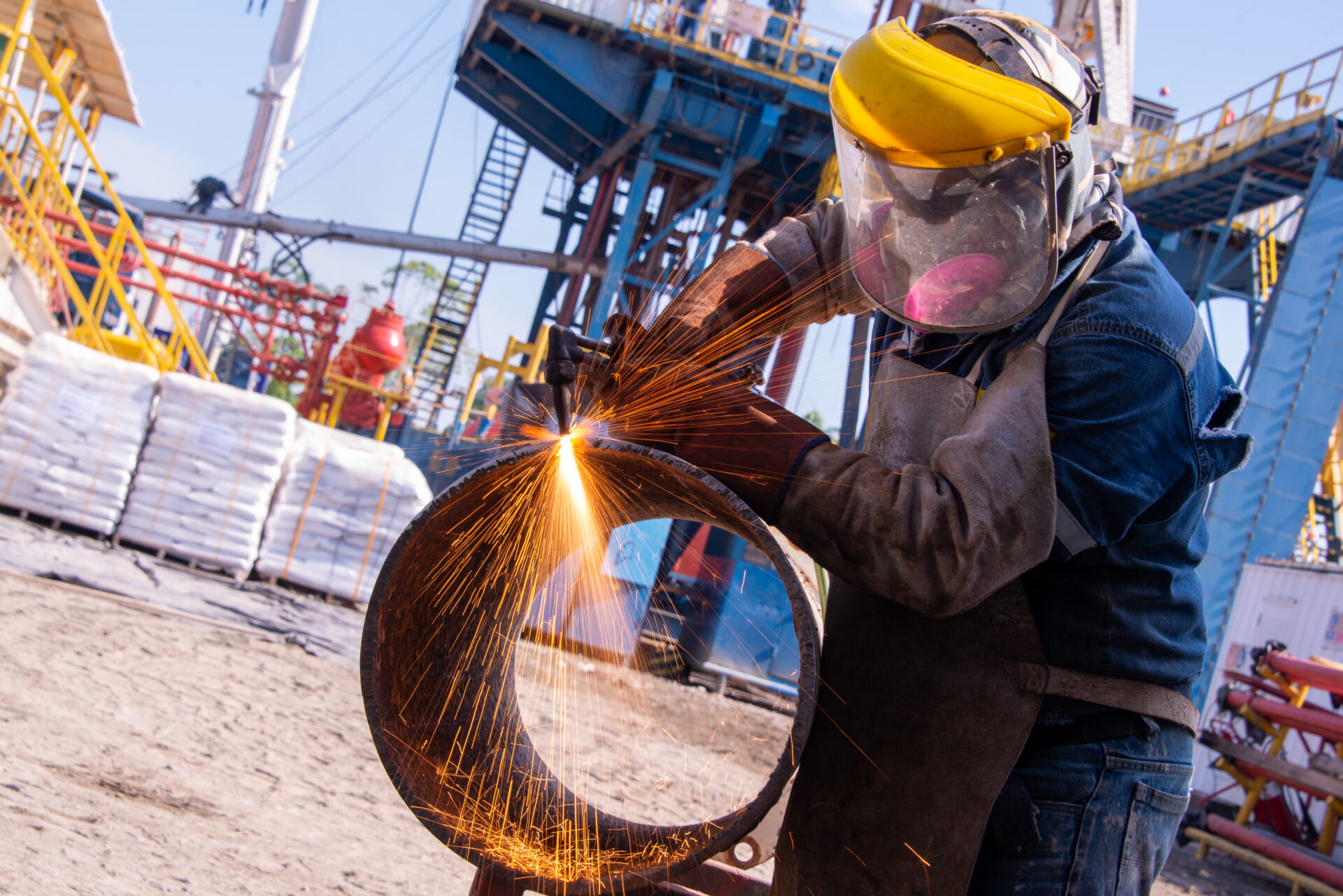
Encouraging and Enabling Local Suppliers
Gran Tierra is committed to ensure that economic benefits flow from our operations to local businesses and communities. GTE’s Fair Bidding Process and other procurement procedures are designed to maximize opportunities for local and regional communities.
GTE’s commitment to local businesses:
- Execute all contracting processes based on both national laws and international standards.
- Share the same information with all potential bidders, including strong tender documents and clear and fair rules about the proposal process.
- Inform each vendor about the results of the bidding process, and bidders can request additional information to help them understand what they need to do to improve their chances in the future.
To learn more about our partnerships with local suppliers and vendors click here.

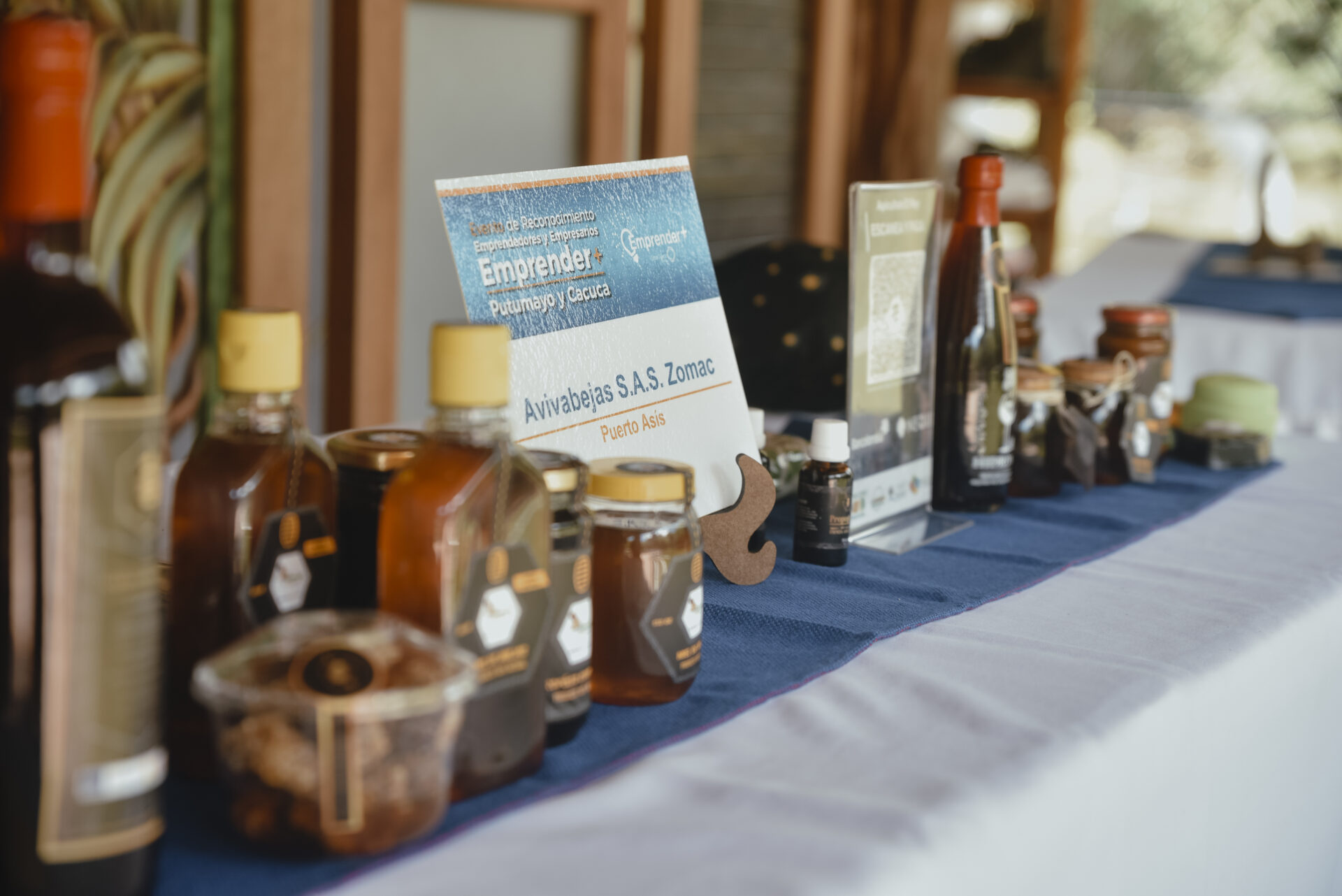
Gran Tierra’s Emprender+ Program
Emprender+, GTE’s signature entrepreneurship-based social investment project, is a critical component of GTE’s efforts to address local economic challenges. For the last several years, the program has created opportunities for people to strengthen their businesses and launch new companies while bolstering local economies in Colombia’s Middle Magdalena Valley and Putumayo regions.
Emprender+ provides technical training, business management guidance, and seed capital along with recognition for innovative business ideas and execution. The program, carried out in partnership with the World Corporation for Women in Colombia (CMMC), also helps entrepreneurs navigate the technical, administrative and management challenges of operating a small business. The popularity of the program has grown steadily and rapidly from 30 to over 350 participating entrepreneurs since its inception, and over 2,000 people registered to participate since the program started in 2021. Free online training sessions were created for the additional participants who were unable to join the full program.
In 2024, all program participants received seed capital for their businesses and 75% of Emprender+ participants are women.
For more information on Emprender+ visit the program’s website here.
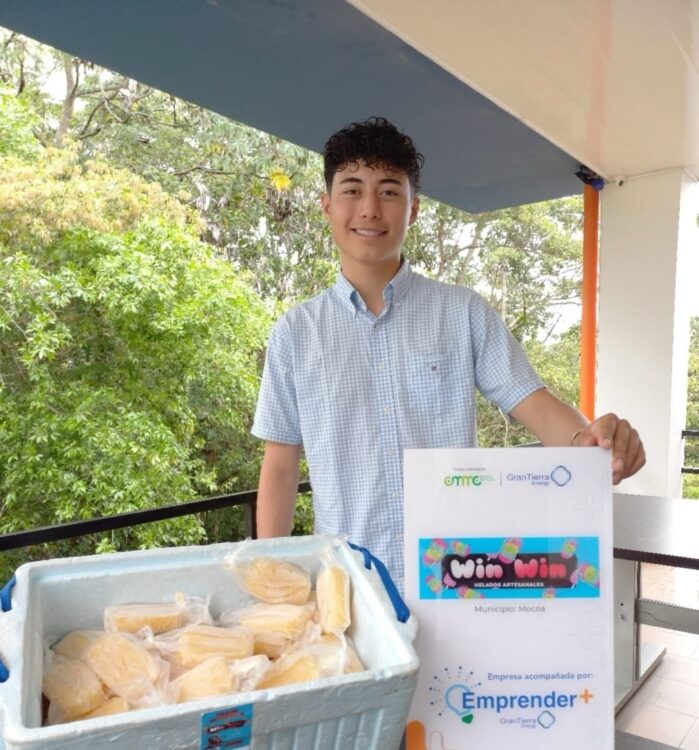
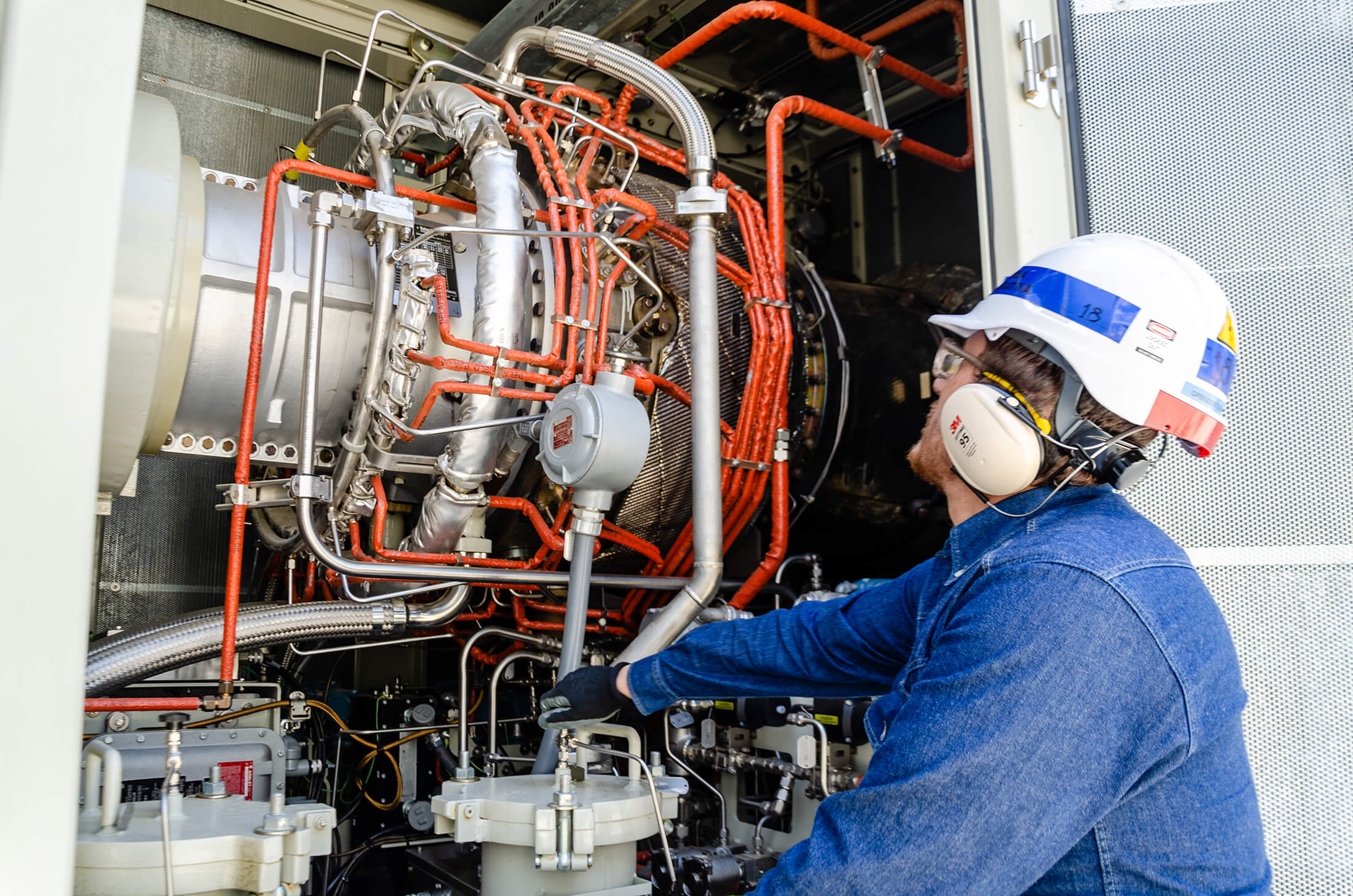
Gran Tierra’s Commitment to Governing our Business Ethically
Gran Tierra Energy is committed to conducting its business honestly, fairly and safely and has outlined these principles in a comprehensive, binding set of corporate policies. The Company carries out regular training to inform employees and contractors about all relevant policies and ensure compliance.
+0M
trees
+1.9M trees have been planted through all of GTE’s environmental projects
0
wells
30 exploratory and development wells were drilled in 2024 in Canada, Colombia and Ecuador
+0
participants
Over 600 employees and suppliers trained to identify, manage, and promote human rights within the communities where GTE operates in Colombia and Ecuador
SWIPE FOR MORE
